
Auction | Melbourne | 27 August 2025
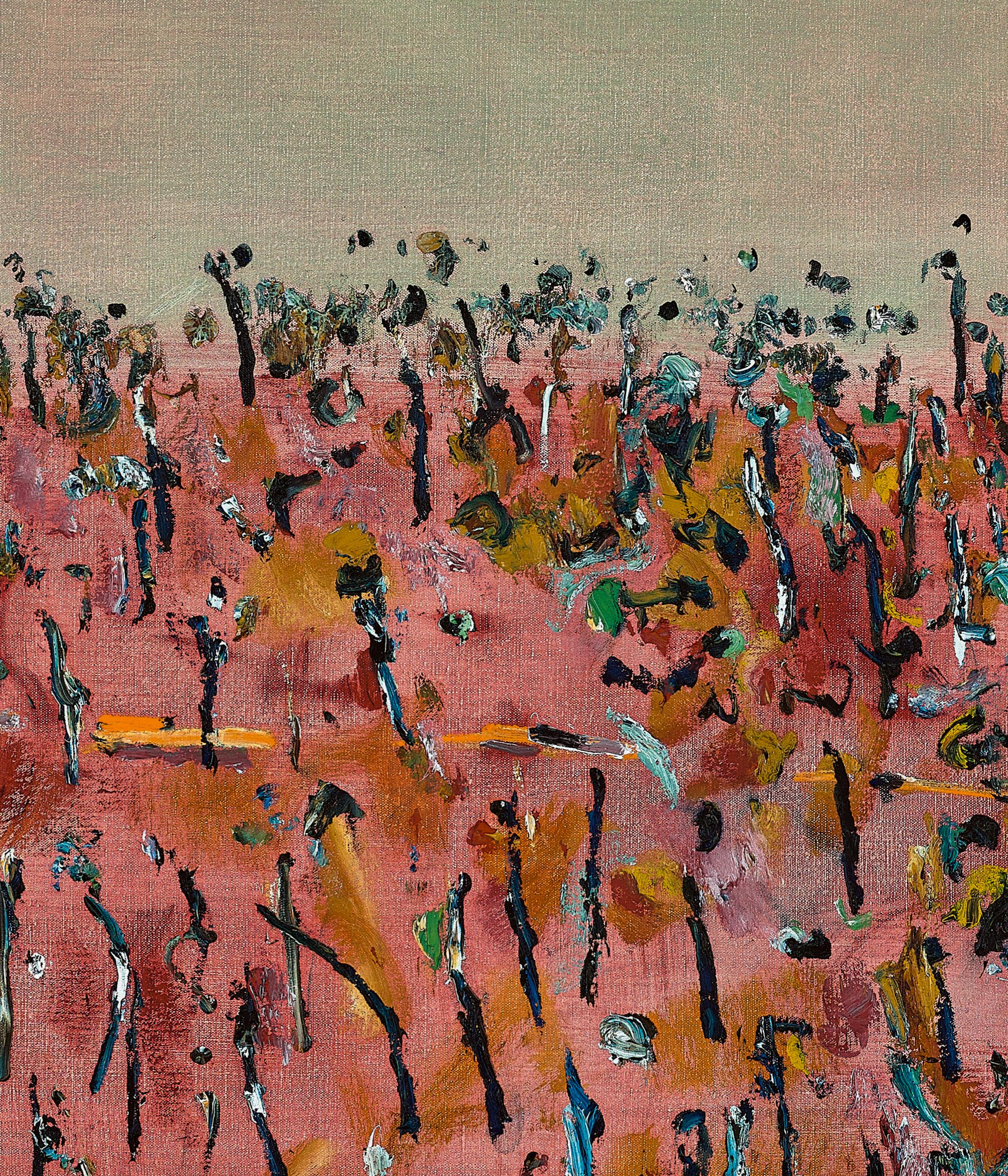
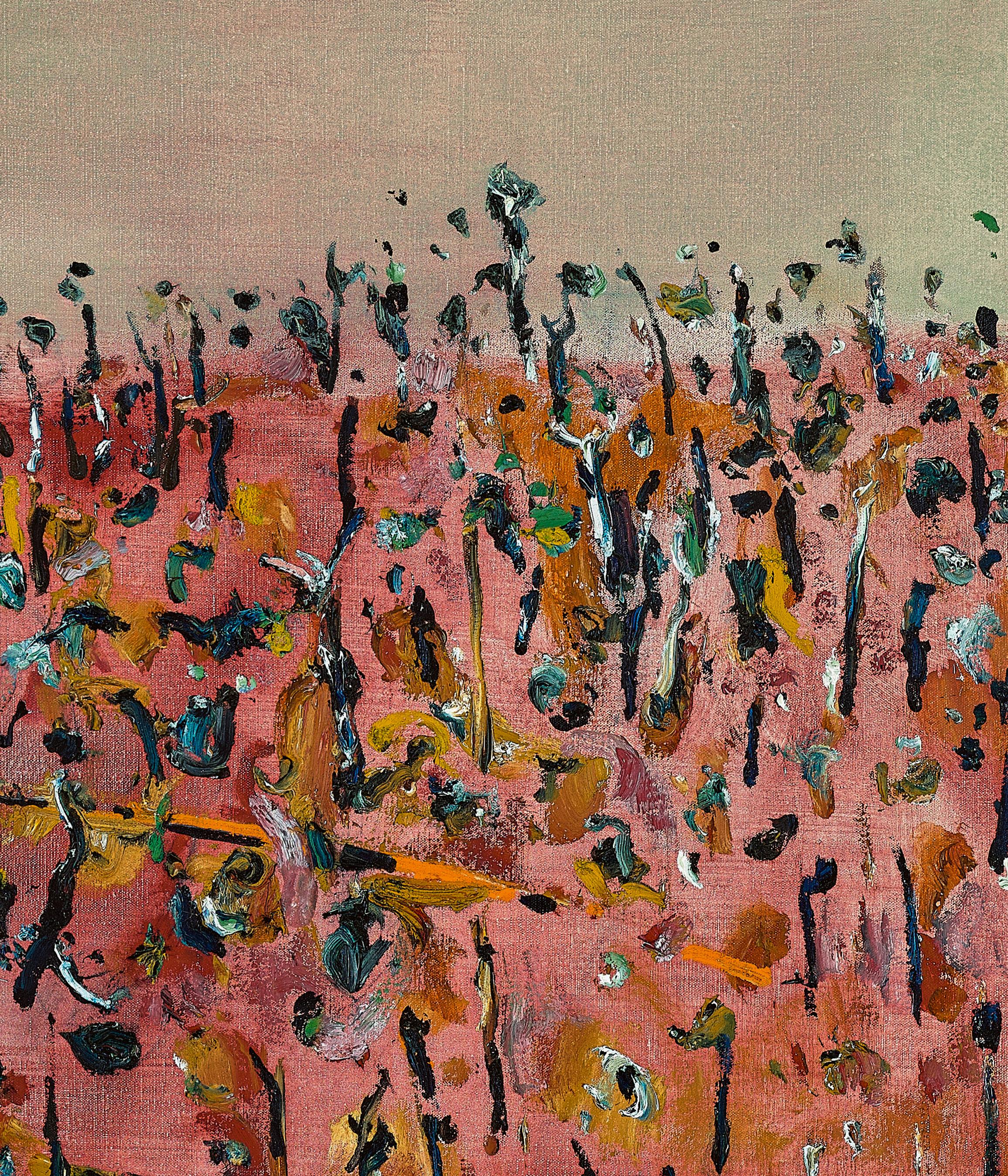
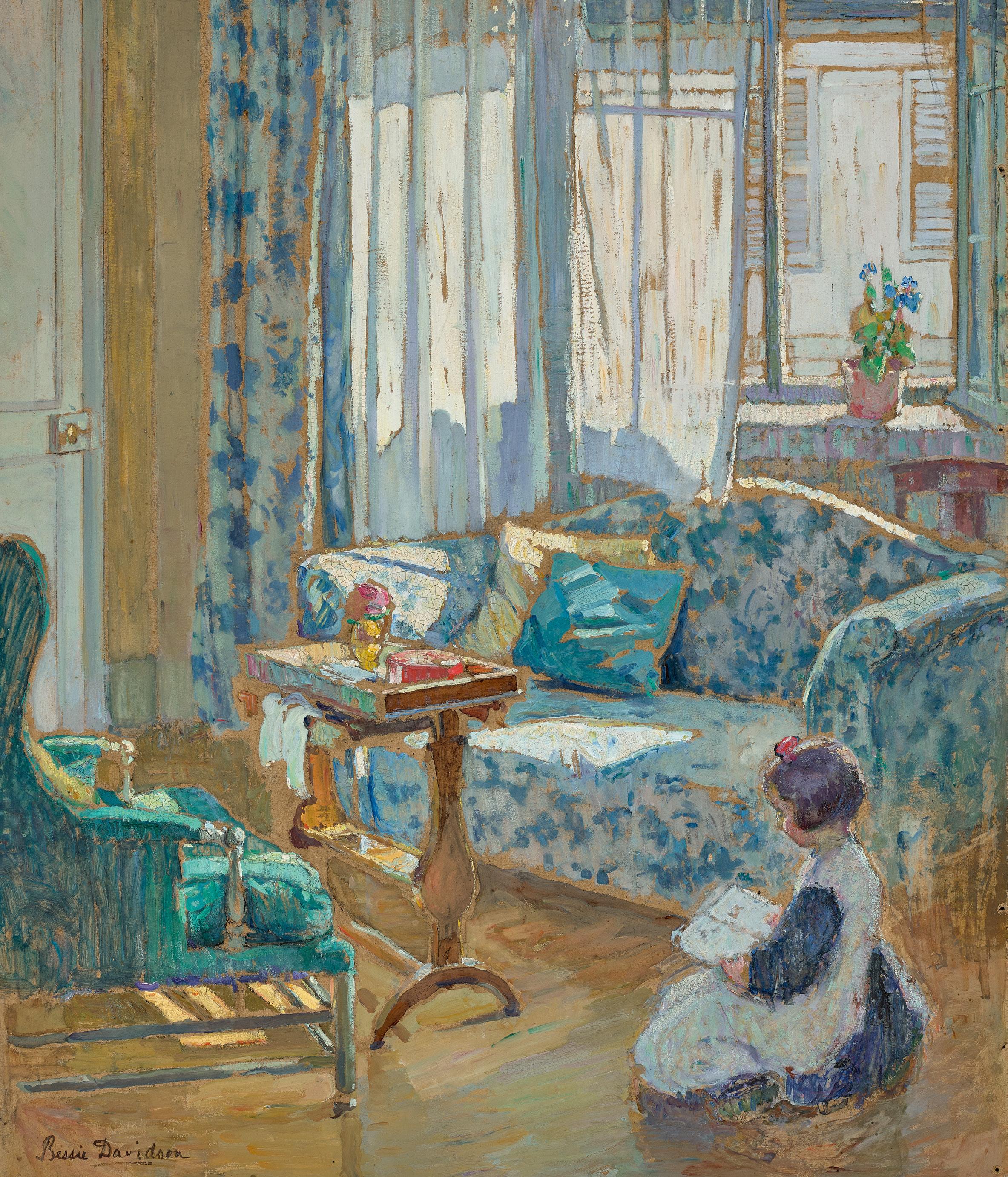


Auction | Melbourne | 27 August 2025



Lots 1 – 52
Auction | Melbourne | 27 August 2025

Lots 1 – 52
Wednesday 27 August 7:00 pm
105 Commercial Road South Yarra, VIC telephone: 03 9865 6333
Tuesday 12 – Sunday 17 August 11:00 am – 6:00 pm 36 Gosbell Street Paddington, NSW telephone: 02 9287 0600
Thursday 21 – Tuesday 26 August 11:00 am – 6:00 pm
105 Commercial Road South Yarra, VIC telephone: 03 9865 6333
email bids to: info@deutscherandhackett.com telephone: 03 9865 6333 fax: 03 9865 6344 telephone bid form – p. 168 absentee bid form – p. 169
www.deutscherandhackett.com/watch-live-auction
www.deutscherandhackett.com | info@deutscherandhackett.com

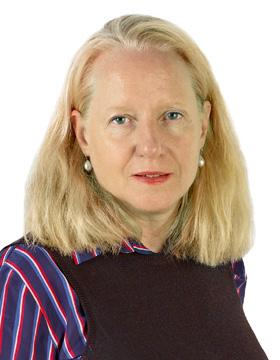



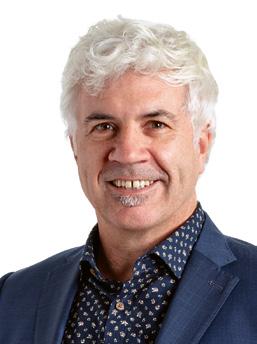
Chris Deutscher
Executive Director — Melbourne
Chris is a graduate of Melbourne University and has over 40 years art dealing, auction and valuation experience as Director of Deutscher Fine Art and subsequently as co-founder and Executive Director of Deutscher~Menzies. He has extensively advised private, corporate and museum art collections and been responsible for numerous Australian art publications and landmark exhibitions. He is also an approved valuer under the Cultural Gifts Program.
Fiona Hayward
Senior Art Specialist
After completing a Bachelor of Arts at Monash University, Fiona worked at Niagara Galleries in Melbourne, leaving to join the newly established Melbourne auction rooms of Christie’s in 1990, rising to become an Associate Director. In 2006, Fiona joined Sotheby’s International as a Senior Paintings Specialist and later Deputy Director. In 2009, Sotheby’s International left the Australian auction market and established a franchise agreement with Sotheby’s Australia, where Fiona remained until the end of 2019 as a Senior Specialist in Australian Art. At the end of the franchise agreement with Sotheby’s Australia, Smith & Singer was established where Fiona worked until the end of 2020.
Crispin Gutteridge
Head of Indigenous Art and Senior Art Specialist
Crispin holds a Bachelor of Arts (Visual Arts and History) from Monash University. In 1995, he began working for Sotheby’s Australia, where he became the representative for Aboriginal art in Melbourne. In 2006 Crispin joined Joel Fine Art as head of Aboriginal and Contemporary Art and later was appointed head of the Sydney office. He possesses extensive knowledge of Aboriginal art and has over 30 years’ experience in the Australian fine art auction market.
Alex Creswick
Managing Director / Head of Finance
With a Bachelor of Business Accounting at RMIT, Alex has almost 30 years’ experience within financial management roles. He has spent much of his early years within the corporate sector with companies such as IBM, Macquarie Bank and ANZ. With a strong passion for the arts Alex became the Financial Controller for Ross Mollison Group, a leading provider of marketing services to the performing arts, before joining D+H in 2011.
Jennifer Terace
Front of House Manager – Melbourne
Jennifer holds a Bachelor of Visual Arts from Edith Cowan University and has experience across event management, retail operations, and community arts program coordination. She has worked as a practicing artist, artist’s assistant, and gallery assistant, gaining valuable insight into both the creative and logistical aspects of the visual arts sector.
Danny Kneebone
Design and Photography Manager
With over 25 years in the art auction industry as both photographer and designer. Danny was Art Director at Christie’s from 2000–2007, Bonham’s and Sotheby’s 2007–2009 and then Sotheby’s Australia from 2009–2020. Specialist in design, photography, colour management and print production from fine art to fine jewellery. Danny has won over 50 national and international awards for his photography work.


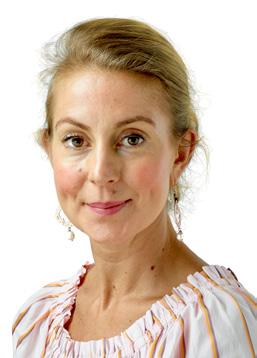
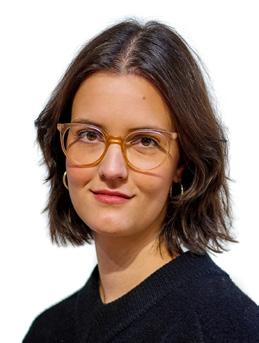
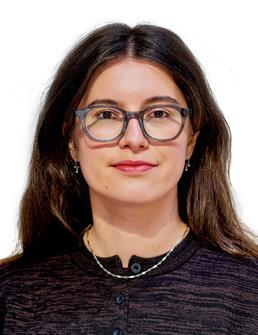
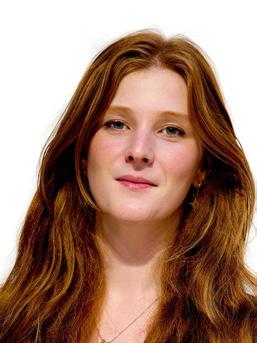
Damian Hackett
Executive Director — Sydney
Damian has over 30 years’ experience in public and commercial galleries and the fine art auction market. After completing a BA (Visual Arts) at the University of New England, he was Assistant Director of the Gold Coast City Art Gallery and in 1993 joined Rex Irwin Art Dealer, a leading commercial gallery in Sydney. In 2001, Damian moved into the fine art auction market as Head of Australian and International art for Phillips de Pury and Luxembourg, and from 2002 – 2006 was National Director of Deutscher~Menzies.
Henry Mulholland
Senior Art Specialist
Henry Mulholland is a graduate of the National Art School in Sydney, and has had a successful career as an exhibiting artist. Since 2000, Henry has also been a regular art critic on ABC Radio 702. He was artistic advisor to the Sydney Cricket Ground Trust Basil Sellers Sculpture Project, and since 2007 a regular feature of Sculpture by the Sea, leading tours for corporate stakeholders and conducting artist talks in Sydney, Tasmania and New Zealand. Prior to joining Deutscher and Hackett in 2013, Henry’s fine art consultancy provided a range of services, with a particular focus on collection management and acquiring artworks for clients on the secondary market.
Veronica Angelatos
Art Specialist and Senior Researcher
Veronica has a Master of Arts (Art Curatorship and Museum Management), together with a Bachelor of Arts/Law (Honours) and Diploma of Modern Languages from the University of Melbourne. She has strong curatorial and research expertise, having worked at various art museums including the Peggy Guggenheim Collection, Venice and National Gallery of Victoria, and more recently, in the commercial sphere as Senior Art Specialist at Deutscher~Menzies. She is also the author of numerous articles and publications on Australian and International Art.
Ella Perrottet
Senior Registrar
Ella has a Masters of Arts and Cultural Management (Collections and Curatorship) from Deakin University together with a Bachelor of Fine Art (Visual Art) from Monash University, and studied in both Melbourne and Italy. From 2014, Ella worked at Leonard Joel, Melbourne as an Art Assistant, researcher, writer and auctioneer, where she developed a particular interest in Australian women artists.
Eliza Burton
Registrar
Eliza has a Bachelor of Arts (English and Cultural Studies and History of Art) from the University of Western Australia and a Master of Art Curatorship from the University of Melbourne. She has experience in exhibition management, commercial sales, and arts writing through her work for Sculpture by the Sea and The Sheila Foundation.
Poppy Thomson Gallery Manager, Sydney
Poppy holds a Bachelor of Art History and Curatorship (Honours) from the Australian National University and has professional experience as a curator and research assistant. Prior to this role, she spent time in Paris after winning the 2023 Eloquence Art Prize, and now sits on the board of Culture Plus.

Chris Deutscher
Damian Hackett 0411 350 150 0422 811 034
Henry Mulholland
Fiona Hayward 0424 487 738 0417 957 590
Crispin Gutteridge
Veronica Angelatos 0411 883 052 0409 963 094
Administration and Accounts
Megan Mac Sweeney Poppy Thomson (Melbourne) (Sydney) 03 9865 6333 02 9287 0600
Absentee and Telephone Bids
Jennifer Terace 03 9865 6333
Shipping
Ella Perrottet 03 9865 6333


Roger McIlroy Head Auctioneer
Roger was the Chairman, Managing Director and auctioneer for Christie’s Australia and Asia from 1989 to 2006, having joined the firm in London in 1977. He presided over many significant auctions, including Alan Bond’s Dallhold Collection (1992) and The Harold E. Mertz Collection of Australian Art (2000). Since 2006, Roger has built a highly distinguished art consultancy in Australian and International works of art. Roger will continue to independently operate his privately-owned art dealing and consultancy business alongside his role at Deutscher and Hackett.
Scott Livesey Auctioneer
Scott Livesey began his career in fine art with Leonard Joel Auctions from 1988 to 1994 before moving to Sotheby’s Australia in 1994, as auctioneer and specialist in Australian Art. Scott founded his eponymous gallery in 2000, which represents both emerging and established contemporary Australian artists, and includes a regular exhibition program of indigenous Art. Along with running his contemporary art gallery, Scott has been an auctioneer for Deutscher and Hackett since 2010.


Lots 1 – 52 page 12
Prospective buyers and sellers guide page 164
Conditions of auction and sale page 166
Telephone bid form page 168
Absentee bid form page 169
Attendee pre-registration form page 170
Index page 183
Lots 1 – 2
Bessie Davidson’s 1928 solo exhibition at Galerie Ecalle in Paris prompted the art critic Pierre Müller to ask, ‘Does art have a nationality?’ 1 Aware of Davidson’s antipodean origins, as well as the fact that Paris (and France more broadly) was home to a significant number of expatriate women artists from all over the world, he concluded, ‘I do not think so. Bessie Davidson, like Mary Cassat, like Beatrice How, is as much one of us as of elsewhere, she is from any land where there is a taste for beauty, grace and refinement.’ 2
Part of a group of trailblazing Australian women artists who travelled to Europe during the first decades of the twentieth century, Davidson went to Paris primarily seeking to expand her artistic education. The City of Light offered a pluralist and progressive approach to art with private academies that provided tuition to women, as well as opportunities for them to exhibit alongside their male counterparts. In the words of Australian writer Edith Fry, Paris was ‘the only truly cosmopolitan city of the world for artists, whose work stands a better chance there than in any other art centre of being judged on its merits.’ 3 Being away from home also had the added advantage of freeing these artists from family expectations and gendered social conventions of marriage and motherhood. While many of these women returned home after their study and travels, sharing what they had learned of international modernism both informally and in organised classes, Davidson and a small number of others – including Agnes Goodsir, Anne Dangar and Stella Bowen – remained, establishing successful careers and living overseas for the rest of their lives, part of a transnational group of artists whose experiences and work radically extend traditional narratives and definitions of Australian art.4
Davidson was born in Adelaide in 1879, the second of five children and the eldest daughter. It is likely that she undertook private lessons or studied at the Adelaide School of Design like many of her South Australian peers, however her first documented experience of formal art education was in 1899 when she attended classes with Rose McPherson. Later and better known as Margaret Preston, McPherson had recently returned to Adelaide after studying at the National Gallery School in Melbourne and during the years that she was Davidson’s
teacher, the two women established a strong friendship. In 1904 they sailed together to Europe, initially studying in Munich as a concession to Davidson’s father who requested that they did not go to Paris ‘because Frenchmen are so immoral.’ 5 The modern art they saw there shocked and disturbed them however, prompting McPherson to declare with characteristic directness that ‘half German art is mad and vicious and a good deal of it is dull’ 6, and by the end of the year they had left for Paris. It is possible that they attended classes run by fellow Australian artist Rupert Bunny, and in 1906 Davidson (and possibly also McPherson) enrolled at the Académie de la Grande Chaumière in the heart of Montparnasse.7 Both artists achieved some success with paintings being accepted for display in the Salon des Artistes Françaises and as they sailed home to Australia at the end of 1906, they were already dreaming of their return.
With an allowance that supported income from painting sales, Davidson returned to Paris in 1910. She reconnected with friends including the artist René-Xavier Prinet, who had taught her at la Grande Chaumière – probably also taking classes with him – and in 1912 moved to Montparnasse, where there was a large community of expatriate artists, into a studio apartment on Rue Boissonade. Located on the second floor of a late nineteenthcentury building, the apartment had high ceilings and large windows that looked out over a central courtyard. Recorded in contemporary photographs and many of Davidson’s own paintings, the interior incorporated a ‘round mahogany Empire dining table and… distinctive curved-back chairs, the small octagonal sewing table, the little bergère chair with its loose cover of sprigged cretonne and the Louis XV fauteuil (armchair) upholstered in petit-point. There are Persian rugs on the polished floorboards and heavy purplish curtains… the whole studio heated by a pot-bellied stove in the middle of the room.’ 8
Apart from visits to Australia in 1914 and again in 1950, Davidson remained in France, a resident of Rue Boissonade, for the rest of her life. As well as speaking fluent French, she developed a wide network of friends, was well-connected within the artistic community and established a successful career, exhibiting regularly at the Salons and gaining much critical attention for


her work. In 1920, she was elected as an associate member of the Société Nationale des Beaux-Arts, only the fourth Australian to receive this acknowledgement – following George Lambert, Rupert Bunny and George Coates – and the first Australian woman ever to do so. Two years later, she was the first Australian artist to receive full membership. Davidson was a founding member of the Salon des Tuileries (1923) and the Société des Femmes Artistes Modernes (1930), serving as vice-president for its first decade of operation. Arguably the greatest accolade, however, came in 1931 when Davidson was made a Chevalier de la Légion d’Honneur for services to the arts, the only Australian woman to have received this honour at the time. 9
Primarily painted in tempera and oil, Davidson’s oeuvre includes the images of women and children in domestic settings for which she is best known, including Jeune fille au mirroir (Young girl with mirror), 1914 (National Gallery of Victoria) and An interior, c.1920 (Art Gallery of South Australia), as well as portraits and still lifes. From the mid-1920s she also increasingly painted the landscape, often recording quick gouache impressions of views seen during her extensive travels through country France and further afield. The Art Gallery of South Australia acquired a portrait of her friend, the artist-potter Gladys Reynell, in
An interior, c.1920 oil and charcoal on board
73.1 x 59.7 cm
Art Gallery of South Australia, Adelaide
1908, but Davidson’s absence from the local art scene meant that it is only in relatively recent times that her art has been collected by most Australian State galleries.10 Reflecting the sentiment that ‘Bessie Davidson [was] the most Parisian of them all’ 11, her work was acquired by the French State during her lifetime however and is represented in several French collections including the Centre Georges Pompidou, Paris.
1. Pierre Müller, cited in Little, P., A Studio in Montparnasse: Bessie Davidson: An Australian Artist in Paris, Craftsman House, Melbourne, 2003, p. 100
2. ibid.
3. Edith Fry, cited in Speck, C., ‘Paris Calls’ in Bessie Davidson: An Australian Impressionist in Paris, exhibition catalogue, Bendigo Art Gallery, Bendigo, 2020, p. 17
4. See Rex Butler and A.D. S. Donaldson, ‘French, Floral and Female: A History of UnAustralian Art 1900 – 1930 (part 1), Emaj, issue 5, 2010, at: https://www.index-journal. org/media/pages/emaj/issue-5/french-floral-and-female-by-rex-butler-and-adsdonaldson/010624421e-1727496756/butler-and-donaldson-french-floral-female.pdf (accessed July 2025) and Freak, E., Lock, T., and Tunnicliffe, W., ‘Dangerously Modern’ in Dangerously Modern: Australian Women Artists in Europe 1890 – 1940, Art Gallery of New South Wales and Art Gallery of South Australia, Sydney and Adelaide, 2025, pp. 13 – 19
5. Little, op. cit., p. 25
6. ibid., p. 29
7. See Taylor, E., ‘Modern Women: Margaret Preston and Bessie Davidson’ in Australian Impressionists in France, National Gallery of Victoria, Melbourne, 2013, pp. 97 – 101
8. Little, op. cit., p. 56
9. All biographical information is drawn from Little, op. cit.
10. For example, the Queensland Art Gallery I Gallery of Modern Art first acquired Davidson’s work in 1977; the National Gallery of Victoria’s first acquisitions were in 2020; and the Art Gallery of New South Wales’ first acquisition occurred in 2023.
11. Edouard Sarradin, cited in Little, op. cit., p. 108
Kirsty Grant
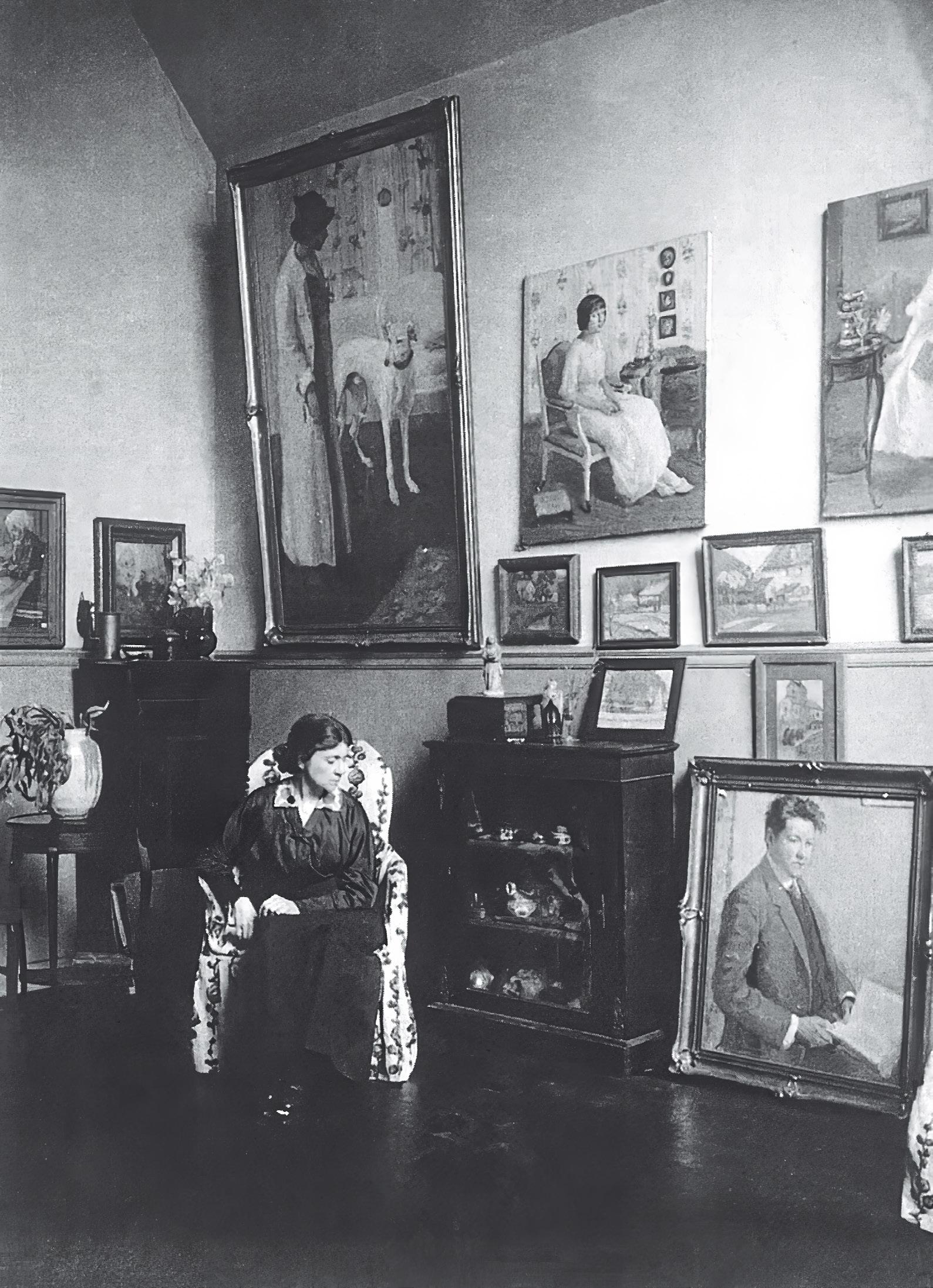
tempera on compressed card
73.0 x 60.5 cm
signed lower left: Bessie Davidson
Estimate: $150,000 – 200,000
Provenance
Salon des Tuileries, Palais de Bois, Porte Maillot, Paris, 1924 Mr & Mrs James P. Cordill, New Orleans, USA, acquired in Paris c.1924 Miss Shirley Cordill, New Orleans, USA, a gift from the above Thence by descent Private collection, New Orleans, USA
Exhibited
Possibly: Salon des Tuileries, Palais de Bois, Porte Maillot, Paris, 1924, cat. 411-bis (as ‘Intérieur’)
Related work
An interior, c.1920, oil, charcoal on composition board, 73.1 x 59.7 cm, Art Gallery of South Australia, Adelaide
‘The artist is there, you can feel her presence, yet she doesn’t throw herself at you nor leap upon you proclaiming her genius. There is nothing overwhelming in the welcome extended by these interiors, these landscapes. They make no effort to catch your eye or provoke astonishment. These are well-mannered paintings. But the more carefully you look at them, contemplate them, the more they will give up the secret of their discreet charm’.1
This is how Pierre Müller, art critic for Le Courier, characterised the paintings in Bessie Davidson’s first solo exhibition at Galerie Ecalle, Paris, which opened on New Years Eve in 1928. In addition to receiving a positive critical response, the exhibition marked a significant milestone in her career. Almost twenty years after the South Australian-born artist had returned to Paris, settling there permanently, this presentation of sixty works proclaimed her creative self-confidence and boldly staked a place among the ranks of contemporary artists working in France at the time.
Interior with girl reading, c.1924 is typical of the interiors for which Davidson is best known – painterly celebrations of relaxed feminine domestic spaces that often include a portrait of a female friend or child. The shuttered building visible through the open window locates the scene in Paris, most likely the artist’s second-floor studio apartment on the Rue Boissonade in Montparnasse which had ‘a vast high window composed of tall and slender panes overlooking the courtyard.’ 2 The furniture and style of decoration also is consistent with contemporary photographs and other paintings of Davidson’s residence. The distinctive green armchair on the left appears to be the same chair that features in the Art Gallery
of South Australia’s painting, An interior, c.1920 and indeed, the child in both works might also be the same subject. As much as this painting delights in the depiction of the patterns, shapes and textures of the elegantly homely furniture and furnishings, it is also a skilful exercise in the pictorial representation of light and shade. Davidson had been praised for the ability to ‘bathe her airy interiors with a luminous transparency’3 and this painting is no exception, capturing the bright shaft of sunlight shining through the windows in a diagonal sequence of brilliant highlights that enliven the scene.
This work is painted in tempera, a medium which the New York Herald reported, ‘Miss Davidson prefers to apply… to cardboard… You can be more spontaneous than with [oils], more solid than with [watercolour]’4, noting that ‘[she] accommodates it with an ease so felicitous that it seems not so much a tool as a toy.’ 5 Revealing something of Davidson’s process, traces of preliminary underdrawing are visible throughout the image, as are sections of the cardboard support that remain unpainted (seen here most clearly in the shutters on the building opposite). A technique that was also used by artists including Édouard Vuillard and Pierre Bonnard, incorporating the exposed board into the final composition of works in both tempera and in oil gives Davidson’s paintings an energy that speaks to the passion with which they were made.
1. Pierre Müller, cited in Little, P., A Studio in Montparnasse: Bessie Davidson: An Australian Artist in Paris, Craftsman House, Melbourne, 2003, pp. 99 – 100
2. ibid., p. 55
3. ibid, p. 90
4. See Little, ibid., p. 89
5. ibid.
Kirsty Grant
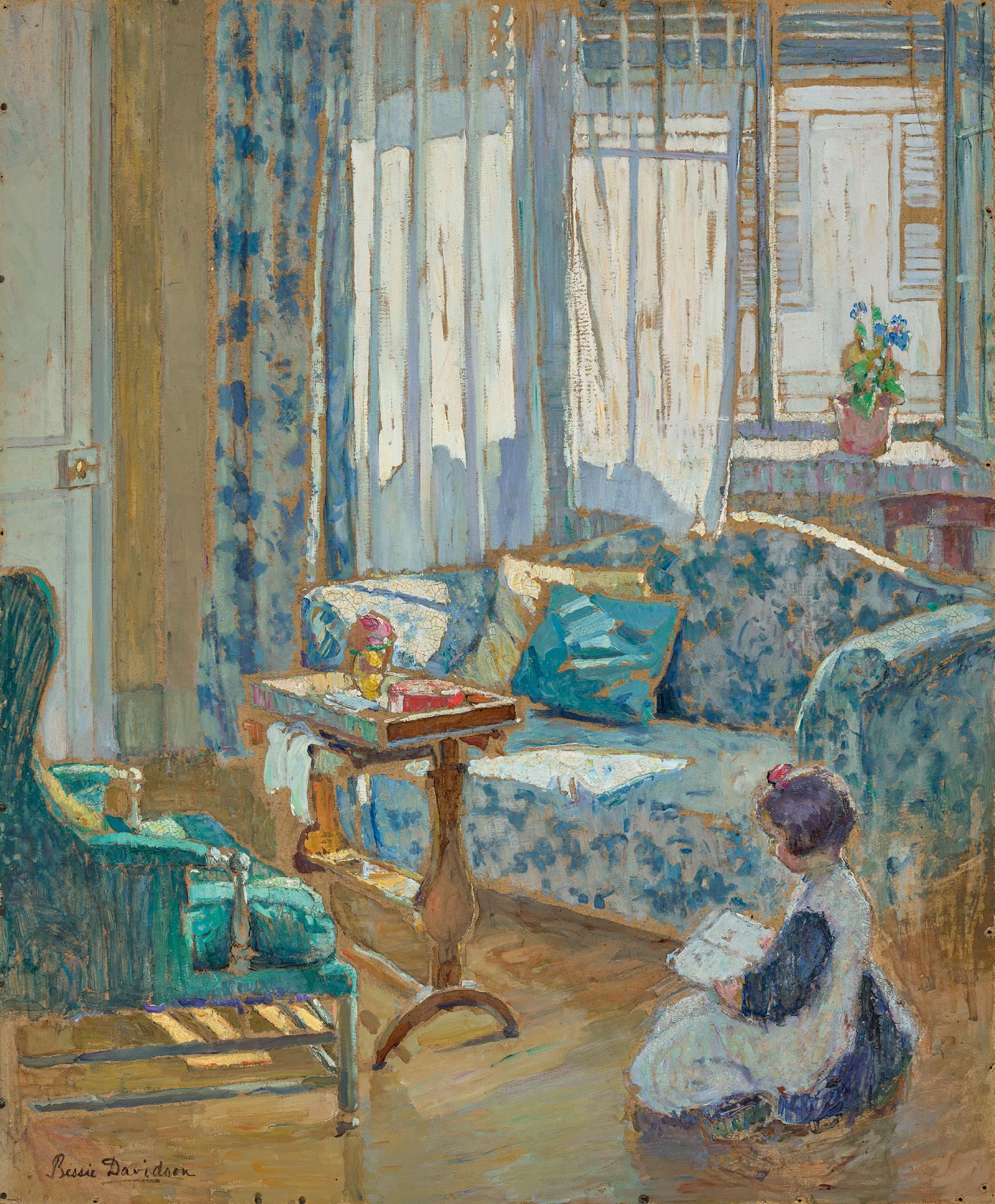
Intérieur, c.1924
oil on board
60.5 x 73.0 cm
signed lower right: Bessie Davidson
Estimate: $250,000 – 350,000
Provenance
Salon des Tuileries, Palais de Bois, Porte Maillot, Paris, 1924 Mr & Mrs James P. Cordill, New Orleans, USA, acquired from the above in 1924 Miss Shirley Cordill, New Orleans, USA, a gift from the above Thence by descent
Private collection, New Orleans, USA
Exhibited
Salon des Tuileries, Palais de Bois, Porte Maillot, Paris, 1924, cat. 409 or 410 (label attached verso)
Intimate portraits of her female friends and their children in domestic interiors make up a significant and arguably the best-known part of Bessie Davidson’s oeuvre. They reflect the influence of Édouard Vuillard (1868 – 1940) and the American, Richard Miller (1875 – 1943), who taught her at Académie de la Grande Chaumière, and perhaps even the art of fellow Australian artist Rupert Bunny (1864 – 1947). Also, and more importantly however, they reflect the fabric and rich detail of her own life and experience as an expatriate in Paris from 1910 until her death in 1965. The settings of these paintings were always familiar to the artist, her own studio apartment in Montparnasse often featured in her work, as did the country homes of friends in rural France with whom she would holiday. As Davidson’s biographer, Penelope Little, has written, ‘The interiors… reveal an ambience of bourgeois refinement, not grand but testifying to lives full of interest and occupation. Furniture is elegant but comfortable, shelves are filled with books and ornaments and walls hung generously with paintings. The many different interiors… reveal something of the lives and personalities of their owners… Bessie’s work celebrated the quiet joys of friendship and domestic activity. Her paintings… are filled not only with her women friends but also with their children, their dogs and cats, their sewing, musical instruments, books and paint-boxes.’ 1
Painted around 1924, here Davidson depicts a woman focussed on an unidentified task – sewing or perhaps reading – who is seated in the corner of a room. French doors in front of her open onto a balcony and a view to buildings opposite and tree-tops
beyond, suggesting it is probably Davidson’s own apartment on Rue Boissonade. It is an informal scene, the figure is simply dressed, a shawl draped casually on the table beside her, and the sparsely filled plate of fruit indicates we are being presented with a glimpse of the everyday rather than a carefully staged view. Using lively brushstrokes Davidson takes pleasure describing the details of the interior, from the striped clothing of the figure to the criss-crossed geometry of the cane chair and the patterned wallpaper. She also grapples with the pictorial challenges of portraying the play of light and shade, skilfully depicting the effects of sunlight shining through the delicate curtains and reflections in the highly polished surface of the table which are recorded in a luscious and painterly application of her medium.
Davidson was active and well-connected within the Parisian artworld and in 1923, alongside Lucien Simon, René-Xavier Prinet and other friends, she was a founding member of the Salon des Tuileries. Formed as an alternative to the existing Salons in an effort to raise the overall quality of exhibited works, entry was by invitation only. Davidson exhibited in the inaugural Salon which, as the name indicates, was held in temporary pavilions next to the Jardin des Tuileries, and she continued to participate in following years.2 This painting was purchased from the 1924 Salon des Tuileries, one of three interiors Davidson showed that year, and has remained in the possession of the same American family ever since.
1. Little, P., A Studio in Montparnasse: Bessie Davidson: An Australian Artist in Paris, Craftsman House, Melbourne, 2003, pp. 64 – 65
2. See ibid., p. 94
Kirsty Grant

reader (the school cape), c.1916
oil on canvas on pulpboard
32.0 x 24.0 cm
signed lower left: G SMITH. COSSINGTON
Estimate: $400,000 – 600,000
Provenance
Professor Bernard Smith, Sydney, acquired directly from the artist, c.1960
Sotheby’s, Melbourne, 17 April 1989, lot 454 (as ‘The School Cape’) Private collection, Melbourne
Exhibited
Grace Cossington Smith Retrospective, Art Gallery of New South Wales, Sydney, 15 June – 15 July 1973, then touring to: Queensland Art Gallery, Brisbane, 6 September – 4 October 1973, Western Australian Art Gallery, Perth, 6 December 1973 – 2 January 1974, Art Gallery of South Australia, Adelaide, 11 January – 10 February 1974, National Gallery of Victoria, Melbourne, 26 March – 28 April 1974, cat. 3 (label attached verso)
A century of Australian Women Artists 1840s – 1940s, Deutscher Fine Art, Melbourne, 4 June – 3 July 1993, cat. 90 (illus. in exhibition catalogue, p. 22)
Literature
Thomas, D., Grace Cossington Smith, Art Gallery of New South Wales, Sydney, 1973, pl. 3, pp. 9, 15 (illus., as ‘The School Cape’) James, B., Grace Cossington Smith, Craftsman House, Sydney, 1990, pl. 6, pp. 37 (illus.)
Related work
The reader, 1916, oil on canvas, 51.2 x 40.6 cm, Art Gallery of New South Wales, Sydney
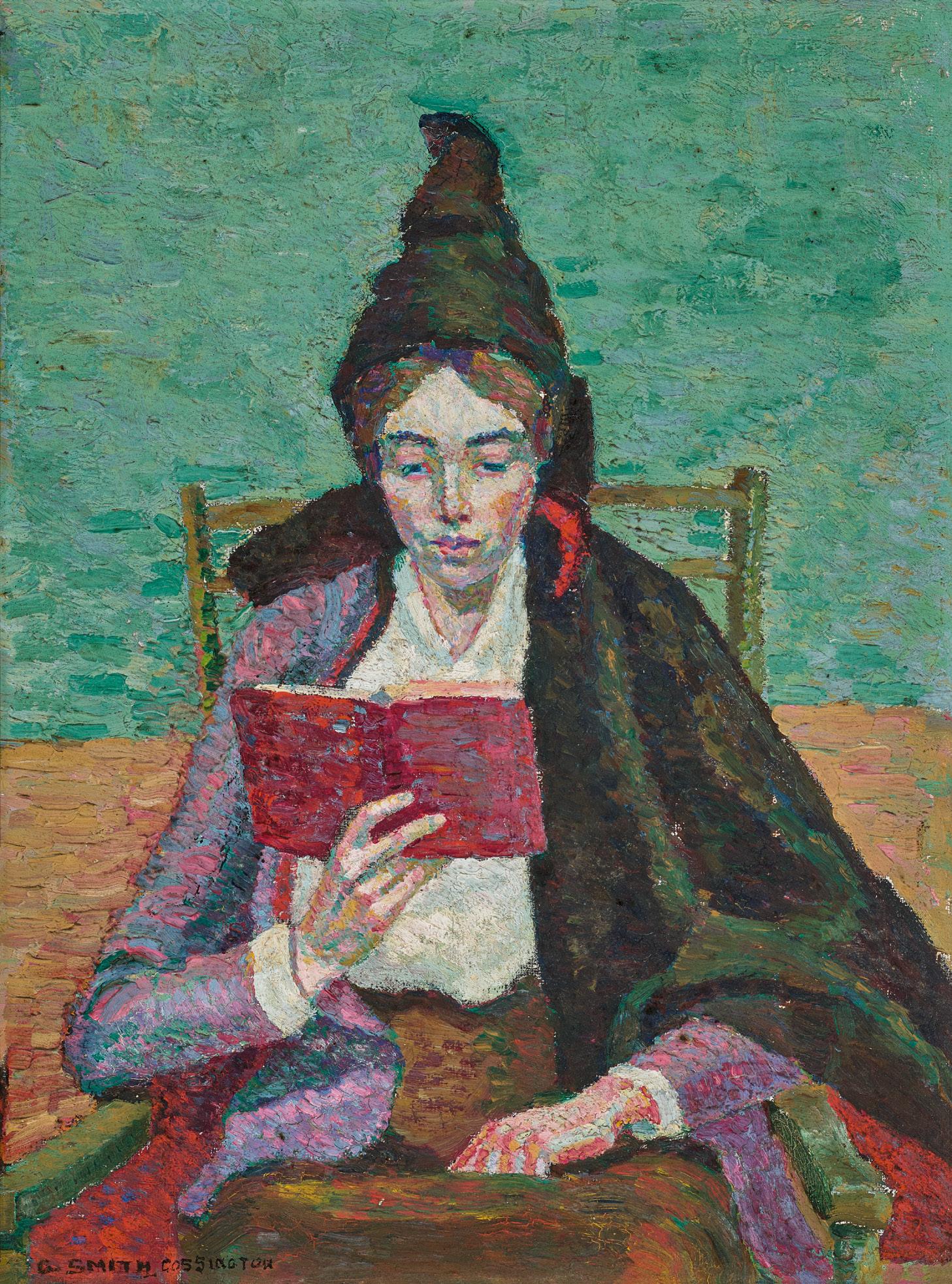

51.2 x 40.6 cm
Grace Cossington Smith’s The reader (the school cape), c.1916 is a jewel of a painting which dates from the dawn of modernism in Australia. It is also one of the very few from that time still in private hands. Although it was not until 1940 that a work by the artist entered a state gallery collection1, there is no institution now that does not proudly own at least one example. Such is her importance that the National Gallery of Australia currently lists 1,721 paintings, drawings, watercolours and sketchbooks by Cossington Smith in their collection – a remarkable number that underscores this opinion (by comparison, there are only 469 by Sidney Nolan). Also remarkable is that she had only been painting for one year when she created The sock knitter, 1915, recognised as this country’s first truly modernist piece of art. The reader (the school cape) was painted the following year and displays an even richer celebration of colour – that one true passion lying at the heart of her extensive oeuvre spanning sixty-one years.
Cossington Smith was part of a closely entwined family, and her early portraits were of her parents and siblings. Younger sister Madge was the model for The sock knitter and also for The reader (the school cape), in which she wears ‘a hooded cape which had
been part of Grace’s school uniform at Abbotsleigh, Wahroonga’ 2 –a progressive girls’ school where she received basic training from the artists Albert Collins (who would soon become a director at renowned advertising firm Smith and Julius), and Alfred Coffey (a winner of numerous awards over previous decades when exhibiting with the Royal Art Society of New South Wales). On leaving Abbotsleigh, the headmistress Marion Clarke gave Cossington Smith a farewell gift of art books, and the next year she enrolled in drawing classes run by the flamboyant Neapolitan, Antonio Datilo-Rubbo, at his Sydney atelier in Pitt Street. In 1912, she travelled to Europe with her elder sister Mabel where, in England, she attended drawing classes at the Winchester School of Art before travelling to Stettin, Germany (now Szczecin, Poland) staying with relatives of their mother. Here, Cossington Smith attended ‘a dozen outdoor sketching classes’3 at the town of Speck, even though it was over 100 kilometres from Stettin; the reasons for this choice are unknown. The sisters returned to Sydney in 1914 and Cossington Smith re-enrolled in painting classes with her former teacher, now based in Rowe Street. Unbeknownst to her, Rubbo had experienced a revelation in her absence. A former

student Norah Simpson had returned to his classes the previous year following study in London under the noted British postimpressionists Harold Gilman and Spencer Gore. Significantly, she brought with her a collection of colour reproductions featuring a range of artists’ paintings, including those by Cézanne, Gauguin and van Gogh. By the time Simpson left Sydney again in May 1915, Rubbo was fired with enthusiasm for these new ways of seeing.
Also inspired was Cossington Smith and her fellow students Roy de Maistre, Roland Wakelin and Constance Tempe Manning. They were, however, now considered ‘wild animals’ ( fauves) as far as the arbiters of local art were concerned and numerous of their more ambitious entries were rejected from RAS exhibitions (the fiery Rubbo even threatened to duel one RAS judge over an excluded submission by Wakelin). The four students began exploring emotive, high-pitched colour, using divided paint marks within a flattened plane. Although The sock knitter is relatively subdued in this regard, the model’s face and hands are coloured with blues, pinks, greens and caramel, and even the large passages of violet in her cardigan are not ‘flat crude colour, (instead, there is) colour within colour, it has to shine; light must be in it, it is no good making
The sock knitter, 1915 oil on canvas
61.8 x 51.2 cm
Art Gallery of New South Wales, Sydney
heavy, dead colour.’4 A similar work, also titled The reader, 1916 (Art Gallery of New South Wales) features younger sister Charlotte (also known as Diddy) sitting in a chair in Grace’s bedroom, and here, the ‘shining’ light and colour is even more evocative.
The reader (the school cape), by comparison, almost explodes with pigment intensity. Set within two distinct planes, one in shades of aquamarine, the other of orange-brown, Madge reads a book (itself executed in horizontal brushstrokes of red, blue and violet) whilst wearing the same cardigan as in The sock knitter, only this time the colouration contains pinks, blues and ultramarine. Her hands and face pulsate with at least five distinctly different colours, but are offset in places against an olivegreen ground, which indicates the artist’s knowledge of similar techniques used by Renaissance painters when depicting flesh. The composition too is startling despite the relative simplicity of the pose, as the ruched hood of the Abbotsleigh cape creates a dynamic and unusual apex, the visual ‘weight’ of which is countered by a flash of red near the sitter’s neck. Though small, The reader (the school cape) rewards any repeat viewing.
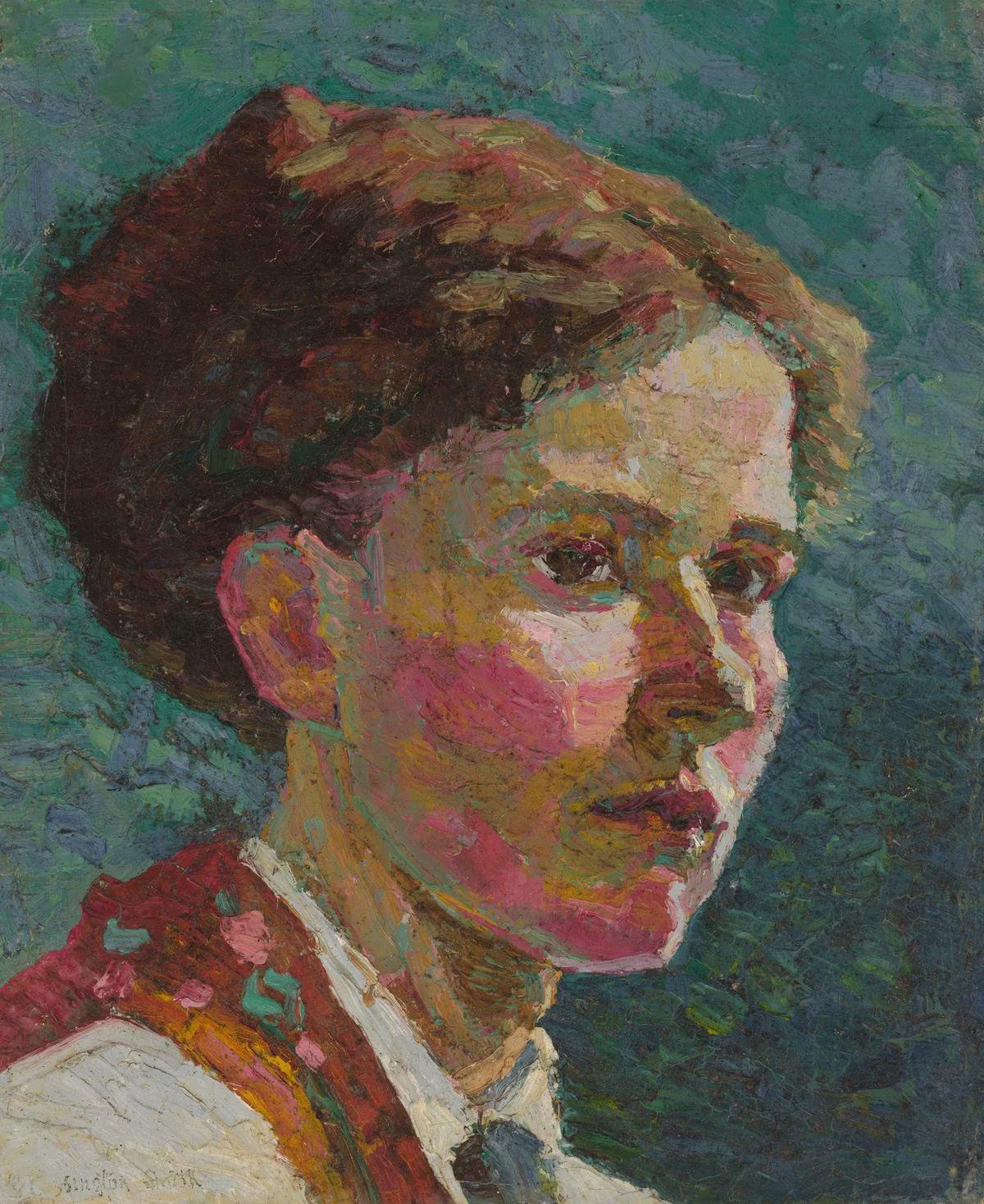
Grace Cossington Smith
Study of a head: self-portrait, 1916 oil on canvas on board
28.6 x 23.4 cm
National Gallery of Australia, Canberra
A final point involves the signature. ‘Cossington’ was the name given to two houses occupied by the family and ‘came from the ancestral home of the artist’s mother: Cossington Hall in Leicestershire, Great Britain.’ 5 The first, where the artist was born, was built by her father in c.1888 in Neutral Bay, Sydney.6 The second, in Turramurra, was initially named ‘Sylvan Falls’ when rented by the family from 1914, before its purchase and re-titling to ‘Cossington’ in 1920. From about 1919, at her mother’s suggestion, the artist began using ‘Cossington’ within her signature ‘as part of her identity as an artist.’ 7 This transition is shown in The reader (the school cape). The first part of the signature ‘G. Smith’ dates from c.1916, but its addendum ‘Cossington’ was clearly painted at a different stage. It may have been added during the process of the painting’s sale to the noted art historian Dr Bernard Smith8, but with this one small detail, Cossington Smith marks her own strategic progress from extraordinarily talented student to mistress of her own artistic identity.
1. In 1940, a group of twenty subscribers bought a still life by the artist and presented it to the Art Gallery of New South Wales.
2. Thomas, D. R., Grace Cossington Smith, Art Gallery of New South Wales, Sydney, 1973, p. 9
3. ibid., p. 69
4. Grace Cossington Smith, interviewed by Hazel de Berg, 16 August 1965, in Hazel de Berg collection, National Library of Australia, DeB 122
5. Hart, D. (ed.), Grace Cossington Smith, National Gallery of Australia, Canberra, 2005, p. 1
6. This property originally opened on to Wycombe Road but has since been sub-divided. The main house now fronts 70 Shellgrove Road.
7. Hart, op. cit., p. 1
8. On the verso of this painting The reader (The school cape) is an extended text written in 1974 by Dr Bernard Smith claiming this version was exhibited with the Royal Art Society of NSW (RAS) in 1916 as ‘The reader’, as opposed to the painting of the same title now in the collection of the Art Gallery of New South Wales. As the latter painting was formerly owned by Antonio Dattilo Rubbo, it is accepted that it is the original RAS exhibit, as catalogued by Daniel Thomas in the 1973 AGNSW retrospective.
Andrew Gaynor
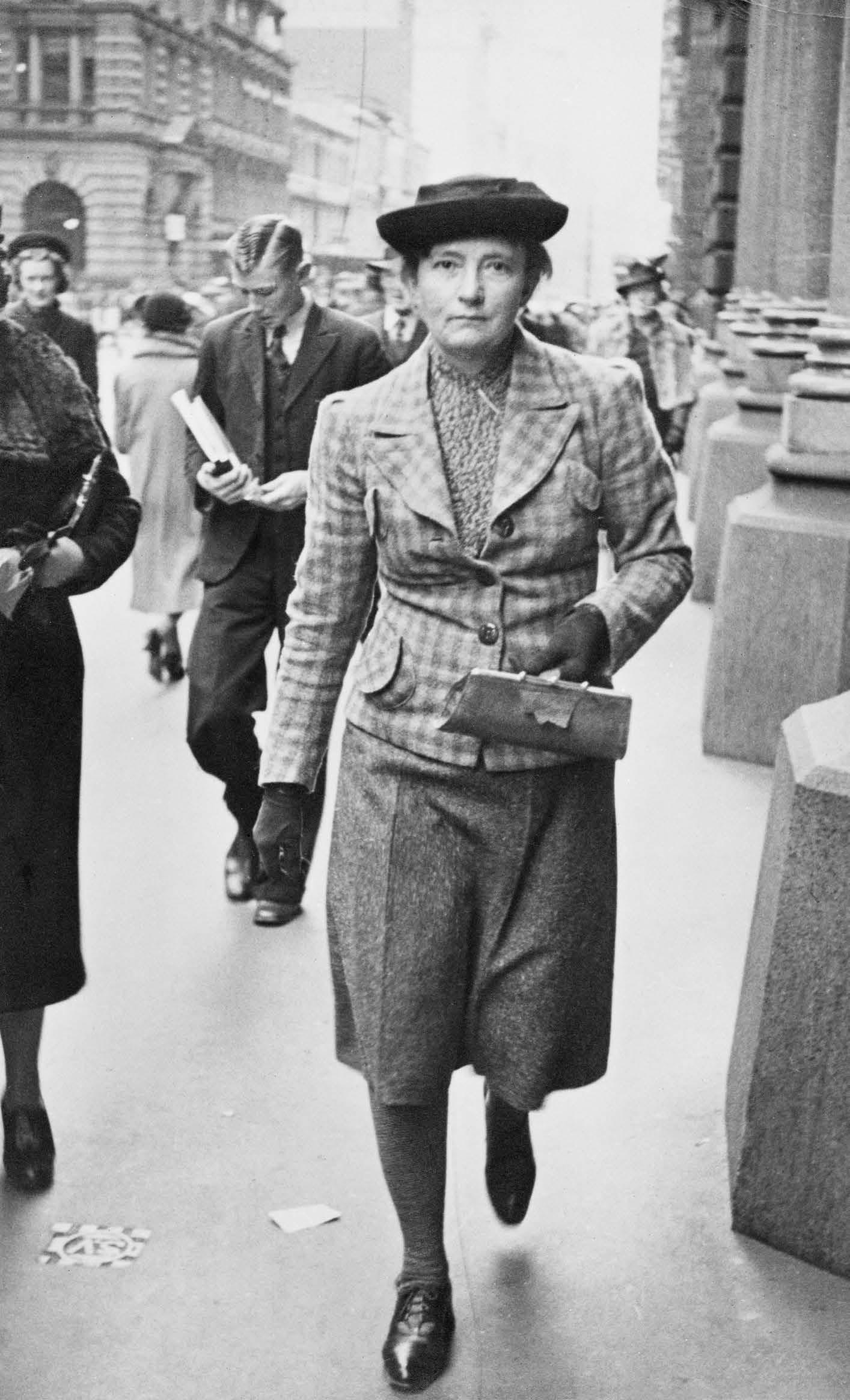
– 1984)
House with golden trees (Pink house), 1937
oil on board
75.5 x 90.5 cm
signed and dated lower left: G. Cossington Smith 37 dated lower right: 1937
signed, dated and inscribed with title on label verso: House with Golden Trees / Grace Cossington Smith / 1937
signed and inscribed with title verso: House with Golden Trees / G. Cossington Smith
Estimate: $300,000 – 500,000
Provenance
Macquarie Galleries, Sydney (label attached verso)
Private collection
Deutscher Fine Art, Melbourne (label attached verso, as ‘House with Golden Trees (5 Boomerang Street, Turramurra)’)
Private collection, Melbourne, acquired from the above in December 1983
Exhibited
Grace Cossington Smith, Macquarie Galleries, Sydney, 21 June – 10 July 1972, cat. 14
Related works
House with Trees, 1935 – 39, oil on pulpboard, 54.3 x 64.0 cm, private collection, illus. in James, B., Grace Cossington Smith, Craftsman House, Sydney, 1990, pl. 61
The pink house, c.1935, colour pencil and pencil on paper, 35.0 x 44.4 cm, National Gallery of Australia, Canberra

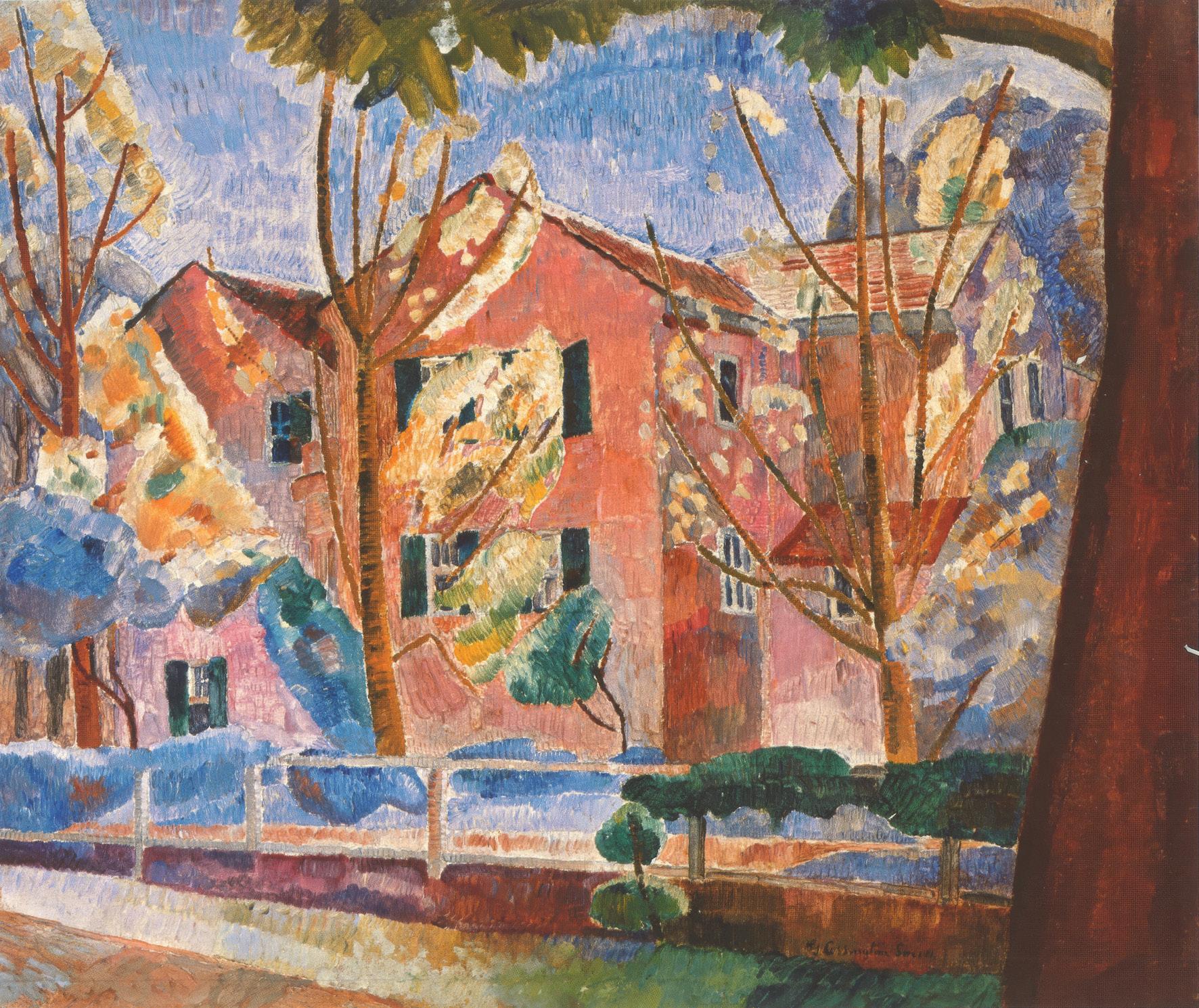
Grace Cossington Smith House with trees, c.1935 also known as The pink house oil on pulpboard
54.3 x 64.0 cm
Private collection
Grace Cossington Smith never learned how to drive and until her friends started purchasing vehicles and taking her on painting excursions, it was the streets around her home that provided the bulk of inspiration for her art. She lived her entire adult life in the family house ‘Cossington’ located in Turramurra, a leafy suburb in Sydney’s northern suburbs, and her walks would take her some kilometres in all directions. This focused observation, augmented by forensic examination as she sketched her initial studies, resulted in a range of utterly distinctive paintings that cemented her position as one of Australia’s most original artists of the period. In the 1920s, this included works inspired by the local hilly terrain such as Eastern Road, Turramurra, c.1926 (National Gallery of Australia), and Landscape at Pentecost, 1929 (Art Gallery of South Australia), as well as views from ‘Cossington’ of the tangled bush beyond, best observed in The gully, 1928 (Kerry Stokes Collection, Perth). In the 1930s, the interplay of architectural forms set within local bush gardens increasingly attracted her attention as seen in The winter tree, 1935 (private collection), with the present work, House with golden trees (Pink house), 1937, being a prime example.
Cossington Smith was constantly inventive which is one reason why her images continue to resonate through contemporary eyes. Her particular quest was the depiction of light’s emotional and physical effect on a person, thoughts magnified by her reading (and transcription) of Beatrice Irwin’s pivotal text New science of colour (1915), which ‘expressed the view that the study of colour would lead to more subtle emotions, profound ideas and more quickened spiritual perceptions on a universal level.’ 1 She was also well aware of the colour-music harmonics practiced by her art-school colleague Roy de Maistre and Roland Wakelin, and of the innovative colour wheels devised by de Maistre and by Margaret Preston in the 1920s.2 These understandings underpin the dissolving forms that Cossington Smith has employed in House with golden trees (Pink house) where the house transitions into the foliage of the bordering trees. With the reduction of their canopies into individual forms, Cossington Smith provides a design counterpoint to the open panes within the fence where each ‘view’ within is treated slightly differently from its companions. Close inspection also reveals her use of pencil not only as underdrawing, but also in the emphatic lines indicating the upright

Grace Cossington Smith Eastern Road, Turramurra, 1926 watercolour over pencil on paperboard
40.6 x 33.0 cm
National Gallery of Australia, Canberra
palings of the front gate. Technically, her use of divided brushstrokes points to her reverence of Paul Cézanne rather than the gestural flourishes of van Gogh, with whom she is often considered to be aligned. These ‘firm, separate notes of clear, unworried paint’3 are quintessential to Cossington Smith, who was renowned for ‘never revising her brushstrokes, creat(ing) a matt, almost scumbled effect in (her paintings) which, notwithstanding the impasto, gives in parts the impression of paint having partially sunk into the ground.’4
This residence, ‘Didsbury’ at 5 Boomerang Street, Turramurra, is still notably extant, located about 250 metres from Cossington. Built by the architect Augustus Aley in 1929, ‘Didsbury’ features an ‘entrance porch with a circular drum used to link two wings of the building, approached via a circular forecourt’ opening onto the gate at the corner of Fairlawn Avenue and Boomerang Street.5 Cossington Smith’s initial sketch, The pink house, c.1935, which became the painting House with Trees, c.1935 (both National Gallery of Australia) focussed on the façade facing Boomerang Street; however, in House with golden trees (Pink house), she has moved
down to the entrance corner, a tactic which reveals the artist’s continuing re-examination and progressive analysis of her subjects.
1. Hart, D. (ed.), Grace Cossington Smith, National Gallery of Australia, Canberra, 2005, p. 28
2. Grace Cossington Smith, interviewed by Hazel de Berg, 16 August 1965, in the Hazel de Berg collection, National Library of Australia, Canberra, DeB 122
3. Grace Cossington Smith, cited in Thomas, D. R., Grace Cossington Smith, Art Gallery of New South Wales, Sydney, 1973, p. 6
4. Edwards, D., Australian Collection Focus: The Lacquer Room, 1935 – 36. Grace Cossington Smith, Art Gallery of New South Wales, Sydney, 1999, non-paginated
5. Ku-ring-gai Council, ‘PLANNING PROPOSAL: To amend the Ku-ring-gai Local Environmental Plan 2015 to list additional Heritage Items and additional Heritage Conservation Area (PP_2015_KURIN_003_00)’, Ku-ring-gai Council (online), p. 162, see: https://www.krg.nsw.gov.au/files/assets/public/v/1/hptrim/information-managementpublications-public-website-ku-ring-gai-council-website-urban-planning-and-policies/ planning-proposal-to-list-additional-heritage-items-and-hca.pdf (accessed 11 July 2025)
Andrew Gaynor
(1911 – 2003)
Flinders Street Station, 1944
oil on canvas on plywood
48.0 x 61.0 cm
signed lower left: Nora Heysen inscribed on label verso: MELBOURNE STREET SCENE / NORA HEYSEN
Estimate: $20,000 – 30,000
Provenance
Private collection, Adelaide
Private collection, Melbourne, a gift from the above, c.1992
Exhibited
Nora Heysen, S.H. Ervin Gallery, Sydney, 8 September – 15 October 1989, cat. 56
Nora Heysen, National Library of Australia, Canberra, 25 October 2000 – 28 January 2001
Literature
Klepac, L., Nora Heysen, Beagle Press, Sydney, 1989, cat. 56, pp. 56 (illus.), 79
Klepac, L., Nora Heysen, National Library of Australia, ACT, 2000, p. 51
Related work
Flinders Street Station no. 2, 1943 – 44 (dated 1946) , oil on canvas on cardboard, 46.0 x 60.9 cm, National Gallery of Victoria, Melbourne
When Nora Heysen was awarded the 1938 Archibald Prize for her striking portrait Madame Elink Schuurman, she set a cat amongst the pigeons, that is, the local scions of the male-dominated art world who complained vociferously. Max Meldrum for one who wrote scathingly that an art career was ‘unnatural and impossible for a
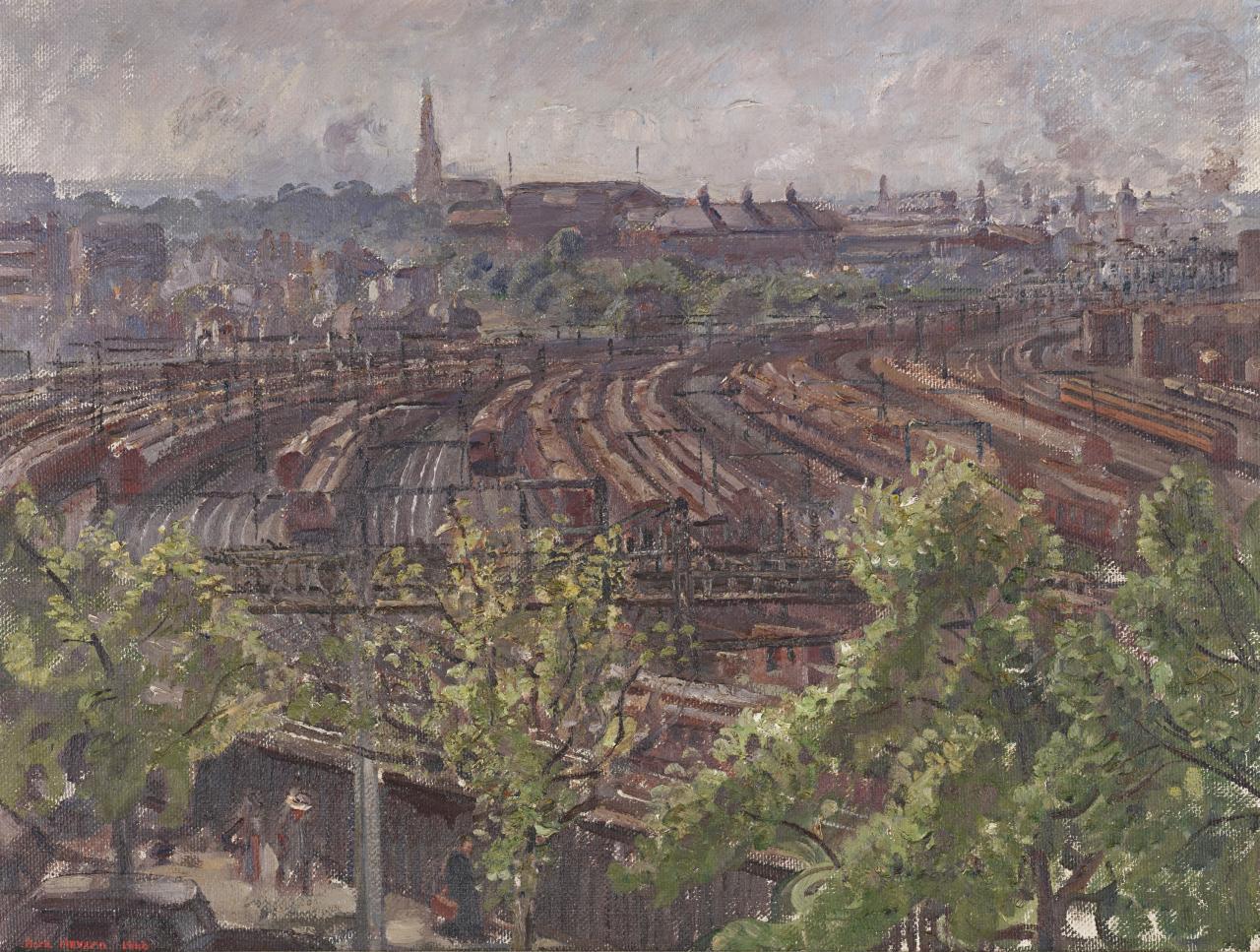
woman’ 1; whilst others claimed she was only treated favourably due to her father, the celebrated Hans Heysen. Of course, nothing was further than the truth and she triumphed again in 1943 when she became the first woman to accept an invitation from the Australian War Memorial to become an official war artist. She was eventually sent to New Guinea but in the interim, she spent some months in Melbourne from October 1943 to April 1944, where Flinders Street Station, 1944 (originally titled Melbourne Street Scene), was painted.
Heysen – or to give her official title, VFX 940085 Captain Heysen, N. AIF – was accommodated at the Menzies Hotel. Her first studio was with other war artists based at the Military History Headquarters on St Kilda Road, then in early 1944 she moved into a new space at 138 Flinders St, a building which had ‘lately been the morgue’,2 from which, she wrote in a letter, ‘the outlook is quite fascinating and I’ve started a canvas of the railway lines and trains.’3 She eventually did two versions of differing views from her window comprising this lot and its companion, the smaller and currently mis-dated Flinders Street Station no. 2, 1943 – 44 (dated 1946) (National Gallery of Victoria) which was also given its current title by the artist prior to its exhibition at the S.H. Ervin Gallery, Sydney, in 1989. However, the artist’s studio was a good 250 metres from the Station and the paintings look to the opposite direction, following the curving rail lines towards Richmond. Visible on the skyline in each is the prominent spire of St Ignatius Church on Richmond Hill, a view which has been obliterated over time by skyscrapers and overgrown vegetation, as well as infrastructure such as the Batman Ave Bridge which now obscures the rail lines.
Initially studying at the North Adelaide School of Fine Art (with generous, low-key input from her father), Heysen was noted first for her extraordinarily precise portraits which presented an accuracy that recalled Vermeer. From 1934 to 1937, she studied in London where she befriended artist Lucien Pissarro’s daughter Orovida, who encouraged her to be livelier with her paint. Indeed, Flinders Street Station could be a magnified incident from a painting by Camille Pissarro, Orovida’s grandfather, whose bustling Boulevard Montmartre, morning, cloudy weather, 1897, was a star of the
Nora Heysen
Flinders Street Station no. 2, 1943 – 44 oil on canvas on cardboard
46.0 x 60.9 cm
National Gallery of Victoria, Melbourne
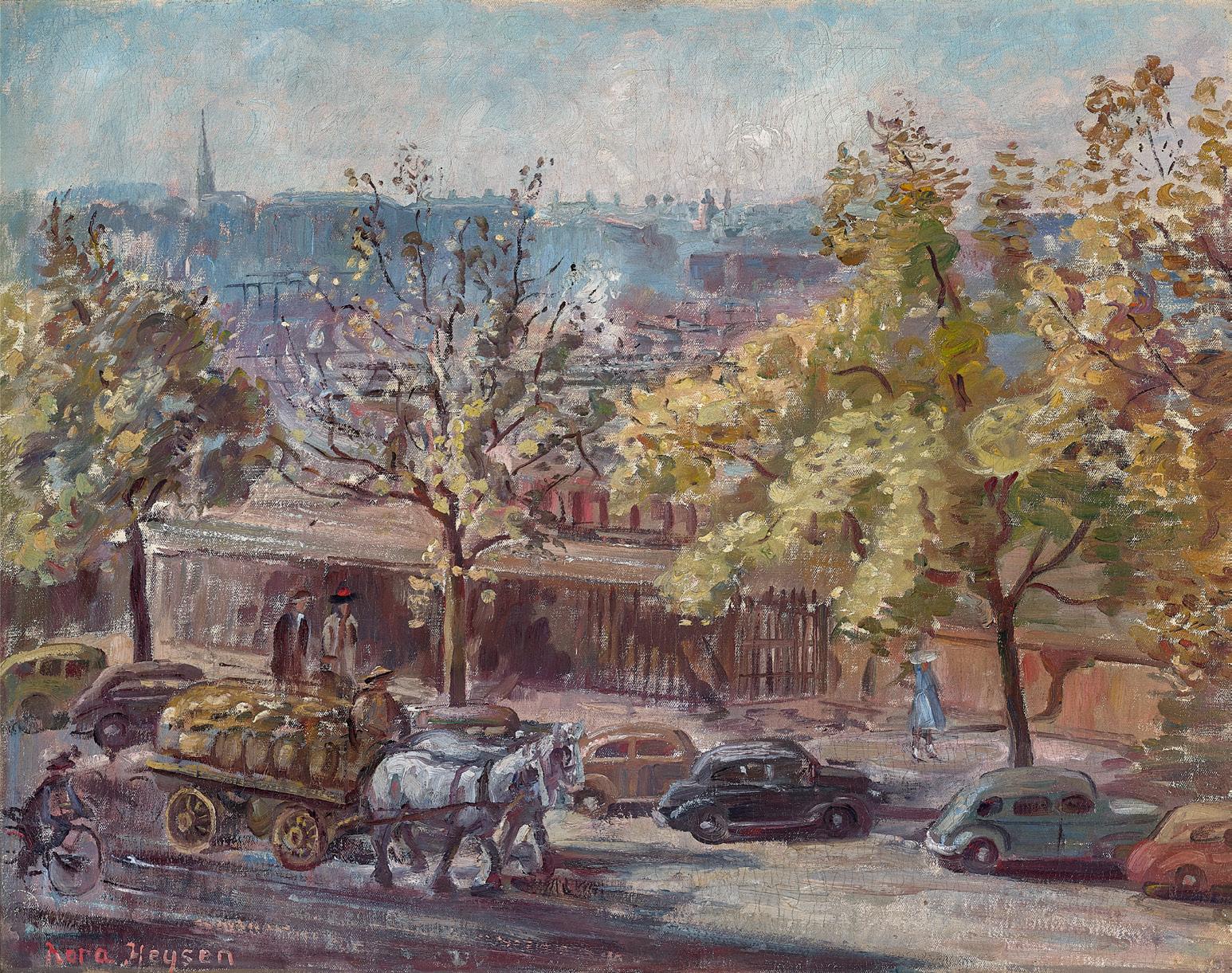
National Gallery of Victoria’s collection. Following Orovida’s suggestion, Heysen adopted a more painterly technique, as seen in her Archibald winning portrait and in the two Flinders Street views. In the work on offer here, the artist scrutinises the humble scene below her and features three modes of transport set against the vertical pattern made by the palings of the rail-concealing fencing, long since replaced by rusting cyclone wire and now cloaked in ivy.
1. ‘Art Prize to Woman. Marriage before career. Advice by artist’, The Herald, Melbourne, 21 January 1939, p. 8
2. See Nora Heysen, Letter to her parents 19 September 1944, transcribed in Speck, C. (ed.), Heysen to Heysen: selected letters of Nora Heysen and Hans Heysen, National Library of Australia, Canberra, 2011, p. 139. Notably, 138 Flinders Street is still standing, now absorbed within the neighbouring Duke of Wellington hotel redevelopment.
3. Nora Heysen, Letter to her parents, February/March 1944, see ibid. p. 140 Andrew Gaynor
oil on board
27.0 x 44.5 cm
Estimate: $180,000 – 280,000
Provenance
Estate of the artist, New South Wales
Thence by descent
Private collection, the artist’s nephew Sotheby’s, Melbourne, 22 August 1994, lot 76 Private collection, Melbourne
Exhibited
William Dobell: The Painter’s Progress, Art Gallery of New South Wales, Sydney, 14 February – 27 April 1997, Newcastle Region Art Gallery, Newcastle, 7 May – 6 July 1997, Museum of Modern Art at Heide, Melbourne, 29 July – 21 September 1997, Queensland Art Gallery, Brisbane, 25 October – 7 December 1997, Tasmanian Museum and Art Gallery, Hobart, 8 January – 1 March 1998 (label attached verso)
Literature
Pearce, B., William Dobell: The Painter’s Progress, The Beagle Press, Sydney, 1997, cat. 11b, pp. 34, 49 (illus.)
Related work
Study for Young Man Sleeping, c.1936, pencil on paper, 26.0 x 35.7 cm, Art Gallery of New South Wales, Sydney
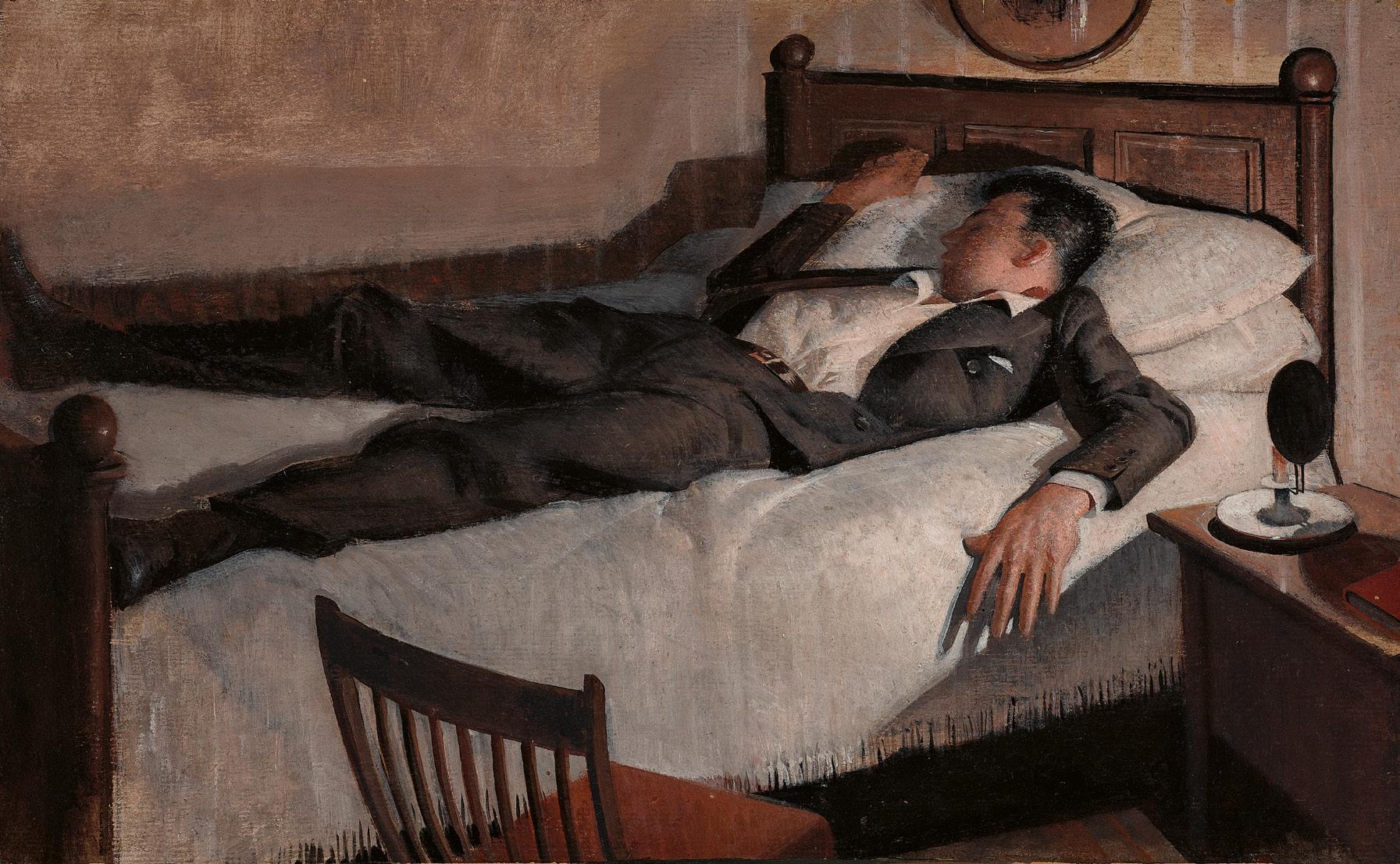

William Dobell
(Male figure sleeping) (Student studies), c.1936 pencil on paper 24.0 x 35.7 cm
Art Gallery of New South Wales, Sydney © Courtesy Sir William Dobell Art Foundation / Copyright Agency, 2025
In 1929, William Dobell was awarded the Society of Artists’ twoyear travelling scholarship following an extended period of study at Julian’s Ashton’s art school in Sydney. The award came with a stipend of £250 per year for two years, augmented by funds from the committee for the Artists’ Ball and from Wunderlich Ltd., for whom he worked. He travelled to England where he enrolled at London’s Slade School of Fine Art but even with the scholarship’s financial support, living in the city was expensive and Dobell spent most of his time in conditions close to poverty. At first, he lived in ‘squalid little bed-sitting rooms in Bayswater and Pimlico.’ 1
One room he shared with a burglar named ‘Stiffy’ who used the bed in the daytime whilst his flatmate was at Art School.2
It was during these London years that Dobell truly became an important painter, able to capture the inner life of his subjects, a ‘humanity that is a little sombre in tone, a little uneasy... brilliant, but somehow disturbing.’3 The Slade recognised his talent and in 1930, awarded him first prize for figure painting with his Slade
nude (Newcastle Art Gallery) and shared second prize for drawing. At the National Gallery, he avidly studied the works of Rembrandt, Goya, Soutine, Corot and El Greco, before visiting Holland, France and Belgium, where he found the artists of the Northern Renaissance, particularly Vermeer and Rogier van der Weyden, to be an inspiration. By the time of his return, the scholarship money had run out, but in late 1932 he was fortunate to be given the use of the studio of his New Zealand colleague, Fred Coventry, on the ‘top floor of a trace house in Westbourne Grove, Bayswater.’4 Before Coventry left to take up a commission, Dobell painted his portrait – arms folded, looking askance at the viewer, hair upswept and unruly – an early example of the artist’s finely intuitive portraits. More importantly, Dobell also painted his first masterwork here, The boy at the basin, 1932 (Art Gallery of New South Wales), which had started as a sketch for an unfinished image for the Slade from the previous year. Now transposed to Coventry’s studio, the rumpled, bare-chested figure in striped pyjama pants undertakes his morning ablutions, using a bowl of water set on a counter while the kettle boils
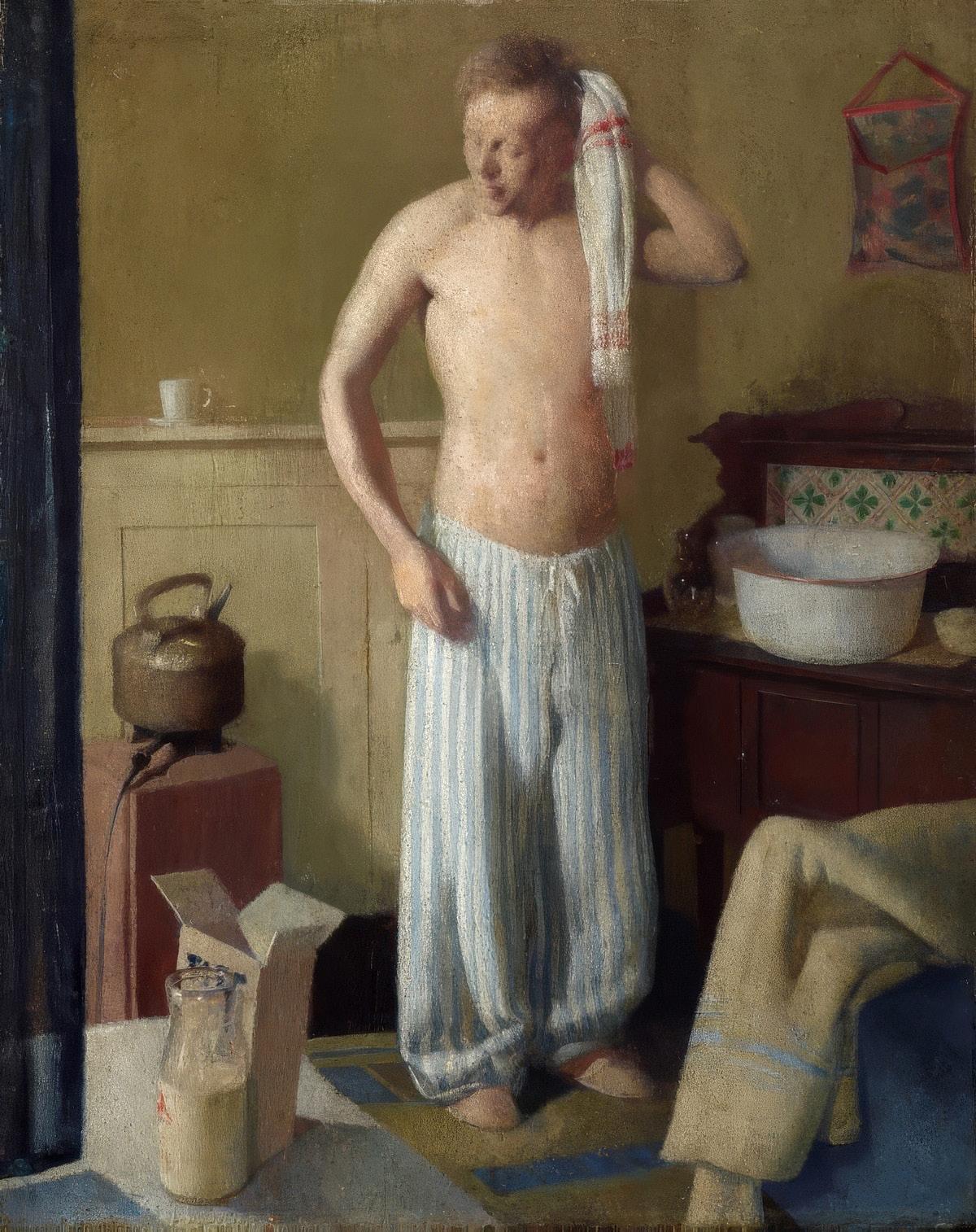
William Dobell
The boy at the basin, 1932 oil on wood panel
41.0 x 33.2 cm
Art Gallery of New South Wales, Sydney © Courtesy Sir William Dobell Art Foundation / Copyright Agency, 2025
on the flat’s single electric burner, a half bottle of milk and opened box of sugar to one side. It is a ‘a frozen moment in time, with the muted stillness of a Flemish interior’ 5 but has the attention to detail of straightened circumstance that would later be celebrated by the ‘Kitchen Sink’ movement which emerged in Britain in the late 1950s.
Besides Coventry, other Australian artists Dobell mixed with in London included Godfrey Miller, John Passmore and Arthur Murch. All (apart from the independently wealthy Miller) lived on low incomes and often supported each other; indeed, Young man sleeping was painted at a time where Dobell’s frugal living forced him to miss occasional meals whilst using ‘shoe polish on his legs to cover holes in socks.’6 In Young man sleeping, Dobell does not sensationalise such austerity; rather, he imbues the scene with the same refined sensibility as The boy at the basin Technically, the sleeping figure is set at a diagonal which divides the picture plane, an angle emphasised further by the contrasting grey used for his suit and the shirt illuminated by white, scumbled
brushstrokes. The overall design comprises a series of devices that cause the eye to roam across every detail, from the vertical stripes of the wallpaper carried through to the details on the headboard, and on to the irregular fringe of the bedspread. The figure’s left hand dangles by his side, the attenuated fingers mirrored in the upright struts at the back of the chair, and all is illuminated by the bedside lamp, the top of which has been adjusted to blaze solely on the model. This lighting is theatrical, likely informed by Dobell’s experiences as an extra in several London films in 1934. A comparison between Young man sleeping and The boy at the basin clearly illustrates the subdued tenor and masterly technique found in the very best of Dobell’s London paintings.
1. ‘William Dobell: an Australian genius’, People, Sydney, 21 June 1950, p. 42
2. ibid.
3. ibid., p. 44
4. Gleeson, J., William Dobell, Thames and Hudson, London, 1964, p. 33
5. Adams, B., Portrait of an art: a biography of William Dobell, Hutchison, Victoria, 1983, p. 66
6. Gleeson, 1964, op. cit., p. 39 Andrew Gaynor
1968)
Two women in a boat, c.1935
oil on board
64.0 x 52.5 cm
signed lower left: R de Maistre
Estimate: $50,000 – 70,000
Provenance
Miss Doris de Mestre Fisher, United Kingdom, acquired directly from the artist
Thence by descent
Caroline de Mestre Walker, United Kingdom
Related work
Two Women in a Boat, oil on board, 59.0 x 49.5 cm, private collection, illus. in Johnson, H., Roy de Maistre: The English Years 1930 – 1968, Craftsman House, Sydney, 1995, pl. 15, p. 38
Caroline de Mestre Walker has been co-copyright holder on de Maistre’s work since 1975 and has generously donated her Roy de Maistre archive and papers to the Art Gallery of New South Wales.

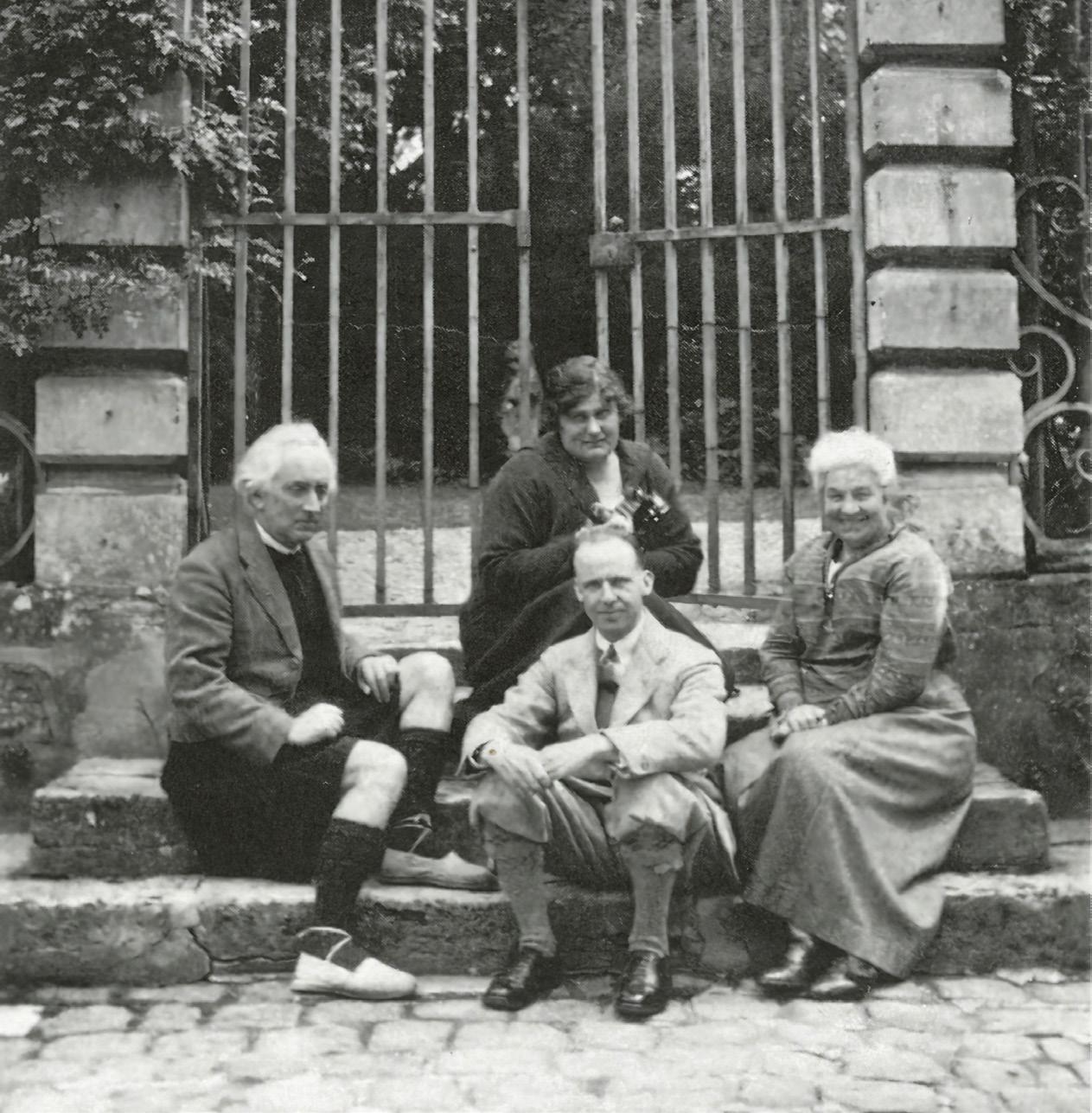
An attractive and sophisticated painting, Two women in a boat, c.1935 exemplifies well de Maistre’s approach to his art, demonstrating his interest in colour and abstracted design. Notably, the painting is a stylised version of a more realistic work, Two Women, 1934 (private collection) and although the subjects here are not named, the composition almost certainly depicts Lady Ashbourne and a companion boating on the river in Compiègne, France. Previously it has been suggested that the second figure is Violet Gibson, Lady Ashbourne’s sister-in-law who achieved notoriety by attempting to shoot Mussolini in 1926, however there is no evidence to support this supposition. Indeed, Violet Gibson was visiting the Ashbournes in 1924 and de Maistre could conceivably have met her, but by 1934, she was housed in a mental institution. Moreover, the painted image bears no resemblance to photographs or descriptions of Violet made at this time.1
After gaining a reputation as an early ‘modern’ painter, de Maistre left Sydney in May 1923 to take up the informal overseas study awarded by the Society of Artists Travelling Scholarship, spending the next two years in Europe, mainly France. A photograph sent to
Roy de Maistre with Lord and Lady Ashbourne photographer unknown
his sister in Sydney during this trip shows the artist seated at the gate of the home of Lord and Lady Ashbourne in Compiègne, France.2 It is not known how de Maistre met the Ashbournes, but Lord Ashbourne (William Gibson) and his wife Marianne (née Marianne de Monbrison) became close friends and the subjects of many of de Maistre’s works which feature the couple relaxing at home or enjoying activities on the nearby river. While Lord Ashbourne, an extremely colourful figure – philosopher, religious scholar and linguist who gave his maiden speech in the House of Lords in Gaelic and commonly dressed in a saffron kilt and espadrilles – has been depicted enthusiastically rowing or actively writing, depictions of Lady Ashbourne typically reveal her engaged in quieter pursuits such as reading, painting or knitting. In the more realistic version of this work, the figures are static – enclosed in a not easily readable but intimate space. They are simultaneously engaged by their proximity and confinement and disengaged by their self-absorption and posture – looking in opposite directions and individually reading.
De Maistre regularly made several versions of his works, often stylising a more realistic version. In the present Two women in a
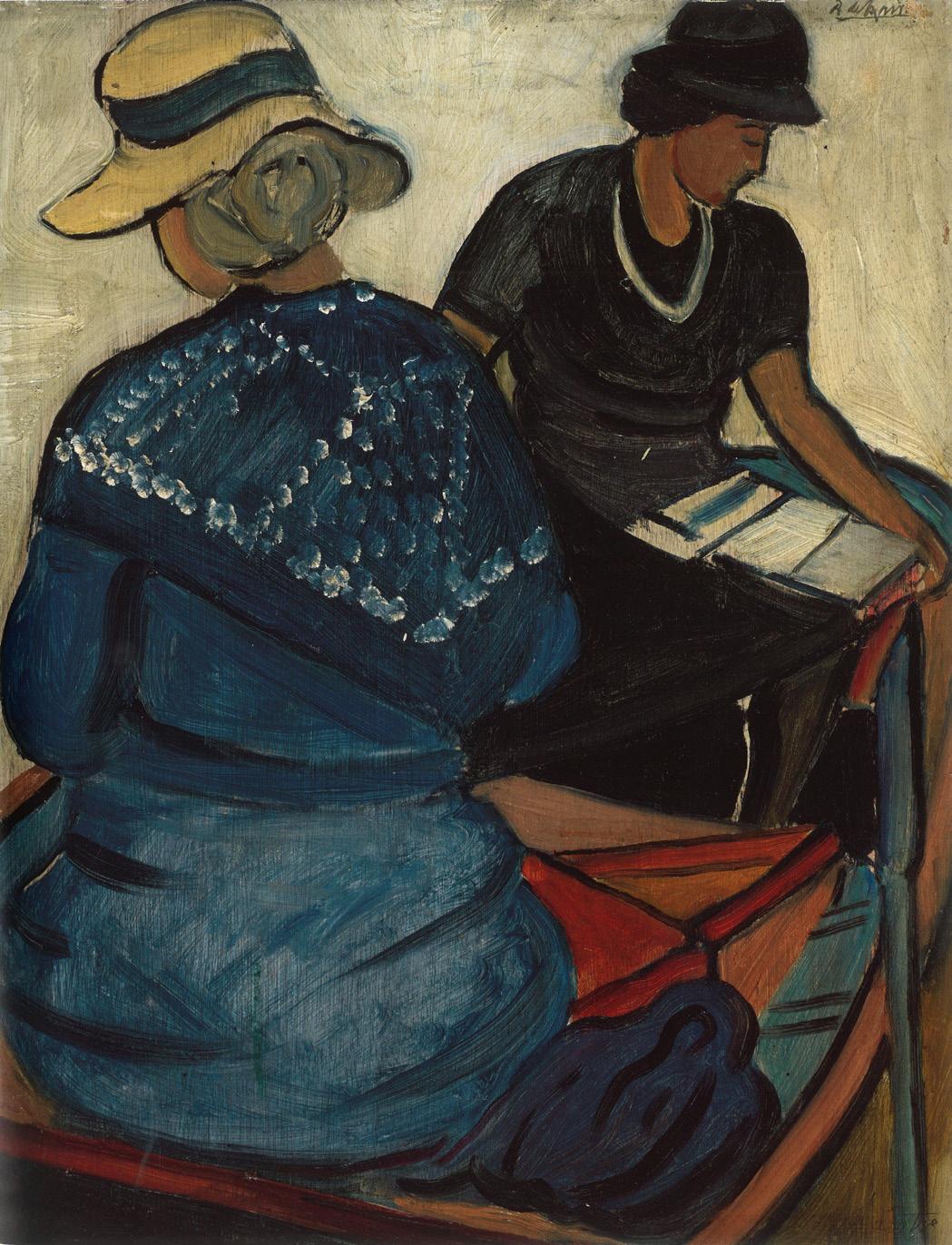
Roy De Maistre
Two women in a boat, 1934 oil on plywood panel
40.5 x 31.8 cm
Private collection
© Courtesy of the artist’s estate
boat, de Maistre has converted the women’s surroundings to be more obviously a boat, yet at the same time he has flattened and abstracted the scene, emphasising the separation between the figures by framing them in pale triangles and adding decorative elements, particularly related to shape. The lightly depicted decorative pattern on Lady Ashbourne’s shawl has been hardened to geometric motifs, while the ‘pages’ of the second figure’s reading or drawing material have been changed to panels reminiscent of the colour stripes of de Maistre’s later colour music paintings, and Lady Ashbourne’s hair bun and hat have been turned into concentric circles echoed in her companion’s hat. The space surrounding the figures is similarly sharpened by rectangles and
triangles, mostly to the right and left of the foremost figure. De Maistre’s colour expertise is subdued in this work. His dominant use of shades of blue is contrasted by the touches of yellow in the hats and the reddish skin tones of the subjects, thus adding balance and stability to the scene. Although the figures are seated in a rowing boat, there is no movement – only the serenity of a closely shared, yet at the same time, individual, experience.
1. See Stoner Saunders, F., The Woman Who Shot Mussolini, Faber and Faber, London, 2010, Chapter XI
2. Reproduced in Johnson, H, Roy de Maistre. The Australian Years, Craftsman House, 1988, p. 43
Dr Heather Johnson
oil on canvas
41.0 x 35.5 cm
signed lower right: R de Maistre
Estimate: $25,000 – 35,000
Provenance
Miss Doris de Mestre Fisher, United Kingdom, acquired directly from the artist
Thence by descent
Caroline de Mestre Walker, United Kingdom
Caroline de Mestre Walker has been co-copyright holder on de Maistre’s work since 1975 and has generously donated her Roy de Maistre archive and papers to the Art Gallery of New South Wales.
Although de Maistre would make his mark in Australian art through the development of an individual style of modernism which related colour and music to create a form of stylised, decorative cubism, the present composition, with its framed view of Fort Denison, is reminiscent of the German Romantic device of Rückenfigur (but in this instance, without the figure). The viewer is firmly placed on the verandah looking towards the harbour which notably features no hint of the active construction of the Sydney Harbour Bridge that had inspired fellow modernists such as Grace Cossington Smith and was potentially visible with a short turn to the right. Bereft of any harbour activity at all, the scene has instead been presented as quiet and timeless.
After returning to Australia in 1926 following two years in Europe, de Maistre’s work followed a more realistic style than his earlier adventurous experiments. He supported his practice by cultivating patrons, exhibiting and selling works through solo exhibitions (namely at Macquarie Galleries, Sydney in 1926 and 1928), engaging in decorative work, and giving occasional talks.
Enthusiastic among his patrons were English-born Sir Dudley de Chair, a former naval admiral and governor of New South Wales from 1924 to 1930, and his wife, Lady Enid de Chair who was a very active supporter of the arts during her time in Australia – not only in her official capacity, but also from personal interest. Accordingly, de Maistre painted several works of Government House and garden, and a portrait of Sir Dudley de Chair which he entered in the Archibald Prize in 1929 (presently hanging in Government House, Sydney). It is assumed that it was through the connection with the de Chairs that the artist gained entry to Admiralty House which, in 1929, was subject to some controversy. In June, the Sydney Morning Herald reported a visit of the Attorney General, Mr Latham, on behalf of the Commonwealth Government ‘to enquire into the
ownership of Admiralty House, the Sydney home of the Governor General (Lord Stonehaven)’ which, the report continued, ‘was being claimed by New South Wales following a similar successful claim to Garden Island’.1 One year later, in 1930, due to the depression, Admiralty House was closed and its contents sold at auction, with the Governor General transferring his residence to Yarralumla in Canberra. Admiralty House passed to the Commonwealth and was reopened and redesignated as an official residence in 1948.
By contrast to an earlier undated painting, Government House (private collection), where the building is presented almost as a medieval castle shrouded by trees2, and his other depictions of friends’ homes (largely around Palm Beach) undertaken at this time, the present composition is intimate and homely, defying the building’s colonial grandeur. The patches of pale sky and sea, and the faint gold of the light are enhanced by both the dark green of the plants and verandah, and the contrasting reddish-pink tones of Fort Denison and the background buildings. The scene evokes a reflected Australian sunset. Significantly, de Maistre himself departed the country in 1930, never to return, and thus, the painting may encapsulate a final glimpse of Sydney Harbour – perhaps emphasising the artist’s departure for a more desirable future in England.
Accompanying him upon his departure abroad and signed sometime later (de Maistre used the spelling ‘de Mestre’ until 1930), View of Sydney Harbour from Admiralty House to Fort Denison has never, as far as can be ascertained, been exhibited before and importantly represents a unique subject in the artist’s oeuvre.
1. Sydney Morning Herald, Sydney, 29 June 1929, p. 14
2. See Bonham’s, Australian Art, Sydney, 22 August 2024, lot 13
Dr Heather Johnson
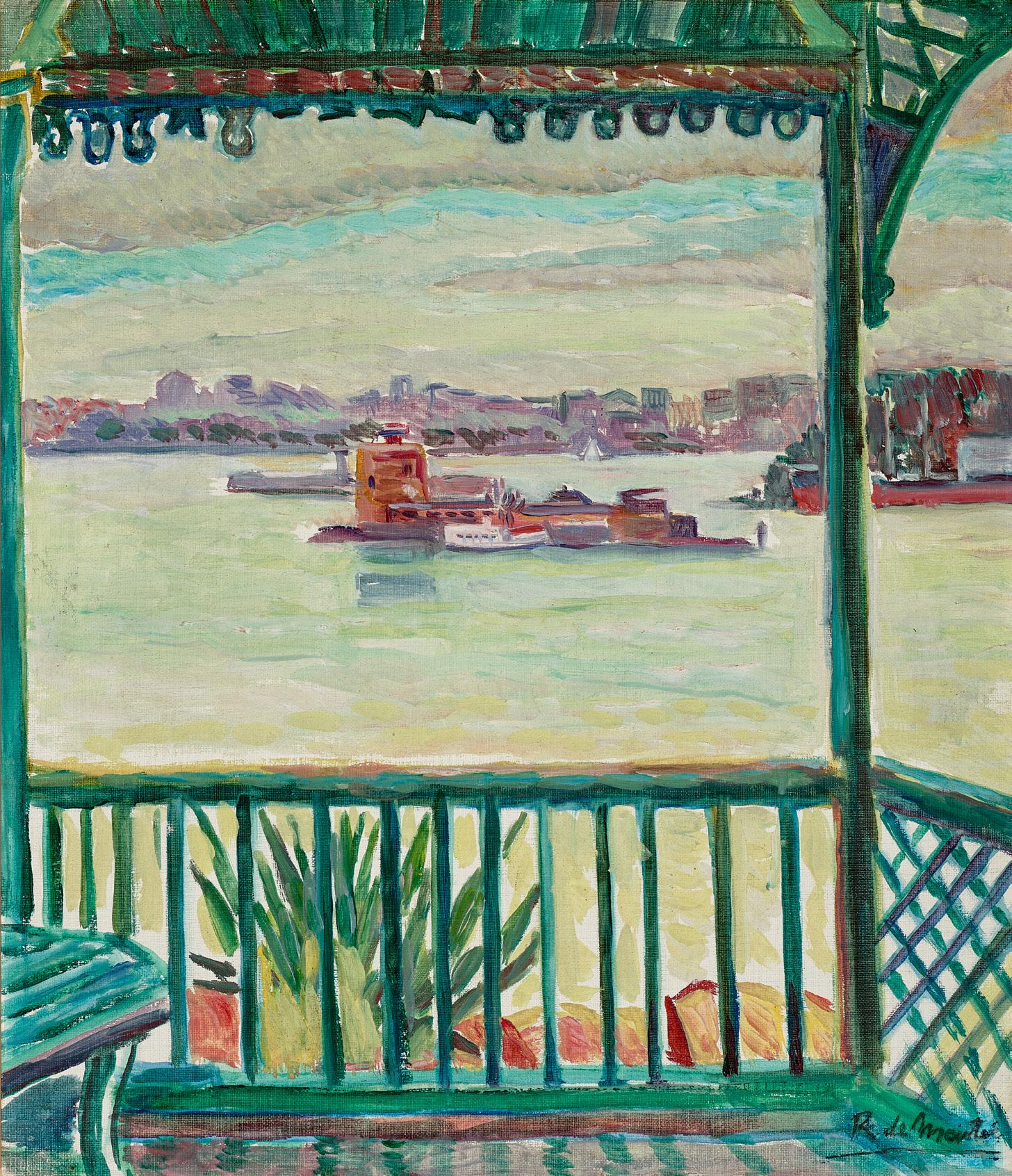
Roy de Maistre (1894 – 1968)
oil on canvas
122.5 x 91.5 cm
signed lower left: R. de Maistre
Estimate: $120,000 – 180,000
Provenance
Lord Ashbourne (William Gibson), London Thence by descent
Christina Gibson (later Mrs J.J. Byam Shaw), London, 1960
Art Gallery of South Australia, Adelaide, a gift from the above in 1969
Deutscher~Menzies, Sydney, 15 June 2005, lot 31
Private collection, Melbourne
Exhibited
Roy de Maistre: A Retrospective Exhibition of Paintings and Drawings 1917 – 1960, Whitechapel Art Gallery, London, May – June 1960, cat. 56
Literature
Johnson, H., Roy de Maistre: The English Years 1930 – 1968, Craftsman House, Sydney, 1995, pl. 46 (illus.), pp. 109, 111 Rothenstein, J., ‘Roy de Maistre’, Art and Australia, Ure Smith, Sydney, vol. 4, no. 4, March 1967, p. 298 (illus., as ‘Seated Figure (1944)’)
Related works
Portrait of Mrs Florence Bevan, 1937 or 1939, oil on canvas, 116.5 x 89.0 cm, private collection, illus. in Johnson, H., Roy de Maistre: The English Years 1930 – 1968, Craftsman House, Sydney, 1995, pl. 45, p. 110 Madonna and Child, c.1947, oil on canvas, 120.0 x 91.0 cm, private collection

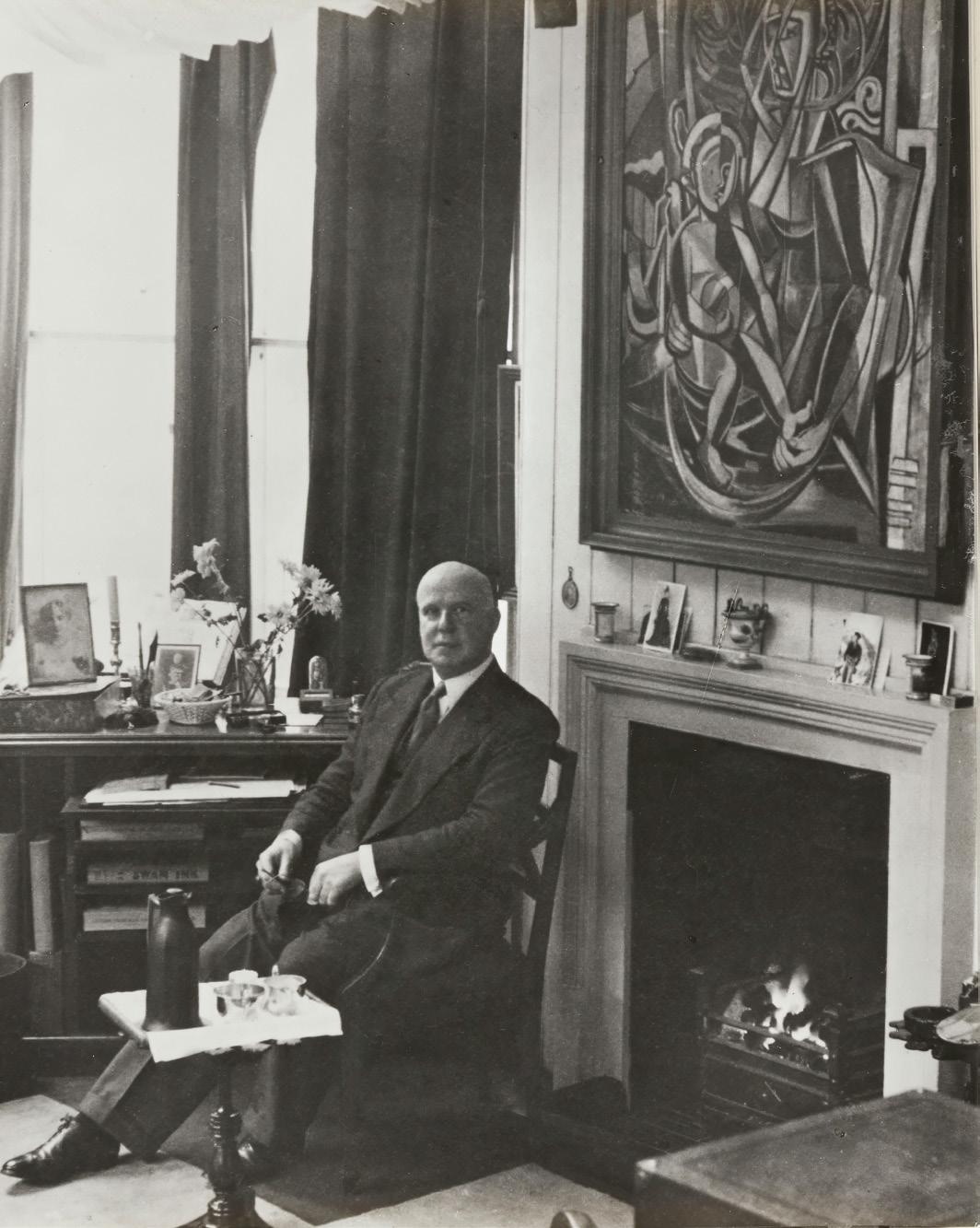
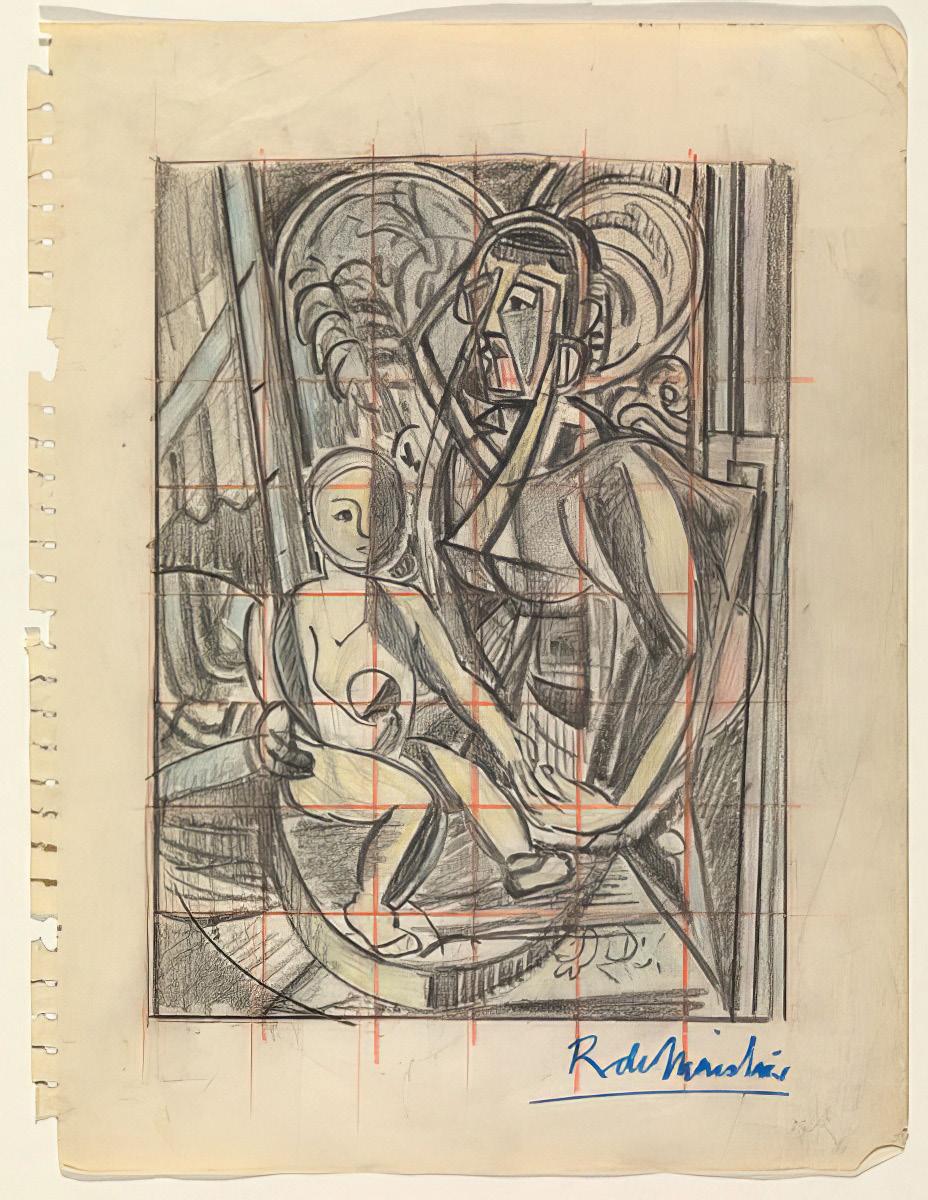
Roy de Maistre [Mother and child], c.1946 drawing in conté crayon, colour pencil 20.4 x 14.9 cm
National Gallery of Australia, Canberra
Roy de Maistre, c.1950
Madonna and Child, c.1947, pictured
National Art Archive
Art Gallery of New South Wales Institutional Archive
By the late 1930s, Roy de Maistre was living in London and coming to the end of his close association with younger colleague Francis Bacon, whom he had mentored since meeting shortly after his arrival from Australia in 1930. In that time, Bacon’s enthusiasm for Picasso had also passed to de Maistre who began to increasingly explore the possibilities of abstraction to extend initial paintings into more psychic explorations of personality and mood. One of the earliest sequences was based on Bacon’s studio and resulted in the major canvas, New Atlantis, 1933 (National Gallery of Australia). Others reworked scenes painted at Compiègne, France, involving his friends, the Irish peer William Gibson, 2nd Baron Ashbourne, and his French-born wife Marianne (see lot 7). In 1937, he painted Portrait of Mrs Florence Bevan (private collection), a naturalistic image of another close friend and seven years later, this too underwent a sequence of abstractions, starting with this powerful rendition, Woman in a chair, c.1944.
Bevan was ‘the sister of Captain Richard Briscoe, a wealthy businessman, member of parliament and, from 1943 until his death
in 1957, Lord Lieutenant of Cambridge.’ 1 Bevan looked after her brother whose dismissive treatment of his sister angered de Maistre, and in this otherwise affectionate study, she sits slightly slumped as if resigned to her fate, tightly sequestered in a violet dress that buttons firmly up to the neck. A strange lion rampant (possibly a statue?) emerges near her right arm and a truncated portrait of a women brackets the lion’s paw. The contrast between the richly patterned chair and equally florid screen behind her harks back to the society photographs de Maistre styled with Harold Cazneaux for Home magazine in 1928, where wealthy local personalities were set against imported French fabrics. On revisiting Bevan’s portrait for Woman in a chair here, he reimagines the original pose and complex entwining patterns into his personalised form of decorative cubism.
De Maistre lived an impoverished existence yet was a considered a witty and well-read man, a charming companion despite minor eccentricities such as a conviction that he was related to the Royal Family (since discredited). Many people helped support him with baskets of food or invitations to stay at their houses for extended
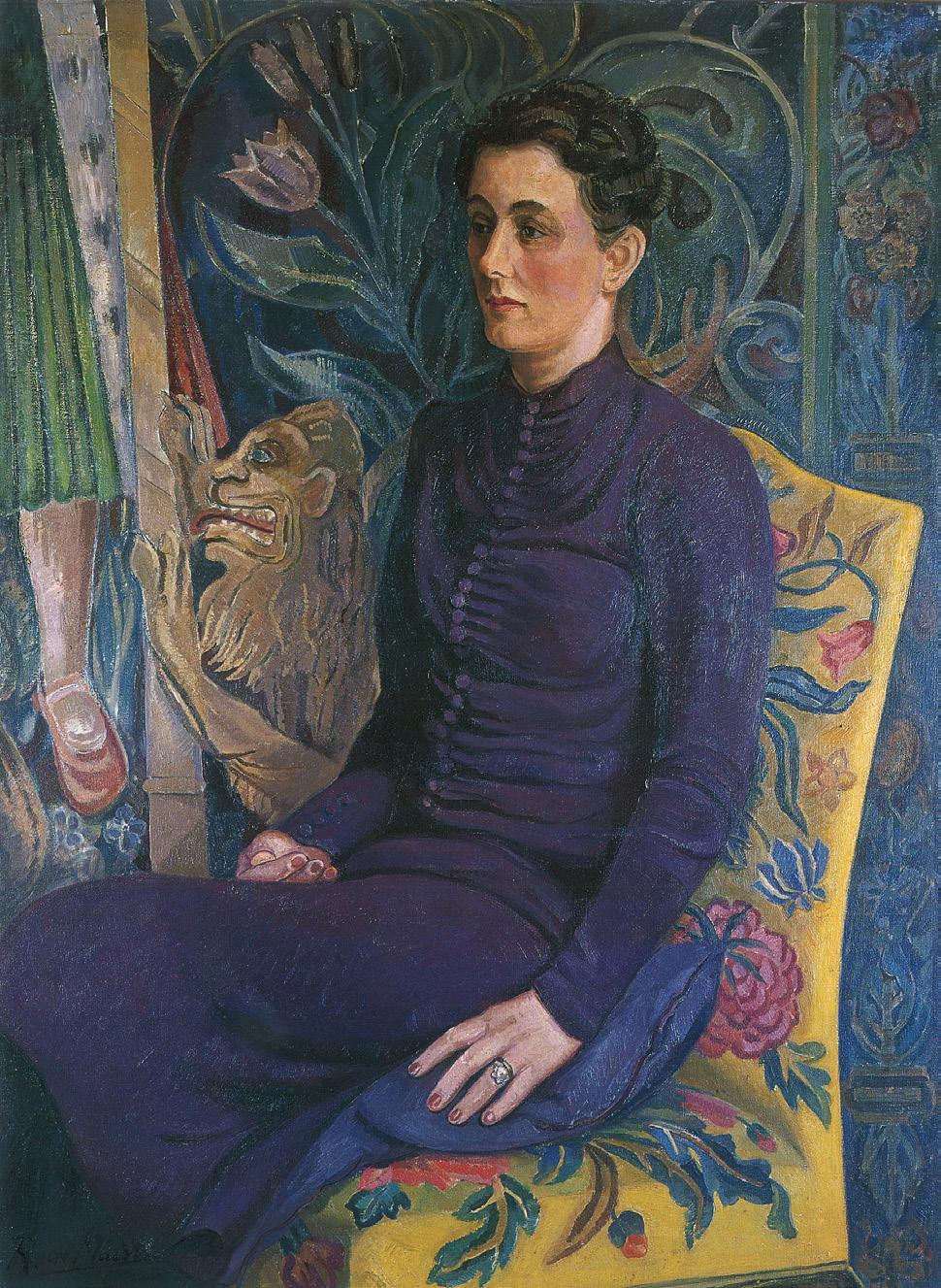
periods, and this was the same for the Briscoe household whose relationship with de Maistre ‘was one of friendship more than that of artist and patron.’ 2 At the end of 1937, he moved into a three-story building at 13 Ecclestone St, Belgravia, and set up a vast studio. Over time, this became the centre of his world, ‘a veritable Aladdin’s Cave, an enormous space dominated by a winged sofa designed by Francis Bacon in 1930.’3 With the advent of war, de Maistre retreated further into this fastidiously organised environment, and intensely personal abstractions began to dominate his output. The BriscoeBevan friendship continued and he stayed with them on occasion during the war years, which further deepened de Maistre’s friendship with Florence Bevan, informing the psychological intensity found in Woman in a chair, and a subsequent variant, Woman and child (also known as Madonna and child ), c.1947 (private collection).
In Woman in a chair, the sitter’s pose remains as before but is now fragmented into an interlinked sequence of angled facets running from the face to her lap which makes Bevan appear more alert and
Roy de Maistre
Portrait of Mrs Florence Bevan, 1937 or 1939 oil on canvas
116.2 x 88.7 cm
Private collection
© Courtesy of the artist’s estate
aware. The looped stems which formed part of the floral pattern on the screen behind her now continue into a pointed arched line running from jaw to breast on one side and from the peak of her head to the left shoulder on the other: ‘De Maistre explained [the] placing of a cage-like structure around the head of the figure by the feeling her soul was in a cage.’4 This is then echoed by a curved sweep that encloses the hand on her lap, whilst the lion now looks like a Mayan carving. De Maistre has also shifted the palette and Woman in a chair instead brings autumnal orange, oche and brown to the fore, simultaneously reducing the intensity of the blue background seen in the original portrait of Bevan.
1. Johnson, H., Roy de Maistre: The English Years 1930 – 1968, Craftsman House, Sydney, 1995, p. 109. The title Lord Lieutenant is given to the British monarch’s personal representative in the counties of the United Kingdom.
2. ibid.
3. Daniel Thomas, conversation with the author, 17 October 2018. Thomas visited de Maistre in 1966.
4. Mrs Iris Portal, 1988, cited in Johnston, op. cit., p. 109 Andrew Gaynor
oil on canvas
76.0 x 101.5 cm
signed and dated lower right: John Brack 55
Estimate: $600,000 – 800,000
Provenance
Peter Bray Gallery, Melbourne Australian Galleries, Melbourne (label attached verso)
Miss D Rachor, Melbourne, acquired from the above in 1958
Private collection
The Melbourne Art Exchange, Melbourne Private collection, Melbourne, acquired from the above March 1988
Exhibited
John Brack, Peter Bray Gallery, Melbourne, 19 – 29 March 1956, cat. 2
Contemporary Australian Painting, Auckland City Art Gallery, Auckland, 16 February – 24 March 1957, cat. 3
Helena Rubinstein Travelling Art Scholarship Exhibition, Art Gallery of New South Wales, Sydney, 5 – 17 August 1958
A Critic’s Choice – selected by Alan McCulloch, Australian Galleries, Melbourne, opened 6 March 1958, cat. 10
John Brack Retrospective, National Gallery of Victoria, Melbourne, 24 April – 9 August 2009; Art Gallery of South Australia, Adelaide, 2 October 2009 – 31 January 2010 (label attached verso)
John Brack | Melbourne | 1950s, Sotheby’s Australia, Melbourne, 11 February – 2 March 2019 (label attached verso)
Literature
‘Art Notes: Painter shows originality’, The Age, Melbourne, 20 March 1956, p. 2
Shore, A., ‘Modern Art on Show’, The Argus, Melbourne, 1 December 1956, p. 44
McCulloch, A., ‘Co–ordination and a satirist’, Herald, Melbourne, 21 March 1956, p. 18
Brack on Brack, Discussion Group Art Notes, Council of Adult Education, Melbourne, 1957, p. 5
Millar, R., John Brack, Lansdowne Press, Melbourne, 1971, p. 106
Lindsay, R., John Brack: A Retrospective Exhibition, National Gallery of Victoria, Melbourne, 1987, pp. 13, 18, 117
Grishin, S., The Art of John Brack, Oxford University Press, Melbourne, 1990, vol. I, pp. 51, 88, 186, 189, vol. II, cat. o43, pp. 7, 93 (illus.)
Delaney, M., Engberg, J. & Plant, S., Melbourne, Modernity and the XVI Olympiad, Museum of Modern Art at Heide, Melbourne, 1996, p. 18
Grant, K., et. al., John Brack, National Gallery of Victoria, Melbourne, 2009, pp. 42, 43 (illus.), 215
Related works
Still Life with Slicing Machine, 1955, oil on canvas, 63.5 x 76.5 cm, private collection, sold Deutscher and Hackett, Melbourne, 13 June 2018, lot 4
Study for The slicing machine shop, c.1955, black crayon and pencil, 38.5 x 51.2 cm (sheet), National Gallery of Victoria, Melbourne
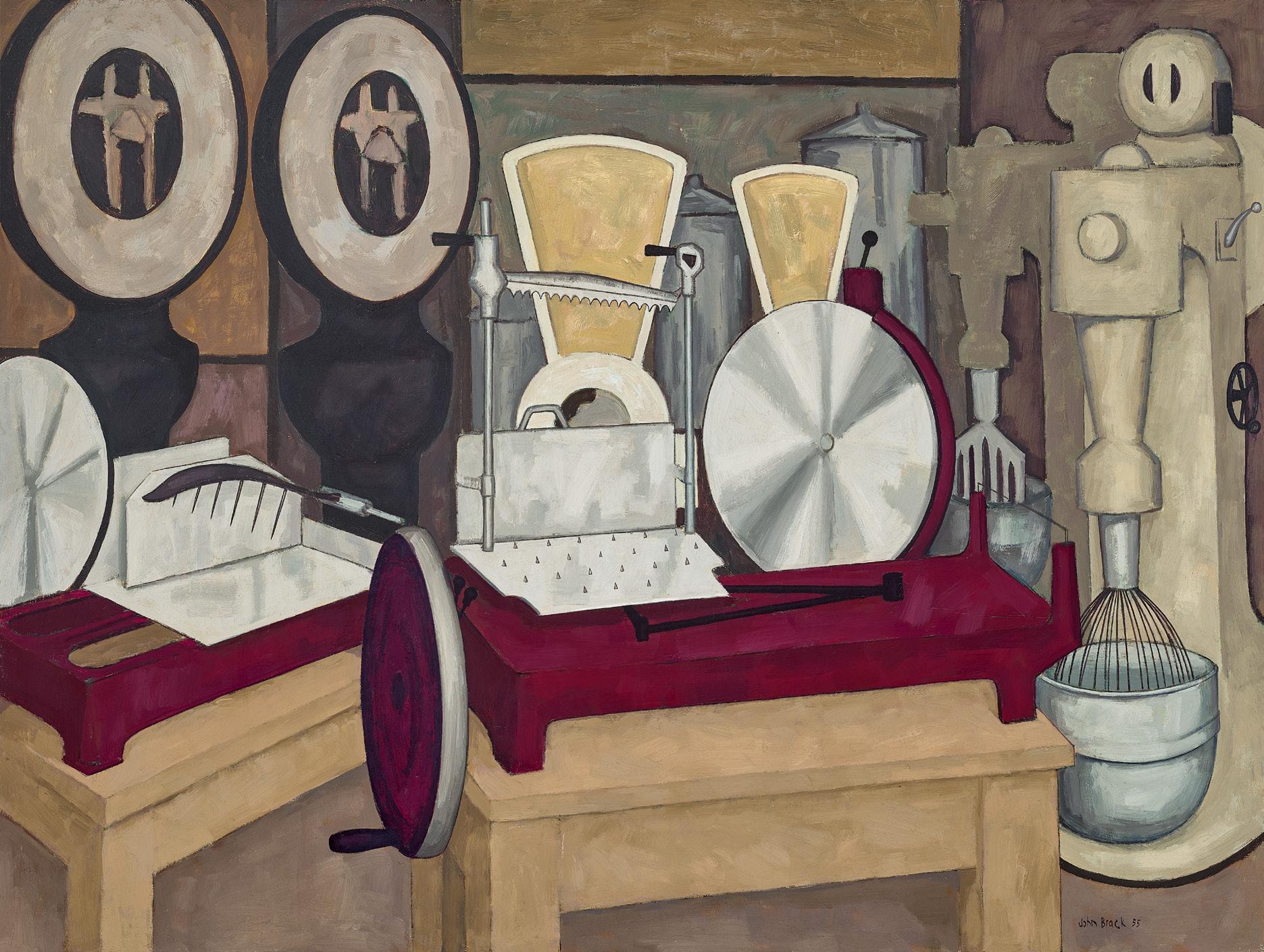

John Brack
(Study for The slicing machine shop), 1955 fibre-tipped pen and pencil, squared up in orange pencil 23.3 × 30.2 cm
National Gallery of Victoria, Melbourne © Helen Brack
As a painter of modern life, John Brack found subjects in his immediate surroundings, the suburbs and the city of Melbourne. His best-known paintings of 1950s Australia, such as The new house, 1953 (Art Gallery of New South Wales) and Collins St, 5pm, 1955 (National Gallery of Victoria), are full of acute observations of contemporary living, seemingly humorous and ironic – and from an early twenty-first century perspective, also nostalgic. Such images were primarily motivated however, by Brack’s intense interest in people and the human condition. His early resolution to produce an essentially humanist art that engaged directly with the present was supported by his reading of authors including Rainer Maria Rilke, who advised to ‘seek those [themes] which your own everyday life offers you’ and Henry James, who found inspiration for his stories in random events and snippets of overheard conversations.1 Determined to make art that was relevant to contemporary life, Brack explained, ‘I believe that if there ever is a real Australian Painting, it will be done from the truthful reflection of the life we see about us... I have always found people more interesting than landscape. There are still many things to say about people, in paint. A large number of them work in the town and sleep in the suburbs. Machinery and chromium plating are a part of their lives.’ 2
While Brack strove to create art which engaged with universal themes, his method of identifying subject matter that was close at hand inevitably resulted in images with a distinctly local flavour – recognisable to anyone who grew up in mid-twentieth century Australia, and especially in Melbourne – and unavoidable elements of autobiography appear throughout his oeuvre. The artist’s family inevitably features; his wife Helen was the model for The sewing machine, 1955, for example, and their daughters provided both the visual and thematic inspiration for paintings like The chase, 1959 (both Art Gallery of Ballarat). Similarly, The bar, 1954 (National Gallery of Victoria) – an homage of sorts, which transposes the elegant Parisian setting of Edouard Manet’s famous painting, A bar at the Folies-Bergère, 1882, to austere 1950s Melbourne – was based on Brack’s experience of the six o’clock swill in city pubs on his way home from work. Critics typically found his work funny and often characterised Brack’s approach as satirical, missing the deliberate irony and layers of allusion and symbolism that are embedded within his compositions. As the artist later said, his paintings were ‘part of a metaphorical system… intended to operate on numerous levels of meaning [and]… to have some reference to the complexity of life.’3
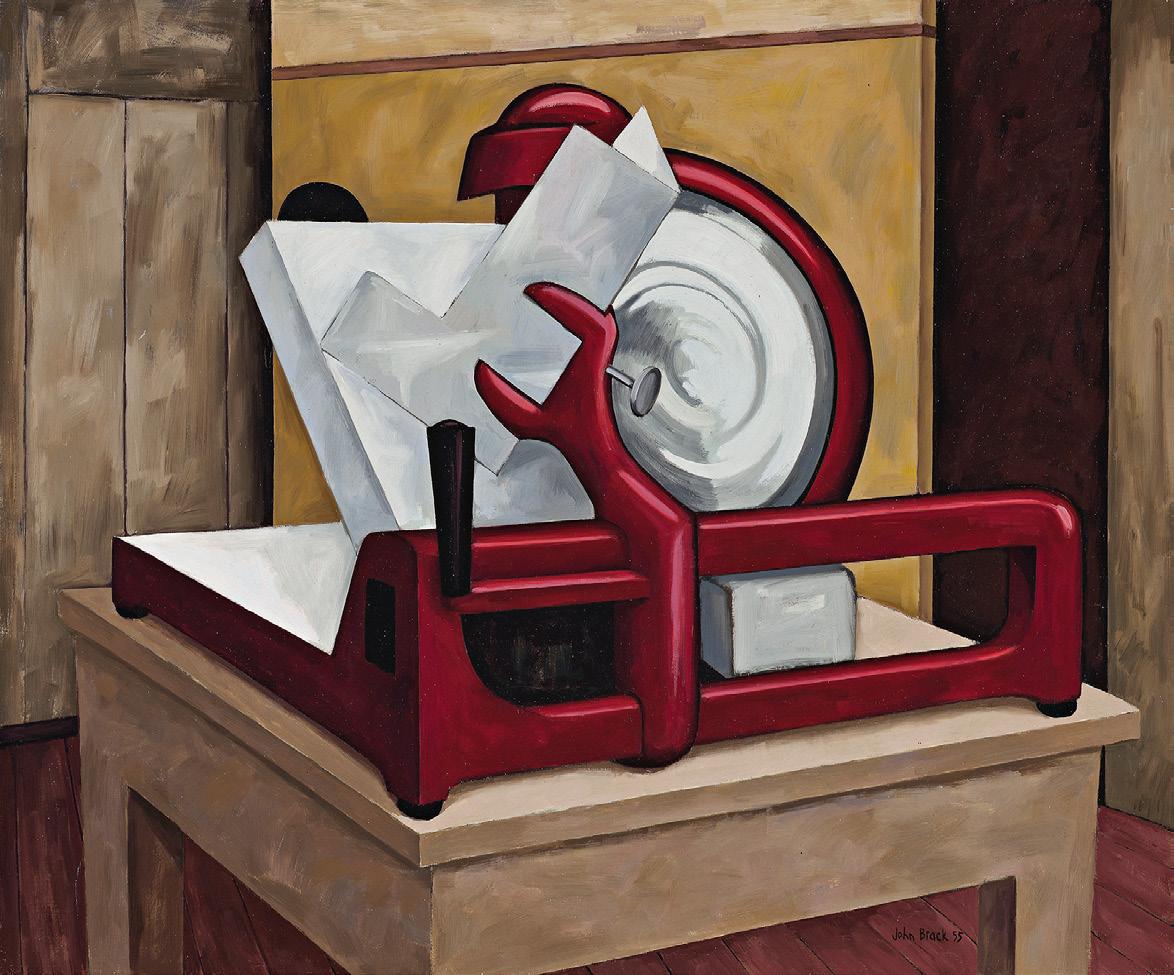
John Brack
Still life with slicing machine, 1955 oil on canvas
63.5 x 76.5 cm
Private collection © Helen Brack
sold Deutscher and Hackett, Melbourne, 13 June 2018, lot 4
Shop window displays provided inspiration for Brack throughout his career and indeed, the experience of seeing reproductions of paintings by Van Gogh in a Little Collins Street shopfront in the late 1930s was a motivating factor in his decision to pursue a career as a professional artist. He later recalled that this vision had a powerful, physical effect, it was ‘a sort of shuddering… overwhelmingly, totally unexpected moment.’4 The most concentrated series of shop window subjects was painted in the early 1960s and the windows which featured in paintings such as Still life with self portrait, 1963 (Art Gallery of South Australia) and The happy boy, 1964 (National Gallery of Australia) displayed surgical instruments, prosthetic limbs and other medical aids. Incorporating obvious associations with the human body, these objects enabled Brack to comment about life without depicting the figure. He often found his subjects walking the city streets and would record the details of what he saw in quick sketches that were later used as aides-memoire in the studio. Additional detail was sometimes provided by photographs taken by his friend Laurence Course, an art historian and keen photographer.
The slicing machine shop, 1955 was the first painting based on a shop window display and it depicts an arrangement of commercial kitchen equipment Brack had seen at the top of Bourke Street in Melbourne He recalled that he made a series of preliminary sketches on site as well as using photographs to record the details of the subject, paring them back in the final composition in the interest of clarity of design.5 Painted in a subdued palette of colours, gleaming meat slicers, measuring scales and giant mixers assume ominous, anthropomorphic qualities belying their inanimate status. Seen through Brack’s eyes, a familiar everyday scene is transformed into something disturbing and uncanny.6 Painted a year earlier, The block, 1954 (National Gallery of Victoria), shares a similar atmosphere of portent as the chopping block, cleaver, meat hooks and other accoutrements of the empty butcher shop assume a quietly unsettling character. In a lecture given at the Council of Adult Education in 1957 the artist explained something of his motivation: ‘I have said we must avoid cliché at all costs. That is one reason for dealing with subjects generally thought to be ‘inartistic’. But I have also suggested that we must come to terms

John Brack
Collins St, 5p.m., 1955
114.8 x 162.8 cm
National Gallery of Victoria, Melbourne © Helen Brack
with the machine, and perhaps this painting is a tentative move in that direction… [The slicing machine shop] is a still life which uses weighing machines, scales, etc instead of apples and bottles. The colour scheme is cold and sombre, simply because I thought of the machines as steely, hard and sharp. Impersonal objects with personal uses. Blades and handles. Is there a parallel in our lives?’ 7
The slicing machine shop was first exhibited in Brack’s solo show at Peter Bray Gallery, Melbourne in 1956, where it was one of two major paintings alongside Collins St., 5pm, 1955. The latter was acquired from the exhibition along with The car, 1955, by the National Gallery of Victoria and both works, frequently on display, have since developed iconic status. The exhibition was also well received in the press. Alan McCulloch wrote that Brack’s paintings and drawings were ‘distinguished for their elegant finish and their concise summations of character’8, while the unnamed Age art critic insightfully observed that ‘although [John Brack’s] subject matter is drawn from everyday life, it is transcribed in an austere formal style. Consequently, his symbols speak, not of the individual, but of humanity.’ 9 Both critics singled out The slicing
machine shop for comment, noting that in addition to reflecting the artist’s powers of observation it presented a semi-abstract design ‘without losing touch with the appearance of the subject.’ 10
An important example of Brack’s work from a key period in his career, it reflects his distinctive visual aesthetic – as well as the aesthetic of the times – and speaks to major themes that preoccupied his oeuvre.
1. See Grant, K., ‘Human Nature: The Art of John Brack’ in Grant, K., John Brack, National Gallery of Victoria, Melbourne, 2009, p. 92
2. Brack, J., ‘Brack on Brack’, Council of Adult Education, Discussion Group Art Notes, Melbourne, ref. no. A401, 1957, p. 2
3. John Brack interview, Australian Contemporary Art Archive, no. 1, Deakin University Media Production, 1980, transcript, p. 3
4. John Brack, cited in Grishin, S., The Art of John Brack, Oxford University Press, Melbourne, 1990, p. 7
5. Brack, 1957, op. cit., p. 5
6. Grishin, op. cit., p. 51
7. Brack, 1957, op. cit.
8. McCulloch, A., ‘Co-ordination and a satirist’, Herald, Melbourne, 21 March 1956
9. ‘Painter shows originality’, Age, Melbourne, 20 March 1956
10. ibid.
Kirsty Grant
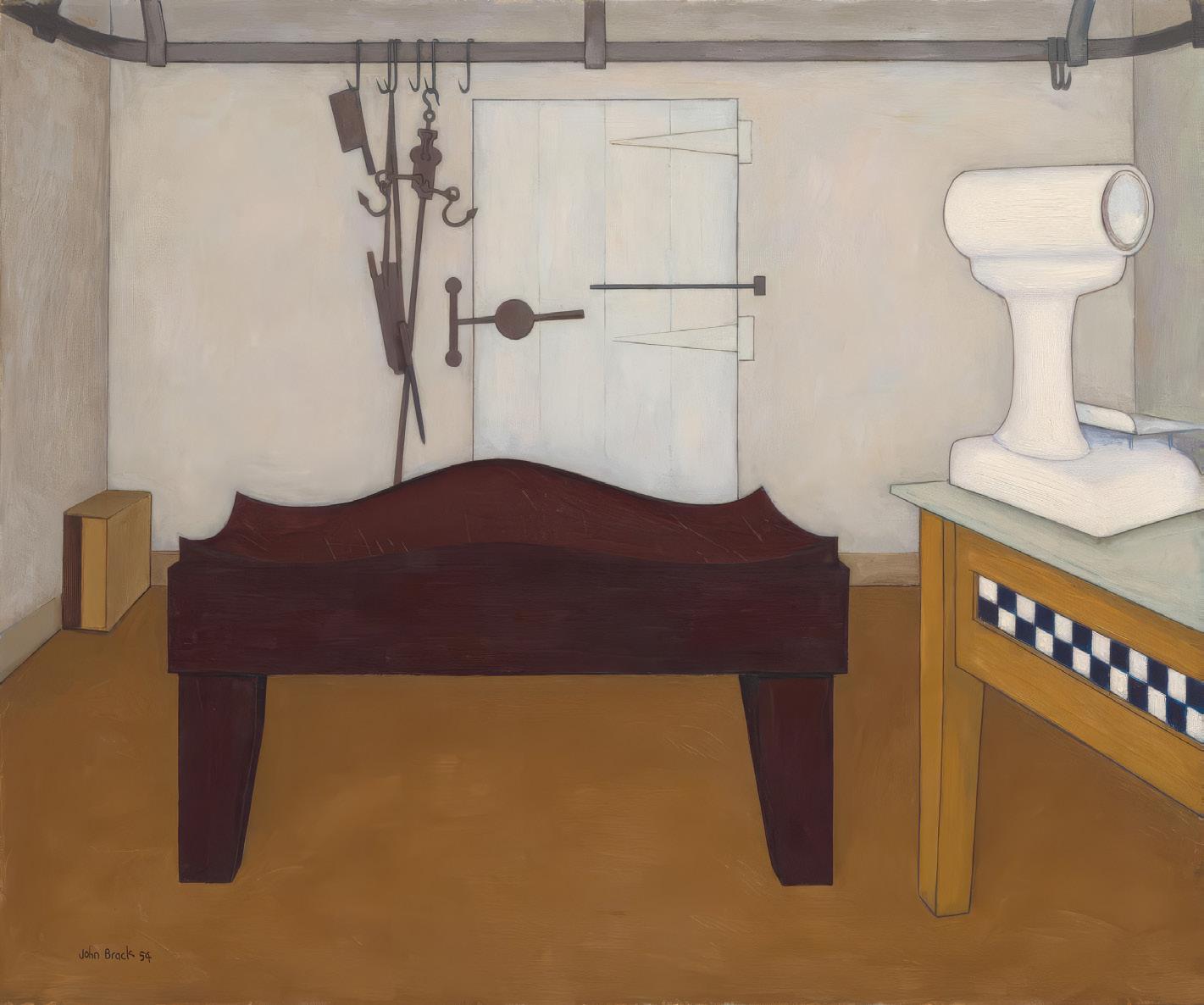
oil on composition board
61.0 x 136.0 cm
signed and dated lower left: Tucker Noli 52 dated and inscribed verso: BETRAYAL / 1952 dated verso: 1952
Estimate: $400,000 – 600,000
Provenance
Tolarno Galleries, Melbourne
Michael and Miriam Lasky, Melbourne, acquired from the above in 1985
William Mora Galleries, Melbourne Private collection, Melbourne, acquired from the above in 1999
Exhibited
Albert Tucker, Galleria ai Quattro Venti, Rome, 2 April – 2 May 1953
Mostra dei Pittori Australiani: Albert Tucker e Sidney Nolan, Associazione della Stampa Estera, Rome, 20 – 31 May 1954, cat. 1 (as ‘Tradimento’)
Albert Tucker, Bonython Art Gallery, Sydney, 28 October – 19 November 1969, cat. 93
Albert Tucker Paintings 1945 – 1960, Tolarno Galleries, Melbourne, 1982, cat. 15 (illus. in exhibition catalogue)
Albert Tucker: A Retrospective, National Gallery of Victoria, Melbourne, 21 June – 12 August 1990 (label attached verso)
A Link and a Trust: Albert Tucker and Sidney Nolan’s Rome Exhibition, Heide Museum of Modern Art, Melbourne, 18 November 2006 - 20 May 2007, cat. 1 (illus. in exhibition catalogue, n.p.)
Albert Tucker: Marking the Past, Albert & Barbara Tucker Gallery, Heide Museum of Modern Art, Melbourne, 29 February – 16 August 2020
Literature
Uhl, C., Albert Tucker, Lansdowne Press, Melbourne, 1969, cat. 8.3, pl. K, pp. 52, 56 (illus.), 98
Mollison, J. & Minchin, J., Albert Tucker: A Retrospective, National Gallery of Victoria, Melbourne, 1990, p. 101 (illus.)
Fry, G., Albert Tucker, Beagle Press, Sydney, 2005, pp. 98 (illus.), 124, 239 (illus.)

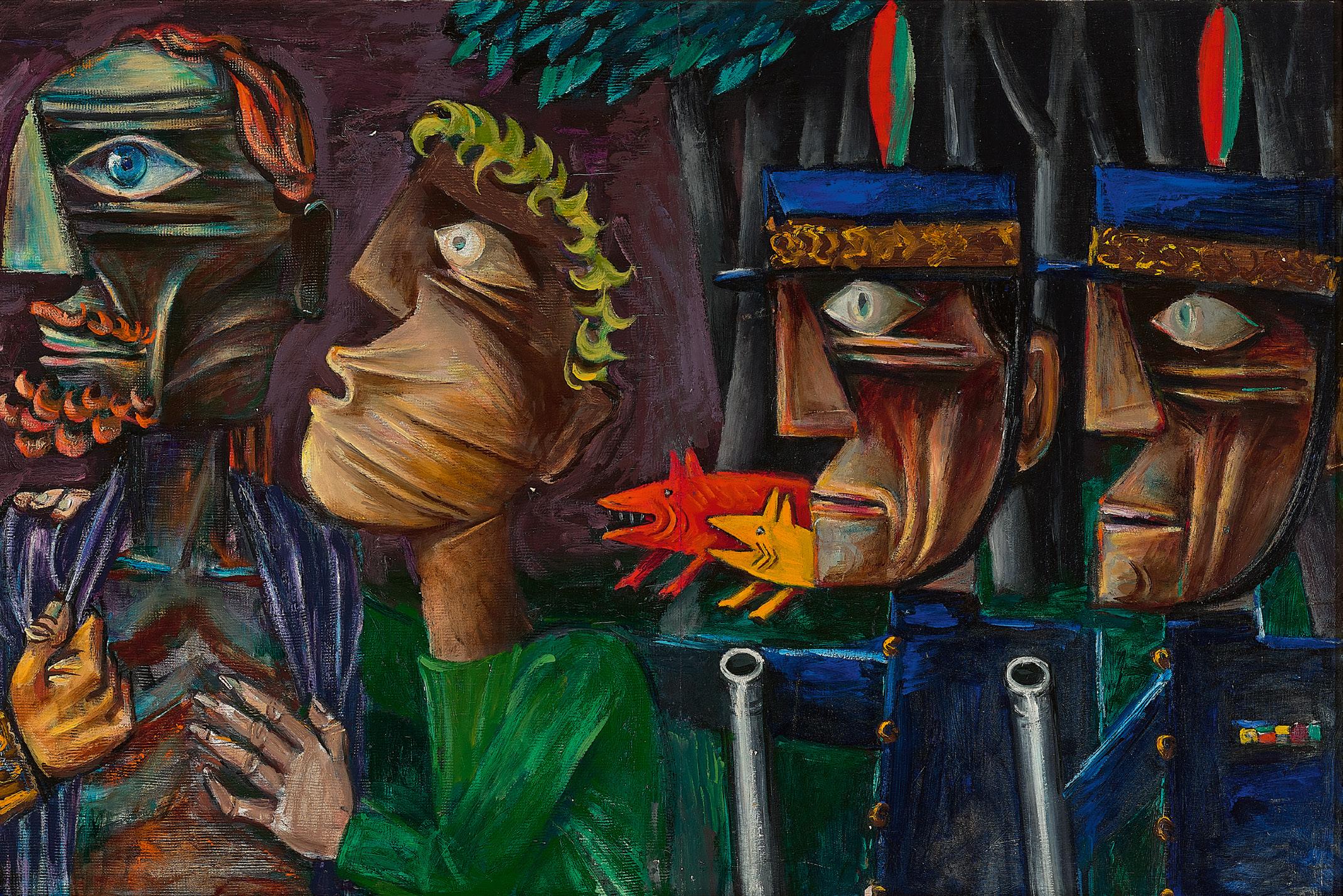
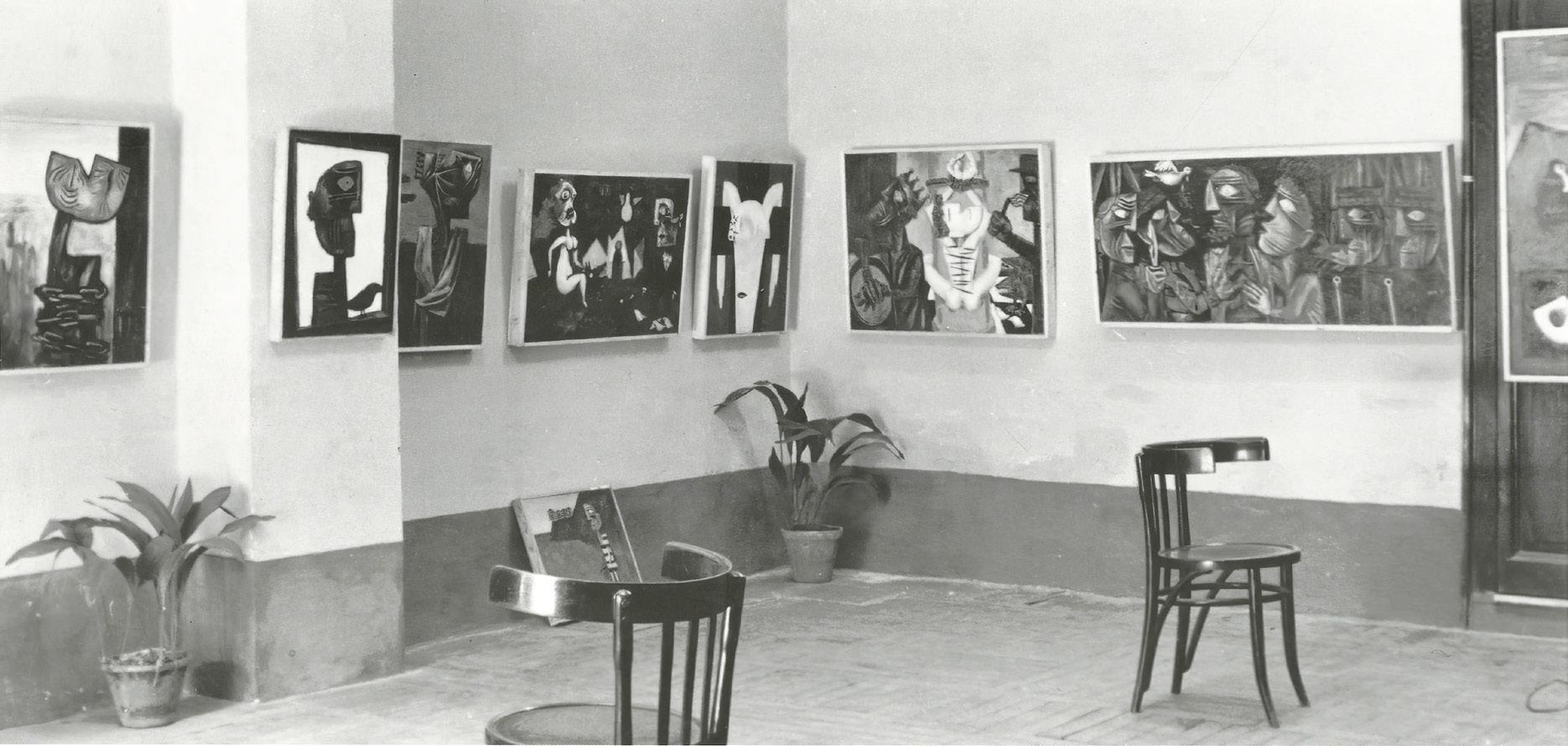
When Albert Tucker painted Betrayal in 1952, he had been living and working in Europe for four years and had only just settled in the seaside village of Noli, located halfway between Nice and Genoa on the Italian coast. He was to remain there for ten months.1 While in Noli, Tucker began to read the Bible2, perhaps as a way in which to further both his knowledge and understanding of the stories he had been absorbing through the works of the Renaissance masters as he travelled through Italy. The artist responded deeply to the themes of birth, death and resurrection that he encountered in these works, and to their often graphic depiction, later recognising their correlation to the horrors he had seen during his time as an artist illustrator in the plastic surgery ward at Heidelberg Military Hospital.3 As he observed:
‘…they [‘all the kinds of mangled things’ in the plastic surgery ward] gave me images that I’ve fed on all my life. They appeared all later on. For example, see this one here… I developed that in Italy: all the gashes on all the paintings of the Christian martyrs. San Sebastian. The Virgin with a thousand swords going through her. Or San Sebastian perforated with arrows. Grünewald’s Crucifixion, where you had Christ in a state of decomposition and simply decomposing on the cross, a horrific image with every wound, every gash.’4
Betrayal, 1952 was the first major painting Tucker created in Noli and his first Biblical subject.5 Judas’ betrayal of Jesus enabled the artist to tackle one of the central stories of Christian theology,
and in doing so, to return to the examination of human values and morality that had underpinned his earlier Images of Modern Evil from 1943 – 48. In Tucker’s ambitiously modern version of the Kiss of Judas we see Christ and Judas in the Garden of Gethsemane at the moment of the betrayal, as Judas leans in to kiss Jesus, and thus reveal his identity. Both the central figures and the Roman guards that surround them, appear almost frieze-like, pushed to the front of the composition in a compression of space that creates a sense of danger and impending doom. The assembled group appear in profile, their craggy landscape-scarred faces and the glimpse of dark, abstracted background behind the figures providing a sense of the images yet to come – Tucker’s celebrated Antipodean Heads The bright blues, reds and greens of the painting were unusual in the artist’s work at the time but similarly reappear later, in his images of the Australian bush after his return to Australia in 1960. Given that the long and troubling dialogue around John and Sunday Reed’s adoption of Tucker and Joy Hester’s son Sweeney was only resolved in the early 1950s6, the theme of betrayal was no doubt also one that the artist felt personally. Across his career, Tucker was open to drawing upon the wellspring of personal feelings in his work, and of using his practice as a means of ‘unloading the demons’:
‘…every painting you develop a kind of personal library, an iconography of the events in one’s personal life, and these events would invariably come from traumatic experiences which one
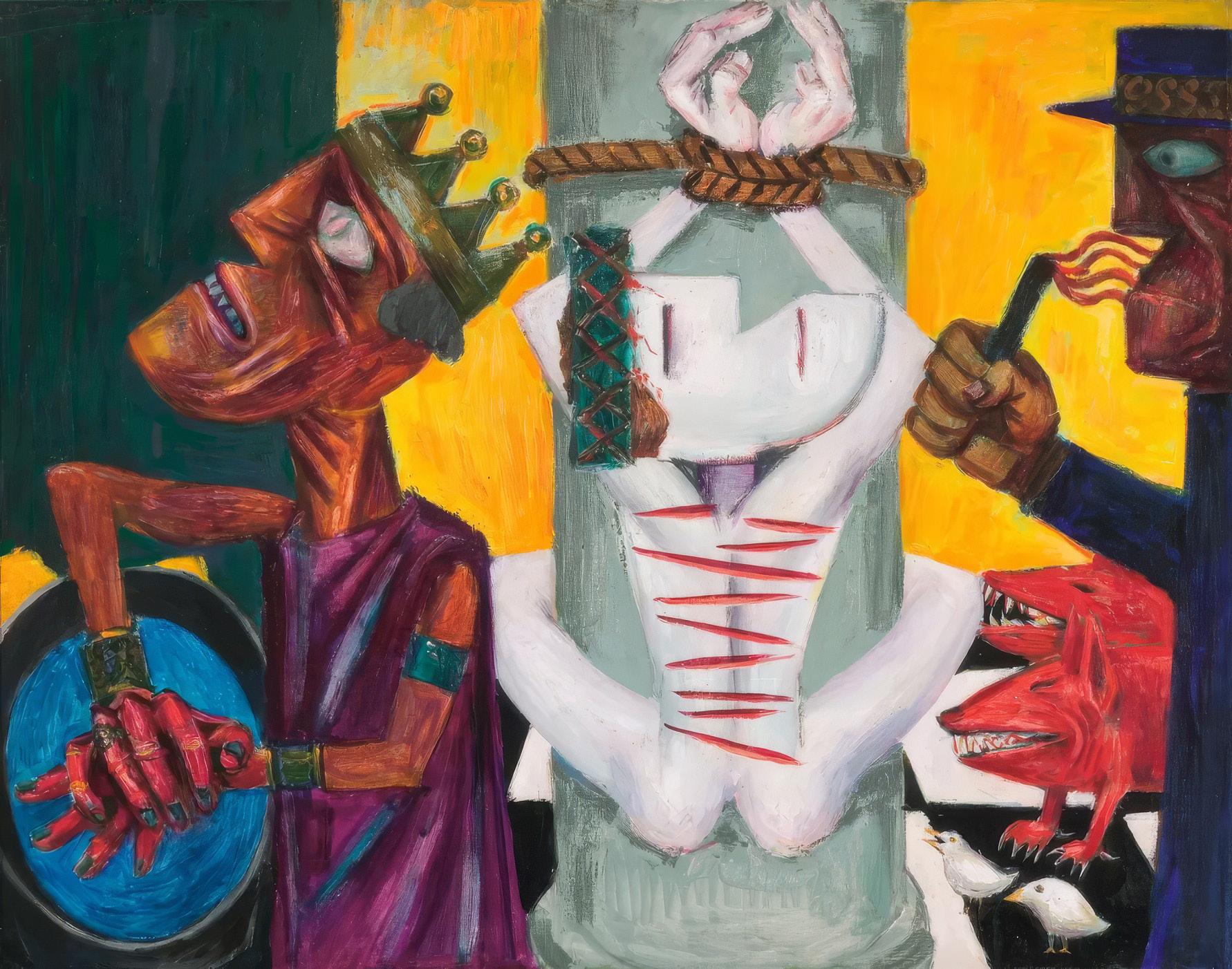
Albert Tucker Pilate, 1952 oil on canvas
73.2 x 93.6 cm
Art Gallery of South Australia, Adelaide © Albert & Barbara Tucker Foundation. Courtesy of Smith & Singer Fine Art
had had, but which, in going in the course of life there, these early traumas would be activated by, or triggered by, some element there which corresponded to it, and then the whole thing would come alive and feed the present experience. And so this was the thing I started using creatively as I became more and more aware of it…’6
Tucker exhibited Betrayal twice while in Europe, firstly in 1953, and then in Rome in 1954, alongside the work of his close friend and artistic rival, Sidney Nolan. After working somewhat in isolation as the Australian expatriate artist travelled through Europe, this exhibition served to introduce his work to European audiences, and importantly, to align Tucker’s practice with the broader interests of international modernism. The exhibition also appears to have been favourably received, with one Italian critic noting, ‘clear evidence of a cartoonist style in the Fortunato Depero fashion and a powerful sense of the monstrous in the style of Picasso, although a much more readable Picasso.’ 7 After visiting the exhibition, celebrated Italian artist Giorgio de Chirico – whose work Tucker greatly admired
– invited him to attend his ‘Sunday Soirées’, whose carefully selected guest list included aristocracy and leading philosophers of the time.8 This positive development was closely followed by Tucker’s representation at the Venice Biennale in 1956, and the acquisition of his work by the Museum of Modern Art, New York in 1958 (see lot 12)
1. Burke, J., Australian Gothic: A Life of Albert Tucker, Knopf, Milsons Point, 2002, p. 325 – 26
2. ibid., p. 328
3. Transcript of Robin Hughes interview with Albert Tucker, 14 February 1994, Australian Biography: Albert Tucker, National Film and Sound Archive, see: https://www.nfsa.gov.au/ collection/curated/asset/99512-australian-biography-albert-tucker, (accessed 21 July 2025)
4. ibid.
5. Burke, op. cit.
6. Albert Tucker’s first wife, artist Joy Hester, left Tucker for artist and poet, Gray Smith, in 1947. When Tucker travelled abroad in October of that year, he left their young son Sweeney in the care of John and Sunday Reed, who later adopted him.
7. Albert Tucker: Reading the Past, VCE Art: Unit 4, Outcome 1, p. 8, Heide Learning, Heide Museum of Modern Art, Melbourne, 29 February 2020 – 14 March 2021, see: https://wp.heide.com.au/app/uploads/2022/10/920.AlbertTucker_MarkingThePast_ VCEArtResource.pdf (accessed 22 July 2025)
8. Hambur, M., Albert Tucker: The Modern Metaphysical, Heide Museum of Modern Art, Melbourne, 2022, see: https://wp.heide.com.au/app/uploads/2023/05/1034.AlbertTucker_Modern-Metaphysical_Tucker-Catalogue_v02a.pdf (accessed 22 July 2025)
Kelly Gellatly
Property of The Museum of Modern Art (MoMA), New York, sold to benefit its acquisitions program
Lunar landscape, 1957
synthetic polymer paint on composition board
96.0 x 131.0 cm
signed and dated lower right: Tucker 1957
Estimate: $60,000 – 80,000
Provenance
Poindexter Gallery, New York
The Museum of Modern Art, New York, acquired from the above in April 1958 (label attached verso)
Exhibited
Paintings - Albert Tucker, Imperial Institute, London, 11 April – 8 May 1957, cat. 26
Recent Acquisitions – Painting and Sculpture, The Museum of Modern Art, New York, USA, 30 January – 19 April 1959
Albert Tucker: A Retrospective, National Gallery of Victoria, Melbourne, 21 June – 12 August 1990 (label attached verso)
Literature
Albert Tucker letter to Sidney Nolan, 26 April 1958, in McCaughey, P. (ed.), Bert & Ned: The Correspondence of Albert Tucker and Sidney Nolan, The Miegunyah Press, Melbourne, 2006, pp. 192, 193 (illus.)
Recent Acquisitions checklist with notes, The Museum of Modern Art, New York, 1959, pp. 5 – 6
Feldman, R., ‘Australian artist paints with cement’, The Australian Women’s Weekly, Sydney, 9 September 1959, p. 11
Uhl, C., Albert Tucker, Lansdowne Press, Melbourne, 1969, cat. 10.15, p. 100
Mollison, J., & Minchin, J., Albert Tucker: A Retrospective, National Gallery of Victoria, Melbourne, 1990, pp. 53 (illus.), 115
Albert Tucker interviewed by Robin Hughes for Australian Biography: Albert Tucker, Film Australia, 14 February 1994
Fry, G., Albert Tucker, The Beagle Press, Sydney, 2005, pp. 133 (illus.), 156
Andrews, T., Albert Tucker’s Grotesques, Heide Museum of Modern Art, Melbourne, 2024, p. 6
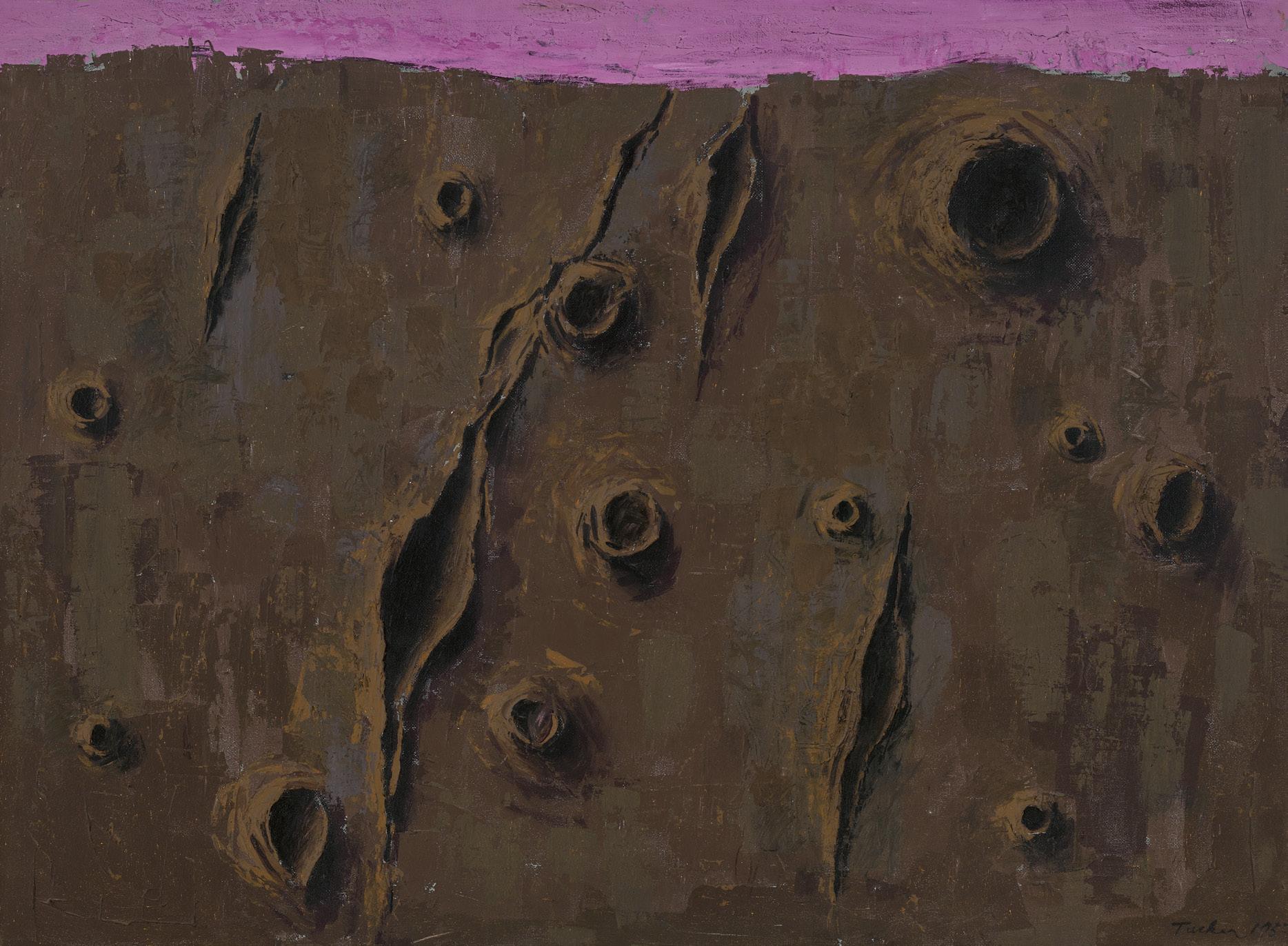
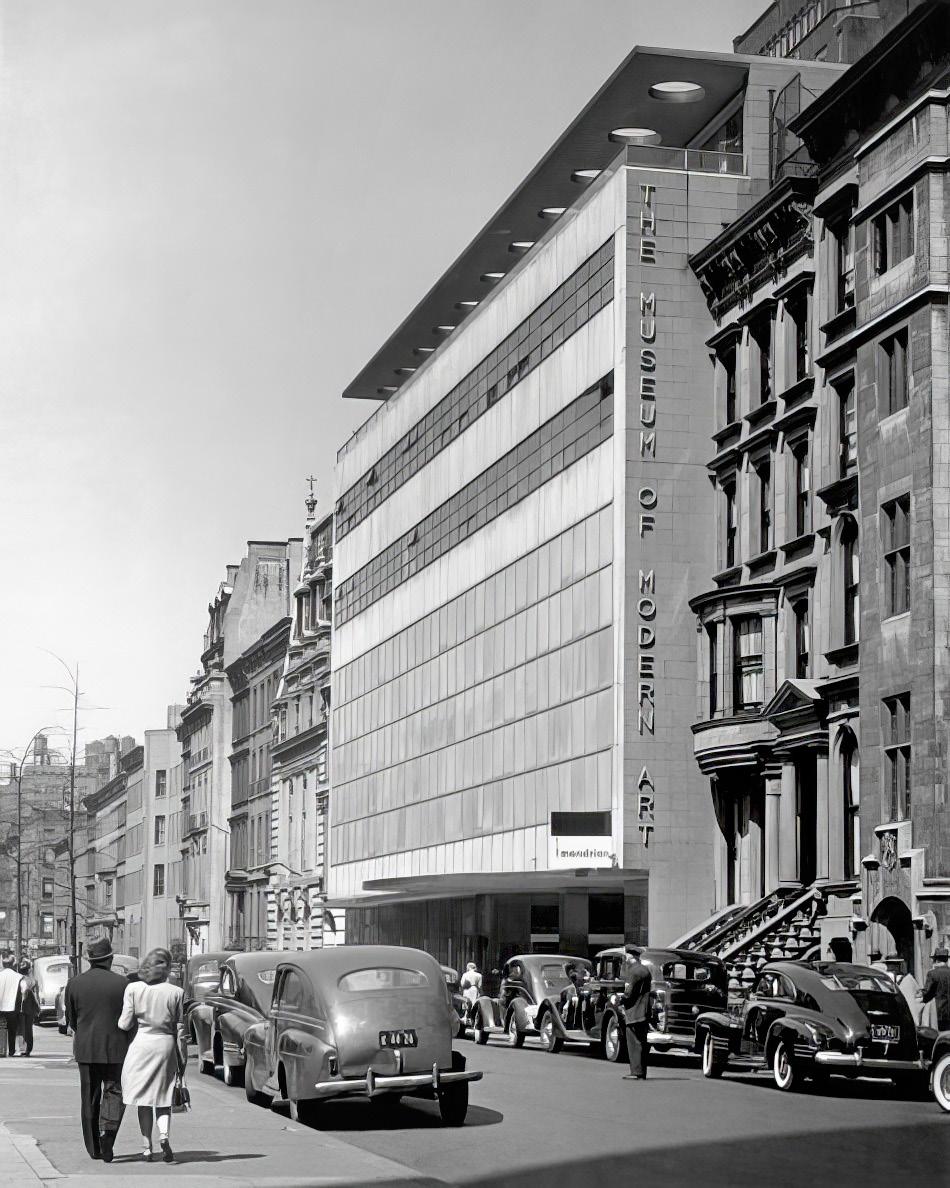
The Museum of Modern Art, New York City, 1950s photographer: George Marks
Albert Tucker left Australia for London in 1947, fleeing the trauma and hurt of his private life after his wife, artist Joy Hester, left him and their young son Sweeney for fellow artist Gray Smith. In early 1948, he settled in Paris, immersing himself in the city, its culture and its artistic riches. Living in an apartment behind the Paris Opera on the Right Bank that had once been occupied by Edvard Münch1, it was in Paris that Tucker experienced firsthand the work of the European modernists that he had studied in reproduction in Melbourne.
In 1948 Tucker travelled to Italy, where he responded deeply to the themes of birth, death and resurrection that he saw in the work of the Renaissance masters he encountered there. The depictions of extreme pain and anguish that fills many of these works no doubt resonated with his own experiences, and accordingly, he described the process of making the encrusted surfaces of his paintings of the following decade as ‘unloading the demons.’ 2 Tucker exhibited in Rome with his close friend and artistic rival Sidney Nolan in 1954.3 This exhibition served to introduce the work of both artists to European audiences, and importantly, align their individual practices with the broader interests of international modernism.
While together in Rome, Nolan shared his recent photographs of drought-affected Queensland with his friend. Inspired in part by
the horror depicted in these images (such as the contorted forms of dead horses and the carcasses of cows hanging from trees), Tucker returned to Australian themes, developing a new and enduring motif – the craggy profile of his Antipodean Heads. Of the landscape, yet deeply affected by it, the faces of these outback ‘heroes’ are rough, and battle scarred, resilient and enduring. After being introduced to the possibilities of polyvinyl acetate (PVA) by Italian artist Alberto Burri, Tucker began to build up the surfaces of these works, creating pitted landscapes and cratered forms that also resemble the ‘wounds and gashes’4 of the early Italian religious painting that so affected him. This is achieved to powerful effect in Lunar Landscape, 1957, with its otherworldly purple sky providing a startling contrast to the almost violent lacerations that punctuate the land’s dark, pock-marked surface.
Tucker and his Californian girlfriend, Mary Dickson, left Italy for London in October 1956, settling in a large Victorian apartment not far from Paddington Station.5 Tucker was convinced that London, not the continent, was the place to make his reputation, and Lunar Landscape was included in the artist’s ‘first comprehensive show’ at the Imperial Institute, South Kensington in April 1957. However, Tucker’s acceptance as a major proponent of international modernism was cemented elsewhere, in 1958, when Lunar Landscape was acquired for the collection of the Museum of Modern Art by its director Alfred J. Barr and included in the Museum’s Recent Acquisitions exhibition of 1959 alongside artists such as Adolph Gottlieb, Jasper Johns and Antoni Tàpies. This was a game-changer for the struggling artist, who recalled:
‘I saw the Museum of Modern Art [and] was delighted. I saw Nolan. We went up one day there to ... go to the Museum and they had a big sign up saying ‘New acquisitions of the past year’… And Nolan said, ‘Well let’s go in and go and see what’s there’, and the first painting I saw [when] I went through the door… was one half of this painting of mine [Lunar Landscape] on the wall… And Nolan said, ‘Let’s go up

and have a cup of coffee’ to their restaurant on the third floor, which we did. So we went around, got into the elevator and… another man got in. A tall, rather grey spare man got into the elevator with us and Nolan looked at him and said… ‘Oh, oh hello Mr. Barr, how are you?’ And Mr Barr looks, ‘Oh hello, hello Mr. Nolan, how are you?’ and so on. And he said, ‘Did you see... Mr. Nolan, that we have a painting of one of your compatriots just outside on the wall.’ So Nolan then... he just said, ‘Oh well, here he is’… And there I was. And so Barr was quite delighted… he came up and he had a cup of coffee with us. We talked for half an hour. There I was, right on the top, on that level… in a flash…’6
This serendipitous acquisition by MoMA was greatly aided by Dickson who was a masterful advocate of Tucker’s work. In April 1958, after nine years together, Dickson returned to the United States, taking some of Tucker’s paintings with her and placing them at Poindexter Gallery, New York. It was here, in the Gallery’s stockroom, that Barr saw Lunar Landscape and purchased it for the Museum.7 As he said: ‘I saw this piece of insistent crudeness and recognised a master illusionist at work... [It] put me immediately in mind of the art brut school in France where painters consciously defied good taste and restraint.’8
After her homecoming, Mary broke off the relationship, and Tucker, distraught, attempted to follow her, but was unable to secure an American visa because of his limited finances (he needed to be able to demonstrate that he had enough money to buy a return fare and to support himself while there). Undeterred, he decided to go to Canada instead, so that he could earn some money and then travel down to New York to obtain a visa. To his utter surprise, the
Albert Tucker
Parrots in Landscape, 1961
synthetic polymer paint on composition board
60.5 x 81.0 cm
Heide Museum of Modern Art, Melbourne © Albert & Barbara Tucker Foundation. Courtesy of Smith & Singer Fine Art.
artist received a telegram while on the boat to Montreal, informing him that he had just won The Women’s Weekly Art Prize9, then the richest art prize in the Commonwealth. With his greatly changed circumstances, Tucker immediately obtained a two-year Visa:
‘So I floated out of the [Consulate]... I always have that feeling of floating... when I really achieve something or escape from something. You feel yourself rise in the air. I’m sure it was an out of the body experience. I’m sure that my inner body there lifts up two or three feet into the air and I just float out and so I’ve floated back to the YMCA, packed up everything, went down to the station, worked out the train times and hopped on a train headed for New York.’ 10
Albert Tucker continues to be represented in the MoMA collection, with a significant work, Explorers, Burke and Wills, 1960.
1. Transcript of Robin Hughes interview with Albert Tucker, 14 February 1994, Australian Biography: Albert Tucker, National Film and Sound Archive at https://www.nfsa.gov.au/ collection/curated/asset/99512-australian-biography-albert-tucker (accessed 12 May 2025)
2. Burchill, L. B., Albert Tucker: Marking the Past, Heide Museum of Modern Art, 29 February – 16 August 2020 at https://wp.heide.com.au/app/uploads/2022/09/882.2020_ MarkingThePast.pdf (accessed 12 May 2025)
3. Mostra dei Pittori Australiani: Albert Tucker e Sidney Nolan, Associazione della Stampa Estera, Via della Mercede, 54, Roma, 20 – 31 May 1954.
4. Transcript of James Gleeson interview with Albert Tucker, 2 May 1979, James Gleeson Oral History Collection, National Gallery of Australia at https://nga.gov.au/media/dd/ documents/tucker.pdf (accessed 12 May 2025)
5. Burke, J., Australian Gothic: A Life of Albert Tucker, Knopf, Milsons Point, 2002, p. 345
6. Albert Tucker cited in Hughes, op. cit.
7. ibid.
8. Feldman, R., The Australian Women’s Weekly, 9 September 1959, p. 11, cited in Burke, op. cit., p. 351
9. Albert Tucker cited in Hughes, op. cit.
10. ibid.
Kelly Gellatly
White bridge, c.1949 – 50
oil and tempera on composition board
83.5 x 121.5 cm
signed lower right: Arthur Boyd numbered on label verso: 20
Estimate: $350,000 – 450,000
Provenance
Private collection
Leonard Joel, Melbourne, 16 April 1986, lot 61 Holmes à Court Collection, Perth Christies, Melbourne, 29 April 1996, lot 34 (as ‘Early Murrumbeena’) Private collection, Perth
Exhibited
Arthur Boyd, David Jones’ Art Gallery, Sydney, 4 – 16 September 1950, cat. 20 European and Australian Paintings from the Robert Holmes à Court Collection, S. H. Ervin, Museum and Art Gallery, Sydney, 28 April – 4 June 1988, cat. 35 (as ‘Early Murrumbeena, 1949 – 51’)
Arthur Boyd: Brides, Myths and Landscapes, Savill Galleries, Sydney, 23 March – 29 April 1995, cat. 1 (illus. in exhibition catalogue, as ‘Murrumbeena’)
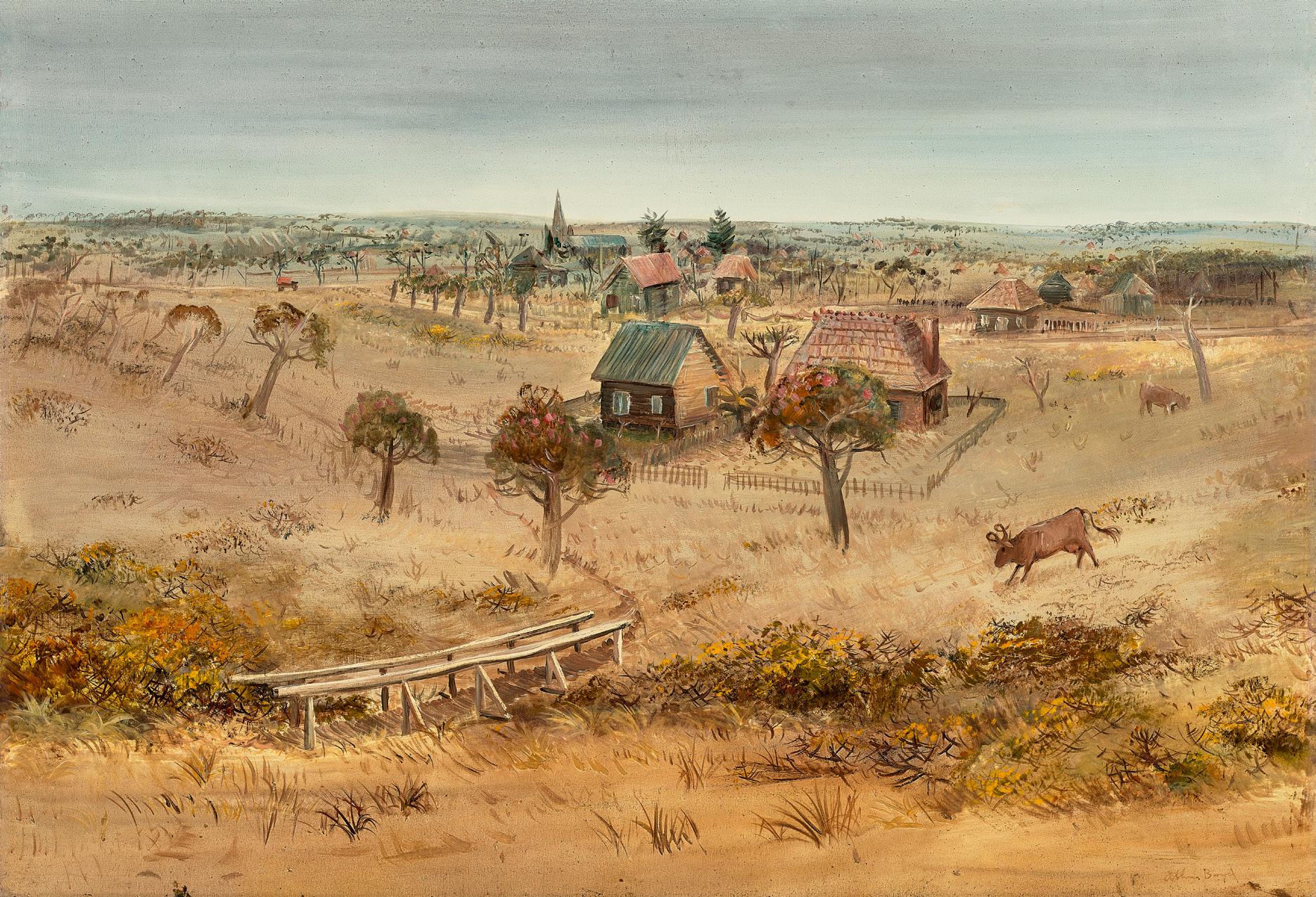

Arthur Boyd’s White bridge, c.1949 – 50 is a recent rediscovery, a painting which was included in his solo exhibition at David Jones Art Gallery, Sydney, in September 1950. This was a large showing of forty-four paintings, a mini survey which charted Boyd’s progression from 1945, near the time that Albert Tucker first recommended Boyd read Max Doerner’s treatise The Materials of the Artists and Their Use in Painting (1934). Inspired by its contents, Boyd had undertaken an in-depth study of the techniques used by the Old Masters, the results of which ranged from populous Old Testament paintings from 1945, to shimmering, wheat-yellow visions of the Wimmera painted in 1950. For more than four decades, White bridge was mistitled Early Murrumbeena, alluding to the semi-rural suburb of Melbourne where Boyd had grown up at the overgrown family compound ‘Open Country’. However, this title does not appear in any of Boyd’s exhibition catalogues nor in Franz Phillip’s near-comprehensive catalogue raisonné compiled in 1967.1
It is more likely that the location is Bentleigh East, two kilometres south of Murrumbeena, with the single-spired church in the background nominally identified as the original St John’s Anglican
Church, demolished in the early 1960s. At that time, Bentleigh East was a scatter of cottages set amidst market gardens and orchards, with a number of these holding single cows or sheep on their properties. White bridge thus captures a scene that would soon be obliterated by the post-war boom in suburban living when most of these allotments were sold and subdivided for housing. It is also an intriguing transitional work linking Boyd’s near-expressionist paintings from 1948 of the tangled scrub around Berwick to the newer paintings from the Wimmera. Using Doerner’s book as a guide, Boyd began his grand cycle of religious paintings, inspired in part by memories of his grandmother reading from her illustrated Bible, even though he later stated, ‘I can’t remember ever having a belief in God. I didn’t think it was necessary.’ 2 A number of these religious works were shown alongside White bridge at David Jones Art Gallery, including the now iconic The king (The deluge), 1944 (National Gallery of Australia) and The mockers, 1945 (Art Gallery of New South Wales). Doerner’s advice also led Boyd to experiment with the centuries-old technique of egg tempera, which ‘gave a new translucency to his paintings of the late 1940s,’3 including landscapes painted in nearby Moorabbin, Oakleigh and Bentleigh.
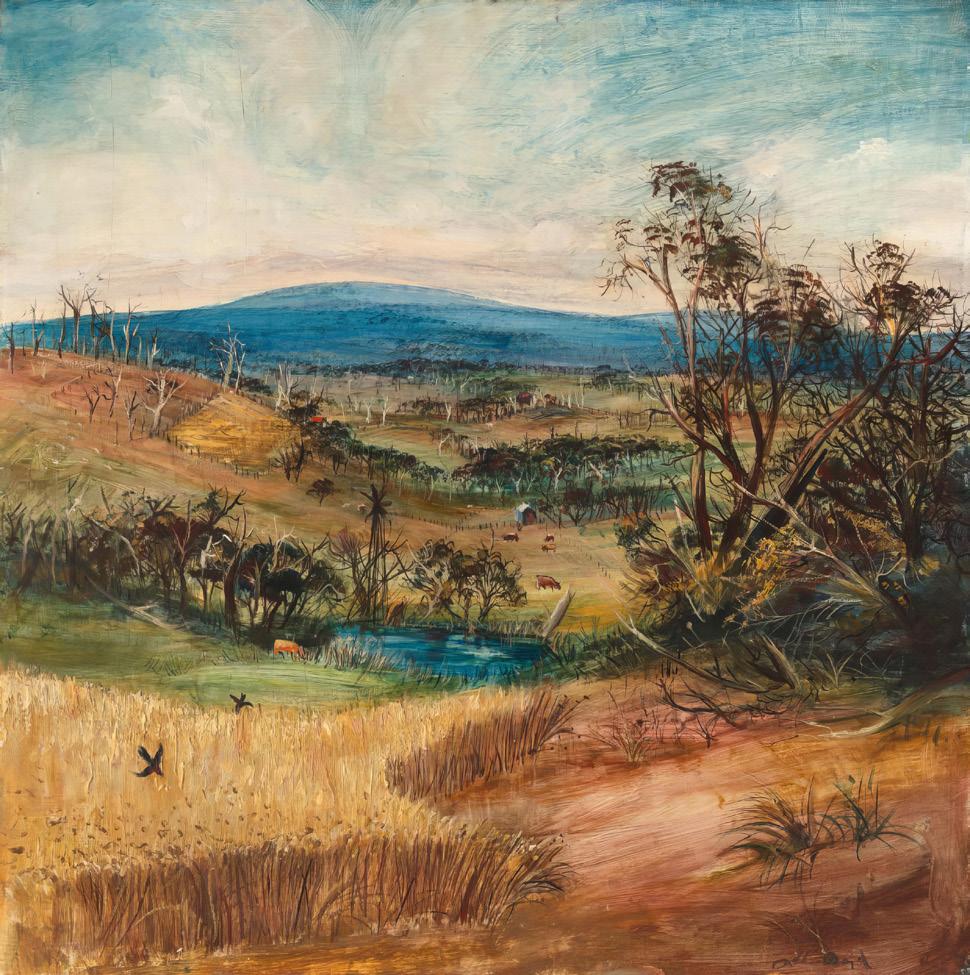
Arthur Boyd
The wheatfield, 1948 oil on composition board 70.4 x 70.5 cm
National Gallery of Victoria, Melbourne © Arthur Boyd/Copyright Agency 2025
In the autumn of 1950, Betty Bennett, a friend of Boyd’s wife Yvonne, invited the family to stay at her house in Horsham. This was a catalyst moment for Boyd and an inspection of some of the resultant Wimmera paintings suggest that White bridge is closely related to this time. The sky, for example, is composed of horizonal bands of dilute glaze, each successive layer building on the pigments beneath to create coloured fields of great depth. This application was enhanced by Boyd’s increasing use of a Swedish-manufactured Masonite which had a smoother surface than others available in Melbourne at that time. He used the same technique for the skies of at least two of these paintings from 1950: Broken Falls, The Grampians, 1950 (National Gallery of Australia), and Cyanide tanks, Bendigo, c.1952 (Art Gallery of South Australia), both of which were also included in the David Jones show. The bridge of the title is in the foreground, comprised of creamy-white strokes applied with a fluid brush, its jauntiness at odds with the near-hidden creek that it traverses, a darkened gully that exudes a somewhat haunted air. The brown cow is a personal symbol whose curlicue horns link it to Boyd’s imaginary hybrid, the ‘Ramox’, which first appeared in paintings from 1944.
Conversely, the inclusion of the church is somewhat of a surprise as such buildings rarely appear in Boyd’s paintings, even the religious cycle, with a sole exception being the overgrown chapel seen to the left in The mining town, c.1946 (National Gallery of Australia). All these indicators point to a probable date of 1949 to early 1950 for White bridge, before the artist drove up to the Wimmera.
1. Philipp, F., Arthur Boyd, Thames and Hudson, Melbourne, 1967
2. Arthur Boyd, Interview with Peter Fuller, Modern painters, vol. 3, no. 2, Summer 1990, p. 22, cited in Pearce, B., Arthur Boyd retrospective, Beagle Press, Sydney, 1993, p. 17
3. Pearce, ibid., p. 19 Andrew Gaynor
1982)
Burnt hillside, 1968 – 69
oil on canvas
91.5 x 106.5 cm
signed lower right: Fred Williams.
Estimate: $400,000 – 600,000
Provenance
Skinner Galleries, Perth
Private collection, Perth, acquired from the above in 1970
Melbourne Art Exchange, Melbourne
Private collection, Melbourne, acquired from the above in May 1984
Exhibited
Fred Williams: Perth Festival Exhibition, Skinner Galleries, Perth, 23 February – 16 March 1970, cat. 15
We are grateful to Lyn Williams for her assistance with this catalogue entry.


Fred Williams
Burnt landscape, Upwey no 1, 1968 gouache on ivory Arches paper 56.8 x 76.6 cm
Art Gallery of New South Wales, Sydney © Estate of Fred Williams/Copyright Agency 2025
1968 was an annus mirabilis for the painter Fred Williams, already recognised as Australia’s leading landscapist.1 Unhampered by the pressure of creating work for an annual exhibition, his painting practice flourished under an extensive campaign of outdoor sketching in this, the artist’s last year of living rurally, at Upwey in the Dandenong Ranges where he had lived since 1963. Stimulated by a variety of motifs discovered during excursions into the landscape, as far as the Mornington Peninsula and Tibooburra in outback New South Wales, Williams created during this year several distinct series of paintings. Working rapidly and methodically in making complete sets of paintings, gouaches, drawings and prints of each theme, Williams’ landscape works of this time were the climactic expressions of current events interwoven with formal investigations that had underpinned the works of the early 1960s. Working surrounded by older paintings in the studio allowed the artist to refer back to earlier approaches and solutions to painting the landscape, creating a fertile and interconnected body of work at this time. In June 1968, Williams wrote in his diary, ‘I have been painting fulltime now for five years, and the sixth promises to be the best.’ 2
The grand and chromatically vibrant Burnt hillside, 1968 presents a view of the landscape of the Dandenong Hills around Upper Ferntree Gully and Upwey, stilled and denuded by two successive bushfires that had threatened the artist’s home in early 1968. Topographically, the area is characterised by steep hills rising abruptly from the
surrounding plains; their northern and western faces, heavily timbered with combustible native trees, are exposed to strong, dry winds during summer. The wildfires sweeping through the region in February and March 1968 were fuelled by high summer temperatures and a prolonged drought, leaving acres of bushland incinerated and dozens of homes lost. Fred Williams’ direct and indelible experience of the advancing fire front and its path through his beloved landscape led to the feverish creation of his most emotive and atmospheric paintings and a new perception of the Australian landscape.
Throughout 1968 and 1969, the altering effects of the fires captivated Williams. He painted freely to record the events in a storyboard fashion, advancing towards the hopeful green shoots of regeneration. First introduced in Williams’ early Upwey paintings in 1963, a simplified composition of a high horizon, a narrow band of sky running across the top of a featureless treed slope, reappears in Burnt hillside and its sister works from the series. Painting en plein air with friends Hal Hattam, Ian Armstrong and Harry Rosengrave, Williams noticed how the landscape had suddenly opened up, the absence of ferny undergrowth on the steep hillside now providing clear sightlines through the tree trunks and over the horizon. Burnt hillside ’s refined and uninterrupted view is painted from a distance, without any distinct pictorial focus. The many trunks of still-standing trees are delicately placed atop a thinly washed, matte orange ground of horizontal strokes, the
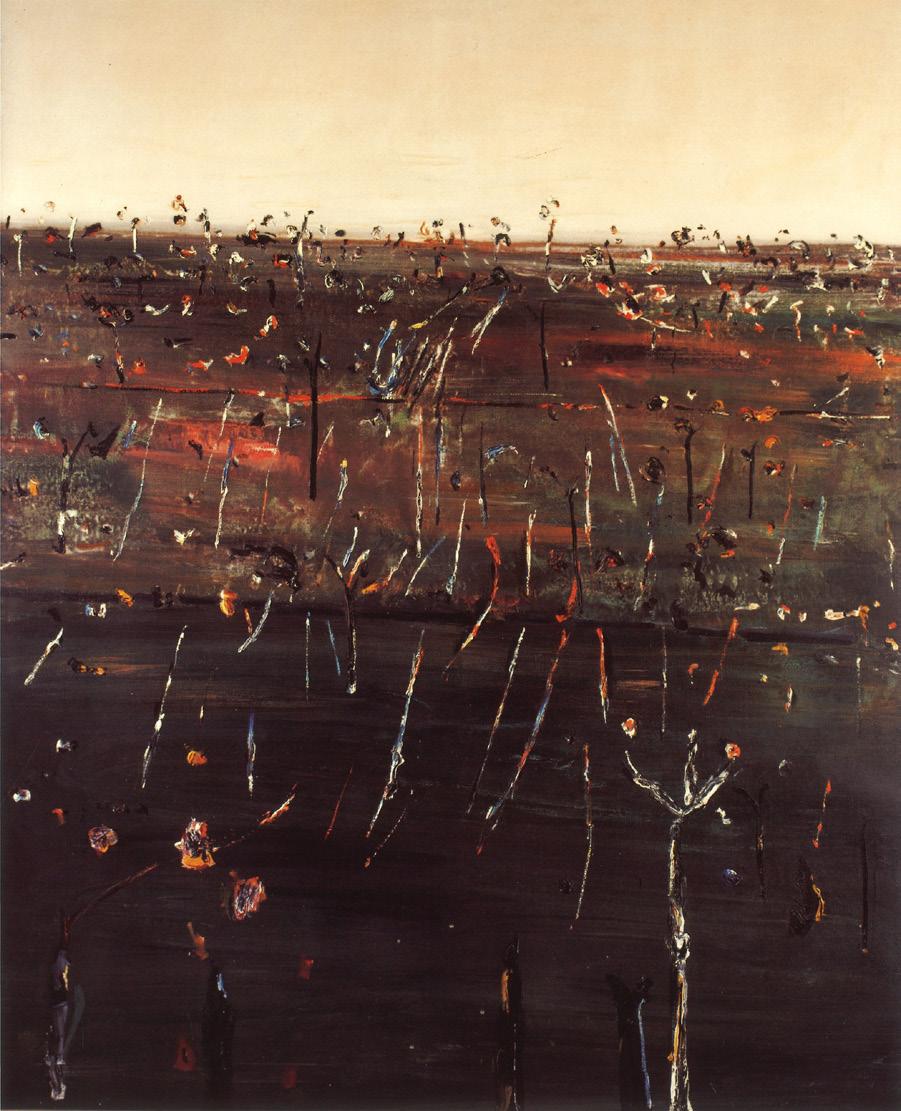
empty spaces between them prefiguring the decorative spareness and extreme minimalism of Williams’ later Australian Landscape works. In August 1968, Williams adopted a smaller format of 36 x 42 inches. This new format, when combined with the Upwey compositional structure, imparted a more literal expression of scale, the density of the forest increasing towards the horizon, lacy daubs of canopies hovering above it. Painted with striking beauty, these were Williams’ most naturalistic landscapes, returning to a traditional landscape format with the same monumental proportions as Cézanne’s landscapes of Mont Sainte-Victoire.3
Far from the gauzy greys of his previous works, Fred Williams in 1968 delighted in the ‘sonorous colours’ of the transformed landscape ‘slowly turning green and orange.’4 Consequently, he adopted new saturated hues of green chromium oxide and Indian Red into his palette, placed alongside titanium white in the modelled staccato daubs describing charred silhouettes. While many of the gouache studies of this time featured ashy grounds using found charcoal, Burnt hillside ’s arresting and warmly glowing burnt sienna ground bears similarities with the
Fred Williams
Burnt landscape, 1968 oil on canvas
183.0 x 152.5 cm
Westpac Corporate Art Collection © Estate of Fred Williams/Copyright Agency 2025
radiant reds of earlier Pond in Landscape works and the rich red grounds of the concurrent works from Tibooburra. Interrupting this visual unity is a dynamic and enlivening diagonal streak of bright orange – the familiar arcing hillside motif, a dominant component within Williams’ mature landscape paintings of this period.
Williams’ Burnt hillside, although appearing impersonal in its panoramic amplitude and deep space, was painted with moving grandeur. It describes the artist’s awestruck reverence and understanding of the power of the ordinary Australian landscape. Shimmering and seemingly still smouldering, the strange colours and altered infrastructure of vegetation of the artist’s vista are painted with referential clarity, the line of trees bisecting the canvas reduced to slight apostrophes of paint on a pale horizon.
1. O’Brien, D., ‘The etchings of a landscapist’, The Bulletin, Sydney, vol. 90, no. 4615, 17 August 1968, p. 77
2. Fred Williams, cited in McCaughey, P., and Timlin, J., The Diaries of Fred Williams. 1963 – 1970, The Miegunyah Press, Melbourne, 2024, p. 348
3. Mollison, J., A Singular Vision: The Art of Fred Williams, Australian National Gallery and Oxford University Press, Canberra, 1989, p. 138
4. McCaughey and Timlin, ibid., p. 337
Lucie Reeves-Smith
oil and collage on canvas with 19 corks
96.0 x 91.0 cm
signed lower right: whiteley
Estimate: $650,000 – 850,000
Provenance
Australian Galleries, Melbourne (label attached verso, AG3478)
Private collection, Melbourne, acquired from the above in September 1976
Exhibited
Recent Interiors, Still Lifes, Windowscapes, Sculptures and Ceramics, Australian Galleries, Melbourne, 21 September – 5 October 1976, cat. 10
Literature
McGrath, S., Brett Whiteley, Bay Books, Sydney, 1979, cat. 44, p. 223 (illus.)
Sutherland, K., Brett Whiteley: Catalogue Raisonné, Schwartz Publishing, Melbourne, 2020, cat. 233.76, vol. 7, p. 386


Brett Whiteley
Still life with cornflowers, 1976 oil on canvas
91.5 x 91.5 cm
National Gallery of Victoria, Melbourne © Wendy Whiteley/Copyright Agency, 2025
In the mid-1970s, the Whiteleys’ newly purchased and renovated house in Lavender Bay on the foreshores of Sydney Harbour became the central locus of their lives. Beyond providing for the couple a stable and secluded sanctuary from the world, for the artist it became the wellspring of three new subjects: interior scenes, landscapes viewed through windows, and table-top still life arrangements, each resulting in some of the most beautiful works of his prolific career. A contemplative counterbalance to Brett Whiteley’s previous political and philosophical angst, these new works exuded a sense of luxuriant tranquillity, a fresh return to the basics of art. Considered the crowning achievements of his career, these paintings, ‘where romanticism and optimism overshadow any form of menace or foreboding’, marked a new phase of maturity in the artist’s career.1 Having evolved from the enfant terrible, the Boy Wonder of Australian art, the older, urbane Brett Whiteley found new depths of self-expression in his immediate surroundings, searching for an art of purity, of harmonious pictorial construction and intense optical refinement.
Distilled to the point of serene simplicity, Whiteley’s still life painting Champagne, 1976, is directly descended from the artist’s multifaceted Matissean interiors, prize-winning works also
produced during this year of extraordinary artistic achievement. Crowned by a row of celebratory champagne corks giving the work its title, the painting presents a tabletop arrangement of the evanescent, finer things in life: a freshly poured flute of French champagne (with minuscule bubbles escaping from its rim), a cut rose, a bouquet of cornflowers in a ceramic vase made by a friend, fresh fruit, a growing bonsai tree, the reflection of a lover and her painted silhouette pinned to the wall.2 With close focus and shallow pictorial depth, the assorted objects are each painted with a different touch, presenting a medley of Whiteley’s artistic expertise and an array of his most persistent motifs casually combined in this intimate and airy composition.
In 1975, the artist travelled once again to New York to present an exhibition of drawings, including views from Lavender Bay, at the esteemed Marlborough Galleries. While he had been pleased to find a favourable reception to right the wrongs of his earlier American disappointment, the temptations of New York’s underbelly once again reinforced his dependence on narcotics.3 Returning home to Lavender Bay, throughout 1976, Whiteley’s life became increasingly secluded, narrowed to include only Wendy and his closest friends. The concentrated intensity of this focus generated two important

Brett Whiteley Self-portrait in the studio, 1976 oil, collage and hair on canvas
200.5 x 259.0 cm
Art Gallery of New South Wales, Sydney © Wendy Whiteley/Copyright Agency, 2025
boons to Whiteley’s art: an intensification of the relationship with his muse, Wendy, and a new approach to colour, as the light reflected off the harbour bounced through the windows onto the white-washed walls of his living room – the artistic centre of his universe at the time. From colour flowed the lyrical intensity of Whiteley’s Lavender Bay interiors and still life paintings: ‘colour, hitherto largely ignored or downplayed, has this time been used in saturation’, he explained.4
Exemplifying the extreme chromatic richness of this saturation is Whiteley’s contemporaneous, Archibald-prize-winning painting from 1976, Self-portrait in the studio (Art Gallery of New South Wales) – perhaps his most famous work. It displayed the ‘ecstasylike’ effect of stinging ultramarine blue, which Whiteley observed, ‘…hit my nervous system in such an exciting way.’ 5 His still lifes similarly prioritised a limited chromatic palette, from the symphony of creams of Still life with peewee’s egg, 1976 (private collection) to the resonant expanse of ‘Brahmsian plum’ in Still life without lemon, 1976 (private collection). Evoking an atmosphere of lightness, Whiteley’s signature blue hue is applied in thin, diaphanous layers, in a large interior, My armchair, 1976, and again throughout this still life, Champagne. Combined with striking areas of white, the reduced colour palette referenced Whiteley’s enduring love of Chinese art. In
the centre of the composition, painted with a greater concentration of ultramarine pigment set against a slender white vase, is a bouquet of cornflowers. Included in several still life compositions of this time, the motif of the blue cornflower, perhaps through a poetry of association with her distinctive eye colour, symbolised Wendy’s presence.6
‘All my work has been hinged to her, is drawn formally and aesthetically from her. She is an inexorable part of my creative process’, Whiteley rhapsodised about his wife and her influence in his art.7 While in Self-portrait in the studio, Whiteley inserted his own reflection into the scene by the aid of a mirror, here, in Champagne, it is Wendy’s profile that is painted into the oval frame. She appears again as the subject of an ink sketch, loosely painted and hung on the wall, cropped by the right-hand side of the painting. Injecting a physical sensuality into this still life, the nude adopts the same reclining pose as the figure in the foreground of Self-portrait in the studio. Self-referentially painting his artworks into interior and still life compositions allowed Whiteley to virtually invite the viewer into his private sphere. Painted around the same time as Champagne, Self-portrait in the studio and Interior with time past (winning the 1976 Archibald and Sulman Prizes respectively, a rare feat), with their immersive display of artworks-within-artworks,

Brett Whiteley
My armchair, 1976 oil on canvas
206.5 x 283.5 cm
Private collection © Wendy Whiteley/Copyright Agency, 2025
make explicit reference to the work of French post-impressionist Henri Matisse’s Red studio, 1911 (Museum of Modern Art, New York). Indeed, it was Matisse’s famous dream of ‘an art of balance, of purity and serenity, devoid of troubling or depressing subject matter’8, which provided a touchstone for Whiteley’s mature works.
Displaying objects evoking the passage of time in the manner of an allegorical vanitas still life painting, in Champagne, Whiteley acknowledges the tradition of the artists who preceded him without losing his unique visual voice. In Champagne, the artist emphasises the flat artifice of painting and the fabricated nature of this arrangement. He toys with the real and the artificial in his still life compositions, including photographic collage elements or even physical objects such as oyster shells glued onto the canvas, and arranging them according to what he described as a ‘chess game’ of atmospheric suggestion.9 Painted with an inky fluidity, Whiteley frames the scene with an irregular border, which, like the window frames of his Window series, creates a subtle spatial disorientation to suggest a rich life to be experienced beyond the canvas.
Champagne was one of eight still life paintings exhibited at Brett Whiteley’s solo exhibition at Australian Galleries in October 1976, described as ‘the most brilliant success of his career.’ 10 Also including My armchair and Interior with time past, the latter before it was
submitted to the Sulman Prize, the exhibition was reviewed by Age critic Maureen Gilchrist as ‘a vision of joy’ which ‘captivates and overwhelms the viewer with a tremendous and infectious vitality.’ 11
1. ‘Artist statement’, Brett Whiteley: Lavender Bay Series, Australian Galleries, Melbourne, November 1974
2. The slender formed vase is likely one thrown by Derek Smith, with whom Whiteley was collaborating at the time, while the bonsai tree recalls Whiteley’s wabi-sabi influenced Bonsai installation at The Yellow House artists’ community in Potts Point in 1971
3. McGrath, S., Brett Whiteley, Bay Books, 1979, pp. 185 – 186
4. Brett Whiteley, ‘Artist Statement’ cited ibid., November 1974
5. Brett Whiteley, cited in interview with Phillip Adams, Radio 2UE, Sydney, September 1986
6. Sutherland, K., Brett Whiteley: Catalogue Raisonné, Schwartz Publishing, Melbourne, 2020, vol. 7, p. 947
7. Brett Whiteley, cited in Wilson, A., Brett Whiteley: Art, Life and the Other Thing, Text Publishing, Melbourne, 2016, p. 246
8. Matisse, H., ‘Notes d’un peintre’, La Grande Revue, Paris, vol. 52, 1908, pp. 731 – 45
9. Brett Whiteley, cited in McGrath, ibid., p. 185
10. McGrath, ibid., p. 186
11. Gilchrist, M., ‘A headlong plunge into a vision of joy’, The Age, Melbourne, 24 September 1976, p. 16
Lucie Reeves-Smith
Brett Whiteley making the frame for Still Life with Avocados and Television, Lavender Bay, 1974 photographer: Greg Weight © Greg Weight/Copyright Agency, 2025

oil on board
31.0 x 48.0 cm
signed lower right: Jeffrey Smart
Estimate: $120,000 – 160,000
Provenance
Macquarie Galleries, Sydney (label attached verso) Noel Burns, Sydney, acquired from the above
Thence by descent
Peter Farr Jones, Sydney
Thence by descent
Private collection, New South Wales Private collection, Sydney
Deutscher~Menzies, Sydney, 14 June 2006, lot 3
Private collection, Melbourne
Exhibited
Jeffrey Smart, Macquarie Galleries, Sydney, 17 – 29 November 1971, cat. 21
Literature
Quartermaine, P., Jeffrey Smart, Gryphon Books, Melbourne, 1983, cat. 570, p. 112
McDonald, J., Jeffrey Smart of the ‘70s and ‘80s, Craftsman House, Sydney, 1990, cat. 3, p. 156
Related work
Approach to E.U.R., 1970, oil on canvas, 60.0 x 92.0 cm, The University of Sydney, Sydney
We are grateful to Stephen Rogers, Archivist for the Estate of Jeffrey Smart, for his assistance with this catalogue entry.
‘I find myself moved by man in this new violent environment. I want to paint this explicitly and beautifully…’ 1
Undoubtedly one of the great paradoxes of Jeffrey Smart’s immeasurable artistic legacy is that symbols of modernity, urban pressure and activity such as freeways, road signs and trucks should be imbued with an aura of stillness, order and timeless serenity more reminiscent of the Italian Quattrocento painting he so admired. For while drawing inspiration from the urban environment that has flourished in Italy since the Second World War, Smart’s immaculate compositions invariably bear no trace of the chaos or randomness of the world from which they derive. Rather, meticulously distilling his subject of the modern city down to its purely formal qualities in a manner echoing his artistic mentor Cézanne, Smart encourages his audience to see the ‘everyday’ with fresh eyes – to discern beauty in the most unprepossessing, unromantic of subjects.
With its signature motif of a broad sweeping arterial seen from a low perspective and disappearing to an unknowable destination beyond, Study for Approach to the E.U.R., 1970 offers a superb example of Smart’s mastery, encapsulating his unique ability ‘to elevate mundane familiarities… to the status of semi-mystic icons.’ 2 Undertaken while Smart was living in Rome in a shared apartment on the outskirts with fellow expatriate painters Justin O’Brien, Brian Dunlop and Ian Bent, the composition attests to the artist’s fascination with the nearby ultra-modern E.U.R (Esposizione Universale Roma) estate which he had initially encountered as the bleak setting of Michelangelo Antonioni’s award-winning film, L’Eclisse (1962). Transfixed, Smart would reportedly spend endless hours sketching this sublime, otherworldly ‘city of the future’ with its austere, fascist-inspired architecture that was so loathed by local citizens at the time – eventually transforming such visual notes into fully resolved compositions such as E.U.R. I, 1964 (Newcastle Art Gallery); E.U.R. II, 1965 (private collection) and Approach to E.U.R, 1970 (University of Sydney), for which the present is the only known oil study.
Although unmistakably derived from ‘a moment of enchantment’ glimpsed by Smart during his explorations, Study for Approach to E.U.R does not, however, offer a faithful depiction en plein air of an exact scene, but is rather carefully constructed from the complex weaving of motifs, symbols and disparate elements gleaned from real-life locations and other artworks. Redolent with ambiguity and seductive in its ‘super realism’, indeed the work reveals multiple classic Smart tropes – from the dark brooding sky and inhospitable apartment buildings that loom in the distance, to the ubiquitous road signs and most notably, the dramatic, broad arc of a highway underpass which betrays strong stylistic affinities with some of the artist’s most celebrated works, including the iconic Cahill Expressway, 1962 (National Gallery of Victoria) executed only a few years earlier. In typical Smart fashion, a sense of mystery and disquietude pervades the closely cropped composition –the eerily silent, empty autostrada heightening the incongruity of a scene that would normally evoke noise and congestion.
Like the freeze frame of a film stilled for poetic effect, such compelling images relentlessly assert Smart’s faith in the immutable beauty he perceived amidst the clutter of contemporary life, conveying a rich sense of optimism despite their occasional uncertainties – a poignant reminder that the things which seem upon first glance to reflect a brutality to the soul can become, ironically, a source of wonder.’3
1. Jeffrey Smart, cited in Horton, M. (ed.), Australian Painters of the ’70s, Ure Smith, Sydney, 1975, p. 54
2. Capon, E., ‘Still, Silent, Composed: The Art of Jeffrey Smart’ in Jeffrey Smart, Art Gallery of New South Wales, Sydney, 1999, p. 16
3. Pearce, B, ‘Out of Adelaide’ in Jeffrey Smart, ibid., p. 32
Veronica Angelatos
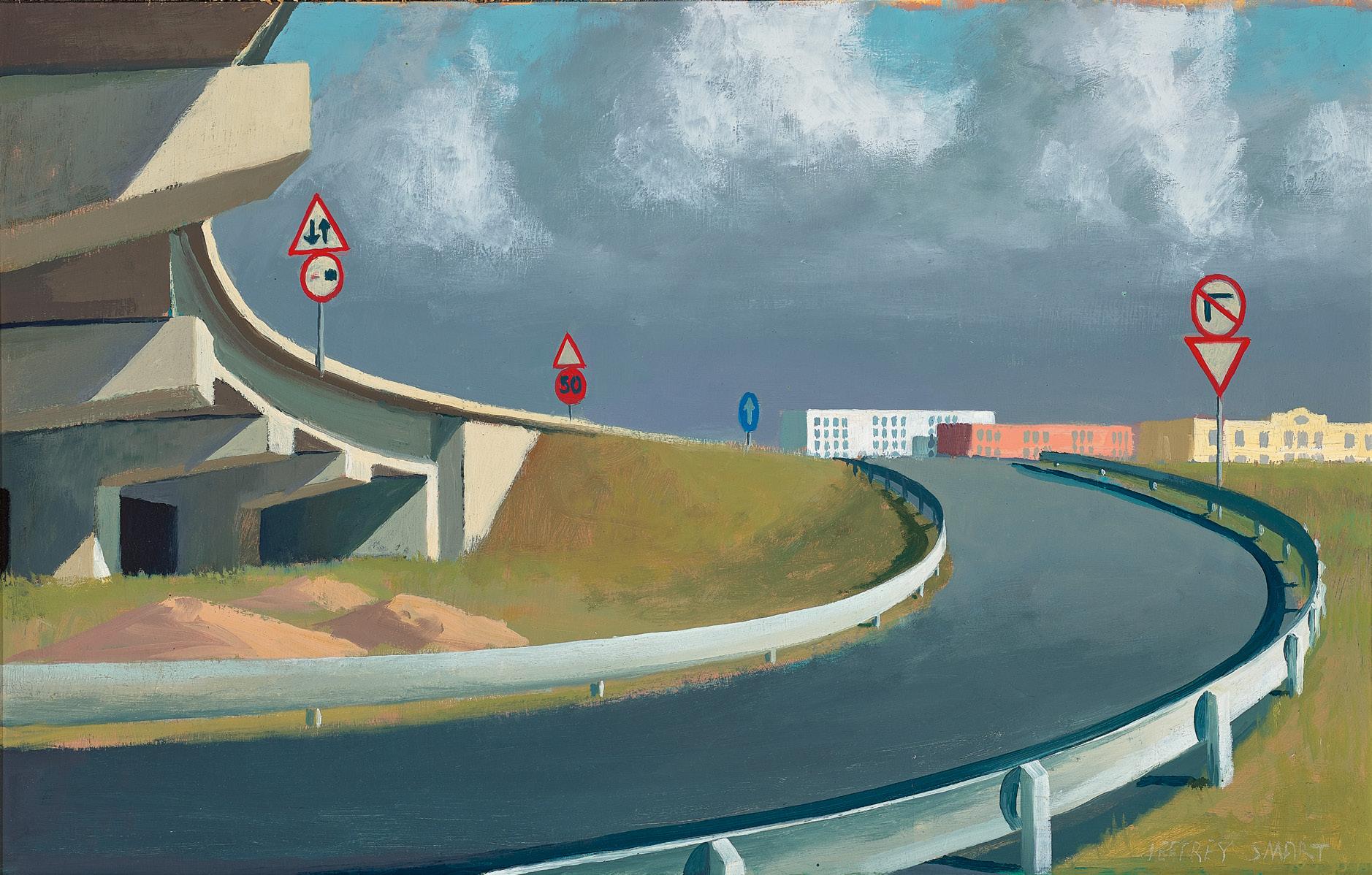
New room, 1993
synthetic polymer paint on canvas
173.0 x 135.0 cm
signed and dated verso: Howard Arkley 93
signed, dated and inscribed with title verso: Howard Arkley / New Room / 1993
Estimate: $800,000 – 1,200,000
Provenance
Tolarno Galleries, Melbourne
The Sigg Collection, Switzerland, acquired from the above in April 1994
Literature
Art and Australia, Fine Arts Press Pty Limited, Sydney, vol. 34, no. 4, 1997, front cover (illus.), p. 419 (illus.)
Howard Arkley Online Catalogue Raisonné: https://www.arkleyworks. com/blog/2009/12/09/new–room–1993/ [accessed March 2025]
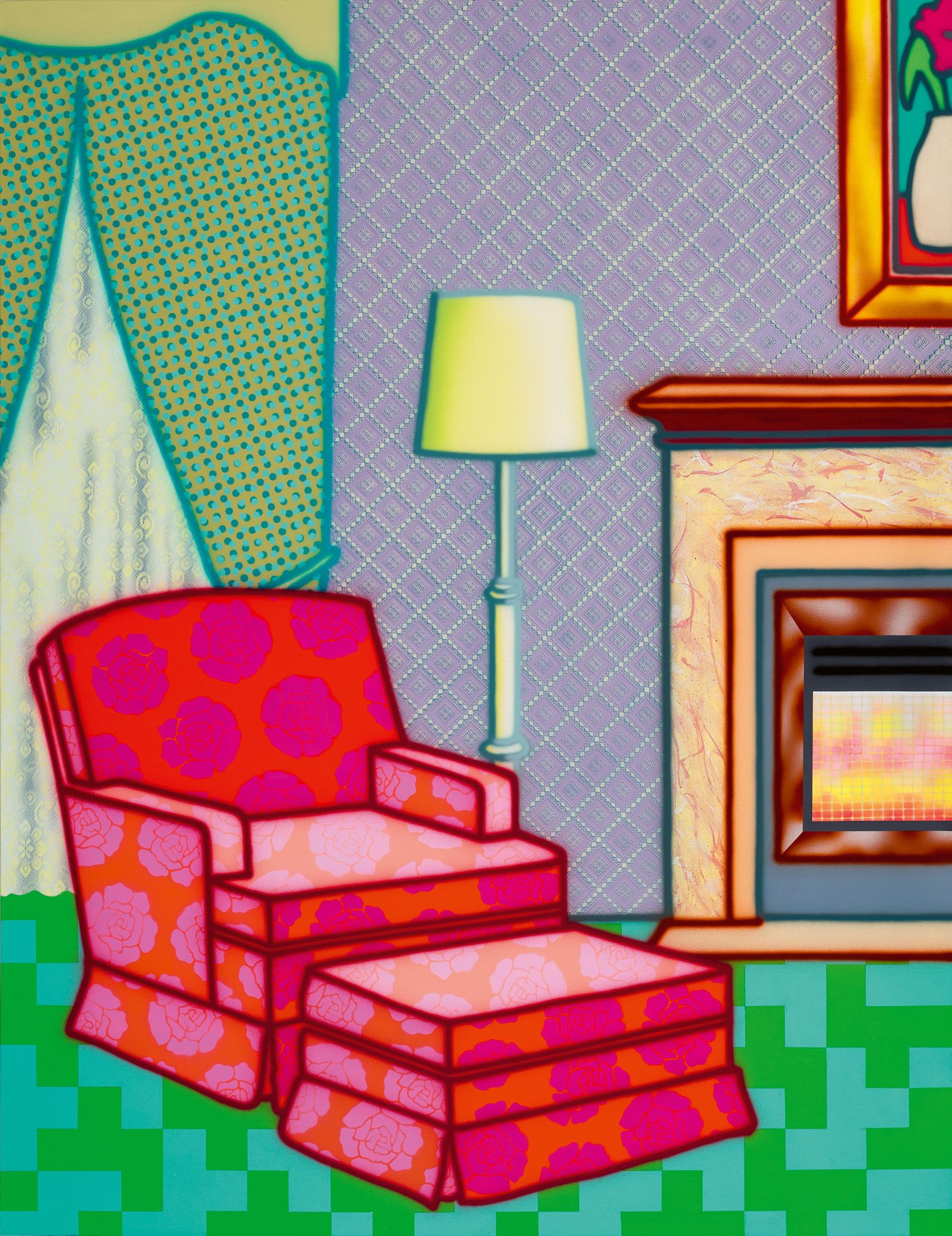
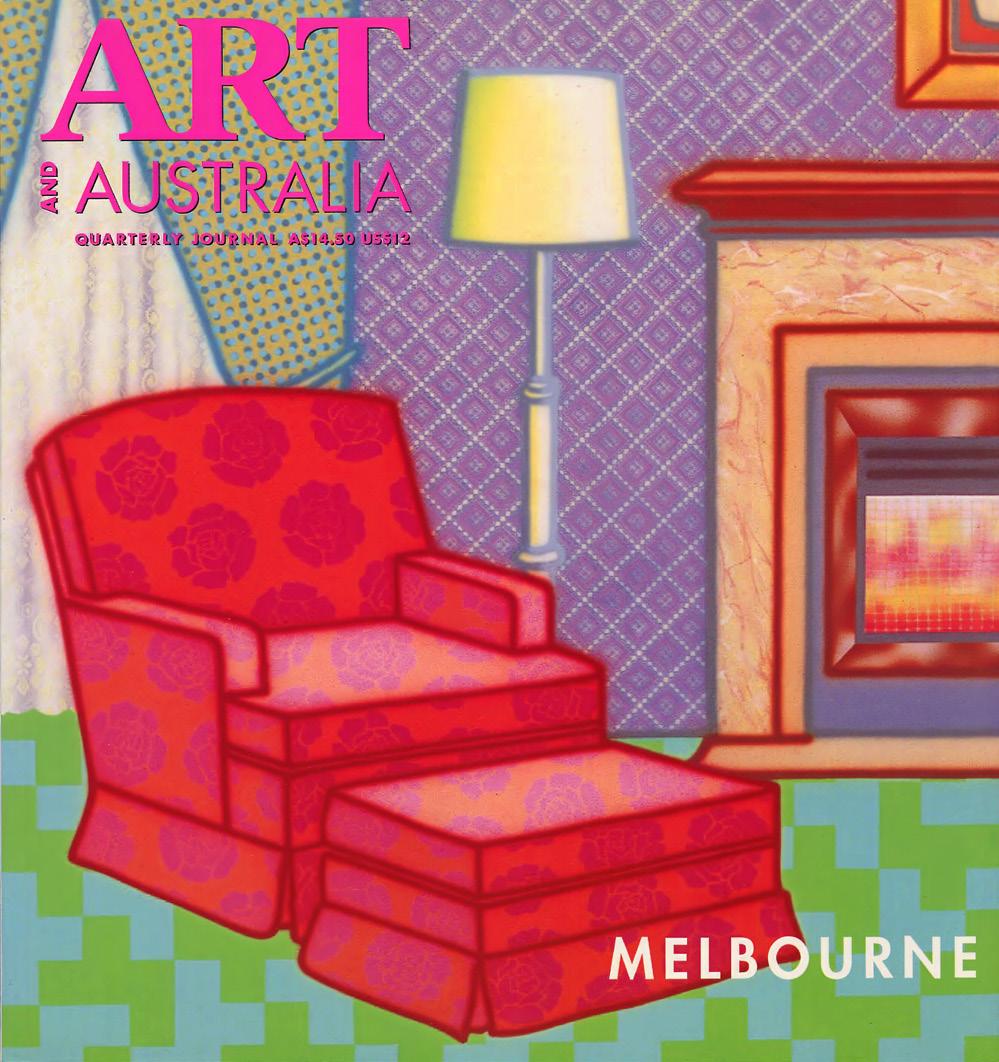
Front cover of Art and Australia, Fine Arts Press Pty Limited, Sydney, vol. 34, no. 4, 1997
‘The suburbs to me are quite simply, my life. They’re my childhood, and my formative years – they’re what formed me, both in my personal life, and in my artistic life.’1
By the time that Howard Arkley painted New room in 1993, the claustrophobic, exuberantly decorated spaces of the suburban interior had become a major preoccupation. These were showcased for the first time in his October 1992 exhibition, Mix ‘n Match: A Series of Suburban Interiors at Tolarno Galleries, Melbourne, and in his preceding collaboration with artist Juan Davila, Blue Chip Instant Decorator: A Room, 1991 – 92 (Benalla Art Gallery), which was later described by Davila as ‘a wonderful travesty’ with ‘an intentionally bastard result’.2 While referring to a well-known practice in interior design, Mix ‘n Match’s title could also be seen as an ironic take on the décor in most of the paintings, which, like New room, were replete with high-keyed colour and clashing decorative patterns on almost every available surface.3 Arkley continued this theme to great effect in his 1993 exhibition at Bellas Gallery, Brisbane, Recommended Rooms. The artist had returned to live in the suburbs
with his partner (and later wife) Alison Burton in 1991, and through these works, and his iconic exteriors of suburban houses, he was to become the champion of a distinctly Australian vernacular:
‘Australian art has been dominated by the rural landscape, and I think there is something false and overrated – it’s romanticised or, at the very least, lopsided. Most of the population live in an urban environment. This environment affects us – the kinds of people that Australians are, and the way we behave. It affects our formative years, so it is a very important element.’4
However, while Arkley was the champion of the suburbs as subject matter, his works remain mute as to whether they are intended as a form of celebration or critique. There is certainly a sense that we don’t know what events unfold within these houses or their people-less interiors, and the dream of home ownership – which remains deeply embedded in the Australian psyche – is no doubt part of both their recognition and appeal. As curator Juliana Engberg has observed, Arkley’s interest in houses occupies the same territory as the mask in his practice – ‘They are all symbolic of the mapping of identity, the triple-fronted, the two-faced, the made-up and the made-over’ and are ‘part of his cosmetic
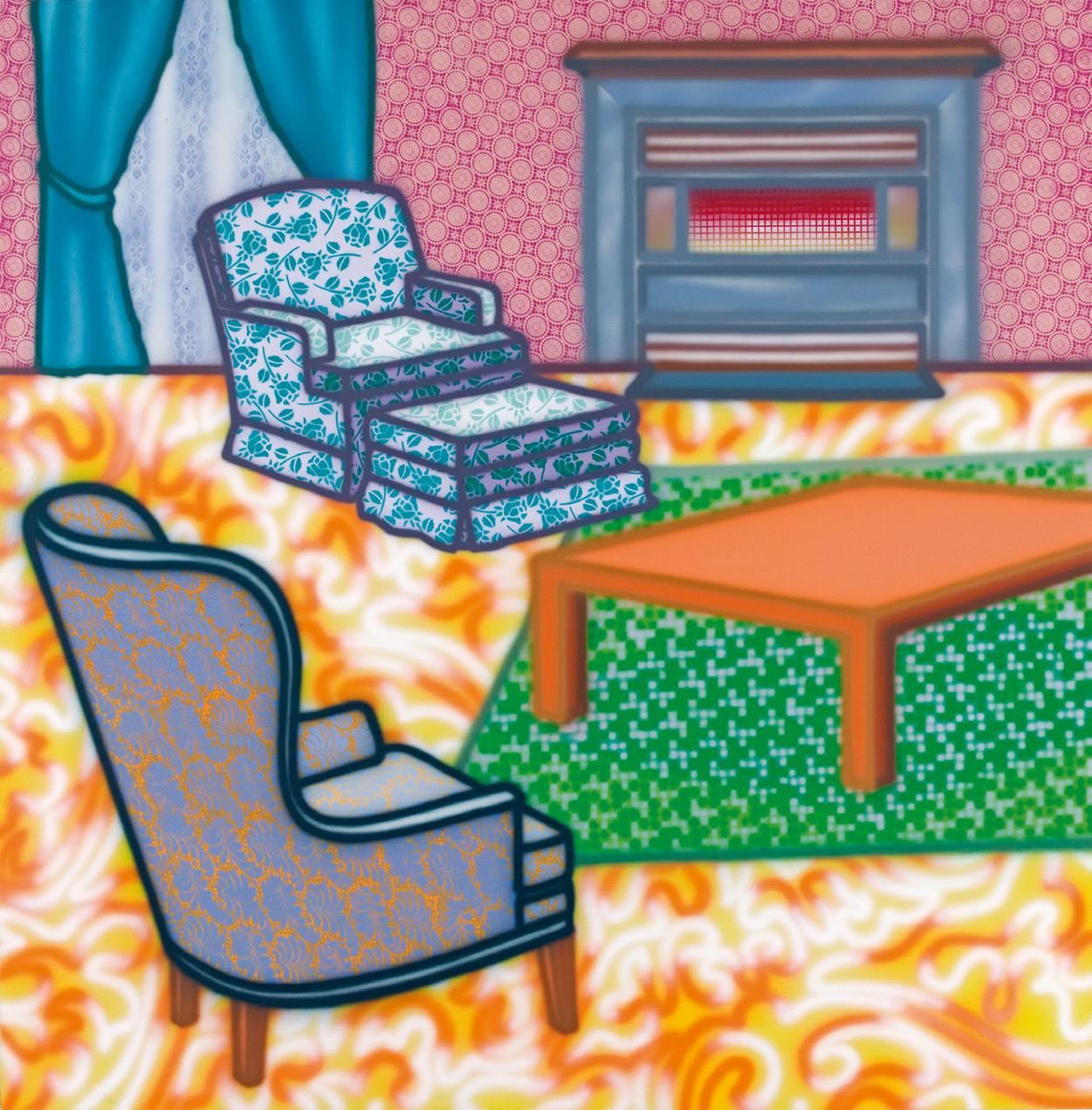
Howard Arkley Riteroom, 1998
synthetic polymer paint on canvas
203.0 x 200.0 cm
Art Gallery of South Australia, Adelaide © The Estate of Howard Arkley. Licensed by Kalli Rolfe Contemporary Art
construct of a world viewed from the other side of the fence.’ 5 What we do know, is that Arkley embraced the suburban house as a vehicle for pattern and decoration, and importantly, creative exploration, and that it also enabled him to playfully challenge prevailing notions of taste and artistic propriety. As he enthused:
‘Ordinary houses are filled with pattern. You go into a house where there is no art, no paintings, but it is filled with kind of second-degree imagery. The patterning around the fireplace, the carpet, and the different brick on the different houses, and the pattern between the gutter, the nature strip, the footpath; then you have the fence, then you have the green lawn, then you have house, then you have the tiles, then you have the blue sky… and I missed the bushes in between. It’s rich.’6
Prior to the creation of Blue Chip Instant Decorator, Arkley’s friend and occasional collaborator John Nixon gave the artist a book that he had found in an op shop, with the quip, ‘Oh, this is blue chip, you’ll make money on this one Howard.’ 7 This publication – The Instant Decorator by Frances Joslin Gold (1976) – was to become the source for the compositions of many of the interior paintings that followed. Gold’s ‘how to’ guide featured transparent sheets over each outlined room so that the home decorator could place fabric swatches and colour samples underneath to test the way they looked. The exuberant patterning and decoration of Arkley’s interiors replicated this model to spine-tingling effect, as he overlaid and filled space with a multitude of patterns, colours and surface treatments that jostle and fight each other in kitschy confections of questionable taste. The extreme cropping of the composition of New room – as if

it has been based on a magazine photograph that has been sliced in half, leaving only suggestive hints of the fireplace and painting that hangs above it – heightens the sense of claustrophobia that is characteristic of Arkley’s interiors. This sense of containment is also echoed by the artist’s assured airbrushing, which similarly reigns in the image’s dazzling array of stencilled designs, pattern and colour. The work’s title, New room, may convey a sense of pride in this elaborate decorative scheme, but its primness seems to indicate, in the spirit of suburban hosting, that it is a room ‘kept for best’.
Arkley’s representation of Australia at the Venice Biennale in 1999 with his exhibition The Home Show saw the artist’s reputation skyrocket, but New Room was acquired for the Sigg Collection in 1994, well before this occurred. An astute and informed collector, businessman and diplomat Uli Sigg acquired the work close to the time it was made, adding it to his significant collection of international contemporary art. Sigg had also amassed one of the world’s largest collections of contemporary Chinese art, and today, this forms the lynchpin of the collection of Hong Kong’s M+ art museum.
1. Howard Arkley, cited in Wyzenbeek, T. (dir.), Howard’s Way, ABC-TV Arts, 1999
2. O’Connell, S., BLUE CHIP INSTANT DECORATOR: Howard Arkley & Juan Davila (interviewed) at: http://artdes.monash.edu.au/globe/issue3/decorate.html (accessed 16 June 2025)
3. The title of the exhibition was borrowed from a book in Arkley’s collection: Mary Gilliat’s Mix & Match Decorating Book (1984). See Gregory, J., Carnival in Suburbia: The Art of Howard Arkley, Cambridge University Press, Melbourne, 2006, p. 30
4. Howard Arkley, cited in Crawford, A. & Edgar, R., ‘Unpublished interview with the authors’ in Spray: The Work of Howard Arkley, Craftsman House, Sydney, 1997, p. 88
5. Engberg, J., ‘Howard Arkley’, Art & Text, no. 41, 1992, p. 102
6. Howard Arkley, cited in Wyzenbeek, op. cit.
7. This also led to the title of the Arkley and Davila collaboration discussed above. See ‘Unpublished interview with Arkley conducted by Stephen O’Connell (Zagala)’, 24 November 1995, cited in Gregory, op. cit. p. 32 Kelly Gellatly
Traditional Living Room
The Instant Decorator, 1976, by Frances Joslin Gold (New York: Clarkson N. Potter)
Howard Arkley in his studio, 11 March 1999 photographer: Andrew de la Rue
The Age, Melbourne

oil on canvas
91.5 x 91.5 cm
Estimate: $450,000 – 650,000
Provenance
Robin Gibson Gallery, Sydney Edna and Awdry Julius, Sydney (Wendy Whiteley’s aunt and uncle), acquired from the above in 1977 Thence by descent Private collection, Brisbane, 2008
Exhibited
Brett Whiteley – Rivers, Robin Gibson Gallery, Sydney, 1 – 19 March 1977, cat. 6
Literature
Sutherland, K., Brett Whiteley: Catalogue Raisonné, Schwartz Publishing, Melbourne, 2020, cat. 249.76, vol. 7, p. 389


Whiteley Summer at Carcoar, 1977
oil and mixed media on pineboard
244.0 x 198.7 cm
Newcastle Art Gallery, New South Wales © Wendy Whiteley/Copyright Agency, 2025
It was in the familiar rolling landscapes of inland New South Wales, west of the Great Dividing Range, that Brett Whiteley, at the height of his fame, found regular solace. The landscape provided a conceptual and real escape from the realities of daily existence and the equally clamorous pressures of his successes and vices. Whenever possible, the artist, accompanied by his young family, would escape the city to rejoice in the vast open spaces and rich natural world, staying at friends’ country estates in Carcoar, Marulan and Oberon. Reconnecting with the landscape of his boyhood, whose beauty had so profoundly influenced his choice of métier, Whiteley produced some of his most acclaimed paintings, radiant with calm contemplation, lyrical lightness and keenly observed immediacy. With his signature sinuous gesture and sun-bleached autumnal palette, The magpie, 1976 – 77 belongs to a small group of riverine landscapes in the key of yellow from the late seventies including two Wynne Prize winning paintings –River at Marulan (…Reading Einstein’s Geography), 1976 (private collection) and Summer at Carcoar, 1977 (Newcastle Art Gallery).
Although Whiteley’s early childhood years were coloured by painful memories of a strict boarding school in Bathurst, to which he was sent at the tender age of eight, the rural location of the school provided the budding artist with a profound appreciation for the landscape that would last throughout his life. ‘The thing I loved
about the school was the feeling of being close to the earth… you feel the seasons more at Bathurst than one does in the city’, he later recalled to Sandra McGrath.1 Indeed, it is the rhythms of the seasons and the tender balance of sustaining life forces that shine through in Whiteley’s later, picturesque landscapes of the central tablelands. Whiteley’s rhythmic interpretations of the sweeping, voluptuous contours of this countryside were also shaped by his enduring admiration for the celebrated landscapist of the region, Lloyd Rees. Chronologically listed in Whiteley’s catalogue raisonné alongside the multimedia River at Marulan, 1976, which was painted in situ at Glenrock, the property of architect Peter Mueller near Goulburn Valley, it is possible that The magpie was also derived from this location, sharing a similarly undulating tapestry of working paddocks. While the ‘optical ecstasy’ of the ultramarine blues of Sydney’s harbour, developed in parallel in his Lavender Bay suite, was closely tied to a specific location, Whiteley’s arid landscape dotted with poplars, weeping willows and a myriad cast of native fauna is often closely cropped, becoming universal and anonymous, a shorthand for the Australian landscape in general.
Presenting a symphony of luminous golden hues, The magpie is a seasonal landscape, swapping the yellow hues of a parched summer landscape for those of a transitional autumnal scene. Even the water of the fast-flowing river, snaking its way through the arid
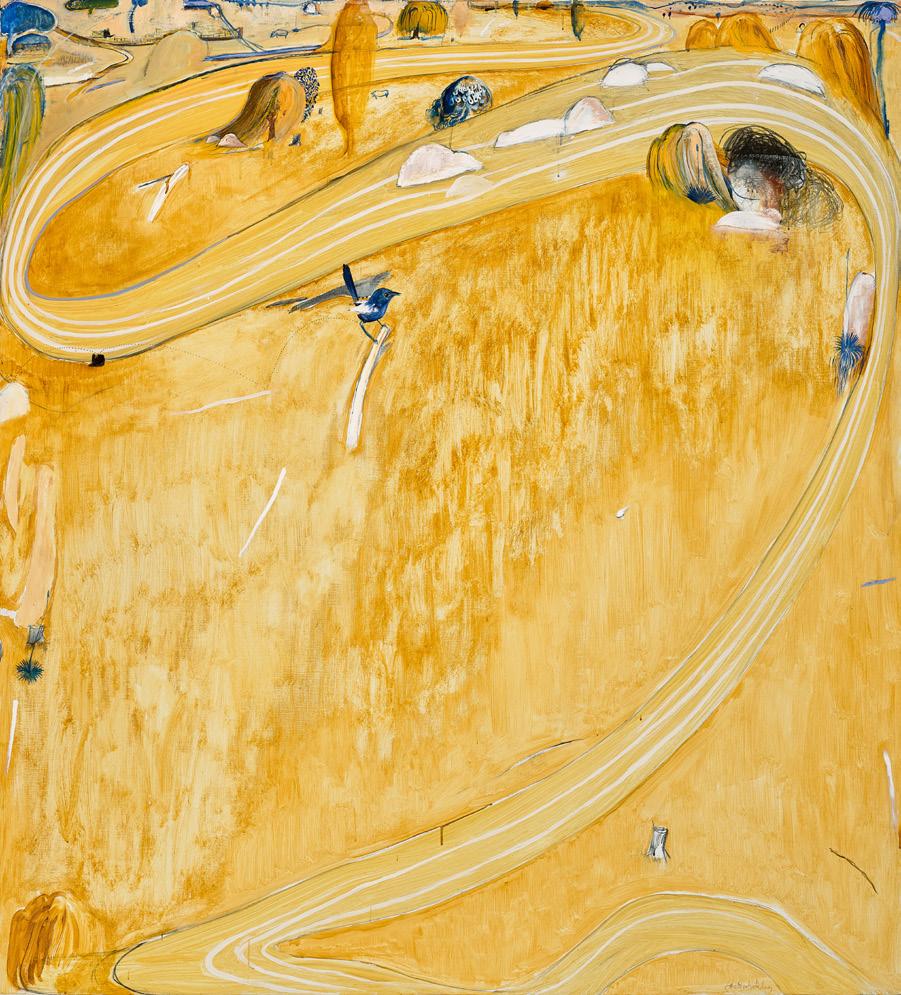
Brett Whiteley
The wren, 1978 oil on canvas
168.0 x 153.0 cm
Private collection
© Wendy Whiteley/Copyright Agency, 2025
Sold for $3,681,818 (inc. BP), Deutscher and Hackett, Melbourne, 24 April 2024, lot 6
paddocks, reflects the saturated colours of the deciduous willows and poplars lining its banks. The riverine landscapes are variations on a theme, all featuring the same, particularly graceful S-curved section of river, winding vertically through the canvas. Bright and optimistic, The magpie is directly descended from a painting simply titled Yellow, 1975 (private collection), the first of these landscapes in this joyous colour register depicting the river as a source of life within shimmering summer heat. The curvilinear quality is finely developed in this series of mature riverine pictures, providing a dynamism to a landscape that is otherwise compressed into a vast, flattened plane. Inherently calm, and without particular narrative incident, Whiteley’s confident freehand brushstrokes describe the interlocking curves of a short segment of this meandering river and the tangle of willow trees, their fronds gracefully trailing over the water and radiating from the centre of the composition. The motif of an autumnal willow appeared frequently in Whiteley’s works. In addition to featuring alone in many works on paper, the (often golden yellow) riverside willow appears in many larger and acclaimed painted compositions of this time, including Alchemy, 1972 – 73 (Art Gallery of New South Wales); River at Carcoar, 1977 (private collection); Summer at Carcoar, 1977 (Newcastle Art Gallery); The Wren, 1978 (private collection) and Autumn (Near Bathurst), 1987 – 88 (Art Gallery of New South Wales).
Despite this thematic anchoring and The magpie’s inclusion among only eleven paintings shown at Whiteley’s legendary solo exhibition ‘Rivers’ at Robin Gibson Gallery in 1977, the title of this painting would indicate that the focus should be equally directed on the bird and its nearby companion. Centrally perched in the trailing boughs of weeping willows lining the river is an Australian magpie, its striking graphic plumage painted cleanly against the swirling and sweeping lines of the flowing river. Following a disastrous trip to the United States of America, and having found a renewed love for birds during a sojourn in Fiji in 1969, throughout the 1970s Whiteley sought to rediscover the unique native beauty of Australia, creating works that recast the heroic landscape of ‘Australia Felix’ codified by Australian impressionists.2 Consequently, many of the birds that Whiteley painted within the landscape and isolated in their own compositions were specifically Australian species, at home in their native environment and becoming for Whiteley the ‘essential symbol of the song of creation’ of this antipodean paradise.3
1. Brett Whiteley, cited in McGrath, S., Brett Whiteley, Bay Books, Sydney, 1979, p. 18
2. Sutherland, K., ‘Variations on a Landscape Theme’, in Brett Whiteley: Catalogue Raisonné, Schwartz Publishing, Melbourne, 2020, p. 36
3. Pearce, B., Australian Artists, Australian Birds, Angus & Robertson, Sydney, 1989, p. 144 Lucie Reeves-Smith
Startled heron, 1984
charcoal, ink, gouache and collage on paper on board (with white oil on Perspex surface)
158.0 x 130.0 cm
signed, dated and inscribed lower left: “Startled Heron” 1984 / brett whiteley
stamped lower left with artist’s monogram stamped twice upper left with artist’s monogram
Estimate: $350,000 – 450,000
Provenance
Australian Galleries, Melbourne, 1984 (label attached verso, AG7093)
Private collection
Sotheby’s, Melbourne, 19 August 1991, lot 319
Private collection, Melbourne
Exhibited
An Exhibition by Brett Whiteley - Eden and Eve, Australian Galleries, Melbourne, Melbourne 1984, cat. 43
Literature
Sutherland, K., Brett Whiteley: Catalogue Raisonné, Schwartz Publishing, Melbourne, 2020, cat. 173.84, vol. 4, p. 281 (illus.), vol. 7, p. 643
Related works
Untitled (Heron, Rain and Wind ), 1973, oil and mixed media (bird’s nest and egg) on board, 85.5 x 82.0 cm, private collection, illus. in Sutherland, K., Brett Whiteley: Catalogue Raisonné, Schwartz Publishing, Melbourne, 2020, vol. 3, p. 183
Shao (Rain Slanted by Wind), 1978 - 79, oil, nest and birds’ eggs on board, 122.0 x 81.0 cm, private collection, illus. in Sutherland, K., Brett Whiteley: Catalogue Raisonné, Schwartz Publishing, Melbourne, 2020, vol. 3, p. 566
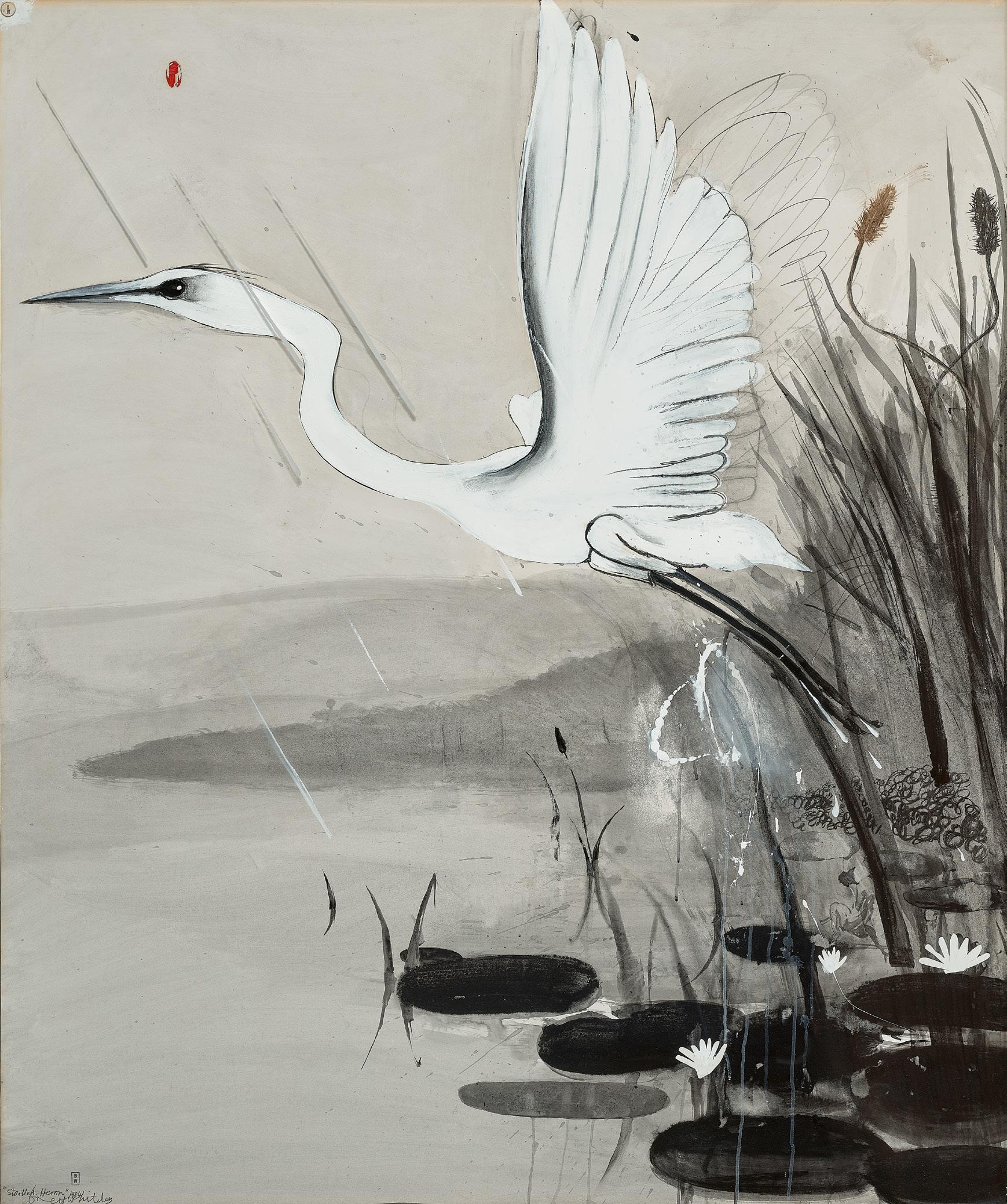
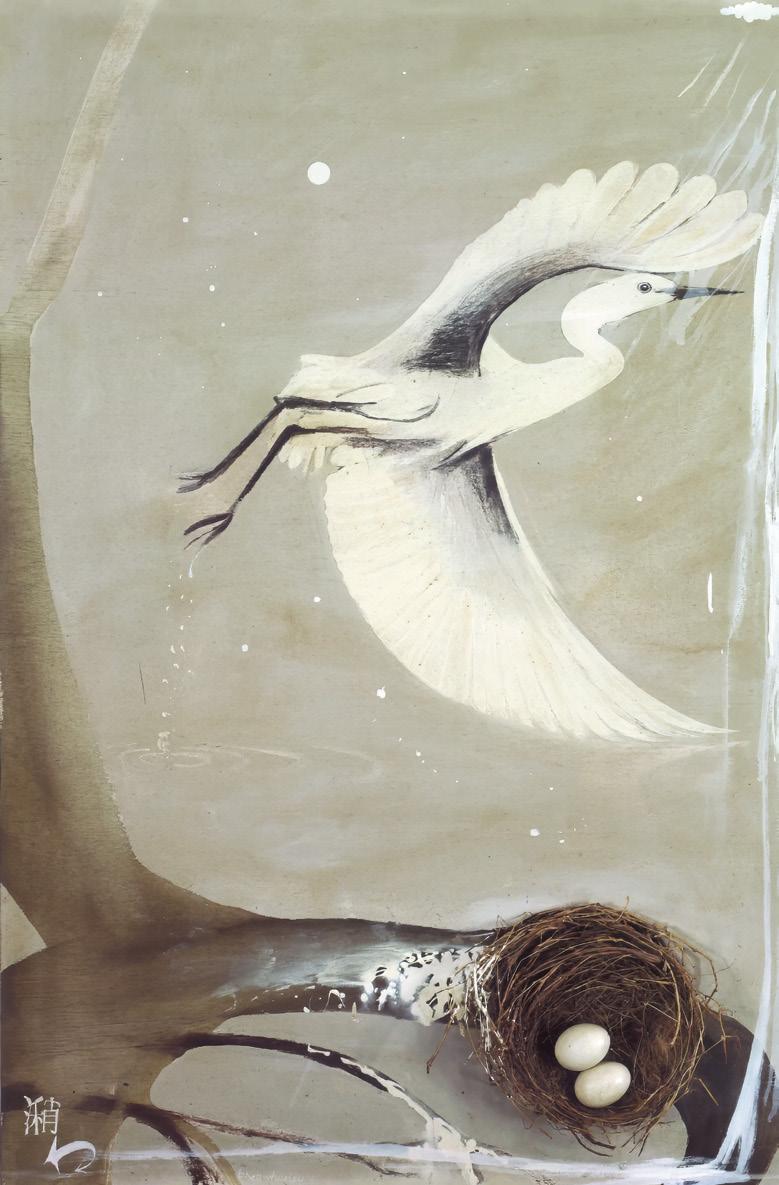
79
Private collection © Wendy Whiteley/Copyright Agency, 2025
First presented within a large solo exhibition, Eden and Eve, at Australian Galleries in Melbourne, alongside lyrical landscapes of native birds nesting in trees, panoramas of the suburban Australian dream under laden grey skies and radiant beach scenes, Startled heron, 1984 joins expressions of Brett Whiteley’s conception of the landscape and natural world as a sanctuary. The bird held special appeal for Brett Whiteley throughout his extensive and varied career, frequently appearing in his most significant compositions. Beyond their physical shapeliness, for Whiteley, birds symbolised states of mind, the promise of escapism and freedom in the face of adversity.1 Lauded as ‘Australia’s most sublime painter of birds’ 2 , Whiteley has captured here, in graceful, swift motions, the striking silhouette of a white heron taking flight headlong into the rain.
The heron first appears in Whiteley’s oeuvre in The Pink Heron, 1969 (Art Gallery of New South Wales). Calmly gliding over surging waves illuminated by the moon, The Pink Heron, like many of
Whiteley’s luxuriant bird paintings, was painted in Fiji, where the artist had travelled in search of a place of Baudelairean tranquillity and happiness after the disillusionment of his American dream. Subsequent compositions featuring the heron, painted throughout the 1970s and 80s, emphasised the formal qualities of the bird’s pale plumage and elegant sinuous silhouette. In Startled heron, the smooth charcoal and ink arabesques of Whiteley’s characteristic freehand brushstrokes, stark against a watery landscape fringed by reeds, reveal the artist’s familiarity and facility with Asian painting techniques and his longstanding admiration for Asian cultures at a time when the Australian government was not yet prioritising AsiaPacific relations.3 Whiteley’s enthusiastic adoption of the meditative process of brush-and-ink Japanese Sumi-e calligraphy, capturing the essence of nature, was underpinned by his admiration for Zen Buddhist philosophy. Whiteley described Zen as the ‘theology of drawing’4, its application requiring the utmost confidence, mindfulness and restraint. The resulting works bear a spontaneous
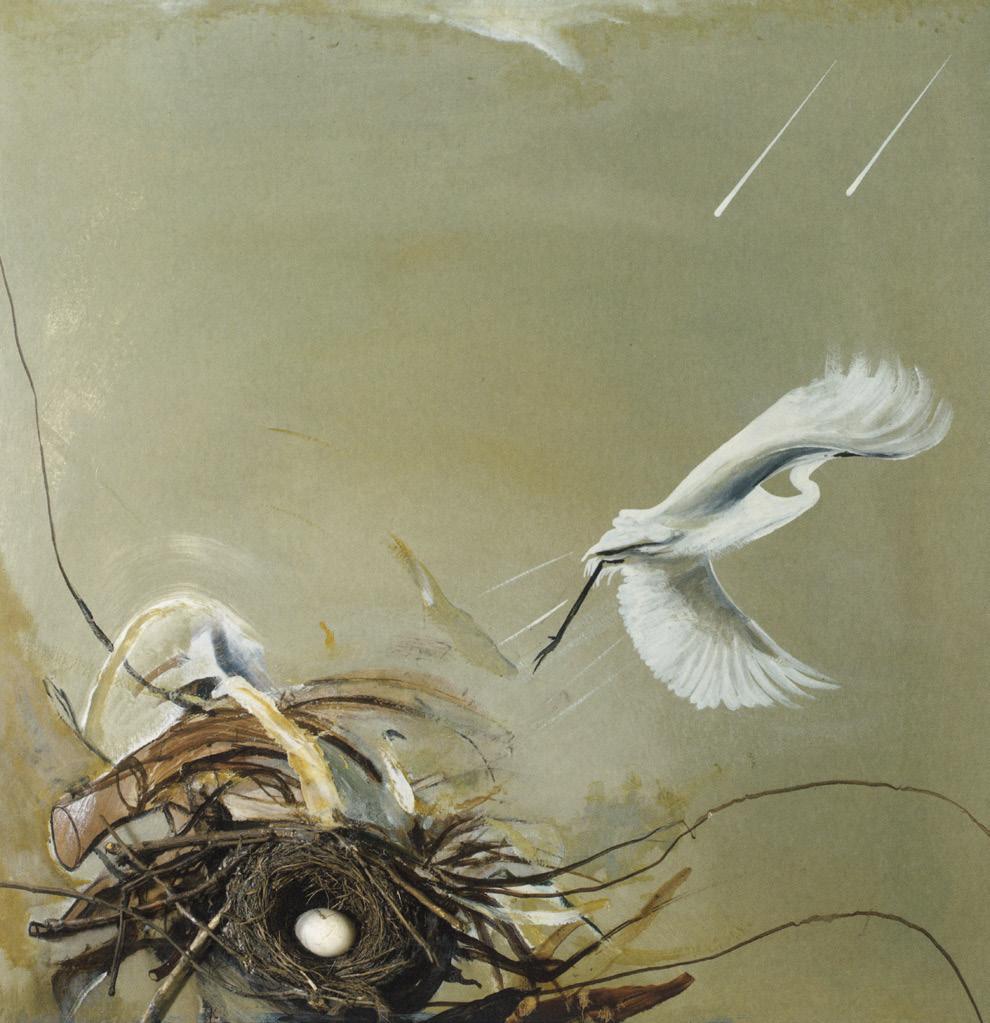
and fluid quality, lyrically balancing deep black inks in all possible graduations with large areas of negative space. In contrast to other depictions of the heron taking flight within Whiteley’s oeuvre: Untitled (Heron, Rain, Wind) 1973 (private collection) and Shao (Rain slanted by wind), 1978 – 79 (private collection), the startled heron here soars not from a physical nest bearing eggs glued to the canvas, but a broader, painted landscape of a river bank, atmospherically and melancholically grey. The romanticism of driving rain became a key feature of Whiteley’s heron paintings, as exemplified by the Mandarin Chinese character shào used in the title of related works.
This serene composition is almost entirely monochromatic, with only the russet brown of the bulrushes’ spike, the bright red Chinese stamp bearing Whiteley’s name, and collaged waterlily blooms breaking the modulated tones of ink and charcoal. The soft, pearly grey of the water and sky appears almost as a continuous plane, only separated by a faintly brushed line of the horizon. While the landscape is silent and still, the bird’s dramatic take-off provides the narrative drama for this scene, a glimpse of unexpected majesty for a bird most often seen standing still in marshes (as in The White Heron, c.1980, Brett Whiteley Studio Collection). With splatters of pure white paint dripping across the picture plane and feathers doubled in pencil, the dynamism and controlled force of the bird’s sudden flight are skilfully made apparent by
Brett Whiteley Heron, Rain and Wind, 1973 oil and mixed media (birds’ nest and egg) on board
85.5 x 82.0 cm
Private collection
© Wendy Whiteley/Copyright Agency, 2025
the artist. The heron confidently sets out into the rain, which falls diagonally across the canvas in the same direction, painted onto the surface of the perspex to express the birds’ imperviousness to the elements. Overlaid on a velvety grey sky, this artistic conceit was used often in Whiteley’s works of the period, frequently in conjunction with the landscape as viewed through a windowpane, the promise of shelter implicit. The contemporaneous South Coast After Rain, 1984 (private collection) – winner of the Wynne prize for landscape painting (awarded to Whiteley for the third time) – is perhaps the best-known example of this technique.
Divinely connoting purity, transition and good fortune in Japanese art, the heron also appeared in Whiteley’s oeuvre in sculptural form in 1983 as a plaster maquette painted white. Created during a tumultuous time in Whiteley’s personal life, directly preceding a return to rehab in July 1984, Startled heron expresses tender hope and determination, the noble search for comfort and freedom. As Alan McCulloch noted in 1970, the enduring acclaim of Whiteley’s paintings of birds lies in the fact that the artist was motivated by love.5
1. Artist statement, exhibition catalogue, Birds and Animals, Robin Gibson Gallery, 1979
2. Pearce, B., Australian Artists, Australian Birds, Angus & Robertson, Sydney, 1989, p. 144
3. McGrath, S., Brett Whiteley, Bay Books, Sydney, 1979, p. 71
4. ibid. p. 168
5. McCulloch, A., Letter from Australia, Art international, October 1970, pp. 69-70 Lucie Reeves-Smith
oil and enamel on composition board
96.5 x 131.0 cm
bears inscription on gallery label verso: CHARLES BLACKMAN / Alice Amongst Flowers
Estimate: $700,000 – 900,000
Provenance
Clune Galleries, Sydney (label attached verso)
Kurt and Margaret Enoch, Woodstock, New York, USA
Estate of Margaret E. Enoch, New York, USA
Christie’s, London, 12 December 2007, lot 42 Private collection, Melbourne
Literature
‘Charles Blackman’s legacy more than Alice’, The Canberra Times, Canberra, 20 August 2018 (illus.) https://www. canberratimes.com.au/story/5595350/charles-blackmanslegacy-more-than-alice/ (accessed July 2025)
‘Down, down, down. Would the fall never come to an end? ‘I wonder how many miles I’ve fallen by this time?’ she said aloud. ‘I must be getting somewhere near the centre of the earth. Let me see: that would be four thousand miles down, I think’… ‘I wonder if I shall fall right through the earth! How funny it’ll seem to come out among people that walk with their heads downwards! The Antipathies, I think’ – she was rather glad there was no one listening, this time, as it didn’t sound at all the right word – ‘but I shall have to ask them what the name of the country is, you know. Please, Ma’am, is this New Zealand or Australia?’ 1
In 1956, when Charles Blackman first encountered Lewis Carroll’s beloved children’s book, Alice’s Adventures in Wonderland (1865), he was not a child but rather, a mature, married man who was
soon to become a father. Blackman’s introduction to Carroll’s absurdist tale of fantasy and adventure – which begins with Alice following the White Rabbit down the rabbit-hole – was through a talking book which his wife, Barbara, who was legally blind, had borrowed from the library. Blackman had grown up in a house devoid of books and while he had heard of the famous story, he had never read it or seen any of the associated illustrations. 2
Blackman listened to the story repeatedly and later recalled: ‘I was absolutely thrilled to bits with it… and it seemed to sum up for me at that particular moment my feelings towards surrealism, and that anything could happen. The cup could lift off the table by itself, the teapot would… pour its own tea… The world is a magical and very possible place for all one’s dreams and feelings. One is completely outside of reality… This was sparked completely off by Barbara’s influence on my life.’ 3
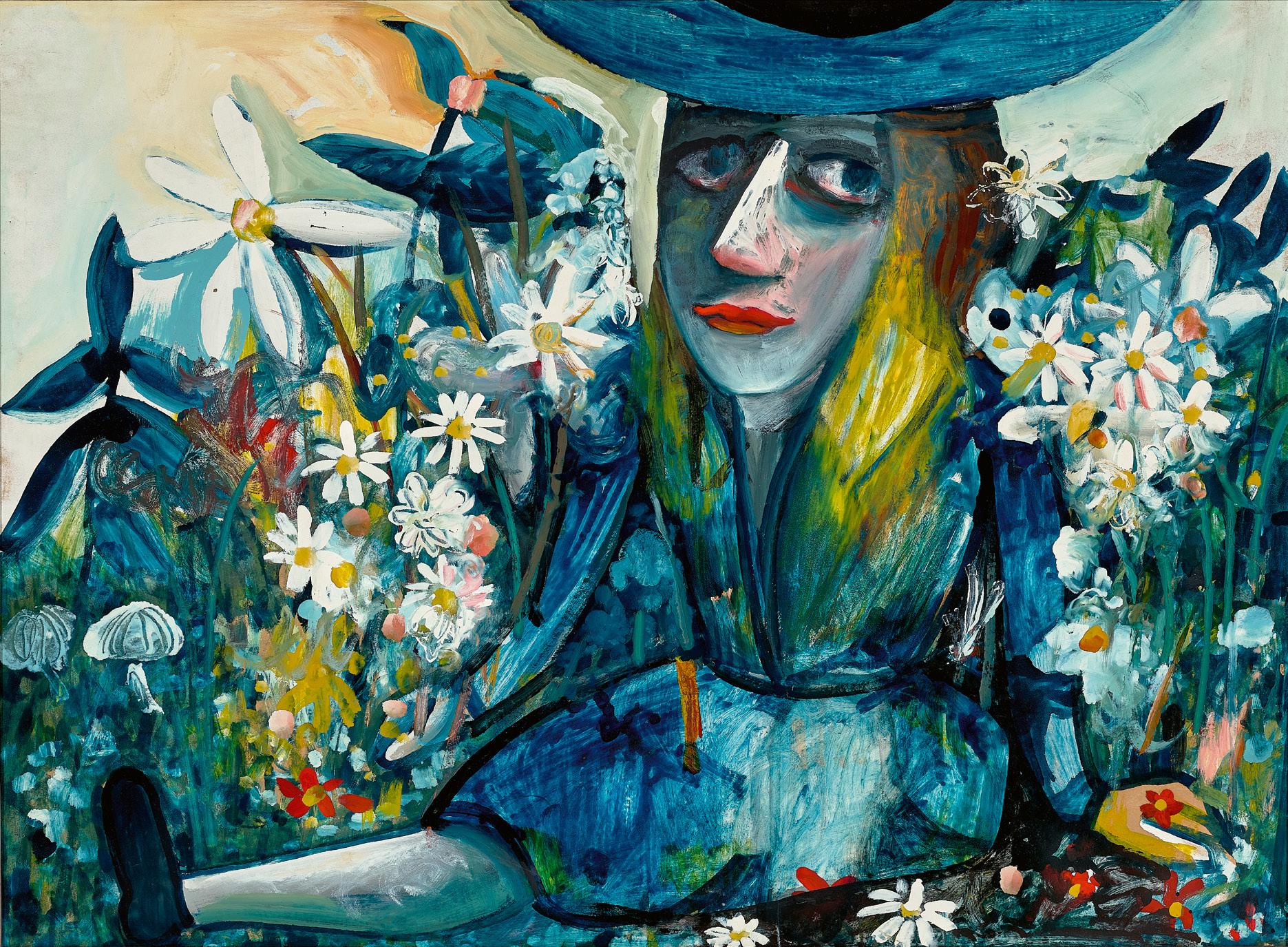
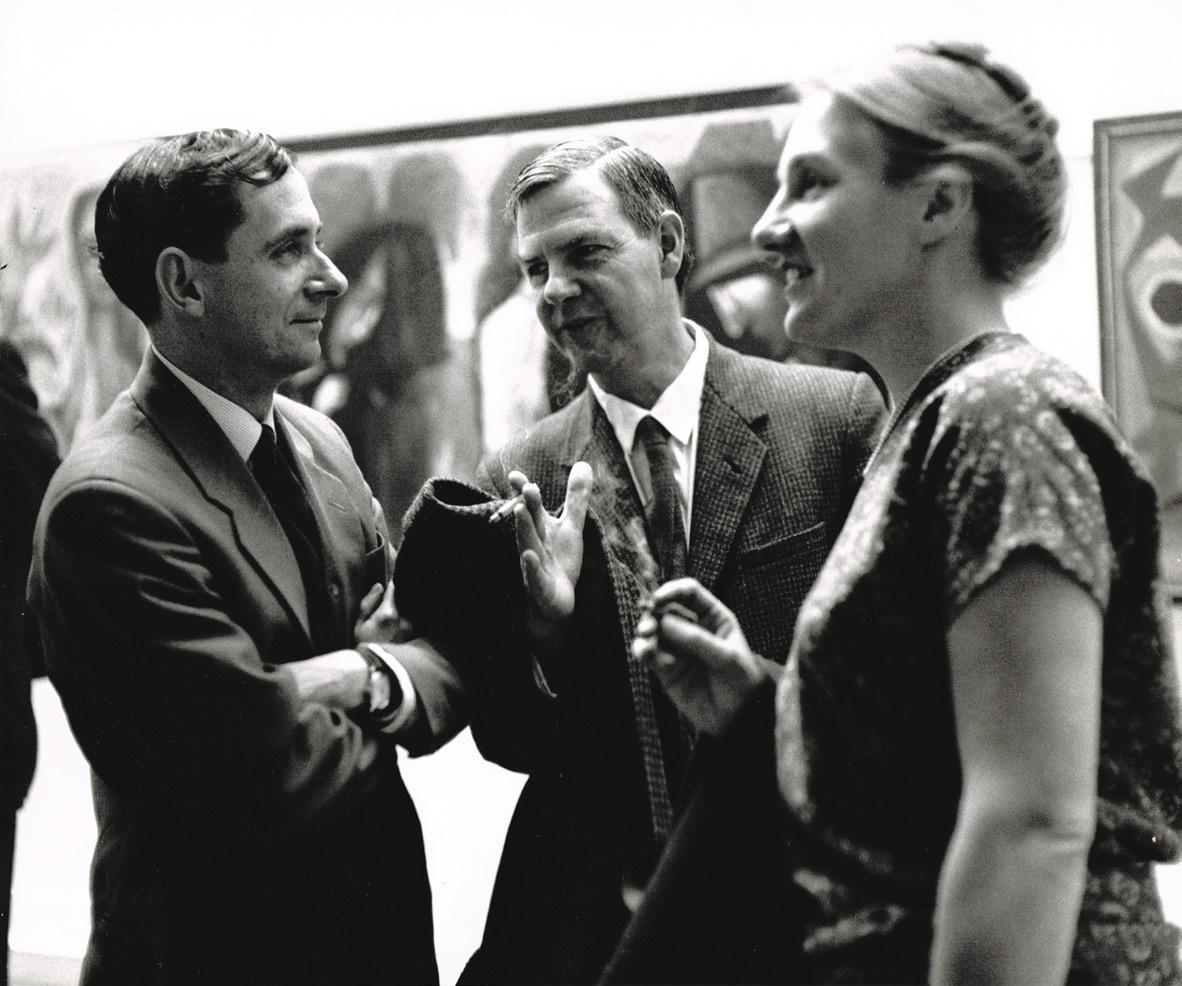
Artists Charles Blackman, Arthur Boyd and Barbara Blackman at the opening of the exhibition
Recent Australian Painting, Whitechapel Gallery, July 1961
courtesy of Whitechapel Gallery, Whitechapel Gallery Archive
Blackman attended evening classes at the East Sydney Technical School during the early 1940s and later, undertook a handful of painting classes with Hayward Veal at the Meldrum School of Painting which constituted his only formal art training. From 1946 – 47 he participated in life drawing classes at the Society of Realist Art and it was at this time that Blackman met Lois Hunter, an avant-garde poet from New Zealand who introduced him to modern art and literature.4 Blackman followed Hunter to Brisbane in 1948 where he befriended local artists and writers, including Barbara (née Patterson) and Barrett Reid, both members of the local Barjai group of poets. Blackman and Barbara later moved to Melbourne and were married in 1951. Blackman conceded that ‘it wasn’t until Barbara and I were actually living together that I really started painting pictures’ 5 and during the following twenty years of marriage their relationship provided a solid and nurturing foundation for family, friendship and sustained creativity.
Barbara’s pension for the sight-impaired and work as a life model allowed Blackman the freedom to paint full time, but this was curtailed by her first pregnancy in 1956, prompting him to find employment as a cook at the Eastbourne Café (better known in its later incarnation as Balzac restaurant) in Wellington Parade, East Melbourne. The café was run by his friend, Georges Mora, a European émigré who, with his beautiful young wife, Mirka, soon became what Barbara described as the ‘vortex of our marvellous
lives’, their apartment in Grosvenor Chambers at the ‘Paris End’ of Collins Street being a ‘centre of gravity (and much levity), the place of exhibitions, meetings, parties, dramatic moments, tableaux vivants, plots, confrontations, improvisations, last suppers, diagnoses and prognostications, exhibition after exhibition’.6 The café was busy and according to Blackman his efforts, ‘used to be referred to as the kitchen ballet. I used to leap from fridge to plate… my record was serving a hundred and four meals, three courses … in under two hours’.7 It was while he was working here that Blackman began to draw the images that formed the basis of the Alice in Wonderland series. As he recalled, ‘I … finished at 12[am] and then came home and my head was full of spinning plates and teacups … The restaurant came into the paintings.’ 8
There were other influences at work too. In late June 1956 Sidney Nolan exhibited his now iconic Ned Kelly and Blackman attended the opening at the new Gallery of Contemporary Art in Tavistock Place, Melbourne. Barrett Reid had introduced Nolan to Blackman in Brisbane in 1947 and they connected again in Melbourne through John and Sunday Reed whose home, Heide, was a cultural refuge for many of the most avant-garde artists, writers and thinkers of the day. Blackman had been impressed by Nolan’s art, identifying with his ability to ‘[trap] inner feeling in the paint’. While Blackman had already begun the Alice paintings, seeing Nolan’s Kelly exhibition inspired him to develop them into a major series. The image of
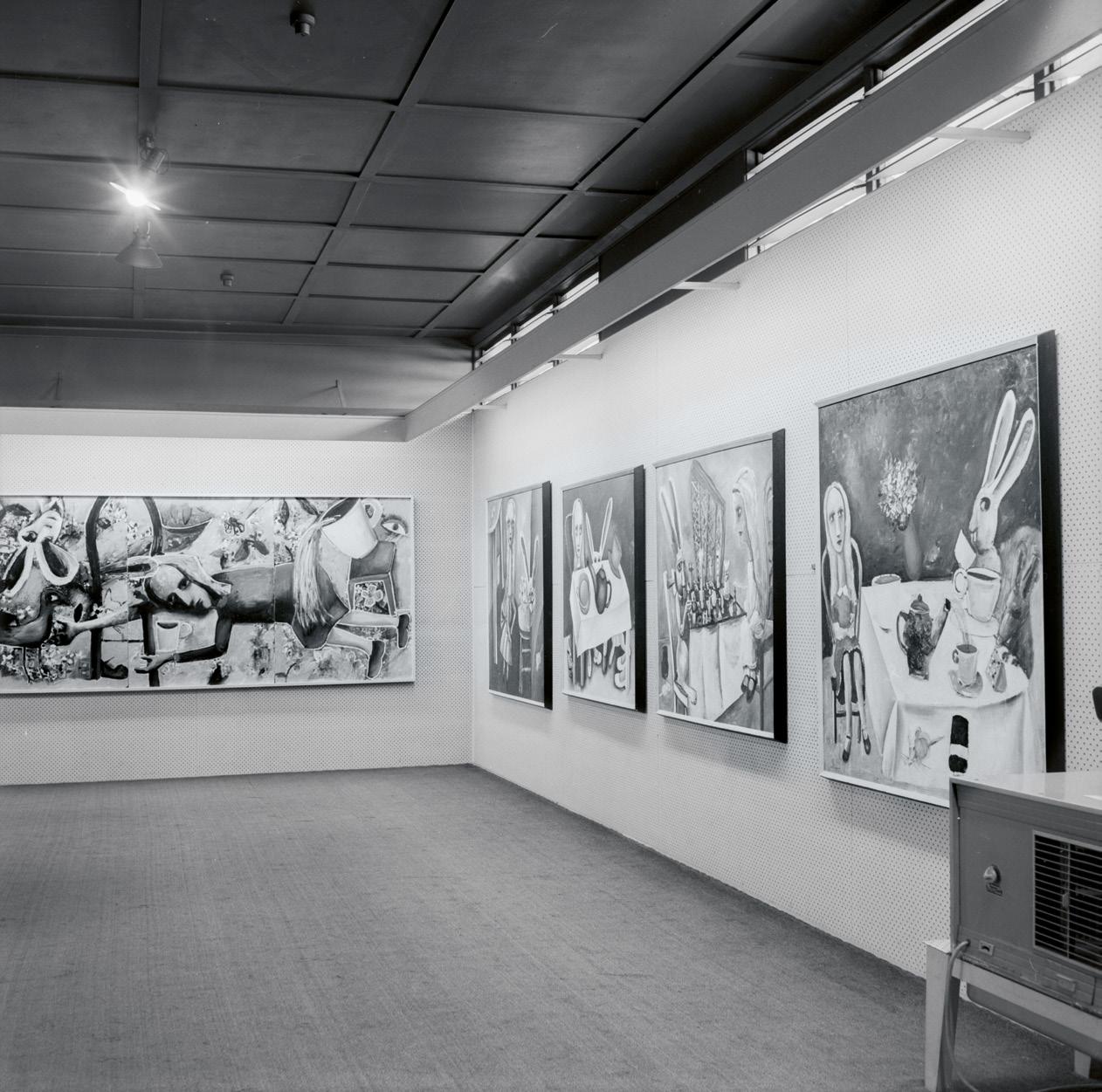
Ned Kelly and his stylised black mask became a touchstone within Nolan’s oeuvre and he returned to the subject repeatedly throughout his career. In a similar way, the White Rabbit – mischievous, masculine and playful, an anthropomorphised representation of the artist himself – became a recurring motif in Blackman’s later work.9
Blackman also responded to the way in which Nolan incorporated references to his own life into the Kelly paintings and related the miraculous transformation of Barbara’s pregnancy to Alice’s fantastic experiences, as well as her increasing blindness and the spatial disorientation this caused. In addition to these very personal connections, as Felicity St John Moore has documented, the series also incorporates symbolic references to Nolan and the Reeds, the Boyd family home at Murrumbeena, as well as pictorial allusions to contemporary artworld politics.10 Add to this the couple’s interest in Surrealism and appreciation of the absurd and irrational, combined with various everyday items that Blackman appropriated for his compositions, and all of the ingredients for what would become one of the most renowned series of paintings in modern Australian art were in place.
Installation view of the Charles Blackman exhibition Alice In Wonderland, Johnstone Gallery, Brisbane, 4 – 21 September 1966 photographer: Arthur Davenport courtesy of James Hardie Library of Australian Fine Arts, State Library of Queensland, Brisbane
The series was launched in early 1957 at the exhibition, Paintings from Alice in Wonderland, which was held at the Gallery of Contemporary Art. The exhibition was far from a commercial success and while it did attract considerable comment in the newspapers, Arnold Shore was the most enthusiastic, writing that ‘Salient incidents… are freely interpreted and the artist’s purpose is to suggest the magical topsy-turvy world which the heroine met in her journey through wonderland. Thus, teapots pour of their own volition and bottles of ink fly through the air as the artist seeks to convey the humour of the Mad Hatter’s tea party.’ 11
The subject of Alice and her adventures in Wonderland continued to engage Blackman through to 1957 with exhibitions that year in Melbourne and Brisbane. Alice amongst flowers, c.195657, was sold privately by Clune Galleries, Sydney to American publisher, Kurt Enoch and his wife, Margaret, on their visit to Sydney in March 1959. Clune Galleries, which opened in 1957, presented the exhibition Recent Paintings by Charles Blackman, in July 1958, one of its first by a solo artist. The artist’s delight in the varied form and colour of this botanical subject-matter

Charles Blackman
Triptych Alice, 1957 oil and enamel on board
121.6 x 274.1cm
The State Art Collection, Art Gallery of Western Australia, Perth
© Charles Blackman/Copyright Agency 2025
is palpable and he lays down the paint – with an emphasis on the familiar palette of blue, yellow and white that is a feature of many of the Alice pictures – with a sense of freedom and energy that demonstrates both his confidence and great facility with the brush. There is a distinct tension that runs throughout the Alice series and its depictions of a young, carefree girl (Alice) who is on an extraordinary adventure, and the parallel symbolic representation of a mature woman (Barbara) confronting the trials and reality of her life. Skilfully exploiting this dynamic, here, Blackman reminds us that the girl amidst the flowers, a freshlypicked posy in her right hand, is not all innocence and fun. Bright red lips and brooding eyes direct us back to the adult world and the challenges of Barbara’s increasing blindness. If the intensity of her gaze suggests a knowing sense of resignation, the depiction of the figure in a space that is filled with flowers offers the promise of joy and delight amidst the seriousness and responsibilities of life.
With examples now represented in major private and public collections across the country, including the National Gallery of Victoria and Art Gallery of Western Australia, the Alice in Wonderland series represented a significant turning point in Blackman’s career. Alice was a subject that, in his words, ‘allowed me to paint in a
totally different style. [To believe] that anything is allowable.’ 12 As his own life flourished, so did his art and his imaginative depiction of Barbara as Alice ‘[released] in Blackman… the imaginative capacity to explore freely, without the worry of strict realism or logic, that world of experience, of feeling, which exists in all of us.’ 13
1. Carroll, L., Alice’s Adventures in Wonderland: Illustrated by Charles Blackman, Amadio, N. (ed.), A. H. & A. W. Reed, Sydney, 1982, p. 14
2. St John Moore, F., ‘Conception to Birth: The Alice in Wonderland Series’ in St John Moore, F. & Smith, G., Charles Blackman: Alice in Wonderland, National Gallery of Victoria, Melbourne, 2006, p. 10
3. The artist interviewed by Robert Peach, Sunday Night Radio Two, ABC Radio, 9 September 1973 cited ibid.
4. For detailed biographical information see St John Moore, Charles Blackman: Schoolgirls and Angels, National Gallery of Victoria, Melbourne, 1993, pp. 15 – 29
5. Charles Blackman cited in Shapcott, T., Focus on Charles Blackman, University of Queensland Press, Brisbane, 1967, p. 13
6. Blackman, B., Glass After Glass: Autobiographical Reflections, Penguin, Melbourne, 1997, p. 172
7. St John Moore, 2006, op. cit., p. 11
8 Charles Blackman cited in Shapcott, T., The Art of Charles Blackman, Andre Deutsch, London, 1989, p. 23
9. ibid., p. 26. In addition to illustrating a 1982 publication of Lewis Carroll’s story with a selection of the Alice paintings and some new watercolours and drawings (see footnote 1), Blackman was commissioned to design the program and sets for Alice in Wonderland, a ballet performed in Perth in 1984.
10. See St John Moore, 2006, op. cit., p. 169
11. Shore, A., ‘Painter in Alice’s Wonderland’, Age, Melbourne, 12 February 1957, p. 2
12. Amadio, N., Charles Blackman: The Lost Domains, A. H. & A. W. Reed, Sydney, 1980, p. 25
13. Shapcott, 1967, op. cit., p. 30
Kirsty Grant
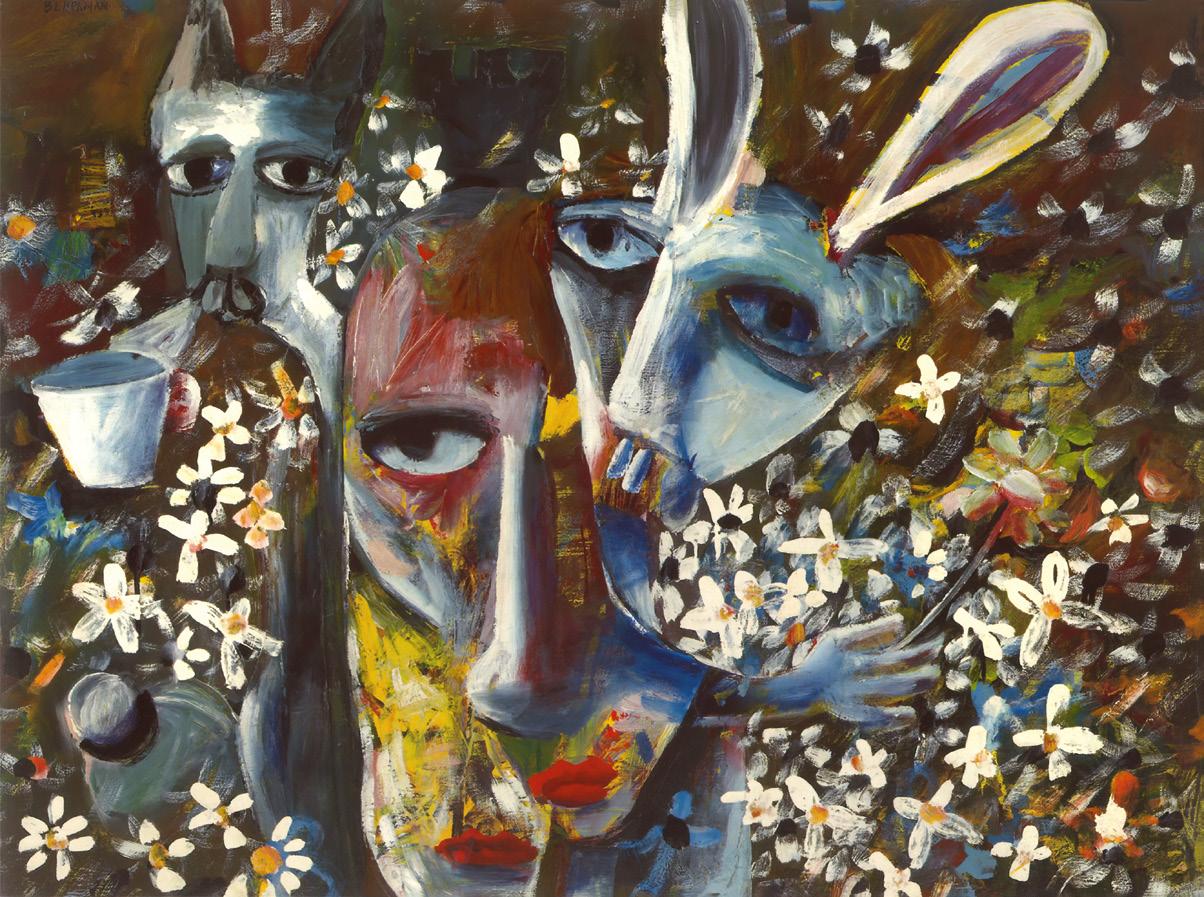
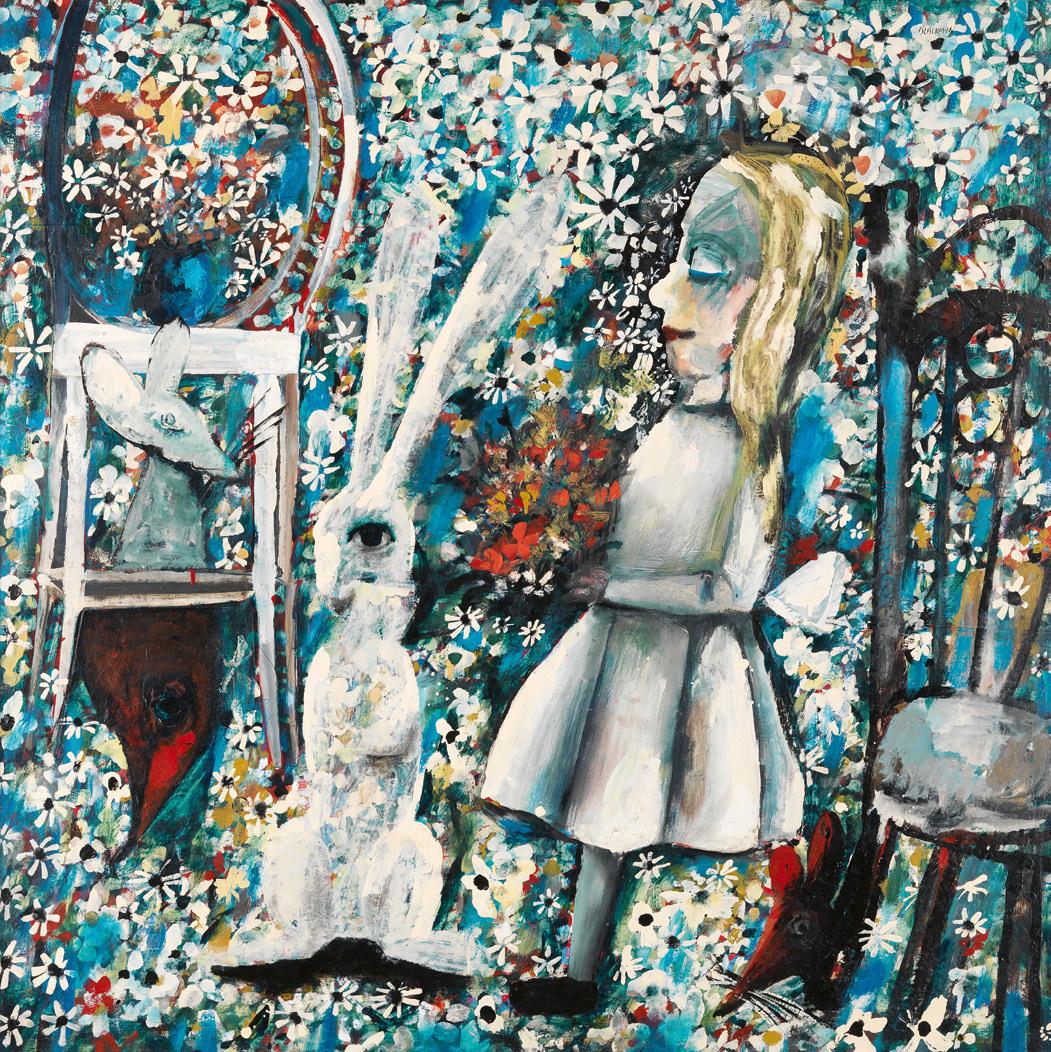
Charles Blackman
Metamorphosis, 1957 oil and enamel on composition board
84.5 x 112.5 cm
Private collection, Melbourne
© Charles Blackman/Copyright Agency 2025
Charles Blackman
The blue Alice, 1956 – 57
tempera, oil and household enamel on board
122.0 x 122.0 cm
Queensland Art Gallery | Gallery of Modern Art, Brisbane
© Charles Blackman/Copyright Agency 2025
oil on canvas
152.5 x 198.0 cm
signed and dated lower right: John / Olsen / ‘91
signed, dated and inscribed with title on stretcher bar verso: ‘Adios Grumpy Author’ John Olsen 91
Estimate: $200,000 – 300,000
Provenance
Australian Galleries, Melbourne (label attached verso) Private collection, Melbourne, acquired from the above 6 November 1991
Exhibited
John Olsen, Australian Galleries, Melbourne, 28 October –20 November 1991, cat. 2 (as ‘Adios Grumpy Author’)
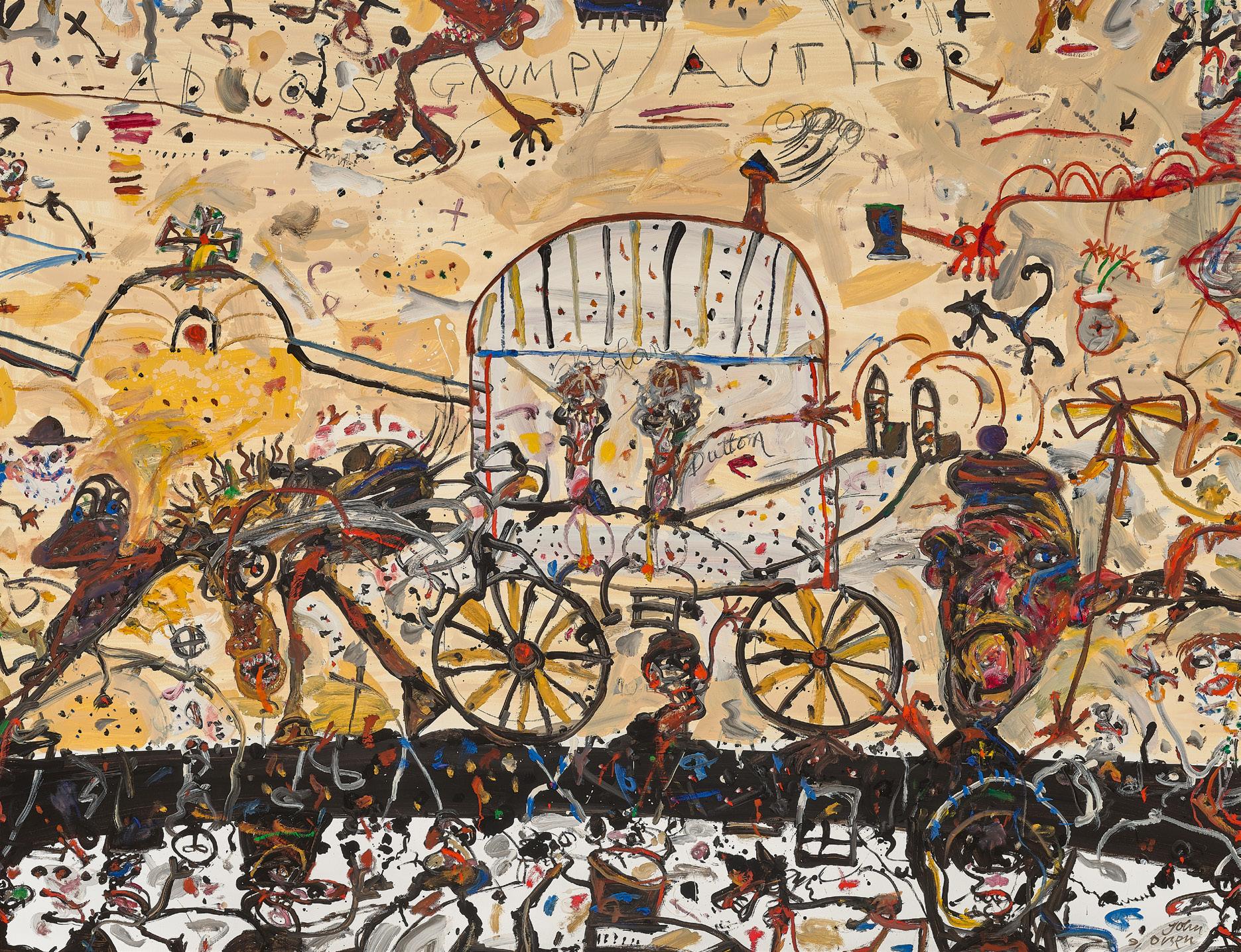
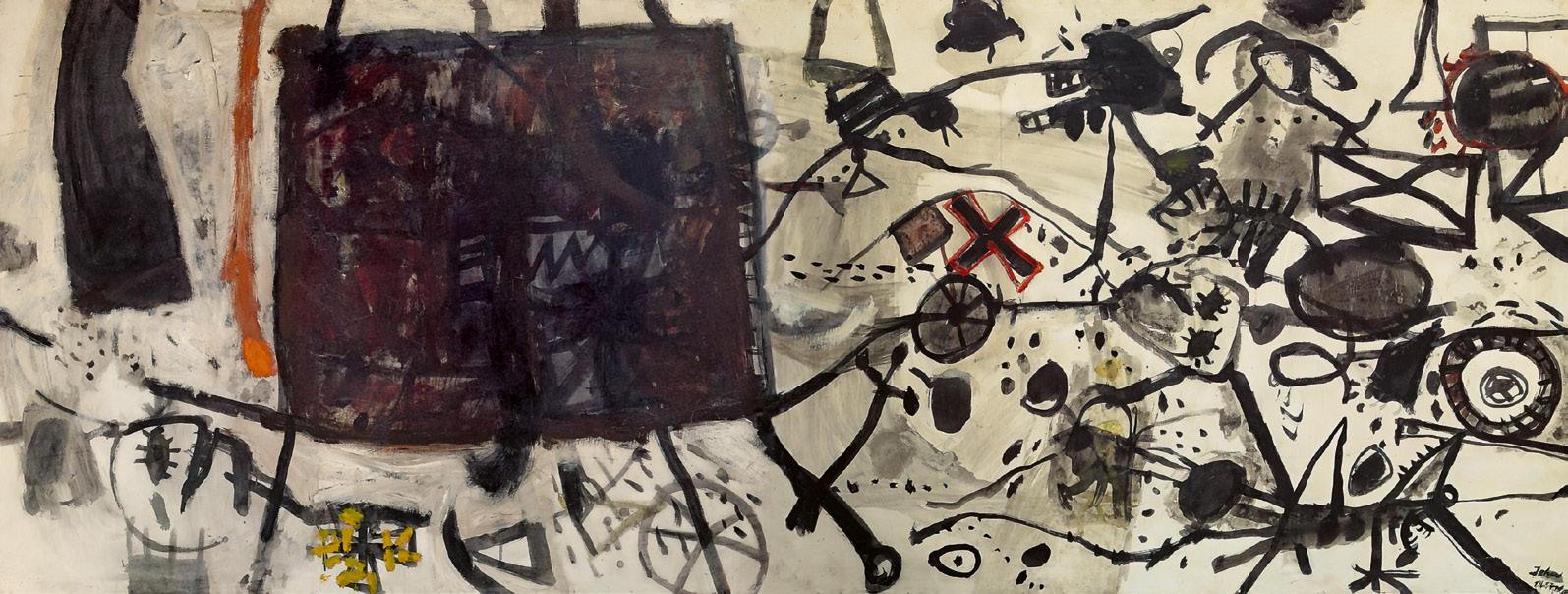
John Olsen
The procession, 1960 synthetic polymer paint, ink and wash on composition board
91.5 x 244.0 cm
Private collection, Melbourne
© John Olsen/Copyright Agency, 2025
In the late 1980s and early 1990s, as he entered a new phase of his life, John Olsen embarked on an unprecedented period of existential contemplation, ruminating on the peripatetic trajectory of his life and, more poignantly, the nature of mortality and artistic legacy in general. The large paintings that emerged from this period of soul-searching were characterised by the poetic spirit and dark colouration of the Iberian Peninsula, a region that had held Olsen in thrall since his first sojourn there more than four decades earlier. Adios, grumpy author, 1991, belongs to an important subgroup of works within this period featuring celebrated artists and authors travelling in Spanish gypsy caravans. Full of absurd humour and activity blurring past and present, these works commemorated important figures in Olsen’s life and career, uniting them with the caravan as symbols of creative and spiritual liberation. The grumpy author gaily farewelled in the title of this painting is the Australian novelist Patrick White (1912 - 1990), who, in Olsen’s narrative, has been unceremoniously and posthumously ejected from the jolly caravan.1
In December 1987, Olsen made a trip back to the remote village of Deià, Mallorca – a coastal settlement untouched by tourism and preserving peasant life. While the main purpose of his travel was to visit the resting place of Robert Graves, an English poet whom
he had befriended there many years before, Olsen renewed his fascination with artists such as Goya, Zurbarán and Picasso, and immersed himself in the writings of revered poet Federico García Lorca.2 The fascination with and respect for gypsy culture in Lorca’s ballads fed directly into Olsen’s suite of works produced upon his return. In 1991, Olsen explained, ‘he [Lorca] thought they were the real poets of Spain. They were the outsiders. To be on the gypsy caravan is freedom; it is independence from all those who want to dominate us. It is about not conforming to the pressures of society; there are no frontiers. You have to qualify in these categories to get on board.’3 Candidates qualifying for this honour, in Olsen’s esteem, were authors Samuel Beckett (Beckett Joins the Gypsy Caravan, 1990), Robert Graves (Gypsy Caravan I, 1989), artists Francisco Goya and Sidney Nolan, and the author and historian Geoffrey Dutton, the latter two appearing in the centre of this painting.4
Adios grumpy author is a lively painting, with a large expanse of buttery yellow pigment and gessoed canvas covered in Olsen’s signature haptic gesture. Perched precariously on two wheels, with smoke cheerfully billowing from its chimney, the donkey-drawn caravan becomes a travelling white sanctuary, removed from the clamouring throngs of townsfolk and animals lining the street and

John Olsen
Self portrait. Travelling west, 1990 – 92 oil on canvas
152.5 x 122.0 cm
Private collection
© John Olsen/Copyright Agency, 2025
the canvas. These figures, portrayed with exaggerated physical features and cluttered accoutrements, are tragi-comic personages caught in a state of flux – Olsen’s ‘circus animals’ of Yeats’ poem of the same name.5 Two legs protrude from the back of the caravan, encircled by cartoonish motion lines, booting White from the safety of the caravan. Contrasting with the vigorous drawing of these figures is the stillness of Patrick White’s figure, scowling and raising his hands helplessly with slapstick humour in the lower right-hand corner of the scene. Olsen has inserted himself into this scene, too – his distinctive profile leading the donkey and procession to the left, unbothered by the drama unfolding behind him. The theme of movement, of non-conformist freedom and of continuing life, is central to these later works, symbolised by turning wheels and the frantic march of feet. Elucidating this existential motif in Dónde voy? Self-portraits in moments of doubt, 1989 (Art Gallery of New South Wales), a key work of this period, Olsen wrote: ‘The seeing to assure itself of its own existence, hence a lot of toing and froing – looks at itself; looks away from itself and patters frantically (hence the shoes) lest it fall into silence and non-being.’6
The motif of the gypsy caravan has evolved throughout these paintings, from a sombre square against the light, reminiscent of
the portable altar/reliquary in Olsen’s 1960 work The Procession (Charles Nodrum collection, on loan to Latrobe University) to a rickety and noisy labourer’s cart in the tinker, El Amoladar (The tinker), 1986 (private collection), to a structure symbolising the artist’s own home as he relocated rurally to be with his fourth wife, in Self Portrait Travelling West, 1990 (private collection). What all these caravans have in common in Olsen’s narrative universe is their containing of life’s accumulated baggage, and thanks to the progress of their trundling wheels, the possibility of acquiring yet more life experience on the road.
1. The narrative arc of Patrick White’s banishment from the gypsy caravan was developed in September 1991 and sketched in ink and watercolour in John Olsen’s sketchbooks, reproduced in John Olsen, Goya’s Dog, National Art School, Sydney, 2021, pp. 128 – 29
2. Hart, D., John Olsen, Craftsman House, Sydney, 1991, p. 201
3. John Olsen, cited ibid.
4. Although Nolan and Olsen hardly ever met, the artist painted him into the gypsy caravan canon both here and in Nolan at Broome, 1991 – 1992. In the mid-1980s, Geoffrey Dutton and John Olsen were part of an expedition together to remote Northwestern Australia.
5. Deborah Hart, cited in John Olsen: the You Beaut Country, National Gallery of Victoria, Melbourne, 2016, p. 61
6. John Olsen, cited in Hart, 1991, op. cit., p. 198
Lucie Reeves-Smith
copper
230.0 cm length
Estimate: $350,000 – 450,000
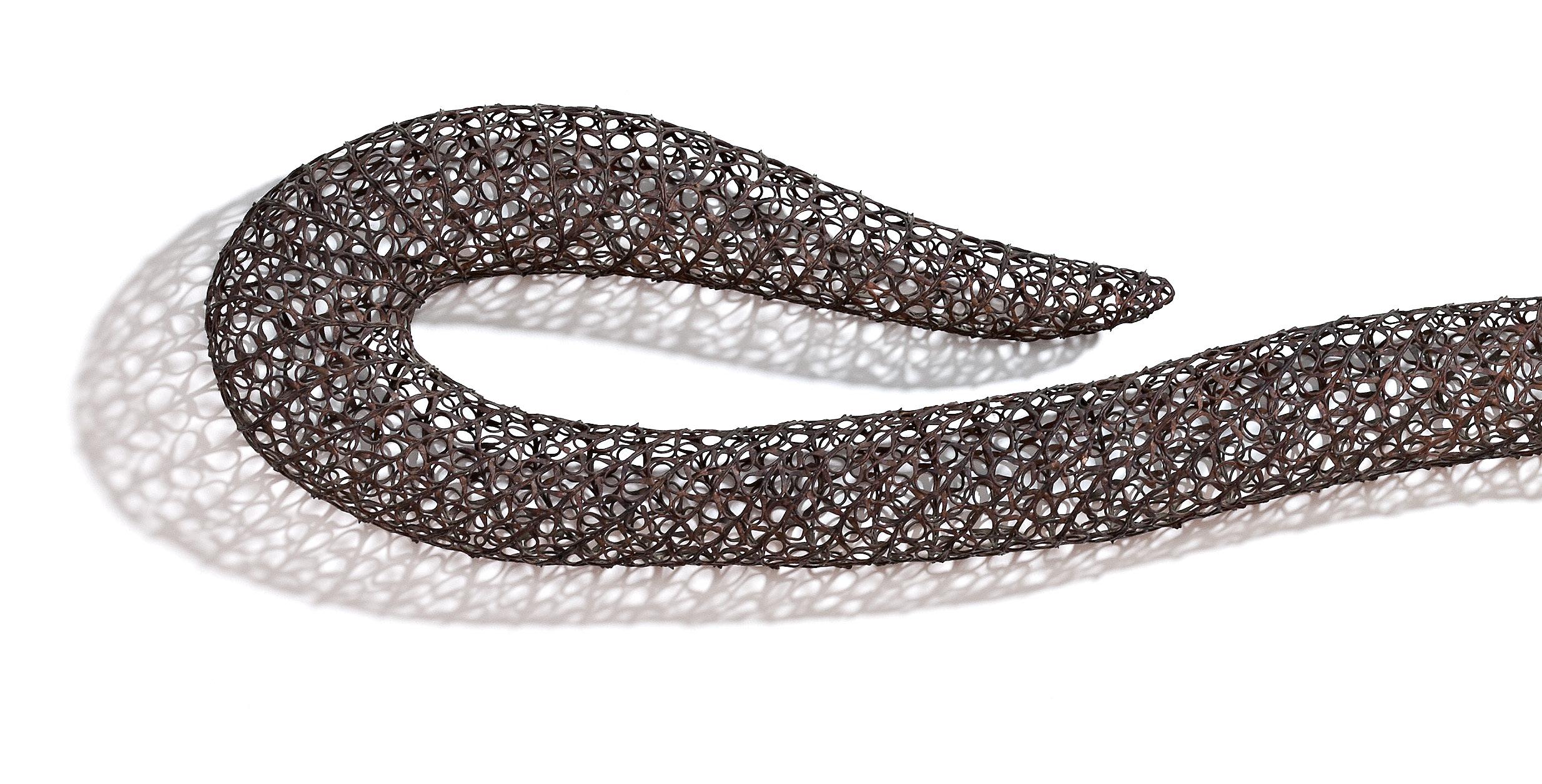
Roslyn Oxley9 Gallery, Sydney
Private collection, Melbourne
Deutscher and Hackett, Sydney, 30 November 2016, lot 48
Private collection, Sydney
Literature
Fink, H., Bronwyn Oliver: Strange Things, Piper Press, Sydney, 2017, pp. 114 (illus.), 121, 219
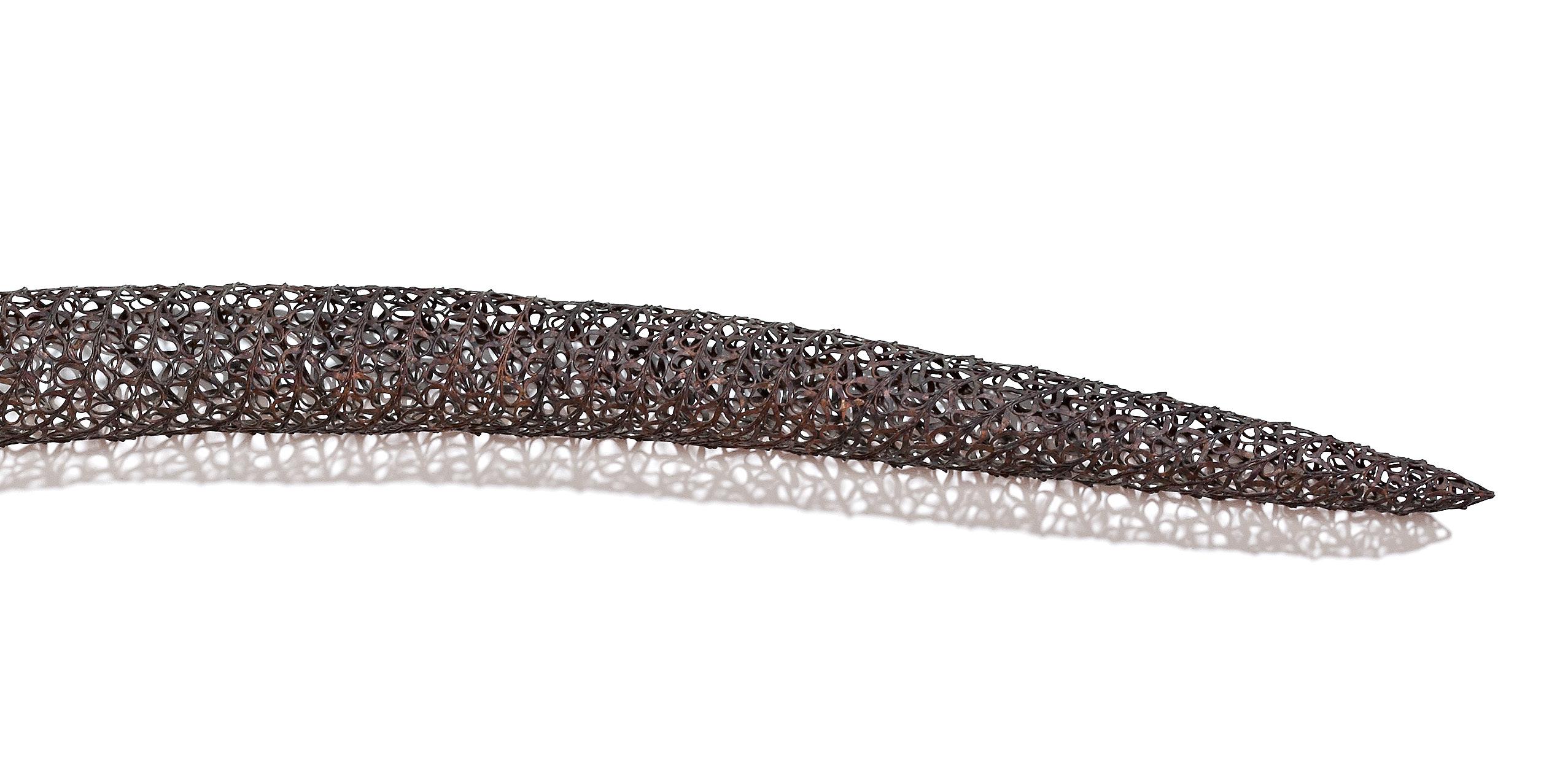
‘When the ideas, the formal elements and the medium all work together, a sculpture will ‘sing’ with a kind of rightness. It takes on a life, a presence, which is removed from this world. It belongs to a mythical other life, without a place in time.’
1
One of Australia’s most highly acclaimed and innovative sculptors, Bronwyn Oliver remains celebrated for her extraordinary ability to produce meticulously articulated works of immense beauty and grace that unite timeless, organic forms of the natural world with
the abstract logic of geometry. As writer Hannah Fink poignantly observed upon the artist’s untimely passing in 2006, ‘Bronwyn Oliver had that rarest of all skills: she knew how to create beauty. She was modest, yet utterly sure of her vision, secure in the confidence of her originality. Her art was fully resolved – perfect, really – and she stands alone in the annals of Australian art history. There was no-one like her: she invented her own deeply intelligent form, and entered fully into the world that it opened out to her...’ 2
Simple yet complicated, fragile yet strong, eccentric though at the same time oddly straightforward, Lick, 1996 is a consummate example of Oliver’s delicately woven copper and bronze assemblages that universally surprise and inspire –

beguiling both the eye and the mind through their enigmatic presence and mesmerising tactility. Lyrical and rhythmic in its elongated calligraphic format, the work importantly bears strong stylistic affinities with other horizontal sculptures by the artist, including Curlicue, 1991 (Queensland Art Gallery I Gallery of Modern Art); Trace, 2001 (National Gallery of Australia, Canberra); Inscription, 2000 (private collection); and Idiom, 2001 (private collection) – all of which mimic the stroke of a pen scrawling text across a page, unfolding across the wall ‘in a continuous movement as if flowing from an unseen hand.’3 Widely regarded among Oliver’s most accomplished achievements, these ‘Cursive’ works not only reveal the artist at the very height of her powers, but in their iconographic reference to ‘text’ they arguably encapsulate more eloquently than anywhere else Oliver’s concept of writing as an analogy for her sculptural practice. Embracing the subtle wordplay between ‘text’ and ‘weave’ – with both deriving from the same Latin origin texare – thus Oliver here skilfully intertwines the written word and visual symbol in her art; as she elucidated, ‘I think about sculpture as a kind of poetry (physical poetry), and construct my sculpture like constructing a sentence, in the sense that I try to exclude associations that are clouding the centre and leave in only the associations that add meaning to the core.’4
With its title here alluding to the quick movement of a tongue or more metaphorically, the hasty application of paint with a brush, Lick seems to indeed possess a life force of its own – a fluid energy that derives from the painstakingly manipulated twists and welds of pliant copper which repeatedly coil and recoil to create the ‘weave’ microstructure that is the hallmark of Oliver’s art. Integral to this duality between that which is immobile and inert, yet also active and dynamic, are the intricate shadows cast by Oliver’s sculpture – an optical aspect so fundamental to the formalist geometry of the work that at times the shadow itself almost becomes more powerful… becomes the object. Such interplay notably suggests ‘a passage
from one place to another, a journey from a material dimension into an imaginative other world,’ 5 and no doubt informed Oliver’s conception of Lick specifically, which was originally destined for display above the long Jarrah-wood dining table (upon which her partner Huon Hooke would conduct wine tastings) in the couple’s newly transformed Federation home in Haberfield. As she proudly observed at the time, ‘…This last piece that I have finished I am very pleased with. I made it for a long wall in the living room, and it looks great. It is a horizontal work [Lick] made to hang on the wall behind our dining table, and it really gives a feeling of stretching out. It looks especially good on the peeling paintwork…’6
Elegant and refined, Lick exemplifies well Oliver’s unique legacy of beauty and wonder, strength and life – her skilful mastery of form, space and material to create flawless sculptural works that, although unmistakably contemporary in their construction, simultaneously betray a timeless, ethereal quality that resonates deeply with the human soul.
1. Bronwyn Oliver, cited in Sturgeon, G., ‘Bronwyn Oliver’, Contemporary Australian Sculpture, Craftsman House, Sydney, 1991 p. 74
2. Fink, H., ‘Catalogue Essay’ in Bronwyn Oliver (1959 – 2006), Roslyn Oxley9, Sydney, 2006, see: https://www.roslynoxley9.com.au/exhibition/bronwyn-oliver-1959-2006/46saa
3. Fink, H., Bronwyn Oliver: Strange Things, Piper Press, Sydney, 2017, p. 136
4. Bronwyn Oliver, cited ibid.
5. Bullock, N., in Bond, A. and Tunnicliffe, W., (eds.), Contemporary: Art Gallery of New South Wales Contemporary Collection, Art Gallery of New South Wales, Sydney, 2006, p. 326
6. Bronwyn Oliver, cited in Fink, op. cit., p. 121
Veronica Angelatos

polished and clear-coated bronze
205.0 x 115.0 x 75.0 cm
edition: 3/3
signed and numbered at base: del kathryn barton 3/3
Estimate: $80,000 – 120,000
Provenance
Roslyn Oxley9 Gallery, Sydney Private collection, Sydney
Exhibited
Del Kathryn Barton: sing blood-wings sing, Albertz Benda, New York, 28 February – 13 April 2019 (another example) I want to build a bed for all tired beds, Roslyn Oxley9 Gallery, Sydney, 3 – 23 October 2019, cat. 16


Calmly striking an expansive and dramatic pose, the gleaming golden figure Here she HEAR, 2019 gives a physical form to the aloof sirens of Del Kathryn Barton’s mystical world. The artist’s largest sculpture at the time of its creation, this towering freestanding being is endowed with gracefully elongated limbs, large, outstretched palms and multiple ears sprouting from her thighs and neck. Barton’s surreal figure has evolved from the chimeric female avatars that have populated her painted canvases for the last twenty years, here bearing multiple physical attributes of a benevolent and attentive guardian.
A two-time winner of the Archibald Prize for portrait painting, Del Kathryn Barton’s artistic practice is remarkably diverse, expanding beyond the planar support to now include cinematography, largescale installations and sculpture created in collaboration with master craftspeople.1 Barton’s multidisciplinary practice revolves around figuration and is anchored by a process of theme-andvariation that creates strong aesthetic links between each of her works. Having been drawn to the medium of cast bronze for its rich artistic history, Barton’s stylised sculptural works combine ancient techniques with striking contemporary finishes. The surface of Here she HEAR is uniformly monochrome and reflective, dazzling the eye and directing attention instead to the sculpture’s silhouette,
Richard Avedon (American, 1923 – 2004)
Dovima with Elephants, Evening Dress by Dior, Cirque d’Hiver, Paris, 1955 Art Institute of Chicago, Chicago
distorted with Surrealist hybridity. Barton has employed the ancient Greek contrapposto technique to create a naturalistic, dynamic stance and to further emphasise the figure’s elongated limbs and impressive scale. Her swan-like form, with arms held gracefully aloft and her body tapering to a sinuous column culminating in pointed high-heeled shoes, echoes the powerfully glamorous pose of fashion supermodel Dorothy Juba in Richard Avedon’s 1955 photograph Dovima with Elephants, Cirque d’Hiver, Paris.
Smooth and mirror-polished, Here she HEAR is sharply defined, coated in a lustrous shell that reflects her surroundings. This radiance is a defining feature of Barton’s works, with Julie Ewington noting ‘…in her world everything is always light, bright and backlit with an immanent glow.’ 2 The slippery shininess of the sculpture’s surface, while seductive, also repels the viewer, endowing the figure with the same majestic and untouchable presence of Barton’s painted goddesses and densely patterned surfaces.
The titles of Barton’s works are often derived from poetic stream-of-consciousness jottings from the studio, a type of Dada automatic writing.3 The wordplay of homophones within the title of this work, Here she HEAR, underscores the figure’s imposing presence and large ears. Silently listening
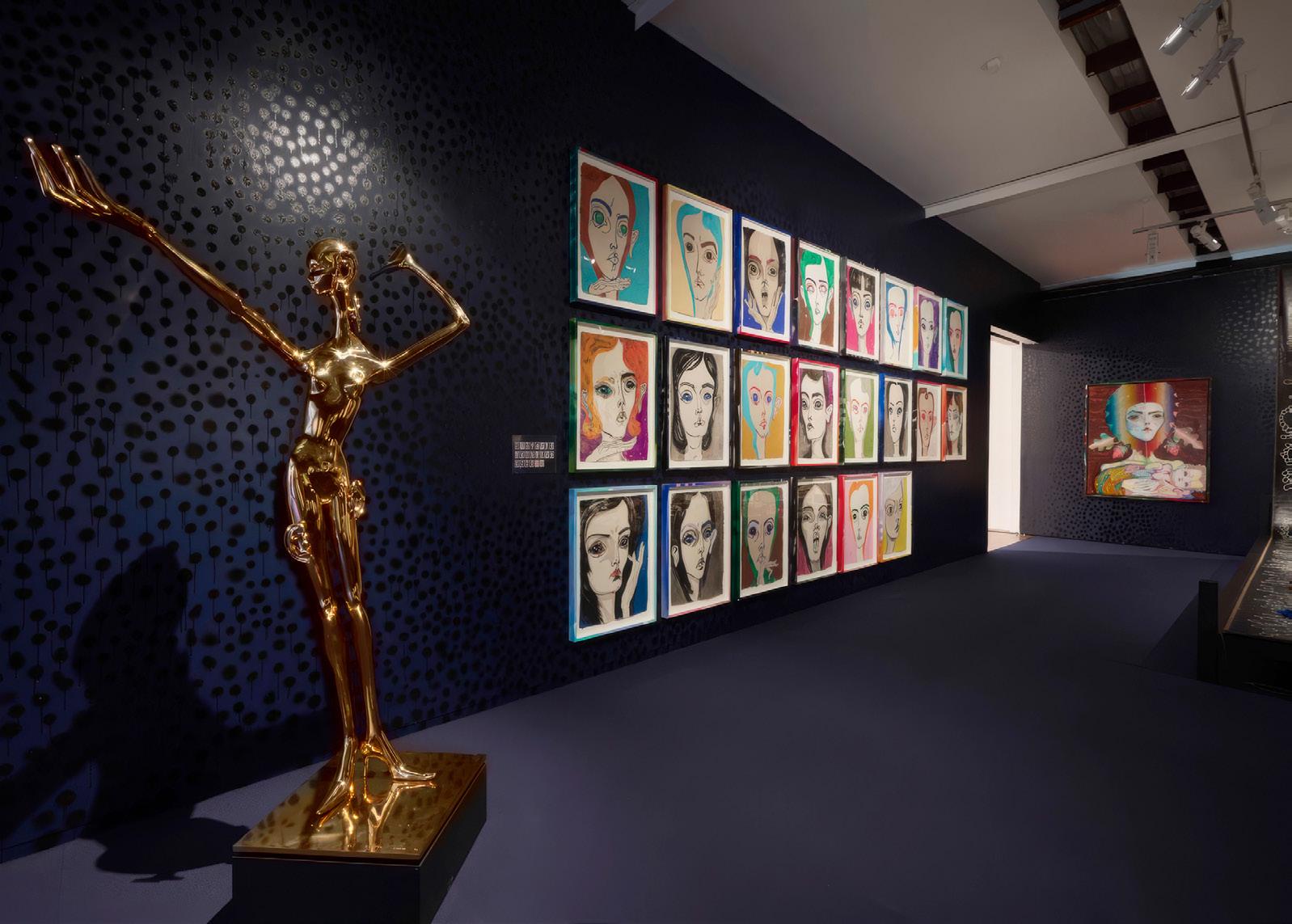
and receiving with open hands, Barton’s guiding goddess joins the mother figures of the artist’s universe in confidently navigating the ‘maelstrom of desires, demands and duties.’4
Produced in an edition of three, Here she HEAR was first presented in New York, the only sculpture within a solo exhibition of new paintings at Albertz Benda. When it was shown in Sydney at Roslyn Oxley9 gallery, it was accompanied by three other large bronze busts bearing similar attributes, one of which was later described by the artist: ‘This shiny one looks up and outwards; she knows how to stretch, command and move her being.’ 5
1. This sculpture was fabricated by Crawford’s Foundry in Sydney.
2. Ewington, J., Del Kathryn Barton, Piper Press, Sydney, 2014, p. 47
3. Wallis, P., ‘Matrix Of Desire’, Del Kathryn Barton: Highway is a Disco, National Gallery of Victoria, Melbourne, 2017, p. 10
4. Ewington, J., ‘Foreword’, I wanted to build a bed for all the tired beds, Roslyn Oxley9
5. Artist statement, Wynne Prize 2020, Art Gallery of New South Wales Lucie Reeves-Smith

19.0 x 34.5 x 19.0 cm (not including base)
edition: 1/8
signed, dated and numbered at base: Meadmore 1996 1/8 ©
Estimate: $25,000 – 35,000
Provenance
The Namits Collection, USA
Nye & Company, New Jersey, USA, 24 October 2024, lot 344 Private collection, Sydney

Jonny Niesche born 1972
Let the shadow come, 2019
dye sublimation print on polyester voile, auto-paint on aluminium flat bar frame 160.0 x 125.0 cm
Estimate: $20,000 – 30,000
Provenance
Sarah Cottier Gallery, Sydney Private collection, Melbourne, acquired from the above in 2019
Exhibited
Sarah Cottier Gallery at Sydney Contemporary 2019, Carriageworks, Sydney, 12 – 15 September 2019
oil on composition board
121.5 x 152.0 cm
Estimate: $120,000 – 150,000
Provenance
Pinacotheca, Melbourne
Private collection, Sydney
Deutscher~Menzies, Melbourne, 2 September 2003, lot 26
Private collection, Melbourne
Deutscher and Hackett, Melbourne, 29 August 2007, lot 6
Private collection, Sydney
Exhibited
Tony Tuckson 1921 – 1973: A Memorial Exhibition, Pinacotheca, Melbourne, 13 – 30 October 1982, cat. 77
A Selection of Important Twentieth Century Australian and New Zealand Paintings, Martin Browne Fine Art, Sydney, 23 August – 10 September 2000, cat. 3 (illus. in exhibition catalogue)
Literature
Tony Tuckson 1921 – 1973, Watters Gallery & Margaret Tuckson, Sydney, 1982, cat. 77, p. 44 (illus.)
‘...The red, black and white paintings... abandon the beauty of elaborately worked surface in hand-crafted objects, they abandon the pleasant associations we have with the colours of nature. Instead, they offer direct contact with the artist himself. They hide nothing. Each stage of the making can be seen and appreciated. The artist invites the spectator to watch the raw creative process; it is a generous, confident invitation and the paintings have great freshness...’ 1
Hailed by Daniel Thomas as ‘an Abstract Expressionist of world quality’ and ‘one of Australia’s best painters’ 2, Tony Tuckson remains revered for his rich, endlessly diverse legacy that encompassed a myriad of different painterly approaches and artistic influences from Turner, Picasso, Klee and Pollock, to the tribal design of Melanesian art and the calligraphic aesthetic of peripatetic Australian painter, Ian Fairweather. A modest, self-proclaimed ‘Sunday’ painter, Tuckson was a reclusive artist for both personal and ethical reasons and yet, he produced some of the most groundbreaking expressionist art to emerge on these shores – all the while juggling his full-time role as a committed senior arts administrator for over two decades. With its bold palette and dramatic gestural brushwork, Big red W, c.1964, offers an impressive example of the period of Tuckson’s oeuvre universally acclaimed as his finest – namely, the ‘Red, Black and White’ paintings, collectively so titled for their restricted chromatic palette. Revealing a keen awareness of American abstract expressionism and pop art, this chapter (broadly dated from 1961 to 1965) opened with elaborately worked imagery employing collage
elements and obvious narrative before gradually progressing to more energetic, minimalist abstractions exemplified by the present which, as Sandra McGrath elucidates, typically reveal ‘…a sense of inner tension that is checked and restrained. They are turgid and moody and represent some of the toughest, most difficult work of his career. Much too complete to be called transitional – they nevertheless exude a sense of unexploded energy and passion.’3
Not surprisingly perhaps, such evolution in Tuckson’s style from his elegant, painterly works of the fifties (which had featured poetic graffiti marks and a more subdued palette) was paralleled by a similar shift in emphasis in the collecting practices of the Art Gallery of New South Wales where he was then employed as Deputy Director – the subtle progression from Australian Aboriginal art to Melanesian art signalling ‘a change from fine delicate art to that which can be coarse and bold.’4 With its vast surface animated by a cacophony of self-assured expressive marks – broad blocks of colour, loose linear forms and dots of paints all of which reverberate against one another – indeed Big red W encapsulates well the artist’s unapologetically bold approach – his ‘rare and wild energy without parallel in Australian Art.’ 5 More broadly, the work attests the intuitive immediacy of Tuckson’s vision, his belief that ‘when you start worrying about the position of a mark, you cease to paint’6 , and his lifelong preoccupation with the very act of painting itself. As reflected by art critic James Gleeson upon the opening of Tuckson’s exhibition in 1973, ‘...What he is on about is the act of painting. His pictures are about what it feels like to paint a picture,’ 7 – and echoed more recently by contemporary abstractionist, Aida Tomescu, in her essay for the catalogue accompanying the Tuckson retrospective at the Art Gallery of New South Wales in 2018: ‘Tuckson’s paintings transcend being pinned down to one meaning, one subject. What is being expressed here is painting itself; its capacity to be about everything at once, its subjects and meanings always multiple.’8
1. Thomas, D. et al., Tony Tuckson, Craftsman House, Sydney, 1989, pp. 35 – 36
2. Thomas, D., ‘Tony Tuckson – An appreciation’, Art and Australia, Sydney, vol. 11, no. 3, 1974, p. 236
3. McGrath, S., ‘Tony Tuckson’, Art and Australia, Sydney, vol. 12, no. 2, 1974, p. 165
4. Thomas, 1989, op. cit., pp. 34 – 35
5. Gleeson, J., ‘Creative Violence’, Sun-Herald, Sydney, 18 April 1973, p. 36
6. McGrath, op. cit.
7. Gleeson, J., ‘The travail of painting’, Sun-Herald, Sydney, 22 April 1973
8. Tomescu, A., ‘Fluid Construction’ in Mimmocchi, D., (ed.). Tony Tuckson, Art Gallery of New South Wales, Sydney, 2018, p. 277
Veronica Angelatos
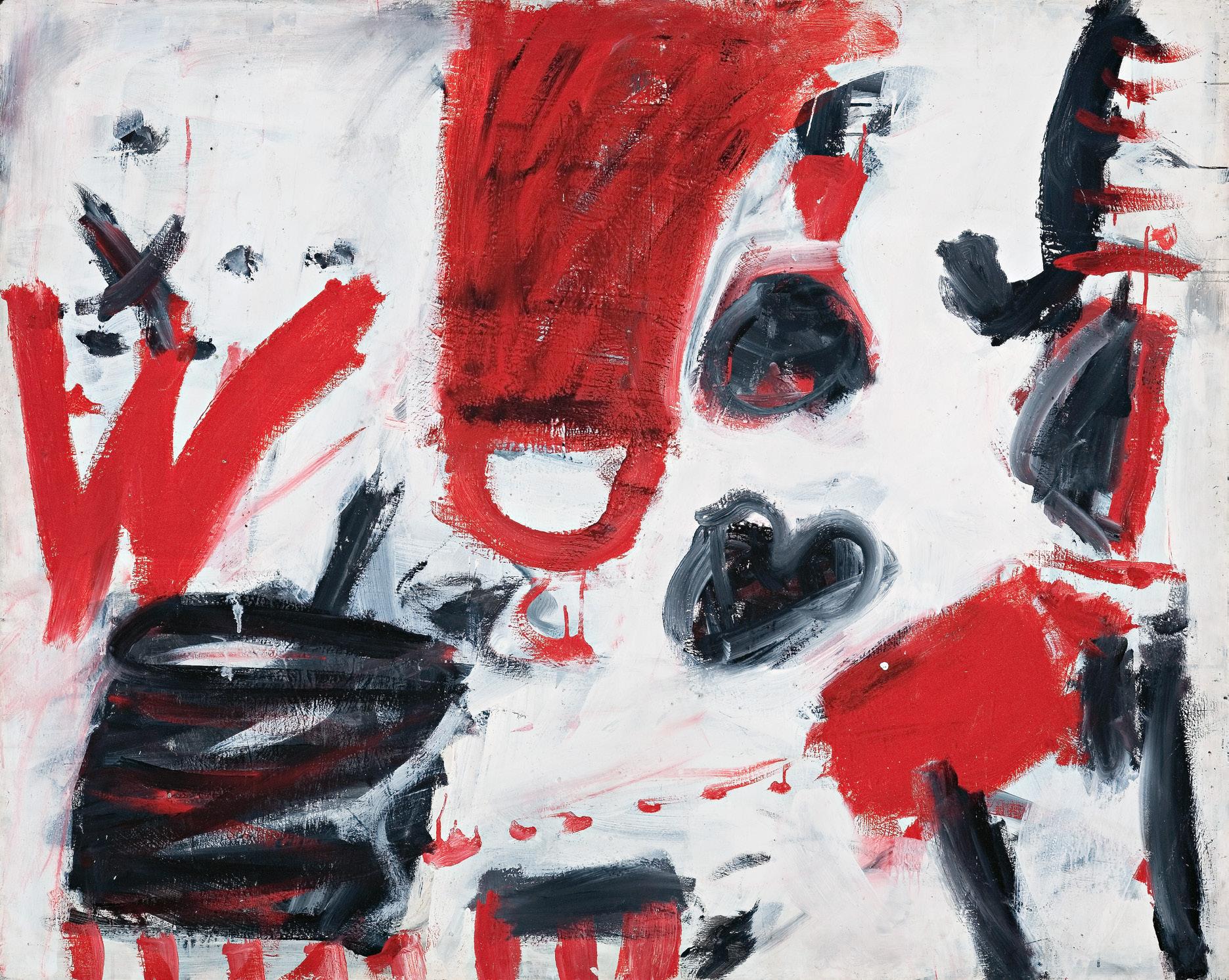
synthetic polymer paint on canvas
152.0 x 90.0 cm
bears inscription verso: artist’s name and Delmore Gallery cat. 93K039
Estimate: $70,000 – 90,000
Provenance
Commissioned by Delmore Gallery, via Alice Springs, Northern Territory in 1993
Chapman Gallery, Canberra
Private collection, Canberra, acquired from the above in 1996
Renowned for her colourful and vibrant paintings, Emily Kngwarreye chronicled on canvas the ever-changing desert country of her homeland Alhalkere. Located at the western edge of Utopia, this triangular shaped country was where Emily was born and where she lived in the traditions of the eastern Anmatyerre, following a way of life that had continued unchanged from long before European presence. Her mark making recorded the seasonal variations, sometime subtle, often dramatic, of the harsh desert environment and the explosion of growth that occurred after rain. Referred to by Emily as the ‘green time’ 1, the desert would come to life, wildflowers carpeting the red earth and plants and grasses flourishing, supplying the women with seeds, tubers and fruit.
Through her use of pattern and colour, Kngwarreye had seemingly endless variations to draw upon in the depiction of her country. Her paintings would often dissolve into fields of layered colour achieved through a build-up of dots upon dots, as featured in Untitled ( Awelye), 1993. Here, Kngwarreye bears witness though her painting to that abundance that covers the earth after rain and provides a basis for understanding the reverence of the woman’s ceremonial activities known as ‘Awelye’. As Stephen Gilchrist notes, ‘Many of Kngwarreye’s works reveal densely layered fields of dots within chords of colour harmonies. Layering is also an important conceptual part of Kngwarreye’s cultural practice. What can be seen is only half the world; the ancestral power beneath the ground gives meaning to what is above. It is the surfacing of these unseen forces, latent in the ground, moving through the body and onto the canvas, that gives the work its cultural signification.’ 2
1. Isaacs, J., ‘Amatyerre Woman’ in Isaacs, et al., Emily Kame Kngwarreye Paintings, Craftsman House, Sydney, 1998, p. 13
2. Gilchrist, S., ‘I am Kam’, in Cole, K. et al., Emily Kam Kngwarreye, National Gallery of Australia, Canberra, 2023, p. 169
Crispin Gutteridge
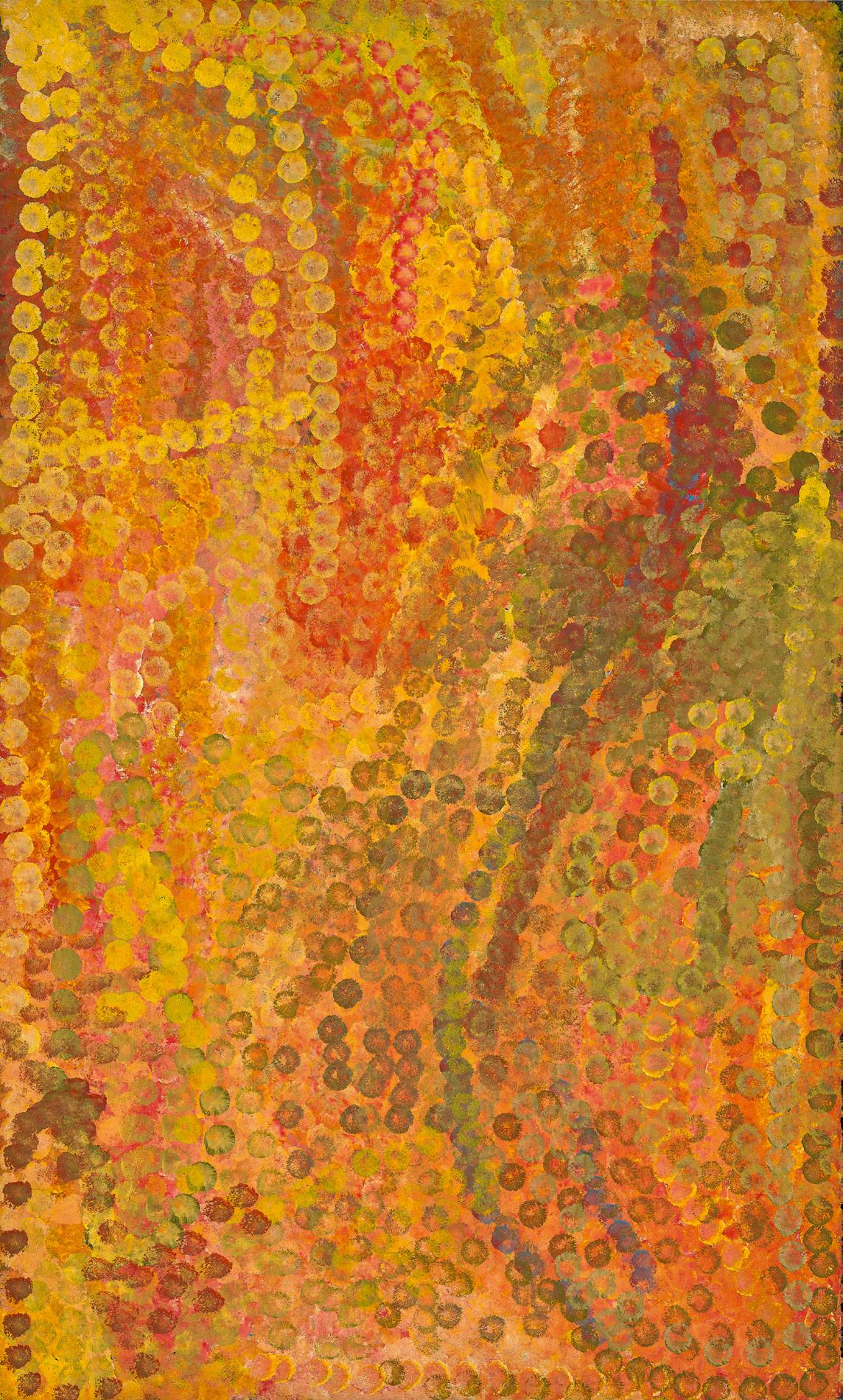
Dibirdibi Country, 2011
synthetic polymer paint on linen 152.0 x 101.5 cm
bears inscription verso: artist’s name, title, medium, Mornington Island Arts and Crafts cat. 6496-L-5G-0111 and Alcaston Gallery cat. AK16790
Estimate: $28,000 – 38,000
Provenance
Mornington Island Arts and Craft, Mornington Island, Queensland (stamped verso)
Alcaston Gallery, Melbourne
Private collection, Sydney, acquired from the above
Mirdidingkingathi Juwarnda Sally Gabori’s paintings are a tribute to the country on Bentinck Island, a small sparsely vegetated rise of land in the southern Gulf of Carpentaria where she grew up living off the natural abundance of the surrounding ocean and estuaries in the traditions of the Kaiadilt. In 1948, following a series of natural disasters, Gabori along with the other inhabitants of Bentinck Island, were forced to relocate to Gununa on nearby Mornington Island
Gabori began her art career late in life, aged 85, however, unlike many other Aboriginal language groups, the Kaiadilt did not have a tradition of mark making – whether on tools, objects or bark. Taking this cultural background into consideration, Gabori’s style is completely self-made, conjured from maps in her mind of Bentick Island and the country she loved. Judith Ryan, former curator at the National Gallery of Victoria compares her immense innovation and star power to that of similar late-starters, Emily Kame Kngwarreye and Lorna Fencer Napurrula.1 From Gabori’s earliest works, she has depicted aspects of her own beloved country as well as that of her brother, father and husband –including both geographical aspects of the landscape as well as the wildlife, specifically sea-life which is central to the landscape.2
Dibirdibi country, 2011 represents a subject painted more frequently by the artist than any other. It offers a powerful recollection of the
country of her husband, Kabarrarjingathi Bulthuku Pat Gabori – a rival of her brother King Alfred, and whose relationship with Gabori created intense friction within Kaiadilt society, eventually resulting in her sibling’s death.3 The painting recalls the country of her husband and the Rock Cod Ancestor, depicting the big mangrove swamp on the edge of a large saltpan that covers part of her husband’s country close to the site where the liver of Dibirdibi, the Rock Cod Ancestor, was thrown into the sea, creating a permanent fresh water well.
Although known primarily for her brightly coloured palette and intuitive, boldly executed brushstrokes, Gabori’s depictions of Dibirdibi are also nevertheless multilayered in their meaning. She is at once painting the saltpans of the land, the Rock Cod Ancestor Dreaming of Dibirdibi country, a portrait of her late husband in connection to his country, and finally, her own longing, loss and memory.
1. Ryan, J., ‘Broken Colour and Unbounded Space’, in Mirdidingkingathi Juwarnda Sally Gabori: dulka warngiid: Land of All, Queensland Art Gallery I Gallery of Modern Art, Brisbane, 2016, pp. 33 – 34
2. Pinchbeck, C., ‘Mirdidingkingathi Juwarnda Sally Gabori’ in undisclosed: 2nd National Indigenous Art Triennial, National Gallery of Australia, Canberra, 2012, p. 64
3. McLean, B., ‘Dulka Warngiid; The Whole World’ in Mirdidingkingathi Juwarnda Sally Gabori Dulka Warngiid; Land of All, op. cit., p. 16 Crispin Gutteridge

Winperrji – Police rock hole, 2004
natural earth pigments and synthetic binder on board
80.0 x 100.0 cm
signed with initials verso: PB bears inscription verso: Jirrawun Arts cat. PB CB 3, 2004-22
Estimate: $50,000 – 70,000
Provenance
Jirrawun Arts, Kununurra, Western Australia
Laverty collection, Melbourne, acquired from the above in 2004
Literature
Michael, L. (ed.), Paddy Bedford, Museum of Contemporary Art, Sydney, 2006, p. 161 (illus.)
Beyond Sacred: Australian Aboriginal Art - The collection of Colin and Elizabeth Laverty, Edition II, Kleimeyer Industries, Melbourne, 2011, p. 250 (illus.)
Paddy Nyunkuny Bedford painted with a deep sense of cultural responsibility, with the professional practice of this respected senior Gija artist and lawman focused upon stories from the countries of his mother, father, and uncle. He was major custodian of three significant sites – Garnanganyjen (Emu), Birnkirrbal (Bush Turkey) and Ngayilanji (White Cockatoo) – and his idiosyncratic depictions of these sites bestows a visual representation of Indigenous cultural memory that contributes to a growing body of work promoting the decolonisation of Australian history.
Catalogued as painting PB CB 3-2004.22 in Bedford’s chronological index of works, this painting on custom board was executed in 2004, and represents the country of Winperrji (Police rock hole). Also known as Police Camp, this site is found between Warmun and Bedford Downs in his mother’s country, approximately 15 kilometers to the west of Bedford Downs homestead. Located on foal creek, and home to a large deep permanent waterhole, it is the dreaming place of Jarlangarnany (the plains kangaroo), and an important camping site for the Gija prior to European settlement. Winperrji was also used as a camping spot for police in the early twentieth century when travelling between Halls Creek and the Port of Wyndham.
Winperrji – Police rock hole, 2004 exemplifies Bedford’s move away from the more familiar style of the earlier east Kimberley painters to create his own representations of country. With the introduction of a contrasting black and white ground, his use of colour has
evolved from a purely ochre palette. The composition often includes the intrusion of solid forms of varied colour and the surface may be softened by washes of pink or blue grey in a wet-on-wet process that first appeared on his canvases in 2003, with the artist employing a mixture of white and coloured pigment suspended in an acrylic medium to add a unique depth to the painting surface.
From the time Bedford first painted in 1998, his stories on board and canvas were executed with an authority and confidence that reflected his importance as a traditional elder, embodying the eternal presence of the Dreaming or Ngarranggarni in his native Gija language. Steeped in traditional lore, he drew on a seemingly endless source of knowledge related to significant sites. His paintings of these sites – combined with the physical experience of mountain ranges, rivers, roads, bridges and country traversed while mustering and living typical station life – unite as a record of memories, of place, landscape and personal experiences that correspond with stories of the Ngarranggarrni
The importance of painting for Paddy Bedford was multi-layered – an expression of country and cultural memory, as well as a claim to identity and consequently an assertion of ownership to the land itself. As Michael Dolk notes, his painting suggests a physical and tactile relation to land: ‘To behold painting is to hold country and to remain beholden to its ancestral tradition.’ 1
1. Dolk, M., ‘Are We Strangers in this Place?’, in Storer, R., Paddy Bedford, Museum of Contemporary Art, Sydney, 2006, p. 20 Crispin Gutteridge
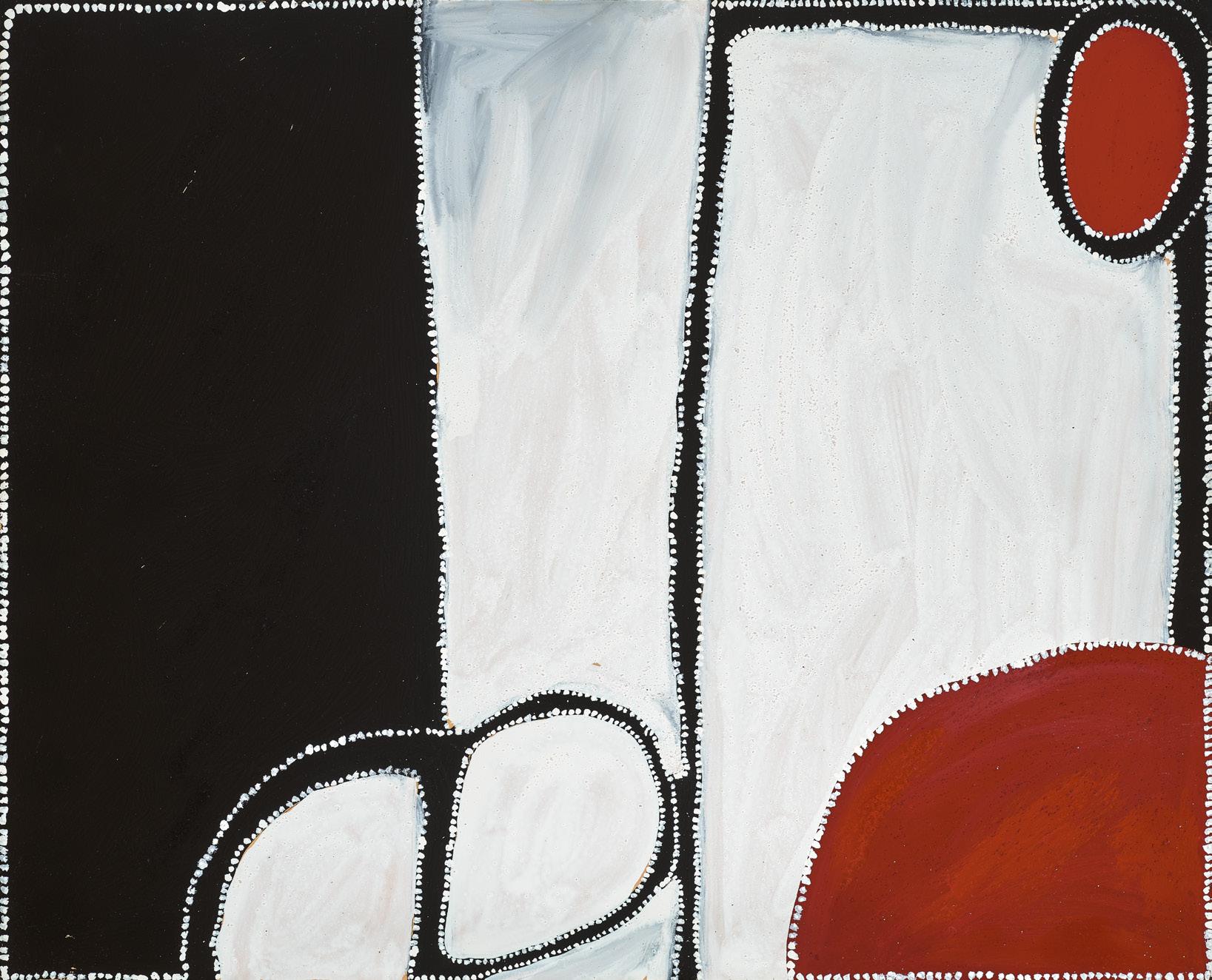
Recognised as one of the most engaging and observant artists of Australian colonial life, the young Samuel Thomas Gill arrived in South Australia, aged twenty-one, with his parents and siblings in December 1839, only three years after Adelaide was founded on the lands of the Kaurna people. Having received training in Plymouth and London, within three months Gill was advertising his artistic availability. In his advertisement he proclaimed his willingness to capture ‘correct likenesses’ of individuals, horses, dogs, local scenery and residences ‘sketched and… suited for home conveyance’, to record and inform distant family and friends of life in Australia.1 In addition to these genres, Gill travelled to townships around the colony, undertaking commissions including recording the early copper and silver mining industries, and participating in exploratory travels. By the mid-1840s his lively art was being displayed in Britain to entice immigrants and investment. Failing to sustain an income, in 1852 Gill joined the hopeful hordes flocking to the newly discovered goldfields in Victoria, his art appearing increasingly in printed formats, furthering his growing reputation. He is now remembered as the quintessential artist of the Australian gold rush, capturing with his deft line the tension, boredom, humour, celebration and desperation of that tumultuous period.
Prolific throughout his life, Gill is well-known for his fluid and colourful watercolours, pencil sketches and often entertaining lithographs. However, his oil paintings are rare, with these being among the few known examples. Significantly, the provenance records a direct line from the artist to the current owners. Arthur Henry Sturgeon Piggin arrived in Melbourne in early 1869, aged twenty-two, continuing in his father’s trade as a draper (a fabric merchant). On 7 September 1876, Arthur married Jane (Jeanie) Reid McNaughton at the West Melbourne
Church, with whom he subsequently had seven children. Piggin had ‘apparently formed a close friendship with Gill’ during the intervening years, with Gill presenting one, if not more paintings, to the couple on the occasion of their wedding. 2 In 1958, the Piggin family donated Mt Gambier, South Australia, 1852 to the National Gallery of Victoria, and descendants now offer an additional three paintings (lots 31, 32 and 33). 3
This pair of paintings, matching in proportions, show locations to the west of Melbourne that Gill is known to have travelled to. A spacious pencil study in the State Library Victoria collection titled ‘Mt Emu from S.Y. Hill / 6 & 7 miles’, and initialled and dated ‘2 May 1855’, tallies closely with the pen and ink inscription on the reverse of ‘Mt Emu from Stock Yard Hill / 1855’.4 In both sketch and painting, we look south-east across Black Lake towards the tapering curves of Mt Emu on the horizon. In the oil painting, however, Gill has included a foreground narrative of Aboriginal people, clad in a possum-skin cloak and, possibly, blanket, gazing across the plain. Given the rapid pastoral expansion of Victoria’s Western Districts and the violent impact of British invasion upon the Wadawurrung people, it is likely that Gill’s inclusion of such figures drew upon his past encounters with Aboriginal people from various countries.
Fyansford, at the junction of the Barwon and Moorabool Rivers to the west of Geelong, appeared a number of times in Gill’s art, best known in two lithographs in his portfolio Diggers and diggings of Victoria as they were in 1852, published in Melbourne in 1855. In the print On the Barwon near Fyansford Geelong, Gill shows cattle calmly grazing by the river’s edge among scattered gum trees, while in the closely titled On the Barwon above Fyanford Geelong, he has taken a high va ntage
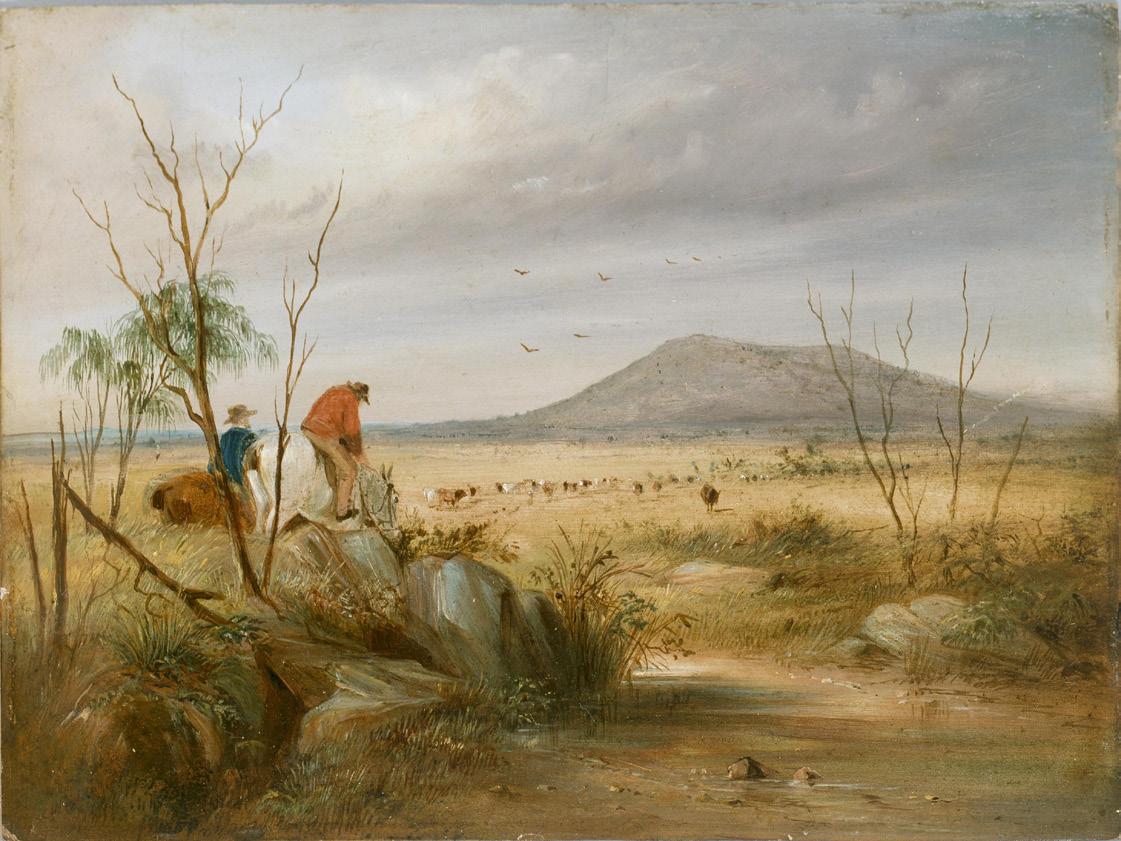
S. T. Gill
Mount Gambier, South Australia, 1852 oil on cardboard
22.7 x 30.5 cm
National Gallery of Victoria, Melbourne
Gift of the family of Mr Arthur H.S. Piggin, 1958
point, showing cleared and planted land on the far slopes of the river valley. 5 The oil painting shows another viewpoint, with two men perusing the calm scene, the stump and felled tree that frames the foreground implying the impact of settlement as much as the presence of the cattle scattered up the hillside.6
Despite the differences inherent in the media, the deft application of paint, notably in the thin branches and the feathery depiction of grass and leaves, the crisp atmospheric tonality, and the somewhat awkward forms of the Aboriginal people correspond closely with Gill’s noted watercolour and drawing abilities. The paintings are on prepared compressed millboard made by the well-known London-based art supplier James Newman Ltd (its stamp visible on the reverse of the boards) and they remain in their nineteenth-century frames.
7 Although Gill’s distinctive initials, with which he regularly signed his work, are absent from the four paintings, further research into the contemporary inscriptions on the reverse of the boards may prove fruitful.
8 While fresh material in an unusual medium for an artist known to be widely copied in his own time must be carefully examined, the known family friendship with Gill, the correlating style and subject matter, and the freshness of application – unlike that of any known painter/ copyist at that time – all accord with these being rare examples of Gill experimenting with and exploring the medium of oil paint. 9
The author would like to thank Gerard Hayes for his assistance with this entry.
1. South Australian Gazette and Colonial Register, 7 March 1840, p. 1, see: nla.gov.au/nla. news-article27441257 (accessed July 2025)
2. See Appleyard, R., Fargher, B., and Radford, R., S.T. Gill: The South Australian Years 1839 – 1852, Art Gallery of South Australia, Adelaide, 1986, cat. no. 30, p. 58 and n. 15, p. 117
3. See Mt Gambier, South Australia, 1852, oil on board, NGV 84 – 5 at: https://www.ngv.vic. gov.au/explore/collection/work/5619/ (accessed July 2025)
4. See Mt Emu from S.Y. Hill / 6 & 7 miles, 1855, pencil, SLV H4591 at: http://handle.slv.vic. gov.au/10381/303587 (accessed July 2025)
5. See The diggers and diggings of Victoria, 1855, NGV 2011.291.1-25 at: https://www.ngv. vic.gov.au/explore/collection/work/100164
6. The detailed drawing Fyansford, Barwon River, Geelong, c. 1854, SLV H4318, shows the bridge that replaced the ford, which opened in 1854, see: http://handle.slv.vic.gov. au/10381/290240 (accessed July 2025)
7. See National Portrait Gallery, London ‘British artists’ suppliers, 1650 – 1950’ at: www.npg. org.uk/collections/research/programmes/directory-of-suppliers (accessed July 2025)
8. The Mt Emu inscriptions noted above warrant comparison, together with Arrival of Geelong mail (Main Road Ballarat), Art Gallery Ballarat 1978.133, inscribed with the same date, see: https://www.artgalleryofballarat.com.au/explore/the-collection/search/2649 (accessed July 2025)
9. A group of six oil paintings, sized 14 x 23 cm and marked with Gill’s initials, were sold through Leonard Joel’s, Melbourne, 20 April 1972, and subsequently. See for example: https://www.bonhams.com/auction/21294/lot/76/st-gill-1818-1880-government-campfrom-across-the-creek-creswick-1855 (accessed July 2025). These are crude copies after Gill’s Diggers and Diggings lithographs, 1855.
Alisa Bunbury
S. T. Gill (1818 – 1880)
Mt. Emu from the Stockyard Hill, 1855
oil on compressed card
17.5 x 25.0 cm
bears inscription verso: Mt Emu from Stockyard Hill / 1855
Estimate: $30,000 – 40,000
Provenance
Arthur H. S. Piggin, Melbourne, acquired c.1879
Thence by descent
Private collection, Melbourne
Thence by descent
Private collection, Melbourne
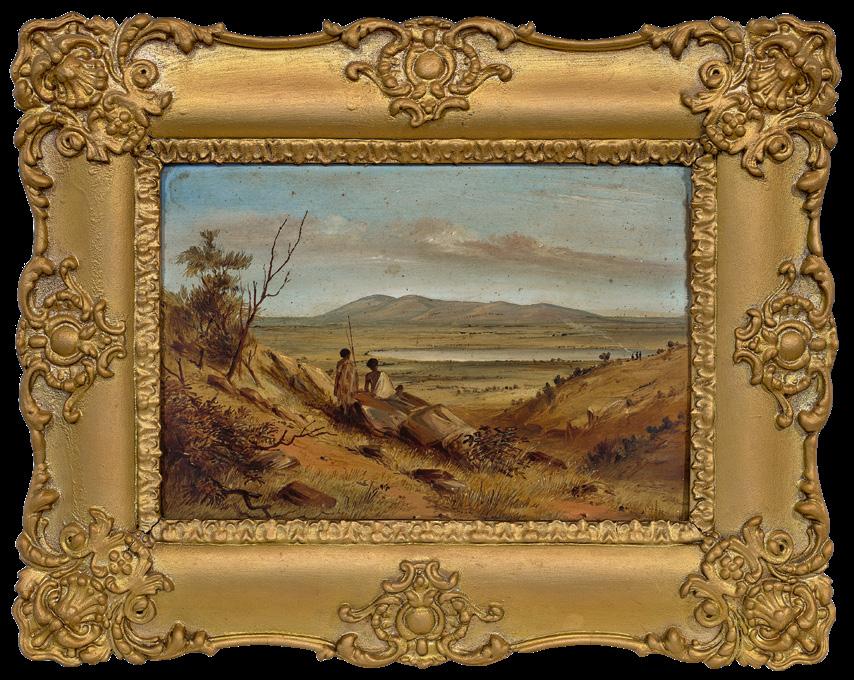

S. T. Gill (1818 – 1880)
On the Barwon River near Fyansford, Victoria, 1855
oil on compressed card
17.5 x 25.0 cm
bears inscription verso: On the Barwon River near Fyansford / W. Geelong 1855
Estimate: $30,000 – 40,000
Provenance
Arthur H. S. Piggin, Melbourne, acquired c.1879
Thence by descent
Private collection, Melbourne
Thence by descent
Private collection, Melbourne
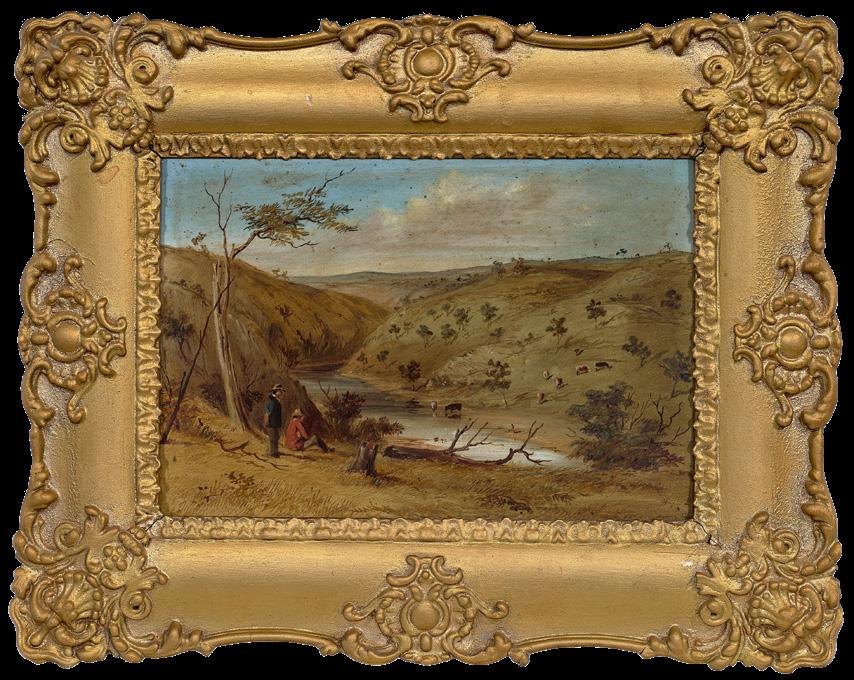

On Rocky Creek near Fryers Creek, 1852
oil on compressed card
22.5 x 30.5 cm
bears inscription verso: On Rocky Creek / near Fryers Creek July / 1852
Estimate: $25,000 – 35,000
Provenance
Arthur H. S. Piggin, Melbourne, acquired c.1879
Thence by descent
Private collection, Melbourne
Thence by descent
Private collection, Melbourne
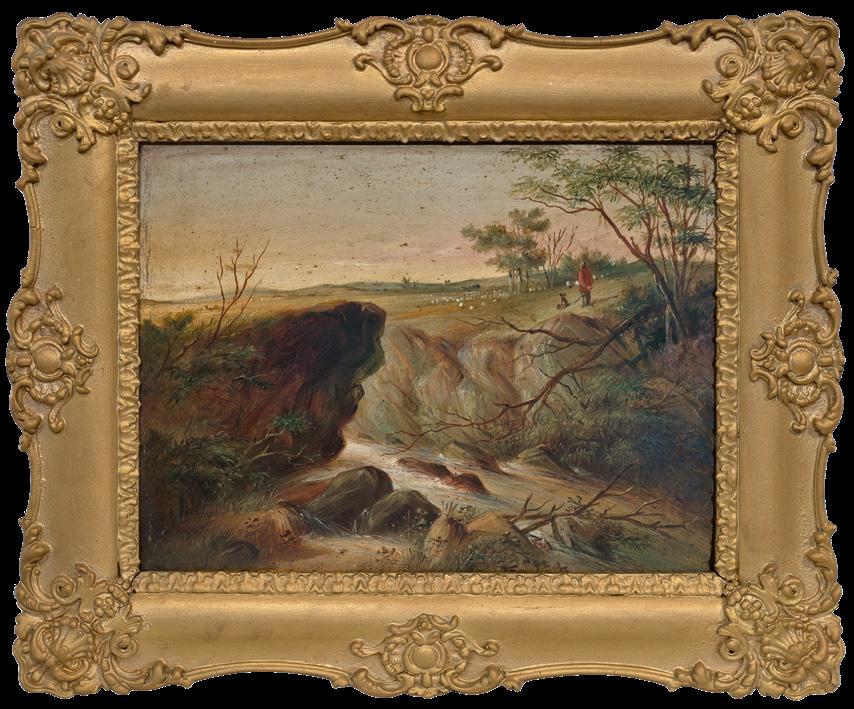
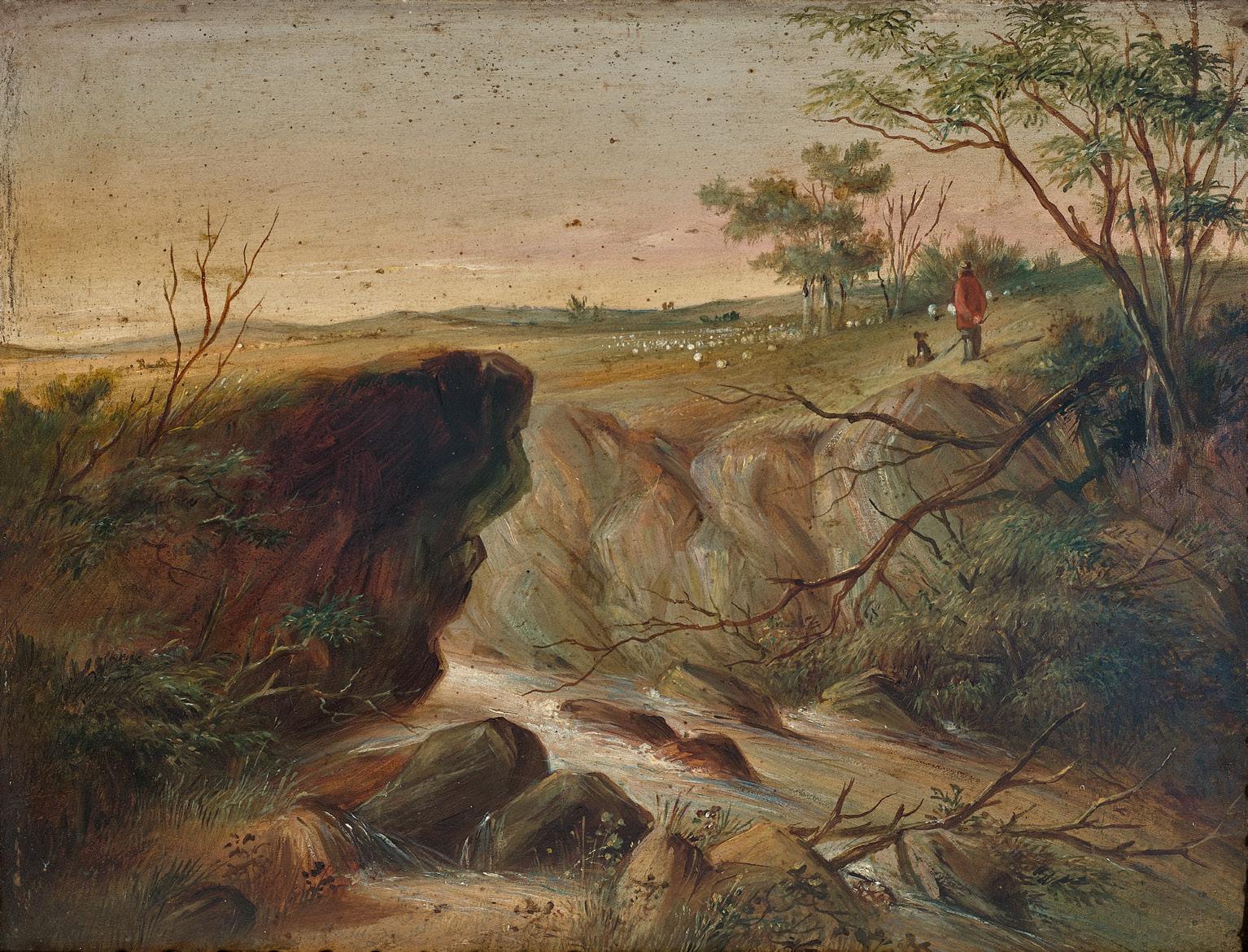
oil on wood panel
25.0 x 35.5 cm
signed lower right: F. McCubbin
bears inscription verso: Bush Farm / by Fred McCubbin / “Bush Farm” / by Fred McCubbin / painted around 1910
Estimate: $25,000 – 35,000
Private collection
Joseph Brown Gallery, Melbourne
Private collection, Queensland, acquired from the above in 1977
Exhibited
Winter Exhibition 1977, Recent Acquisitions, Joseph Brown Gallery, Melbourne, 4 – 14 July 1977, cat. 37 (illus. in exhibition catalogue)
Frederick McCubbin only went overseas once in his life, departing May 1907 at the age of fifty-two for a relatively brief journey of four-and-a-half months. Arriving in England in early July, what he encountered in the galleries of London and then France was transformative, initiating a radical transition in his art upon his return. He was particularly inspired by close inspection of paintings by Constable and Monet, but his true hero was Turner, writing to his wife Annie that his were ‘such dreams of colour… they glow with a tender brilliancy that radiates.’ 1 McCubbin was already considered a master painter of the Australian bush, as seen to full effect in such masterworks as Lost, 1886 (National Gallery of Victoria); Down on his luck, 1889 (Art Gallery of Western Australia); Bush burial, 1890 (Geelong Art Gallery); and The pioneer, 1904 (National Gallery of Victoria). However, this earlier palette was earthier, full of grey-greens and tinged with hints of melancholy. After Europe, light itself became the subject and McCubbin ‘no longer found it necessary to tell narratives, or to people the landscape. Instead, he painted images radiant with colour and energy.’ 2
Bush farm, c.1910, is one such work filled with painterly optimism and vibrancy. The subject is most likely a shed located on one of the neighbouring properties to the McCubbin family’s two storey cottage ‘Fontainebleau’, nestled in the Macedon Ranges on the traditional lands of the Dja Dja Wurrung, Taungurung and Wurundjeri Woi Wurrung people, which possessed a clear view to Hanging Rock (see Landscape, Mt Macedon, Deutscher and Hackett, Sydney, 7 May 2025, lot. 69). McCubbin adored Fontainebleau and spent
many happy weeks there each year, often joined by students he taught at the National Gallery School who would visit during their summer vacation, pitching their tents in the bush close to the house (his wife Annie was renowned for her generous lunches). His youngest daughter Kathleen recalled her father ‘going into the bush with his battered old felt hat and his painting coat which was smeared with paint. He used to go and find a secluded spot and put down his camping stool and he would paint his subjects right there in the bush on the spot… He didn’t need to wander far because there were so many paintable subjects right there close to the cottage.’3 National Gallery of Australia curator Anne Gray notes that intimate works such as Bush farm were most likely painted for private viewing rather than exhibition, and were ‘much admired by his artist friends, family, and some discriminating collectors.’4
Bush farm is richly coloured in violet, pink, blue and sage green, and McCubbin has applied the paint vigorously with a palette knife, including the trunks of the trees to the right, though those to the left are constructed from side-dashes marked in with a brush. In size and technique, this lot is near identical to Ti tree glade, 1910 (National Gallery of Victoria) though that painting is a close-up view of dense bush, lacking the kaleidoscopic colours that so distinguish Bush farm
1. Fred McCubbin, Letter to Annie McCubbin, 19 July 1907, cited in Gray, A. (ed.), McCubbin: last impressions 1907 – 17, National Gallery of Australia, Canberra, 2009, pp. 17, 259 (footnote 5)
2. Gray, ibid., p. 45
3. Kathleen Mangan, cited in McKenzie, A., Frederick McCubbin 1855 – 1917: ‘The Proff’ and his art, Mannagum Press, Melbourne, 1990, p. 144
4. Gray, op cit., p. 18 Andrew Gaynor

Tasmanian blackwood
14.5 cm height
signed with initials, dated and inscribed on base: RK / RK / MOTHER / 21 / 1945
Estimate: $80,000 – 120,000
Provenance
Richard and Joan Crebbin Collection, Sydney, acquired directly from the artist
Joan Crebbin, Sydney
Deutscher and Hackett, Sydney, 30 November 2016, lot 3
Private collection, Sydney
Exhibited
Robert Klippel: a tribute exhibition, Art Gallery of New South Wales, Sydney, 9 August – 13 October 2002
Literature
Gleeson, J., Robert Klippel, Bay Books, Sydney, 1983, pl. 22, pp. 23, 26 (illus.), 462 (as ‘Opus 21 ‘Pointed Theme’’)
Edwards, D., Robert Klippel, Art Gallery of New South Wales, Sydney, 2002, pp. 22 (illus.), 23, 25 (illus.), 246
Edwards, D., Robert Klippel: Catalogue Raisonné of Sculptures, (CDROM), Art Gallery of New South Wales, Sydney, 2002, no. 21 (illus.)
The sensuously carved, semi-abstract No. 21, Pointed theme, 1945, is an exceptionally accomplished early work by Robert Klippel, one of Australia’s greatest sculptors. Carved from Tasmanian Blackwood and based on a tripartite trefoil structure, the sculpture tapers to three thorn-like points converging in the centre but not touching, hopefully suspended. Exploring the tension between absolute abstract forms and the emotional valence of figuration, No. 21, Pointed theme belongs to a group of small carved works made in Sydney immediately at the end of World War II. These were Klippel’s first forays into fine art before matriculating at East Sydney Technical College and leaving for London in 1947.1 Through the influence of the poet Pam Broad, Klippel’s artistic course was shaped by early exposure to Modern British art, literature and poetry, and these carvings, particularly No. 21, Pointed theme, reflected his absorption of their ideas on pure form, nature and creativity, prefiguring the investigations he would make into degrees of abstraction in London.2
Numbered 21 in the chronological sequence of the artist’s original sculptures (biographer James Gleeson noting that the first eight were effectively copies of existing artworks), No. 21, Pointed theme was made early in the artist’s career, joining a group of hand-carvings centred around the human form, specifically the standing figure.3
In No. 21, Pointed theme, the tripartite structure corresponds to a figure’s torso, its hands lifted to the face in a gesture of prayer, albeit radically simplified and smoothed, tending towards pure
formal abstraction. Figuration was a field of exploration that the artist was soon to abandon, writing in his notebook the same year that ‘sculpture must be revolutionised without the figure.’4
The simplified structure of No. 21, Pointed theme featuring a dynamic, interlocking arrangement of curved and pointed vectors in three dimensions was developed in three drawings dated between 16 – 19 June 1945.5 Carved on an intimate scale, redirecting his expert craftsmanship of wood honed by years of model ship-making for the Australian Navy during the Second World War, No. 21, Pointed theme is defined by the juxtaposition of the sensuously smoothed forms and the graphic tension of the points almost meeting. Carved and pierced, with complex interiors defined by negative space, the sculpture shares similarities with early carvings by the British artist Barbara Hepworth. It also bears a striking resemblance to Three Points, an abstract sculpture conceived in lead by Henry Moore in 1939 – 40 and later cast in bronze. Gleeson, however, notes that the artist only came across a photograph of this work after he had investigated the same visual theme in the drawings of June 1945 and would not be deterred from arriving at his own sculptural resolution.6 Interestingly, although Moore’s sculpture appears entirely abstract, it was based on the ‘emotional and physical or physical action in it where things are just about to touch but don’t. There is some anticipation of this action’, one source of his inspiration reportedly having been the pinching action central to the famous School of Fontainebleau painting of Gabrielle d’Estrées and her sister in the Louvre.7
Klippel’s No. 21, Pointed theme – joining emotive figurative carvings No. 9 Anguish and No. 11 Grief, both completed in 1944 – is amongst Klippel’s most self-expressive works, reflecting heightened mental states, likely related to the profound loss of the artist’s brother John, a pilot declared missing in action in May 1944 and presumed dead in May of the following year.8
1. Edwards, D., Robert Klippel, Art Gallery of New South Wales, Sydney, 2002, p. 23
2. Klippel, cited in Gleeson, J., Robert Klippel, Bay Books, Sydney, 1983, p. 16
3. ibid., p. 18
4. Klippel, cited in Edwards, op. cit., p. 19
5. Gleeson, op. cit., p. 23
6. ibid., p. 17
7. Sylvester, D., Henry Moore, Tate Gallery, London, 1968, p. 36
8. ‘John Owen Klippel (1921 – 1944)’ in People Australia, National Centre of Biography, Australian National University at https://peopleaustralia.anu.edu.au/biography/klippeljohn-owen-21877 (accessed 10 June 2025)
Lucie Reeves-Smith
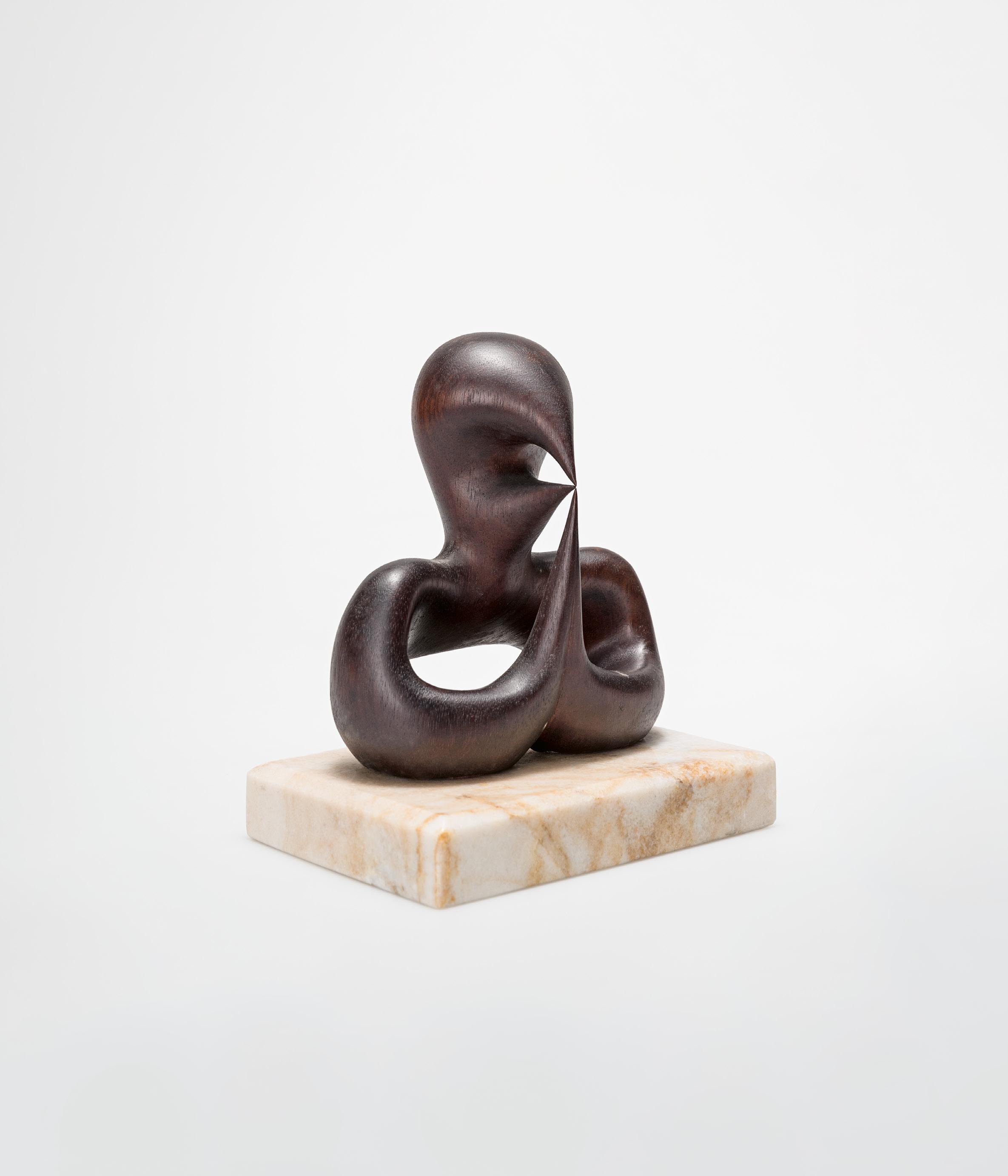
– 1968)
oil on canvas
57.0 x 72.5 cm
signed and dated lower left: R de Maistre / 47
Estimate: $30,000 – 40,000
Provenance
Miss Doris de Mestre Fisher, United Kingdom, acquired directly from the artist
Thence by descent
Caroline de Mestre Walker, United Kingdom
Caroline de Mestre Walker has been co-copyright holder on de Maistre’s work since 1975 and has generously donated her Roy de Maistre archive and papers to the Art Gallery of New South Wales.
After leaving Australia in 1930, Roy de Maistre settled in London, occupying several residences before achieving a permanent home and studio at 13 Eccleston Street in 1937. Partly funded by Sydney Butler – daughter of Samuel Courtauld, first wife of the politician Rab Butler, and generous patron of de Maistre – de Maistre maintained the property by renting rooms to friends and patrons such as Patrick White, Lucy Dynevor (daughter of John Rothenstein) and others.1 Friends variously described de Maistre’s studio as ‘his finest work’; ‘an Aladdin’s cave’; ‘a theatre of his actions and a repository of his whole life’; ‘a brilliant orchestration of cluttered objects’; ‘a dream world’ and ‘an oasis’, stimulating the visual senses and enlivened by flowers and exotic perfume discs.2 Significantly, the largest section of de Maistre’s oeuvre comprises interiors of his studio.
Garden under snow at Ecclestone Street, Pimlico, 1947 offers a rare depiction of the studio garden. Although the subject appears mundane (a backyard), de Maistre has partially stylised it, emphasising the circular shapes of the central bowl, table and background pots and introducing the parallel lines on the left. In contrast to the more painterly surrounds, the robin is a roughly
sketched diagram. The red-brown colour palette contrasted with white is unusual in de Maistre’s usual brighter, more carefully modulated and harmonised colour repertoire, but evocative of the bleakness of winter. The picture plane is tilted towards the viewer in the foreground giving the painting a feeling of instability, a sense of seizing the moment – capturing the fleeting scene of the red bird against the white snow. John Rothenstein described de Maistre as staying ‘mostly indoors’3 and this is captured in the work where the outdoors looks about to slide into the viewer’s interior space.
De Maistre’s studio interiors are a suite of structured images with precise arrangements of tables, vases, lamps, flowers and other artifacts thoughtfully placed and meticulously depicted. In striking contrast, Garden under snow at Eccleston Street, Pimlico offers a rare, alternative glimpse into the artist’s informal backyard that could belong to any of us.
1. See Johnson, H., Roy de Maistre. The English Years, Craftsman House, Sydney, 1995, pp. 47 – 48
2. ibid., p. 48
3. Rothenstein, J., ‘Introduction’, Roy de Maistre. A retrospective exhibition of paintings and drawings 1917 – 1960, Whitechapel Art Gallery, London, 1960, p. 9
Dr Heather Johnson
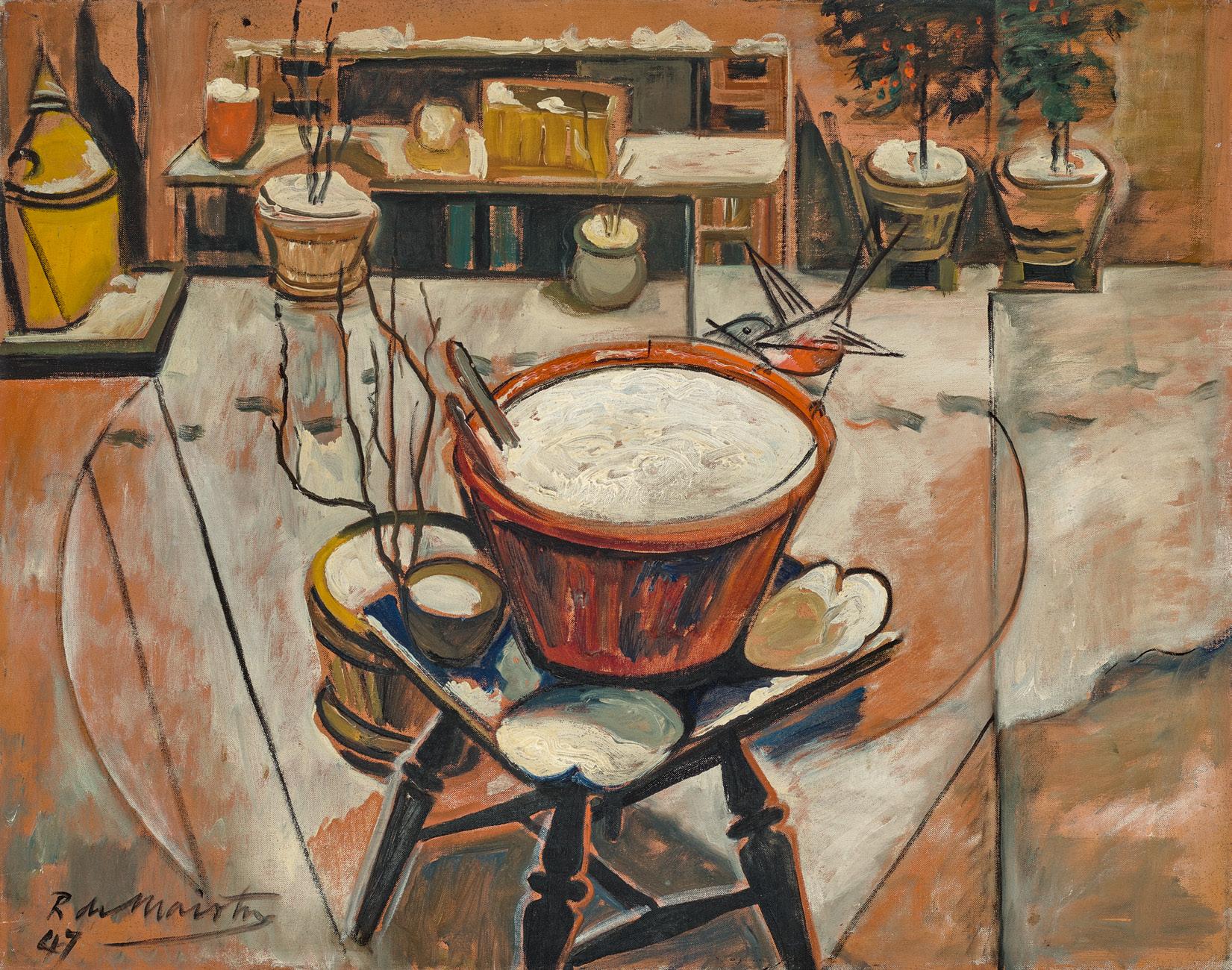
Cityscape, c.1950 – 52
oil on canvas on compressed card
35.5 x 35.5 cm
bears inscription lower right in the tacking margin: JH 134 label attached verso signed by J. Henshaw, executor of the artist’s estate
Estimate: $60,000 – 80,000
Provenance
Estate of the artist, Sydney John Lockhart AO, Sydney
Joseph Brown Gallery, Melbourne Private collection, Melbourne, acquired from the above in 1981 Deutscher and Hackett, Melbourne, 21 April 2021, lot 27 Private collection, Sydney
Exhibited
Joseph Brown Gallery, Melbourne, 10 – 24 September 1981, cat. 140 (illus. in exhibition catalogue)
While Godfrey Miller was held in high regard amongst modernist painters of his time, an aversion to exhibiting, or releasing his works from the studio, stunted the arc of his career during his lifetime. Most of Miller’s major works are held in institutions, as he was reluctant to sell to private collectors, except on rare occasions for important individuals whom he felt worthy of owning his works.
Miller’s paintings represent the true spirit of an artist whose sole focus in life was the pursuit of truth and beauty through his work. His mature paintings are characterised by his use of fine, ruled lines, which segment the surface into small geometric fields poised to receive pockets of pigment. The artist’s working methods were such that it may have felt impossible for Miller to actually finish a painting. His forensic attention to detail meant that each additional application of colour, no matter how minor, would send a kaleidoscopic ripple across the work, which the artist would intuitively be required to follow with further strokes and counter strokes, resulting in a perpetual game of aesthetic adjustment. From early in his career, Miller was known to take up to fifteen years to complete a painting.
The present work, Cityscape, c.1950 – 52, is a square format which the artist has divided neatly in half using a direct horizontal line across the centre of the work. This bold gesture for Miller, which displays a neat, formal division, is not often apparent in
his meditations on nature versus mathematics. In this case the strategy suits the subject very well as it allows him to divide the ‘landscape’ into two equal contrasting parts. The lower half of the work features Miller’s mature geometric style, which is rich in detail and colour and alludes to a natural world, while the upper half of the work features a series of vertical forms which, when read in conjunction with the grey tones, suggest a manmade environment of a city with industrial overtones.
Miller has often drawn parallels between trees and architecture. In his endless quest for unity between subject, ground and medium, Miller developed a method of weaving and layering his subjects with the surrounding space. Through a merging of natural and manmade forms, he succeeded in creating works of enormous technical complexity. The artist has left Cityscape, poised perfectly between representation and near abstraction.
From the early 1950s onwards, Miller’s work stood in stark contrast to the lyrical abstraction which prevailed through the teaching at East Sydney Technical College. While the influential John Passmore and his students danced to the tune of Cézanne, Godfrey Miller stayed true to his intuition: his rigid analytical propositions representing not only a milestone of Australian painting, but a profoundly personal vision.
Henry Mulholland
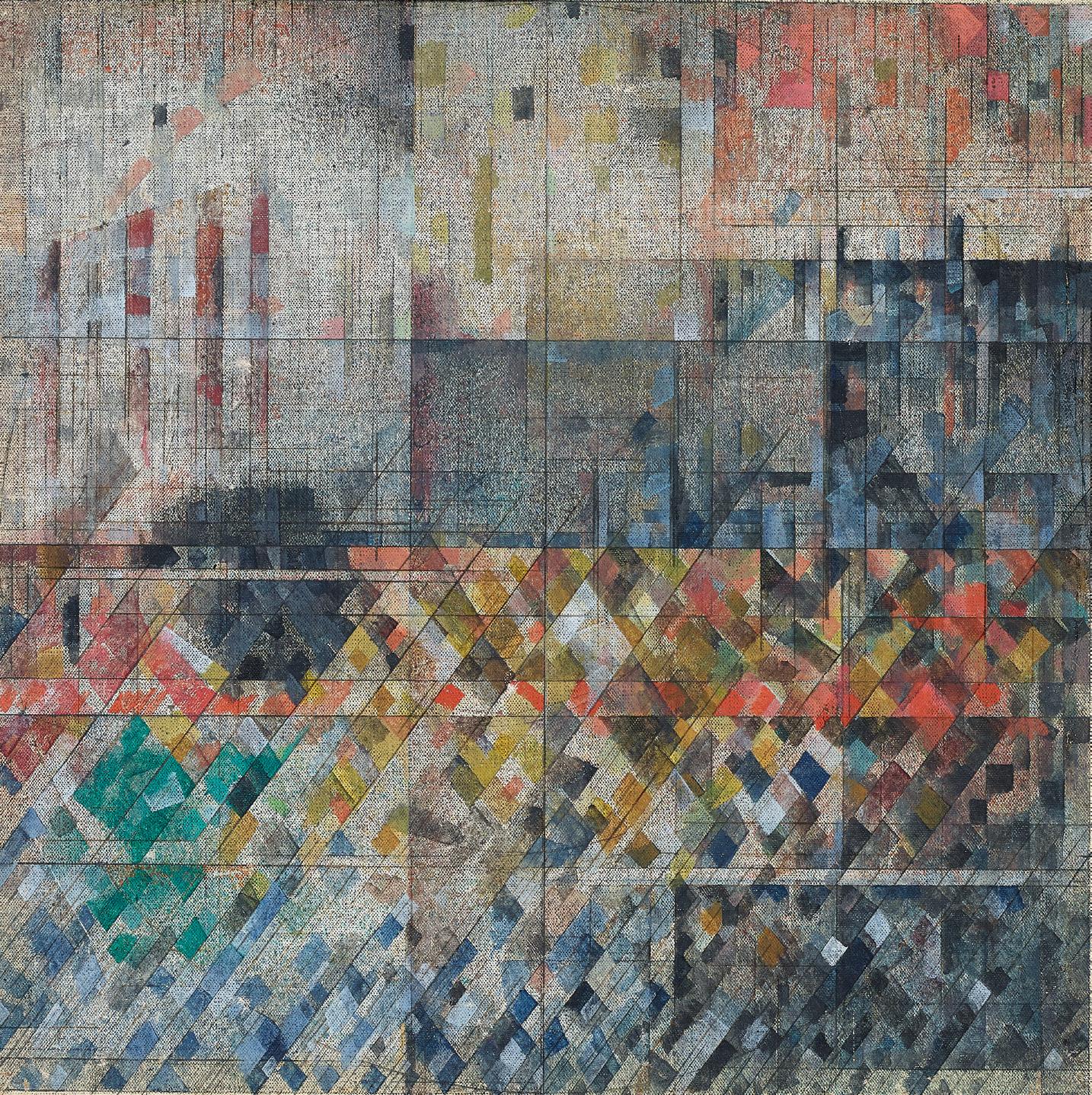
oil on canvas
39.5 x 26.0 cm
signed lower right: JEFFREY SMART
Estimate: $50,000 – 70,000
Provenance
Australian Galleries, Melbourne (label attached verso, AG105621)
Private collection, Melbourne
Exhibited
Jeffrey Smart: Paintings and Studies 2006 – 2010 and One Drawing from 1946, Australian Galleries, Melbourne, 11 – 30 May 2010, Australian Galleries, Sydney, 22 June – 10 July 2010, cat. 4
Related work
Portrait of Bruce Beresford, 2009, oil on canvas, 94.0 x 130.0 cm, private collection
We are grateful to Stephen Rogers, Archivist for the Estate of Jeffrey Smart, for his assistance with this catalogue entry.
‘There’s always a kind of playfulness about the way Jeff sees you when he’s painting a portrait…’ 1
Although Jeffrey Smart remains unequivocally best known for his beguiling, meticulously composed cityscapes that rejoice in the everyday beauty of the modern urban environment (see lot 16), portraiture nevertheless occupies a small but significant place in his rich oeuvre. Whether it be the intermittent self-portraits executed every few years as Smart monitored his aging visage, the ‘named’ portraits of celebrated identities such as David Malouf, Clive James, Margaret Olley and Bruce Beresford (featured here), or the

‘unnamed’ portraits of actual people included anonymously in his compositions (most frequently, his long-term partner Ermes de Zan), Smart’s portrayals reveal innately human and humane qualities –offering intriguing insights into not only the people depicted, but the artist’s relationship with them and the very nature of his art.
Among his final portrait endeavours, Third study for Portrait of Bruce Beresford, 2009, immortalises one of the artist’s dearest lifelong friends – the eponymous Australian Academy award-winning film and opera director whose achievements include Driving Miss Daisy (1989) and Mao’s Last Dancer (2009). Incidentally, the two first met in 1955 at The King’s School in Parramatta where Smart was the art master and Beresford, a self-professed ‘gormless pupil’; Smart later recollected Beresford was the only student he ever met who contradicted his belief that ‘anyone can be taught to draw.’ 2 A few years later in 1958, while working as a camera assistant for the Australian Broadcasting Commission, Beresford was sent on assignment to cover a highly anticipated art show in Circular Quay which, to his amazement, turned out to be Smart’s latest solo exhibition at Australian Galleries, and again in 1963, the two serendipitously crossed paths during the six-week voyage to Europe aboard the Castel Felice passenger ship. As Beresford reminisces, Smart was delighted to have discovered such a keen enthusiast of his art and they whiled away the long journey discussing the art of Cézanne, Léger, Matisse and the Italian Renaissance masters (especially Piero della Francesca), the poetry of T.S. Eliot, and the most arcane plots of the great novelists – all laced with salacious gossip about other artists and their foibles.3 Thenceforward, Smart and Beresford shared a close friendship that endured until the artist’s death in 2013, with Beresford frequently visiting his mentor at his farmhouse near Arezzo in Tuscany, and more recently, paying poignant homage to Smart in an essay for the catalogue accompanying the major retrospective organised by the National Gallery of Australia.
Imbued with the nostalgia of an elderly artist reflecting upon his life, not surprisingly the present study bears echoes of Smart’s earlier
Jeffrey Smart
Portrait of Bruce Beresford, 2009 oil
94.0 x 130.0 cm
Private collection
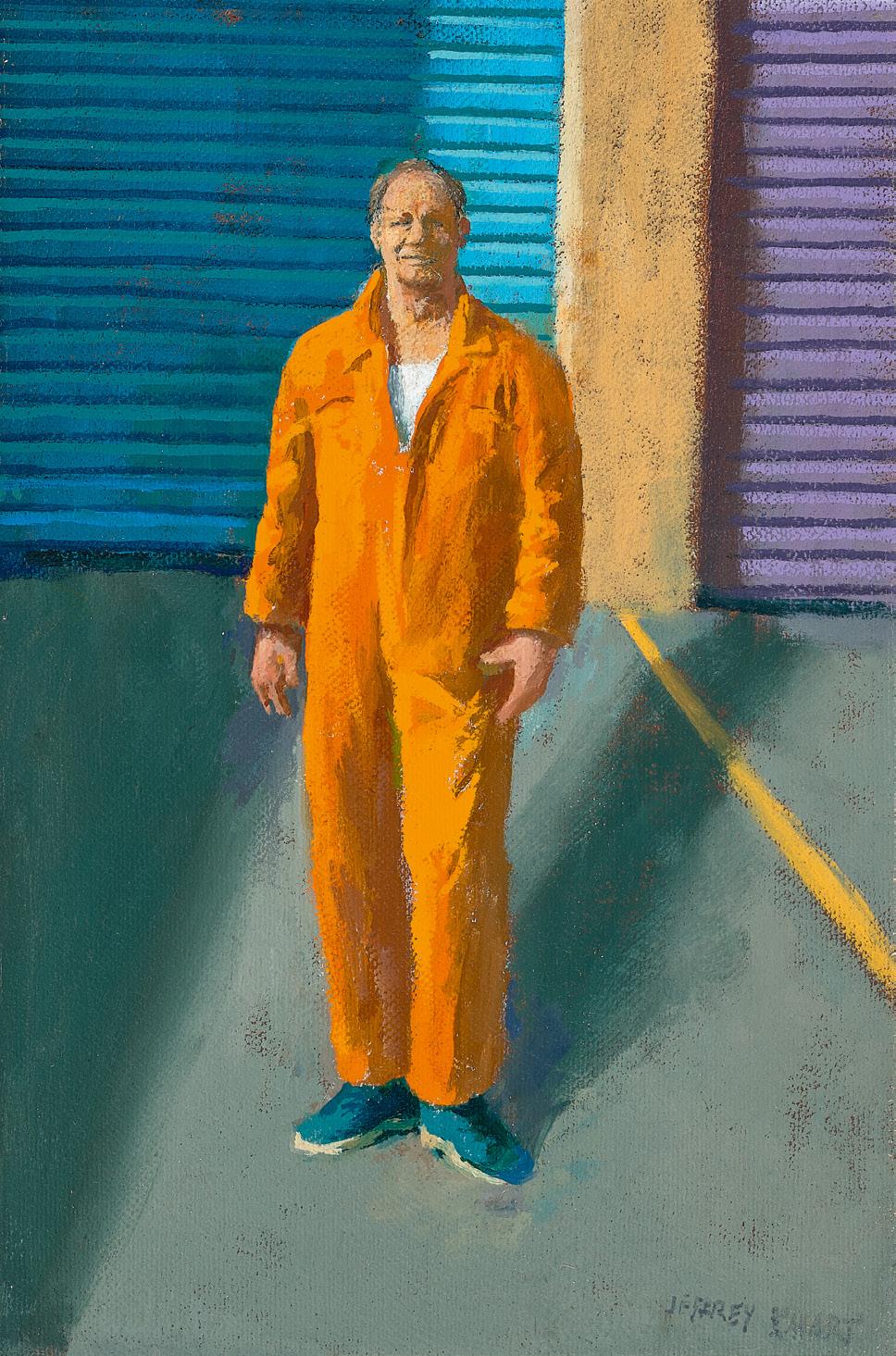
achievements, revisiting poetic ideas and motifs that gain fresh meaning from being assembled in a different configuration. Not only does Smart here depict Beresford in the bright orange worker’s overalls ubiquitous throughout his oeuvre – and similarly employed (in an ochre variation) for his portrait of expatriate poet and novelist, David Malouf, in 1980 – but he also incorporates the coloured roller doors from his 1982 painting entitled The four closed shops (private collection) which, then emblazoned with the names of well-known Italian artists, presented a wry comment upon the nature of the local art scene. Moreover, just as ‘private jokes and gamesmanship’ notoriously punctuate Smart’s portraits of celebrity friends such as Clive James, Germaine Greer and David Malouf4, so too the
present portrait betrays the artist’s droll and subtle wit – the ‘closed shops’ featured as a backdrop presumably alluding to Beresford’s difficulties in getting Hollywood to back his film projects at the time.5
1. David Malouf, cited in ‘David Malouf and Jeffrey Smart – Portrait of a Friendship’, in Jeffrey Smart, National Gallery of Australia, Canberra, 2021, p. 128
2. Beresford, B., ‘Jeffrey and Me’ in Jeffrey Smart, ibid., p. 121
3. ibid., p. 122
4. McDonald, J., ‘Jeffrey Smart’, Jeffrey Smart Recent Paintings, Philip Bacon Galleries, Brisbane, 2001, p. 3
5. See McDonald, J., ‘Jeffrey Smart’, Art Column, 26 June 2010 at: https://www. johnmcdonald.net.au/2010/jeffrey-smart/ (accessed 30 July 2025)
Veronica Angelatos
oil on canvas
61.0 x 76.5 cm
signed and dated lower right: John Brack 1974
Estimate: $60,000 – 80,000
Provenance
Rudy Komon Gallery, Sydney Private collection, Sydney
Deutscher and Hackett, Melbourne, 29 August 2012, lot 55 Private collection, Melbourne
Exhibited
John Brack: Recent Paintings, Joseph Brown Gallery, Melbourne, 24 February – 11 March 1975 (illus. in exhibition catalogue, n.p.)
John Brack, Rudy Komon Gallery, Sydney, 13 – 31 December 1975, cat. 13 (label attached verso)
Literature
Grishin, S., The Art of John Brack, Oxford University Press, Melbourne, 1990, vol. I, p. 132, vol. II, cat. o225, pp. 30, 157 (illus.)
‘...in the grand gallery of the Louvre... a thousand masterpieces all with signatures and all saying “Look at me, I’m a genius”... I could not bear it. The noise was intolerable, I could not stay there. I had to go downstairs and look at the Egyptians...’ 1
When the Bracks left Australia for the first time in late 1973 to visit the great historical cities and hallowed museums of England and Europe, the experience was not to be as the artist had expected. Although the opportunity to view masterpieces previously only known through reproductions left Helen buoyant, John was instead disconcerted by the dreaded loss of control which he suddenly felt in such unfamiliar surroundings. Moreover, gallery expeditions inevitably left him disappointed – the clashing personality cults of the old and modern masters troublesome and ‘noisy’ by comparison to the restraint and anonymity of the ancients (particularly those cultures not belonging to the classical or Graeco-Roman tradition upon which so much of European art was predicated). Thus, upon his return Brack became increasingly preoccupied with the challenge of restoring the peace and silence of ancient art to contemporary painting. The solution was not immediate however, and indeed it would be eighteen months before the influence of his sojourn abroad appeared in his work.
Belonging to the ‘Unstill Life Series’ (as Brack satirically dubbed the inaugural exhibition at Joseph Brown Galleries in 1975), The fertility goddesses, 1974 is a superb example of such compositions in which the knife, fork and scissor motifs of his earlier shop window paintings now precariously intermingle with glamorised postcards
featuring fragments of prehistoric art. With the attitudes expressed towards the postcards by this society of utensils ranging from admiration to cool indifference and even angry assault, accordingly the series may be interpreted as a comment upon the perception of ancient cultures by the modern world. There is also truth to Grishin’s argument that Brack’s postcard imagery emerged from the artist’s fascination with the souvenirs ‘user-friendly’ aspect which made them less intimidating (and paradoxically, more appealing) to viewers than the artworks themselves – an accessibility accentuated by the postcards’ ability to present ‘improved’ versions of the original.2 In this vein, the series resonates with the artist’s appreciation of both the writings of French art theorist Andre Malraux (especially his concept of the portable, personal musée imaginaire) and the art of surrealist Rene Magritte who often included paintings of paintings within his compositions to explore prevailing notions of the artificial being ironically ‘more real than the real thing’.3 As Grishin eloquently encapsulates, the series ‘raises questions of the authenticity, falsification and durability of art as well as permanence, stability and impersonality in a glittering but collapsing society.’4
Perhaps surprisingly given the richness of meaning acknowledged today, when these early postcard paintings were first unveiled in Melbourne in 1975, they remained largely elusive to most viewers. Not only did the series herald a new style of painting which notably effaced Brack’s presence as artist, with the meticulously smooth, unified surfaces carefully constructed from subtle glazes deliberately eliminating any trace of the ‘individual’ or ‘romantic’ gestural hand. But perhaps most bewilderingly for the public and art-informed alike was the complete disappearance of the human figure and apparent lack of social commentary. Recalling the dilemma years later, Helen elucidates: ‘Reaction to these works was one of shock. People were embarrassed by these pictures that were obviously done so well, but what was the point of them?’ 5
1. John Brack on John Brack, 1977, p. 8, cited in Grishin, S., The Art of John Brack, vol I, Oxford University Press, Melbourne, 1990, p. 128
2. Grishin, ibid., p. 131
3. Gott, T., A Question of Balance: John Brack 1974 – 1994, Heide Museum of Modern Art, Melbourne, 2000, p. 7
4. Grishin, op. cit., p. 133
5. Helen Maudsley, cited in Gott, ibid., p. 8 Veronica Angelatos
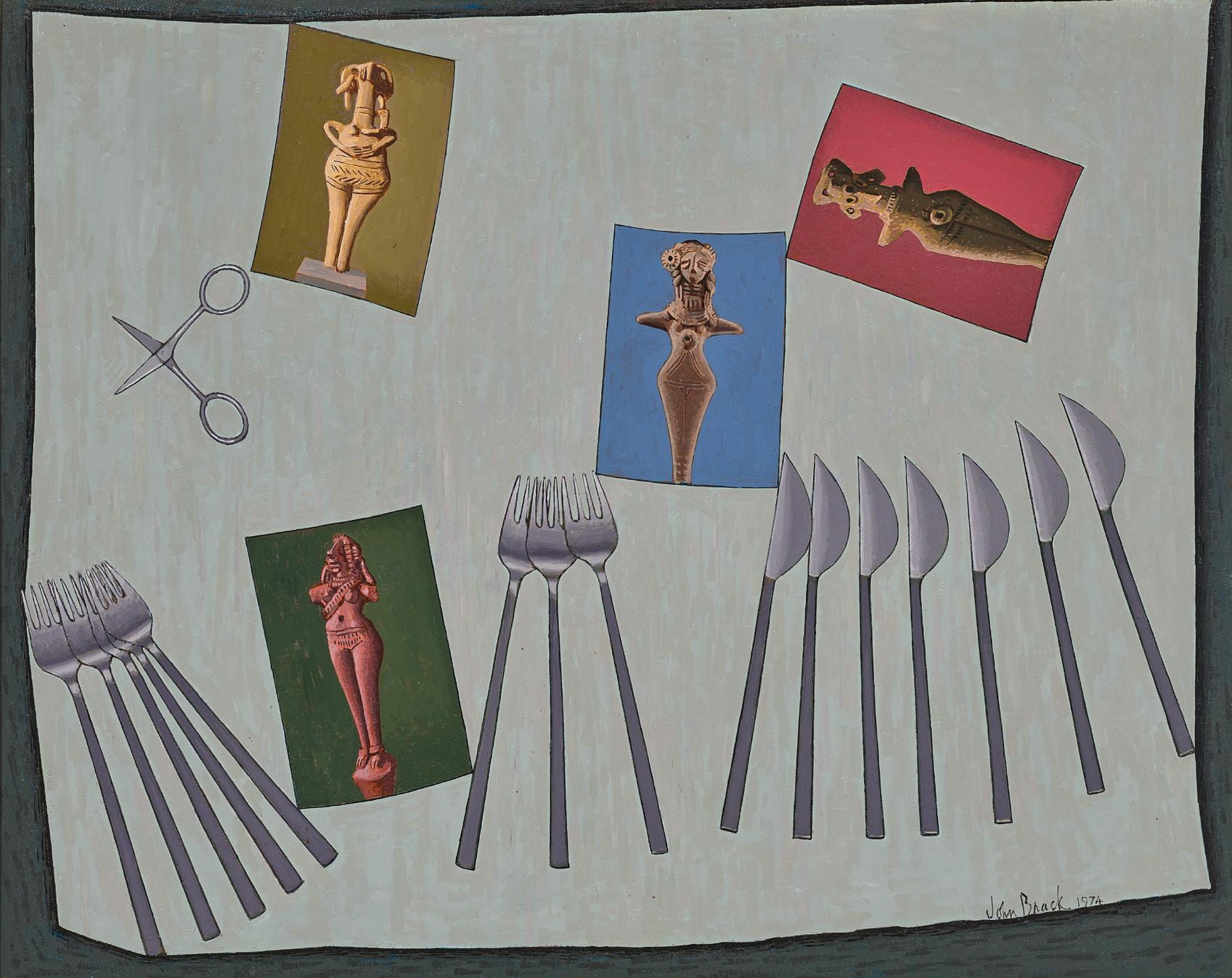
synthetic polymer paint on canvas
167.0 x 182.5 cm
signed and dated upper left: Edwin Tanner 75/76 bears inscription verso: IE25
Estimate: $40,000 – 60,000
Provenance
Estate of Edwin Tanner, Melbourne
Charles Nodrum Gallery, Melbourne (label attached verso) Private collection, Melbourne, acquired from the above
Exhibited
Edwin Tanner Retrospective 1976, Age Gallery, Melbourne, 19 – 29 October 1976, cat. 81 (as ‘Plan for the ‘Traverse of Mars’. Homage to A. D. Hope’)
Edwin Tanner, Charles Nodrum Gallery, Melbourne, 12 – 30 November 2002, cat. 13
Edwin Tanner: Mathematical Expressionist, TarraWarra Museum of Art, Victoria, 12 May – 15 July 2018
Literature
Fitzpatrick, A., Edwin Tanner: Mathematical Expressionist, TarraWarra Museum of Art, Victoria, 2018, back cover (illus.), pp. 25, 78 (illus.) 130, 134
Related work
Payne’s Grey – the colours that make it, 1975 – 76, synthetic polymer paint on canvas, 167.0 x 183.0 cm, private collection
In June 1967, at the age of 46, Edwin Tanner suffered a chemically induced stroke following the physical effects of a car accident that had taken place many years before. This rapid and debilitating decline in physical health endowed Tanner’s already gnomic art with a melancholy lyricism and a sense of existential reckoning.1 Homage to A.D. Hope, 1975 – 76, balancing an array of Klee-like geometric notation with an expansive field of striated blue hues, belongs to a new series of paintings in Tanner’s oeuvre. Pushing the limits of abstraction in his oeuvre, and in keeping with the predominant formal approaches of the time, namely Colour Field painting, these works presented a rare instance of Tanner interacting with mainstream artistic styles.
A remarkable polymath, Tanner’s eclectic and diverse career progression and broad range of intellectual achievements informed his often-autobiographical paintings, including motifs from engineering, maths and aviation to philosophy and poetry. In 1970, the physical ramifications of his stroke not only forced him to resign from engineering but also put him in hospital for a period in August 1973. It was during this period of convalescence where Tanner made
a series of sketches based on his childhood home in Wales, providing the aesthetic stimulus for a new suite of paintings: a schematic aerial depiction of the house and its adjoining roads, a motif that appears in the centre of Homage to A.D. Hope 2 Although Tanner emigrated to Australia with his family as a small child, he never felt fully assimilated. The artworks from this late series reflect the artist’s observational distance and sense of cultural and physical dislocation, their emotive quality hidden in plain sight. The first work of the series, Emigration, 1973 (private collection) featured a cluster of semicircular forms orbiting the house’s central axis. While Emigration explicitly referenced the artist’s peregrinations, other works, such as Homage to A.D. Hope, particularly with its additional title ‘Plan for the Traverse of Mars’, express a more expansive movement of particles through negative space, a luminous and airy plane.
Homage to A.D. Hope presents a hard-won harmonisation between Tanner-the-engineer and the artist’s deep metaphysical, literary and poetic sensibilities. The colour modulations of his minimal backgrounds and the cheeky personal humour of his stylisation reveal a portrait of this artist in his astounding multifaceted complexity. Tanner was particularly attuned to the ancient links between poetry and painting. Joining paintings dedicated to authors T.S. Eliot, Aleksandr Solzhenitsyn, Ludwig Wittgenstein and references to Shakespeare and Shelley, here Tanner pays homage to a friend, the Australian poet and professor Alec Derwent Hope, OBE. While Tanner had his own poetry published in journals Overland and Quadrant, his connections to this rarefied literary milieu came primarily through his long and close friendship with the Tasmanian poet Gwen Harwood, regarded as one of Australia’s finest poets. Writing a poignant text of personal memories for Edwin Tanner’s retrospective exhibition at Monash University Gallery in 1990, Harwood related the artist’s reflection in 1970: ‘It is clear now that my best work has an elegance and opalescence of some kind – some detachment and wit. Now with relief from pain I am working with all the determination and deliberation that spontaneity really needs i.e. first-rate spontaneity not slapstick.’3
1. Fitzpatrick, A., Edwin Tanner: mathematical expressionist, TarraWarra Museum of Art, Victoria, 2018, p. 129
2. ibid., p. 23
3. Harwood, G., Memories of Edwin Tanner, Monash University Gallery, Victoria, 1990, p. 4 Lucie Reeves-Smith
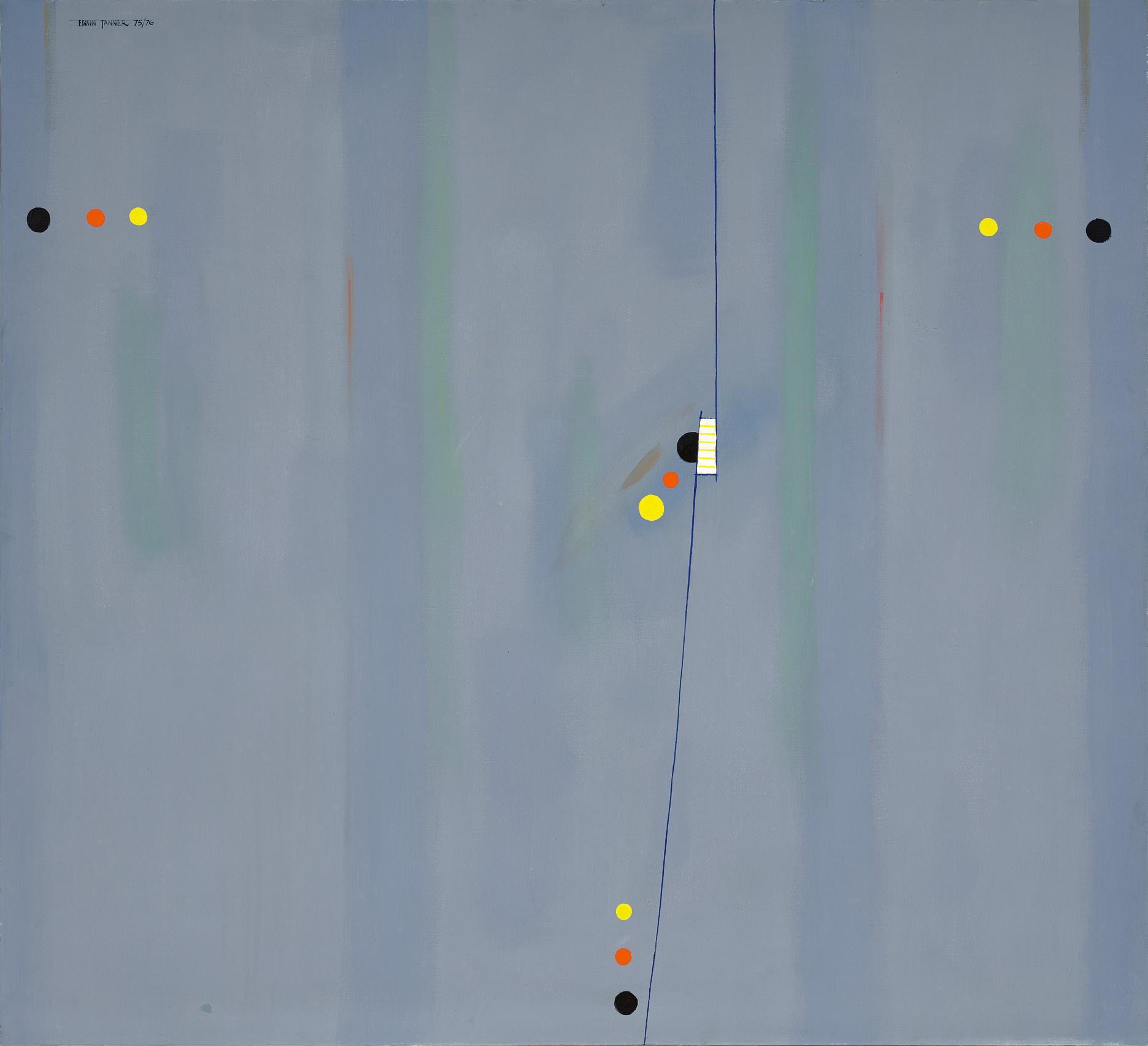
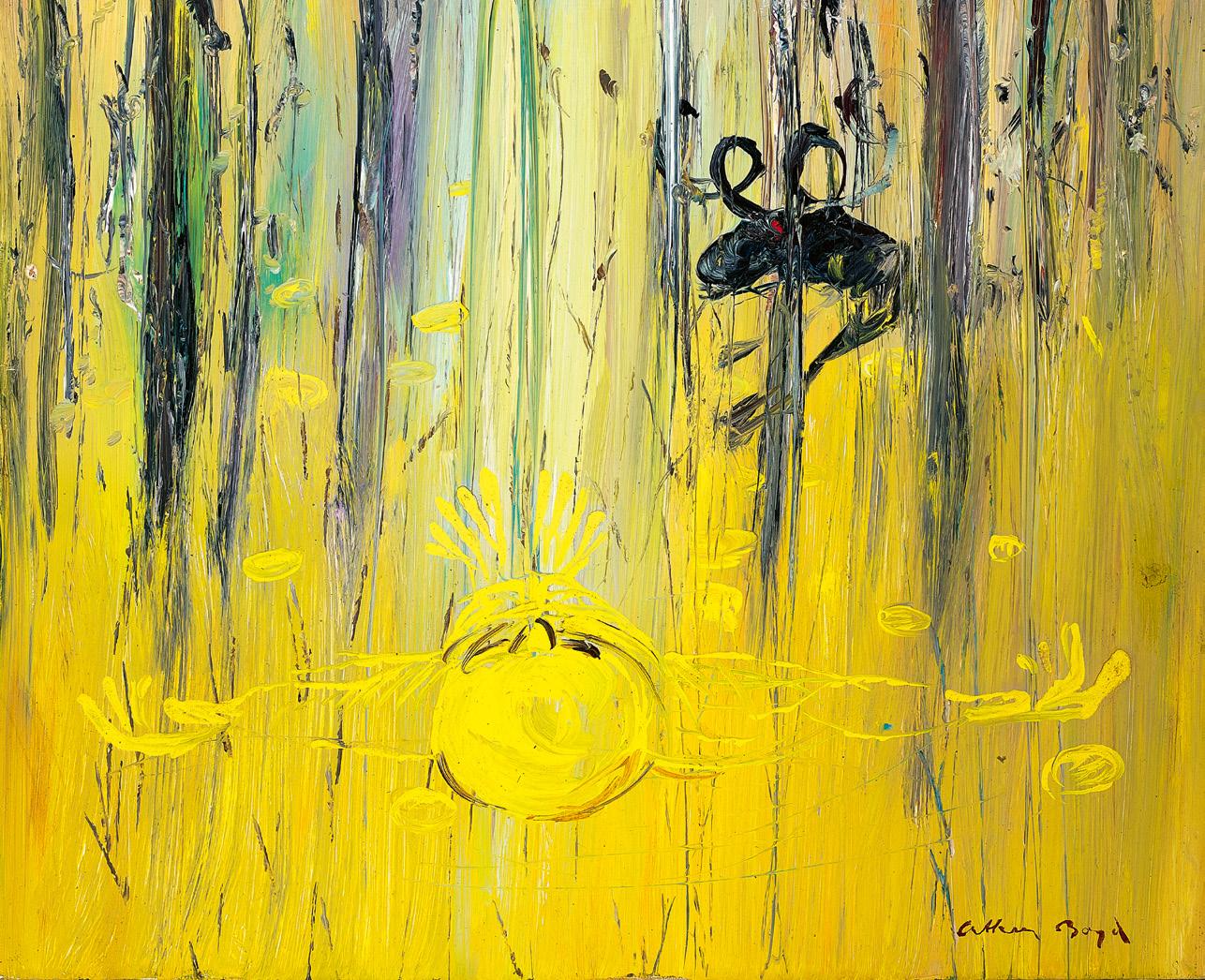
Arthur Boyd (1920 – 1999)
Nebuchadnezzar dreaming of gold, c.1968 – 71
oil on composition board
20.0 x 24.5 cm
signed lower right: Arthur Boyd
Estimate: $20,000 – 30,000
Provenance
Sweeney Reed, Melbourne
Private collection, Melbourne, acquired from the above c.1970 – 72
Thence by descent
Private collection, Melbourne
Exhibited
Arthur Boyd: Nebuchadnezzar, Arthur Tooth & Sons Ltd, London, 13 June – 8 July 1972, cat. 33
Related work
Nebuchadnezzar dreaming of gold, 1966 – 68, oil on canvas, 175.0 x 183.0 cm, Art Gallery of South Australia, Adelaide
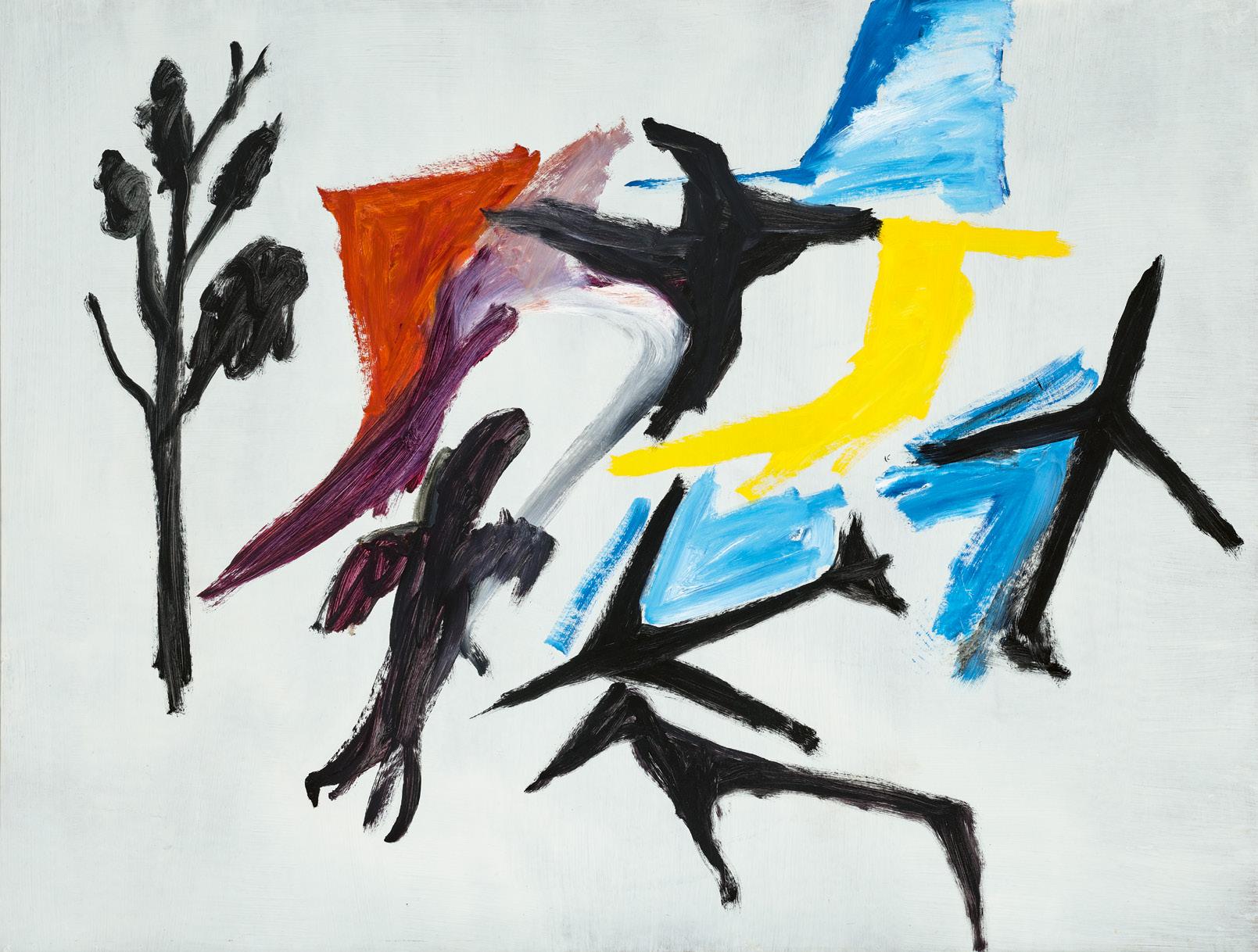
Two aeroplanes and one or two birds, 1975
oil and enamel on composition board
82.5 x 110.0 cm
signed, dated and inscribed with title on artist’s label verso: KEN WHISSON / “TWO AEROPLANES AND ONE OR TWO BIRDS” / PAINTED 20/10/1975
dated and inscribed with title verso: 20/10/75 /”TWO AEROPLANES AND ONE OR TWO BIRDS”
Estimate: $25,000 – 35,000
Collection of the artist
Watters Gallery, Sydney (label attached verso)
Private collection, Melbourne, acquired from the above in August 2014
Exhibited
A Special Exhibition of Paintings, Watters Gallery, Sydney, 1996, cat. 19
Making it new: focus on contemporary Australian art, Museum of Contemporary Art, Sydney, 8 September – 11 November 2009
27th Summer Exhibition, Watters Gallery, Sydney, 3 – 13 December 2013, cat. 63
Watters Gallery at Melbourne Art Fair 2014, Royal Exhibition Building, Melbourne, 14 – 17 August 2014, cat. 2
charcoal on paper
56.0 x 75.0 cm
signed with monogram lower right: bw
Estimate: $45,000 – 65,000
Provenance
Australian Galleries, Melbourne, AG9470 (label attached verso)
Private collection, Melbourne, acquired from the above in August 1992
Thence by descent
Private collection, Melbourne
Exhibited
Paris Regard de Côté, Art Gallery of New South Wales, Sydney, 1 March – 6 May 1990
Paris – The Complete ‘Regard de Côté’ Series Plus Works from Other Visits 1982 – 1992, Australian Galleries, Melbourne, 20 July – 8 August 1992, cat. 71 (label attached verso)
Literature
Sutherland, K., Brett Whiteley: Catalogue Raisonné, Schwartz Publishing, Melbourne, 2020, cat. 40.90, vol. 7, p. 758
The quintessential ‘city of love’, Paris had always held special appeal for Brett Whiteley who considered her a kind of ‘mistress’, weaving her beguiling feminine charms through the myriad streets and boulevards. As he poignantly mused, ‘… I love the stoniness and creaminess, that wonderful, soiled magnolia feeling. Paris is so sensual, beautiful, flirtatious, mischievous, arrogant, orderly, civilised. They call Paris a whore because she seduces you on every corner, and every street I turned, l could see another picture.’ 1 Significantly, Whiteley’s untiring affair with Paris began at the age of 20 when, as the recipient of the Italian Travelling Scholarship, he visited the city to explore the haunts of one of his greatest artistic mentors, Modigliani. Fascinated by the possibility that the brilliance of the past might somehow be embedded in the very fabric of the streets and buildings, the young artist had hoped he might gain, by proximity, further understanding of the inextricable link between Paris and ‘genius’. Returning to the city three decades later, Whiteley reflected that he had been too ‘obsessed with modernism and abstraction’ in his earlier years to paint the city; by contrast, ‘now, with fresh eyes, I could respond figuratively and lyrically to the one ravishing subject – Paris and her cultural heroes.’ 2
Setting himself the ambitious task ‘to produce one work a day for sixty days’, thus in June 1989 Whiteley embarked upon his celebrated ‘Paris, Regard de Côté’ series of gouaches, drawings and photographs – paying homage in particular to that district of
the École de Paris that Marquet, Utrillo and Nicolas de Staël had so immortalised through their art. Although acutely aware of the vast legacy bequeathed by his artistic predecessors, Whiteley never falls victim to the visual cliché in his views of the city’s various landmarks and streetscapes. As he recognised in his text accompanying the acclaimed exhibition of the series at Australian Galleries in 1990, ‘…how to find a new vision is the challenge. What one is after is a high-octane visual poetic journalism, brief, essential and above all, fresh. This can best be achieved by drawing, and not by the heavy métier of oil paint… To revive the sketch, to Zen in and out quickly, to stalk the streets with a tiny leopard camera, to try to look at the obvious obscurely, and to introduce into each view the right amount of humour, or irony, or Dada.’3 Richly redolent and exuding sensuality, the superb ink and brush drawing offered here illustrates well how successfully Whiteley achieved his goal. Featuring the towers of the famous medieval cathedral of Notre-Dame located on the Île de la Cité – widely considered the historical heart of Paris –the sketch betrays all the informality of a camera shot, a transitory moment in time most likely drawn from near the Latin Quarter on the left bank looking downstream towards the single arch of the Pont Saint-Louis on the right, the Pont de L’Archevêché on the left and the Pont de la Tournelle stretching across the foreground. Noticeably bereft of figures, the subject here is unequivocally Paris – her architecture invested with an almost anthropomorphic quality to capture the essential character and beauty of this city he so loved.
Comprising the last major series produced by the artist before his untimely death in 1992, such works eloquently attest not only to Whiteley’s unwavering sense of discovery and engagement, but to his extraordinary ability as a draughtsman to create incandescent moments of vision; in his words, ‘…to make freshness permanent. Out of billions of seconds of futility, occasionally, sparks of the life force are immutably held forever.’4
1. Whiteley, B., cited in Hawley, J., ‘Brett Whiteley: The Art of the Warrior’, The Age Good Weekend, Melbourne, 17 February 1990, p. 17
2. ibid.
3. Whiteley, B., ‘Preface’, Paris ‘Regard de Côté’, exhibition catalogue, Australian Galleries, Melbourne, 1990, n. p.
4. Whiteley, B., cited in Klepac, L., Brett Whiteley: Drawings, Beagle Press, Sydney, 2014. Veronica Angelatos

oil on canvas
76.5 x 102.0 cm
signed and dated lower left: William Robinson 91 inscribed with title verso: MORNING LANDSCAPE WITH NEIGHBOUR’S BULL
Estimate: $70,000 – 90,000
Provenance
Ray Hughes Gallery, Sydney Laverty collection, Melbourne, acquired from the above in 1991
Exhibited
William Robinson: Paintings, Ray Hughes Gallery, Sydney, 28 September – 20 October 1991, cat. 9
A Century of Collecting 1901 – 2001, Ivan Dougherty Gallery, Sydney, 29 March – 28 April 2001
William Robinson: The Revelation of Landscape, National Trust, S.H. Ervin Gallery, Sydney, 11 January – 2 March 2003, and touring to; Mornington Peninsula Regional Gallery, Victoria, 28 March – 18 May 2003; University of South Australia Art Museum, Adelaide, 27 February – 3 April 2004
Literature
Fern, L., William Robinson, Craftsman House, Sydney, 1995, pl. 56, pp. 50, 178, 179 (illus.), 265
In 1984, Bill Robinson and his wife Shirley relocated from their farm in the coastal locale of Birkdale to one of 80 hectares, surrounded by acres of bush, rainforest and cliffs at Beechmont, near Canungra in the ancient Darlington mountain ranges of Queensland. The long process of discovery of his new surroundings, primarily done on foot, immersively travelling across steep terrain, was drawn out over many years. It would provide the foundation for some of Robinson’s most inventive and transcendental depictions of the country, breaking with the expectations of traditional Australian landscape painting. Morning landscape with neighbour’s bull, 1991, was created shortly after Robinson had resigned from teaching to devote himself full-time to painting and living on the land.1 Featuring recurrent narrative motifs of cows reflected in bodies of water, and of the artist himself, here appearing up a tree, alone in his new Eden, Morning landscape with neighbour’s bull masterfully combines Robinson’s signature grandiose depiction of the landscape with a humorous vignette of country life.
The multi-dimensional and multi-perspectival nature of William Robinson’s paintings first arose as a formal solution for the depiction of the expansive and vertiginous terrain. But it was within the creation of an immersive effect that conveyed the artist’s
profound investigations into the relationship between man and the cosmos that this technique found its full effect. Although resistant to attempts to connect his work with literary or art historical antecedents, Robinson’s efforts to depict the awe-inspiring scale and panoramic depths of a remote and primordial terrain inevitably invite comparison with early colonial explorer artists with their Humboldtian quest to visualise the ineffable unity of the natural world.2 The success of Robinson’s contemporary expression of this same impetus, his daring break with horizontality in landscape painting, was assured when The rainforest won the Wynne Prize in 1990. Buoyed by this recognition, Robinson’s landscape paintings over the following years acquired a Claudian atmospheric quality, inflected with a greater sense of spiritual grandeur.
Disorientingly appearing in the lower right-hand corner of the composition, the breaking dawn of the painting’s title scatters crepuscular rays across the landscape, illuminating the pale trunks of the eucalypt forest, which fan out from the centre of the painting. The contrast of an apricot yellow sky against the backlit sea of forested peaks as the sun rises, although used to great spiritual and psychological expression in the Mountain series of 1992, here simply provides a theatrical expression of the passing of time.
In the centre of the composition, perched in the tree (for how long has he been hiding?) is a small figure of Bill-the-farmer, with his recognisable hat and gumboots. A transitional Birkdale-atBeechmont pastoral composition continuing the animal antics of Robinson’s earlier Farmyard paintings, Morning landscape with neighbour’s bull comically presents the neighbour’s borrowed bull, not as an aggressive creature, but one standing placidly in the stream, followed by a row of hopeful cows, romance yet to bloom.
Morning landscape with neighbour’s bull was purchased directly from Ray Hughes Gallery in 1991 by Dr Peter Laverty and Liz Laverty, esteemed collectors and patrons of William Robinson, in whose collection the painting has remained for over thirty years.
1. William Robinson: The Transfigured Landscape, Queensland University of Technology Art Museum and Piper Press, 2011, pp. 163 – 164
2. Seer, L., Darkness and Light: The art of William Robinson, Queensland Art Gallery, Brisbane, 2001, pp.18 -20
Lucie Reeves-Smith
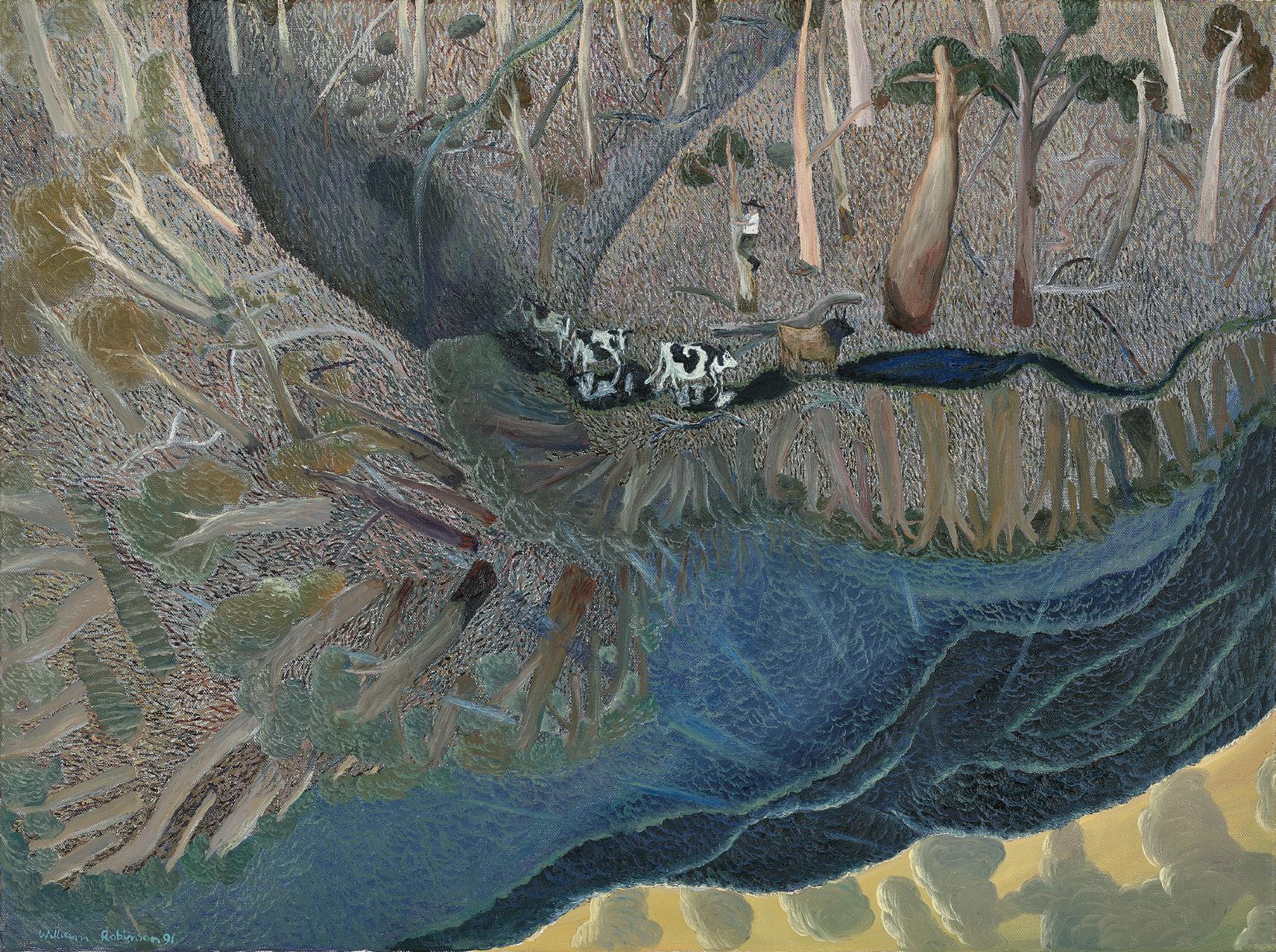
oil on composition board
76.5 x 101.5 cm
signed and dated lower right: Olley 73
Estimate: $60,000 – 80,000
Provenance
Southcorp collection, Adelaide Metro 5 Gallery, Melbourne Private collection, Melbourne, acquired from the above in 1997
Exhibited
Margaret Olley, Holdsworth Galleries, Sydney, 2 – 20 October 1973, cat. 34 or 35
Literature
The Olley Project, https://ehive.com/collections/5439/ objects/465505/marigolds-and-cornflowers-ii or https://ehive.com/collections/5439/objects/465504/ marigolds-and-cornflowers-i (accessed July 2025)
‘…I can think of no other painter of the present time who orchestrates his or her themes with such richness as Margaret Olley. She is a symphonist among flower painters; a painter who calls upon the full resources of the modern palette to express her joy in the beauty of things.’ 1
A much-loved, vibrant personality of the Australian art world for over 60 years, Margaret Olley exerted an enduring influence not only as a remarkably talented artist, but as a nurturing mentor, inspirational muse and generous philanthropist. Awarded an Order of Australia in 1991 and a Companion of the Order of Australia in 2006, Olley featured as the subject of two Archibald-Prize winning portraits (the first by William Dobell in 1948, and the second by contemporary artist Ben Quilty in 2011, just prior to her death) and was honoured with over 90 solo exhibitions during her lifetime, including a major retrospective at the Art Gallery of New South Wales in 1997. Today her work is held in all major state and regional galleries in Australia, and the myriad contents of her Paddington studio have been immortalised in a permanent installation at the Tweed Regional Gallery in northern New South Wales, not far from where Olley was born. Bequeathing a legacy as bountiful as the subject matter of her paintings, indeed her achievements are difficult to overstate – and reach far beyond the irrepressible sense of joy her art still brings.
A striking example of the still-life scenes for which Olley remains widely celebrated, Marigolds and cornflowers, 1973 encapsulates well the way in which she repeatedly turned to the quotidian for inspiration, excavating her domestic setting to uncover the beauty inherent in everyday life. Such impression of familiarity is aided by
Olley’s selection of items here that are eminently unpretentious –marigolds in a stoneware jug, deep blue cornflowers complementing their golden tones, cantaloupe sliced on a plate, and a folded linen cloth resting casually on the wooden table as if the artist had placed it there only moments before. Significantly, the whole arrangement is enlivened by its juxtaposition against an olive-green background – a vibrancy typical of Olley’s work during the seventies when she increasingly experimented with the chromatic possibilities of her art. For indeed, notwithstanding the apparent randomness of her arrangements, always underlying such compositions was the artist’s careful ‘orchestration’ of elements to create a harmonious, perfectly balanced image – an aesthetic originally inspired by her firsthand experience of the theatre in 1948 when she assisted with painting the sets for Sam Hughes’ productions of Shakespeare’s Pericles and Cocteau’s Orphée (designed by Jean Bellette and Sidney Nolan respectively).
Paying homage to the great European masters of her métier such as Vermeer, Bonnard, Matisse and Cézanne, thus Olley meticulously choreographs the various components of her exquisite still lifes as if actors on a stage – objects both commonplace and beautiful, shuffled this way and that, plunged into deep shadow or transformed by lighting. Leading the viewer’s eye and mind through an intimate, deeply personal drama that resonates with the artist’s delight in her domestic surrounds, each composition reveals the very essence of her identity; as Barry Pearce elucidates, ‘…to live with a Margaret Olley painting is to experience the transfiguration of a passionate, highly focused personality into art. In her paintings, the space surrounding each bowl of fruit, each vase of flowers, and through which the eye traverses a cacophony of surfaces such as patterned carpets, modulated walls, and cluttered tabletops, resounds with her presence. These are reflections of the things she loves, and which embellished the centre of how she prefers her existence to be.’ 2
1. Gleeson, J., ‘Introduction’, Margaret Olley, The Johnstone Gallery, Brisbane, 1964, unpaginated
2. Pearce, B., ‘Margaret Olley Retrospective’, State of the Arts, Sydney, August – November 1996, p. 5
Veronica Angelatos
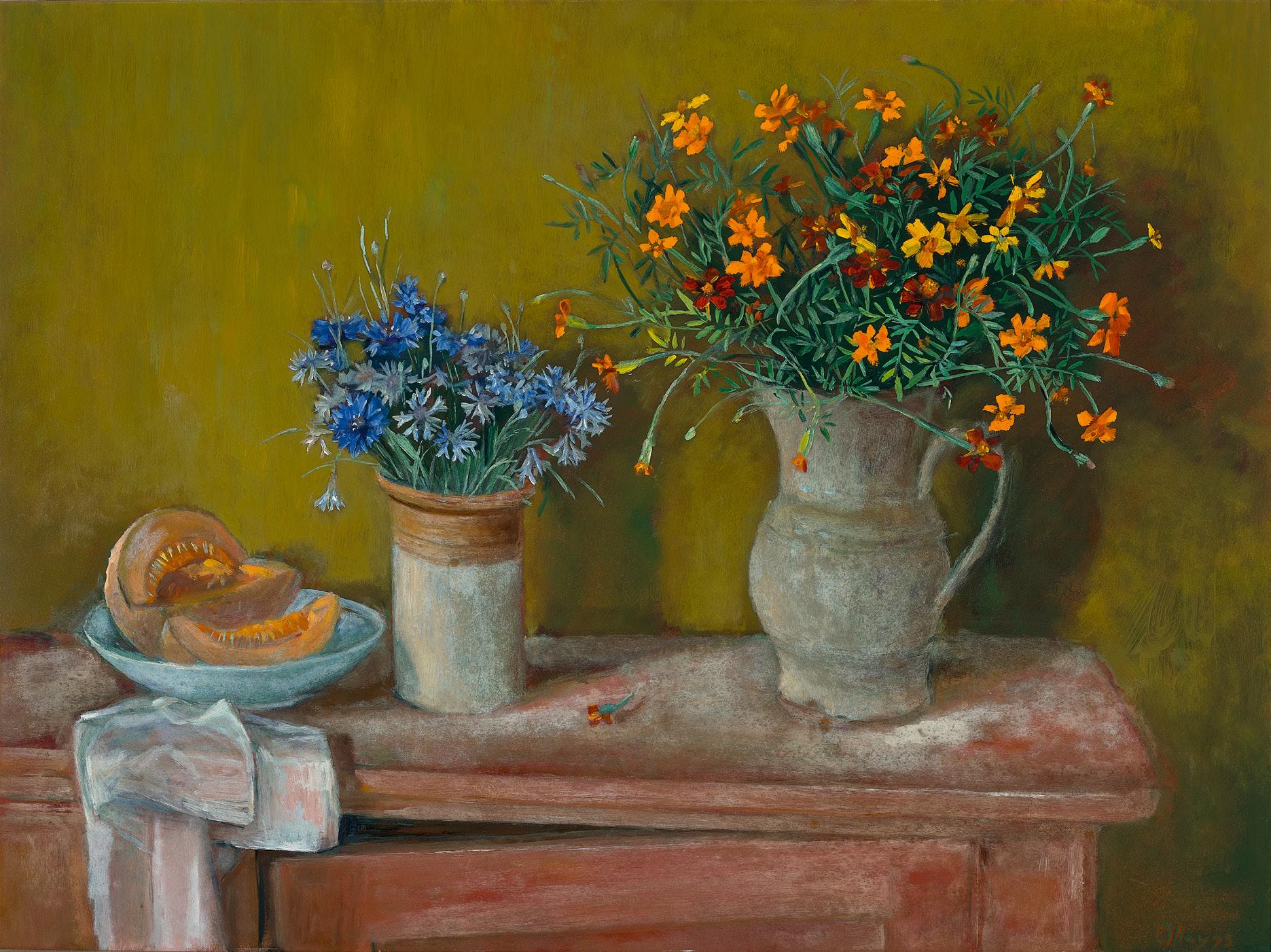
oil on canvas
76.0 x 102.0 cm
signed and dated lower left: MIRKA / 88 inscribed verso: MIRKA / 68 / LOVERS / IN HUGHES / LANDSCAPE
Estimate: $30,000 – 50,000
Provenance
William Mora Galleries, Melbourne (stamped verso)
Private collection, Melbourne, acquired from the above in 1992
Exhibited
Mirka Mora - Recent Paintings, Willliam Mora Galleries, Melbourne, April 1992
Flanked by a pair of doves and surrounded by boughs of wildflowers, Mirka Mora’s hybrid woodland creatures appear joined in a mysterious ceremony within this painting inflected with the otherworldly, medieval quality of a fairytale. The wedding, 1988, was created during the second chapter of Mora’s colourful artistic career, at a time following the dissolution of her long marriage to Georges Mora, when her identity as an independent multimedia artist found its full form and her idiosyncratic oeuvre began to be celebrated. Although a treasured catalysing figure of the Melbourne art scene since the 1950s, Mora’s contribution to the development of Australian modernist art is still to be fully recognised.1
Bursting with generosity and joie de vivre, Mora’s art reflected the ebullient nature of its creator. Born in Paris in 1928 to parents of Lithuanian and Romanian Jewish heritage, Mora was sent to an internment camp alongside her mother and two sisters, only surviving the Holocaust by hiding in the forest of the French countryside. Barbara Blackman later wrote that Mora emerged from this experience ‘a mistress of invention untainted by formal education.’ 2 In a 1979 interview with the Australian Broadcasting Company, Mora claimed that her ‘brain got stuck’ at that tender age.3 Memory became a defining leitmotif of Mora’s paintings, drawings and textile works, endowing them with a disarming innocence and strong autobiographical register. From her first charcoal drawings in the 1950s, a celebration of love and family life has been a central theme of Mora’s artistic vision. The whimsical tableau presented in The wedding includes wide-eyed figures of her personal iconography co-existing with fantastical creatures, the magical powers of the forest providing them all with protection.
Although Mora resisted attempts to analyse her works, her simple, self-taught forms are underscored by a strong literary foundation and informed by a vast and intriguing array of sources. Possibly drawing on the legacy of French Surrealist interest in automatic drawing and the unique visual vocabularies of folk art and Art Brut, Mora’s expressive figuration was most profoundly shaped by her interaction at Heide with Arthur Boyd, John Perceval and Joy Hester. Like Arthur Boyd within his series Love, Marriage and Death of a Half-Caste, Mora uses allegorical imagery to present marriage as a surreal process of transformation and metamorphosis.
Mirka Mora’s anthropomorphic creatures and human avatars are depicted with bright, saturated tones. Boldly outlined, their flat shapes seem to float in the shallow and monochromatic space. Paying homage to her Eastern European heritage, these folkloric figures are arranged in a frieze that becomes almost sculptural in the physicality of its paint. This monumental narrative effect is likely an outcome of Mora’s extensive production of largescale murals throughout the 1970s, which enduringly wove her whimsy into the quotidian visual fabric of Melbourne. Patrick McCaughey provided counsel for the public’s interpretation of Mora’s unique visual offering: ‘… [Mirka’s] fantasies are not a way of escaping from the world but a way of participating in it. They redeem it from its mundanity, transforming it into a magical zone… a bright world to enter and difficult to leave…’4
1. Morgan, K., “Mirka Mora” in N Bullock, K Cole, D Hart & E Pitt (eds), Know My Name, National Gallery of Australia, Canberra, 2020, pp. 260–261
2. Blackman, B., ‘The good ship Mora: Melbourne in the 1950s’, Meanjin, vol. 2, 1996 (winter), pp. 293-305
3. Reich, H., ‘Mirka Mora: From Holocaust survivor to the matriarch of Melbourne’s art scene, an incredible life on display in exhibition’, The Art Show, ABC, 14 March 2021
4. McCaughey, P., ‘Fantasy key to the world’, The Age, Melbourne, 7 June 1967, p. 8 Lucie Reeves-Smith
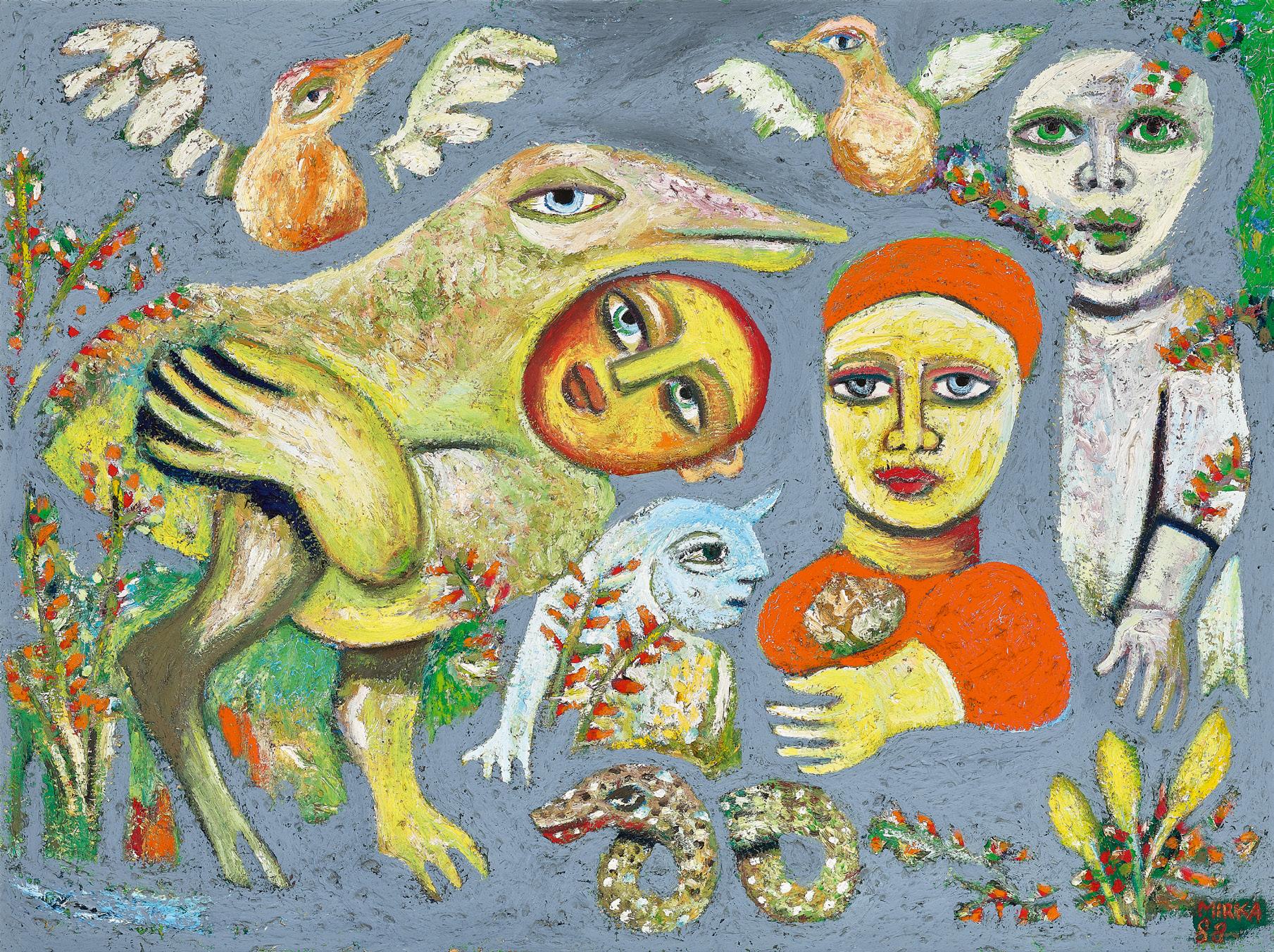
oil and tempera on muslin on board
52.0 x 65.0 cm
signed and dated lower right: Blackman 52 bears inscription verso: S. GIRL / NOCTURNE
Estimate: $40,000 – 60,000
Provenance
Savill Galleries, Sydney
Private collection, Melbourne, acquired from the above in 2002
Exhibited
A Century of Australian Painting 1888 – 1988, Savill Galleries, Sydney, 21 April – 21 May 1988, cat. 40
Arthur Boyd and Charles Blackman: Important Works, Savill Galleries, Sydney, 2 – 27 August 1989, cat. 19
Charles Blackman: Works from 1952 – 1990, Savill Galleries, Melbourne, 13 March – 21 April 2002 (label attached verso)
Related work
The Birthday, 1952, enamel on muslin gauze on composition board, 63.5 x 91.0 cm, private collection, illus. in Shapcott, T., The Art of Charles Blackman, Andre Deutsch, London, 1989, pl. 8
In the shadowy twilight, a lone girl drifts along a deserted suburban street enclosed by an anonymous row of terrace houses. An early poetic cityscape of lustrous tempera, Nocturne, 1952 was painted shortly after Charles Blackman and his wife, author Barbara, arrived in Melbourne, having recently settled in the suburb of Hawthorn. With symbolic simplification, Nocturne synthesises the artist’s subjective experience of isolation in an unfamiliar environment with the dominant currents of surrealist-tinged figuration and the palpable societal unease of the early 1950s. Describing a relationship between a vulnerable child and a hostile built environment, Nocturne emerges from the same ‘wellspring of creative courage’ that bore Blackman’s ‘Schoolgirls’ series, painted between 1952 - c.1954, definitively launching his emerging career.1
With an urgency and precocious authority that critic Alan McCulloch identified in his work as early as February 1952, Blackman’s cityscape paintings conveyed a psychological quality through ‘strong poetic bias.’2 The evocative imagery of poetry and literature, read aloud by Blackman to his visually impaired wife, provided endless aesthetic possibilities for the artist throughout his career. One of the earliest encounters came from a trip the Blackmans made in the winter of 1952 to Queensland. Here they stayed with poet Judith Wright, with whom Blackman discovered a shared appreciation of Australian lyric poet John Shaw Nielson – particularly his 1922 poem Schoolgirls Hastening. Parsing the differing versions of Blackman’s introduction to Nielson, it is likely that Sunday Reed first made the
connection to the artist’s early cityscapes featuring children in the Hawthorn neighbourhood (such as Nocturne), and before his trip to Queensland referred him to the poem, which would become an influential touchstone for the later Schoolgirl paintings.3
Nocturne’s atmospheric scene, leached of colour, is isolated from a broader narrative like a still from a film noir. The landscape is stripped of superfluous detail to create instead a pattern of flat expanses of colour, against which the child seems to float, a central focal point. A bowed figure, her identity is concealed by clothes which become a rigid armour, at once protecting her from the nebulous threat presented by her built surroundings and detaching her from communication and interaction. Although she is partly illuminated, she casts no shadow across the empty street, her passive presence taking on an ambiguous and surreal quality. Different from the wide-eyed, knowing anxiety of the first of the Schoolgirls, this child is lost in reverie, seemingly unaware of the threats of the man-made landscape that provides her no shelter.
While his peer Danila Vasilieff had portrayed the children of Melbourne’s inner city streets as self-assured, with Blackman, their passive vulnerability is emphasised, set against the inhospitable angularity of Melbourne’s houses, factories and streets.4 Featuring saw-toothed gabled roofs, the tiered terraces enclosing this scene are half hidden in darkness; Blackman has rendered the genteel suburban environment strangely gothic. This same row of terraces is illuminated in more detail, as a backdrop to a centrally placed pair of figures, children holding hands, in a related work, The Birthday, 1952.
1. Amadio, N., Charles Blackman Lost Domains, Alpine Fine Arts Collection, New York, 1980, p. 10
2. McCulloch, A., ‘The Art of Charles Blackman’, Meanjin, vol. 11, no. 1, Autumn 1952, p. 44
3. Morgan, K., Charles Blackman: Schoolgirls, Heide Museum of Modern Art, Melbourne, pp. 12, 30
4. Dixon, C., and Smith, T., Aspects of Australian Figurative Painting 1942 – 62. Dreams, Fears and Desires, Power Institute of Fine Arts, University of Sydney, 1984, p. 80 Lucie Reeves-Smith
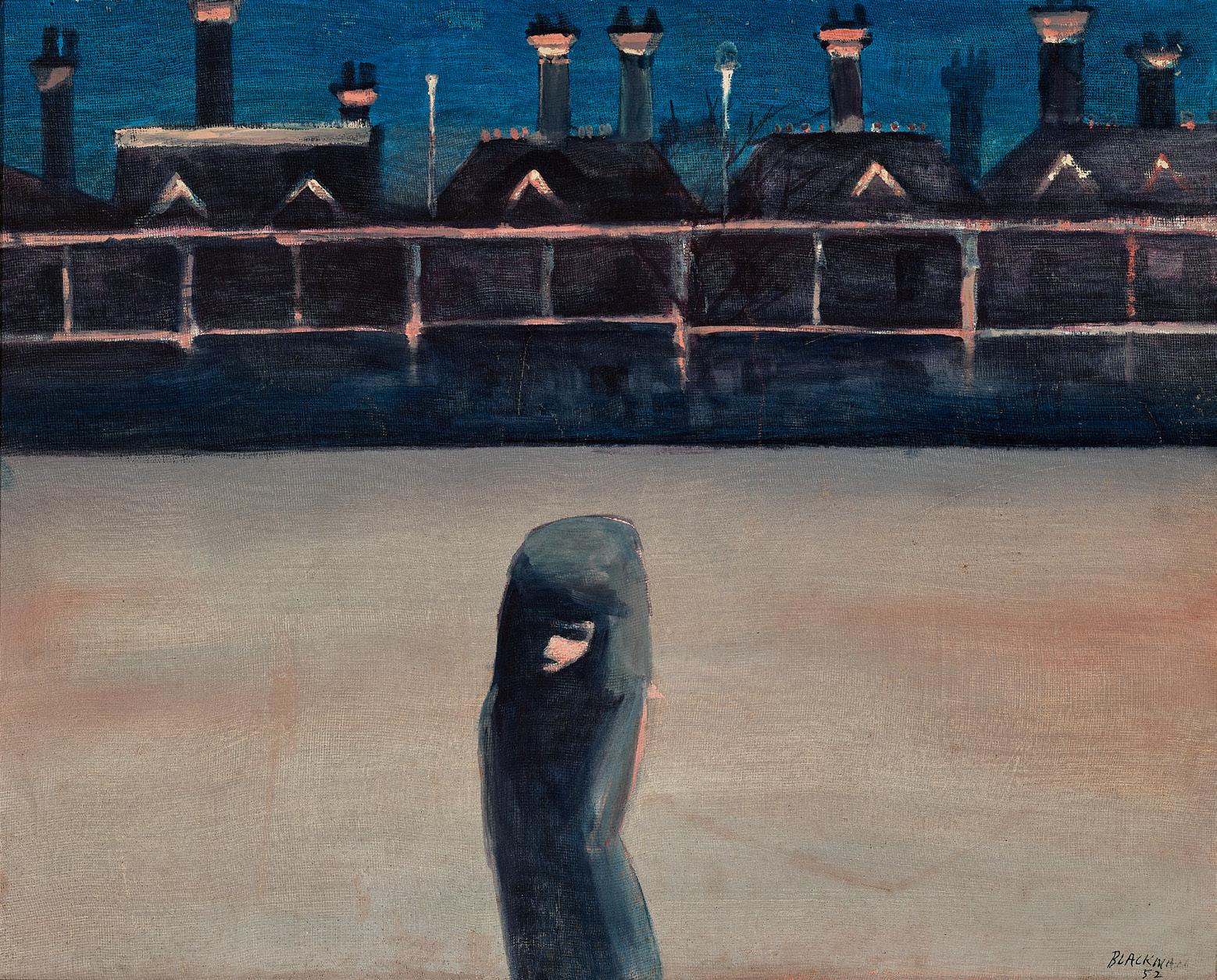
Darwin, 1950
watercolour on paper on cardboard
26.0 x 36.0 cm
signed lower right: ALBERT NAMATJIRA
Estimate: $70,000 – 90,000
Provenance
Norman Neil McLean, Darwin, acquired on a visit to central Australia in 1950s
Thence by descent
Private collection, Queensland
Exhibited on long term loan to the National Gallery of Australia, Canberra, from 2009 – 2025
Related work
Arafura Sea at Darwin, 1950, watercolour on paper, 34.0 x 37.0 cm, private collection, sold Deutscher and Hackett, Melbourne, 26 March 2025, lot 10
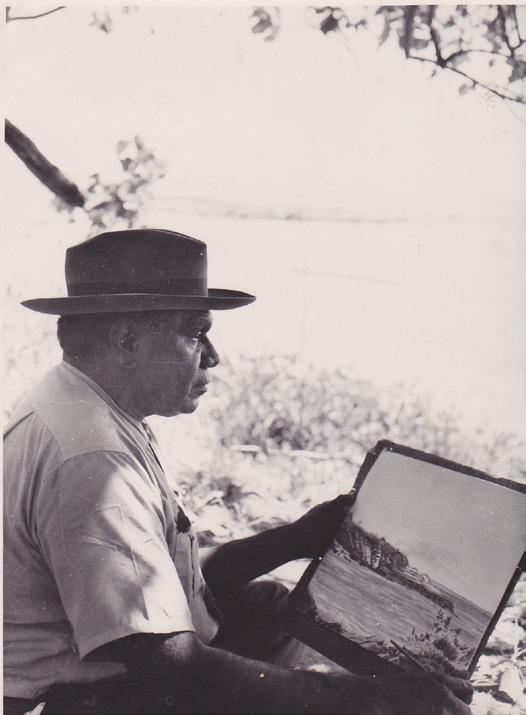
Albert Namatjira painting at Rapid Creek, Darwin, July 1950 photographer unknown
In July 1950, Albert Namatjira departed central Australia for the first time, traveling to Darwin on a personal mission to gain approval to acquire a pastoral lease north-west of the Haast’s range where he intended his family to make a living grazing cattle. Although ultimately unsuccessful as the government authorities denied his request, the trip resulted in the creation of a small number of rare and important seascapes of the Darwin coastline that was unlike any previous work produced by the artist.
Arriving on 19 July in Darwin, he thought the place the biggest in the world; notably Namatjira was yet to embark on his 1954 journey to the southern capitals Sydney, then Canberra to be presented to the Queen, and then Melbourne and Adelaide before returning to Alice Springs. Although Namatjira had no intention to paint on the trip, this soon changed after a visit to Rapid Creek beach located close to where he was staying, and with the Arafura Sea stretching out beyond, he vowed to return to record these watery scenes. The first attempt he destroyed feeling it was an inferior work, yet Namatjira persevered and completed four or five seascapes whilst in Darwin, including our work. Darwin, 1950, is a sparse rendering of Rapid Creek beach in both subject and palette. Painted at low tide with the Arafura Sea stretching to the distant horizon, the work features the brightness of the morning light washing across the stark white beach in the foreground, with low coastal mangroves and hardy salt-resistant Melaleuca and Casuarina trees filling the middle ground promontory and the blue/green Arafura sea in the distance.
Two watercolours painted during this trip were illustrated in the September 1950 edition of The Australian Women’s Weekly
magazine – namely Bloodwood trees at Rapid Creek, 1950, and Arafura Sea at Darwin, 1950 (sold at Deutscher and Hackett on 26 March 2025) which was illustrated in colour. The accompanying article written by Robert Freeden under the banner ‘NAMATJIRA PAINTS HIS FIRST SEASCAPE’, noted that ‘For Albert Namatjira, the aboriginal artist, to paint his first seascape took courage of a sort that white Australians might find it difficult to understand. When Namatjira visited Darwin recently he went into what was for him, a foreign country… But nobody, not even Namatjira, realised what his reaction to the sea would be. He saw it first in the morning light, the glittering blue-green Arafura Sea. For a whole day Namatjira stared at the sea. Next morning, he completed his first seascape. It was subdued, timid. I realised Namatjira was afraid of Darwin. For two days he painted no more. But he kept coming back to look at the sea. One day without word to anyone, he walked along the beach and painted the two pictures in this issue.’ 1
The art of Albert Namatjira is now understood to have inspired his own and subsequent generations of Aboriginal people and artists across Australia. As Brenda Croft argues, the artist’s gift to indigenous and non-indigenous people is ‘more than the sum parts of watercolour paints on paper. It is an essence that resides in the strength of Namatjira’s work – his courage, his sorrow, his spirituality… where the enduring influence of this one man upon the entire indigenous arts and culture industry continues to be felt.’ 2
1. Freeden, R., ‘Namatjira Paints His First Seascape’, The Australian Women’s Weekly, Sydney, 16 September 1950, p. 36
2. Croft, B., ‘Albert’s Gift’ in French, A., Seeing the Centre: The Art of Albert Namatjira, 1902 – 1959, National Gallery of Australia, Canberra, 2002, p. 148 Crispin Gutteridge

watercolour on paper
50.5 x 71.0 cm (sheet)
signed and dated lower left: HANS HEYSEN 1954
Estimate: $50,000 – 70,000
Provenance
Private collection, Melbourne, acquired directly from the artist in September 1954
Thence by descent
Private collection, Melbourne
Related work
In the Flinders – Far North, 1951, oil on canvas, 102.0 x 141.0 cm, National Gallery of Australia, Canberra
If one tree universally suggests Australia, it is the gum tree with its distinctive smell of eucalyptus. Such is its physiological hold that in 1902, when the artist Tom Roberts received a letter from the London-based Arthur Streeton complaining of homesickness, Roberts sent him dry gum leaves to burn in his fireplace as a temporary cure. On moving there himself in 1905, Roberts initiated an annual dinner at the restaurant Au Petit Riche in Soho for Australian artists living in England at which gum tree leaves were burned ‘with much ceremony at table in a censer.’ 1 Not surprisingly, Australia’s Indigenous people also revere the tree, deeming it sacred, and use it to promote health, to cleanse, and in ceremonies to cure the spirit. For Australian art lovers, Hans Heysen too will always be associated with gum trees, and In the Moralana Gorge, Flinders Ranges, 1954, is a clear demonstration why.
Heysen’s mastery of the subject is legendary and his focus forensic, but not to the point of clinical observation. Instead, his trees are beautifully rendered tributes to their might and individuality, writing in a letter from 1926 that ‘..there is something extremely exhilarating when tall white gums tower into the blue heavens – the subtle quality of the edges where they meet the sky – how mysterious.’ 2 That same year, Heysen took up the advice of a correspondent who had written to him about the lands around South Australia’s Finders Ranges with ‘such big gum trees, they would delight you.’3 The journey proved to be a revelation, and between 1926 and 1933, he made nine trips to the Ranges (sited on the traditional lands of the Adnyamathanha people) with two additional visits in 1947 and 1949. The clear distinction in the resultant landscape paintings was that Heysen had been made ‘curiously conscious of a very old land where the primitive forces of Nature were constantly
evident.’4 These stark contrasts shifted his artistic direction too, introducing subtle modernist concepts of flatness and design.
Moralana Gorge lies on the western approach to Wilpena Pound, a natural amphitheatre enclosed by mountains, and Heysen’s mastery of watercolour is on full display here. This is not surprising as he had been already awarded the prestigious Wynne Prize for landscape painting six times between 1909 and 1931 for his watercolour entries. Having likely created related sketches of Moralana en plein air during the 1949 expedition, he was subsequently invited to submit a painting into the 1951 Jubilee Art Prize, which resulted in the powerful oil In the Flinders – far north, 1951 (National Gallery of Australia). In 1954, following a commission from an enthusiastic Melbourne collector who already owned a number of the artist’s works, Heysen reworked this painting as a watercolour, imbuing it with more light and colour than the original. Upon receipt, the new owner declared in a letter to the artist that this image of Moralana Gorge was ‘really outstanding… The spirit of the Flinders Ranges is truly reflected – the starkness, the depth & the strength. To say that we are delighted is an understatement.’ 5 Significantly, In the Moralana Gorge, Flinders Ranges has remained within the same family for the interceding period, only now available in the public domain for the first time in seventy years.
1. Smith, Bernard. Australian Painting 1788 – 1960, Oxford University Press, Melbourne, 1962, pp. 152 – 153
2. Hans Heysen, Letter to Lionel Lindsay, 14 March 1926, La Trobe Collection, State Library of Victoria, MS9104, cited in North, I., Hans Heysen, Sun Books, Melbourne, 1979, p. 11
3. Jessie C. Cook, Letter to Hans Heysen, 1911, cited in Theile, C., Heysen of Hahndorf, Rigby Ltd., Adelaide, 1968, pp. 135, 195
4. Hans Heysen, ‘Some notes on art’, Art in Australia, 3rd series, no. 44, June 1932, p. 18
5. Private correspondent, Letter to Hans Heysen, 3 September 1954 Andrew Gaynor

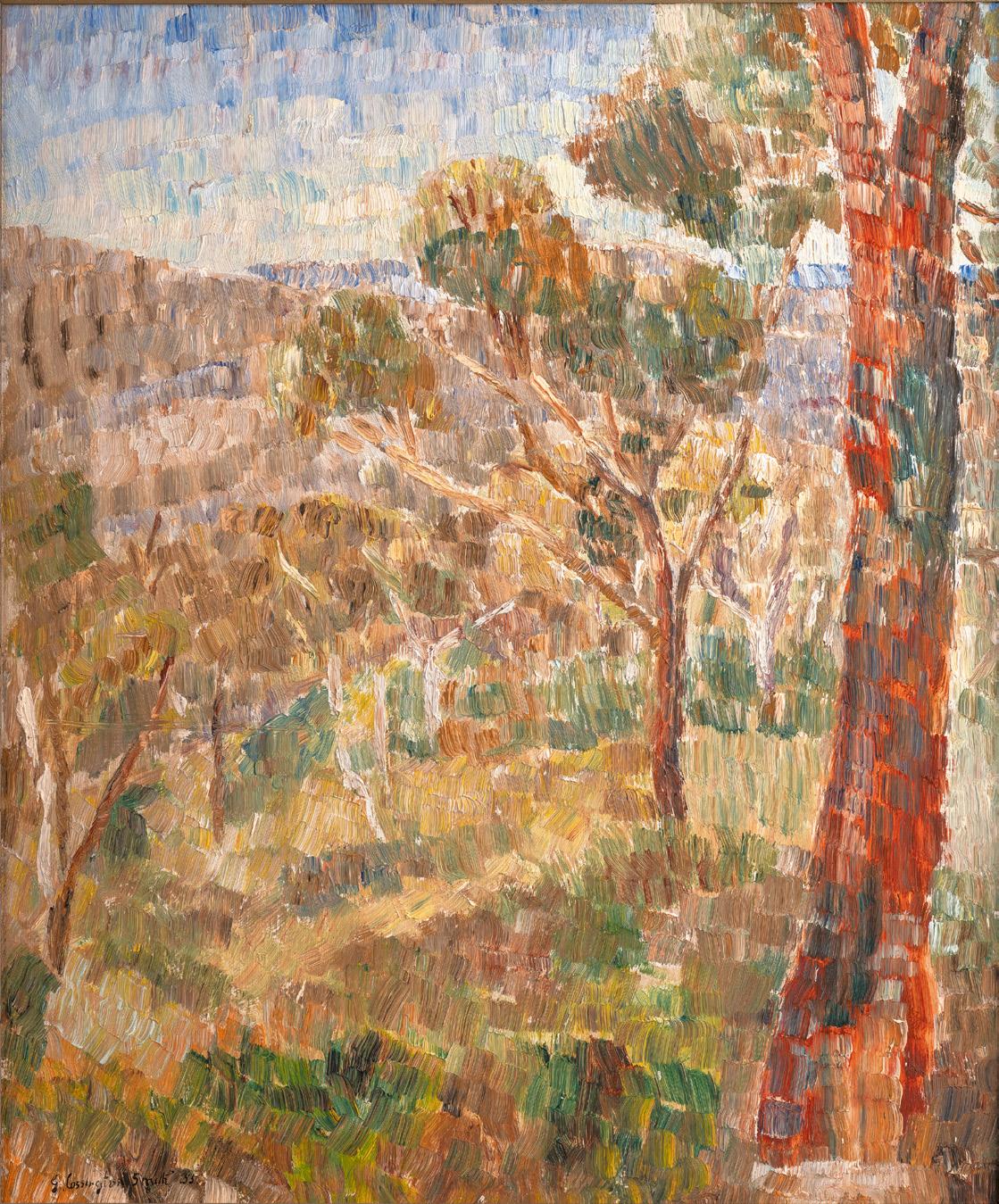
49 Grace Cossington Smith (1892 – 1984)
Bush scene, 1955
oil on card on board
44.0 x 37.0 cm
signed and dated lower left: G. Cossington Smith 55
Estimate: $20,000 – 30,000
Provenance
Private collection, Sydney
Thence by descent
Private collection, Sydney
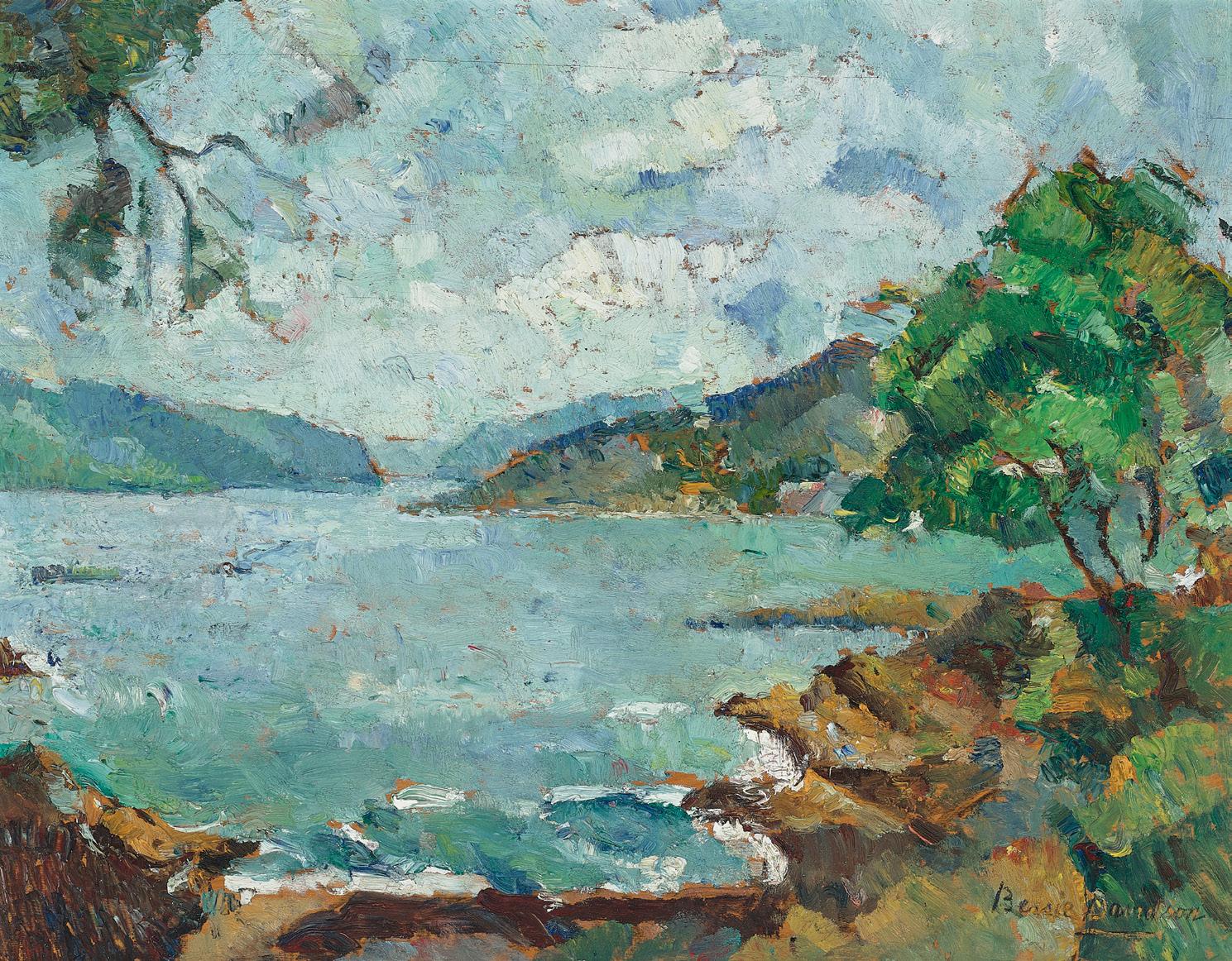
Davidson (1879 – 1965)
Scottish loch, c.1935
oil on plywood
36.0 x 46.0 cm
signed lower right: Bessie Davidson
Estimate: $18,000 – 24,000
Provenance
Collection of the artist, Adelaide
Thence by descent
Private collection, Adelaide
Thence by descent
Private collection, Adelaide
Exhibited
Bessie Davidson & Sally Smart - Two artists and the Parisian avantgarde, Bendigo Art Gallery, Victoria, 20 March – 26 July 2020
Literature
Curtin, P., (ed.), Bessie Davidson: An Australian Impressionist in Paris, Bendigo Art Gallery, Victoria, 2020, p. 51 (illus.)
oil on pulpboard
44.0 x 36.5 cm
Estimate: $25,000 – 35,000
Provenance
Private collection, Adelaide, c.1988
Private collection, Melbourne, a gift from the above
We are grateful to Brenda Thomas, wife of the late David Thomas AM, for kindly allowing us to reproduce David’s writing in this catalogue entry.
The finding of beauty in everyday things, combined with a unique sense of colour and light distinguishes the work of Grace Cossington Smith above all other Australian artists. A room, the garden, a bowl of native flowers becomes something wondrous, golden and glowing. And here lies that fascinating paradox of the simplicity of the subject and the profundity of its meaning. Golden wattle is the national floral emblem, displaying the Australian colours of green and gold. Resistant to droughts and fires, and harbinger of spring, it characterises the Australian spirit. In Golden wattle, Cossington Smith embraces this and raises it to another level through her use of light suffused with colour. Through her brush, the light of this world becomes a metaphor of enlightenment. ‘My chief interest... has always been colour, but not flat crude colour, it must be colour within colour, it has to shine; light must be in it...’ 1 Smith’s still life paintings thereby extend beyond being an expression of the enjoyment of the visual world to an exploration of the spiritual found therein.
Golden wattle is a classic example. It sparkles with light and colour, especially yellow – ‘the colour of the sun’, as she described it.2 Enlivened by individual strokes of pure colour, juxtaposed and contrasted, all is in a state of heightened movement swirling around the jug of wattle positioned just off centre. Delighting once again in paradox – still life and movement –
even the immobility of the vase finally gives way to its glazed surface of dancing strokes of colour. Mosaic-like in paint; it differs in that its light comes from within, not reflected.
While the figurative elements of Cossington Smith’s pictures are readily discernible, the overall effect transcends reality. The prosaic becomes poetic in the embracing harmony of a hymn of visual praise. The vibrancy of paintwork is stilled only by the serenity of inner tranquillity. The seeming simplicity of concept and response, one of those marvellous paradoxes of creativity, is wedded to an intimacy that invites participation and admiration. Writing many years ago, Ethel Anderson said of her work, ‘Miss Grace Cossington Smith’s pictures have the cool elegance of hail, or of cherry blossoms after a spring shower. They are high-pitched and clear... And they are all happy pictures. Miss Cossington Smith seems to paint for no other reason than to express her pleasure in life.’3 Though outwardly paintings of flowers, inwardly they are essays of enjoyment for sharing with the viewer.
1. Grace Cossington Smith, interviewed by Hazel de Berg, 16 August 1965, in the Hazel de Berg collection, National Library of Australia, Canberra, cited in Modjeska, D., Stravinsky’s Lunch, Picador, Pan Macmillan Australia, Sydney, 1999, p. 227
2. Modjeska, ibid., p. 225
3. Anderson, E., ‘Happy pictures by a young Australian artist’, Walkers Monthly, London, April 1932, cited in Thomas, D., Grace Cossington Smith, Art Gallery of New South Wales, Sydney, 1973, p. 7
David Thomas

Sunbaker, 1937 (printed later)
silver gelatin photograph
37.5 x 39.5 cm
signed and dated in image lower right: – Max Dupain ‘37 –inscribed with title below image: Sunbaker
Estimate: $25,000 – 35,000
Provenance
John Chalk, Queensland, acquired directly from the artist in 1990
Thence by descent
Private collection, Queensland
Exhibited
Max Dupain: A Retrospective 1930 – 1975, The Australian Centre for Photography, Sydney, 21 October – 29 November 1975; and touring (another example)
The Thirties and Australia, S.H. Ervin Gallery, Sydney, 19 June – 13 July 1980, cat. 101 (another example)
Max Dupain Retrospective 1930 – 1980, Art Gallery of New South Wales, Sydney, 29 August – 28 September 1980, cat. 26 (another example)
Ten Years On, Art Gallery of New South Wales, Sydney, January 1986 (another example)
Celebrity Choice – Sam Neill, Art Gallery of New South Wales, Sydney, 8 January – 8 February 1987 (another example)
Four Photographers, Art Gallery of New South Wales, Sydney, 2 June – 19 August 1990 (another example)
Fine and Mostly Sunny: Photographs from the Collection, Art Gallery of New South Wales, Sydney, 28 September – 1 December 1991, cat. 22 (another example)
Max Dupain – An Appreciation, Art Gallery of New South Wales, Sydney, 11 – 30 August 1992 (another example)
Soft Shadows and Sharp Lines: Australian Photography from Cazneaux to Dupain, Art Gallery of New South Wales, Sydney, 30 September – 17 November 2002 (another example)
On the Beach: with Whiteley and fellow Australian artists, The Brett Whiteley Studio, Sydney, 1 March – 29 June 2003 (another example)
Modern Times, Powerhouse Museum, Sydney, 1 August 2008 – 8 February 2009 (another example)
Australia, The Royal Academy of Arts, London, 21 September – 8 December 2013 (another example)
The Photograph and Australia, Art Gallery of New South Wales, Sydney, 21 March – 8 June 2015; then touring to Queensland Art Gallery | Gallery of Modern Art, Brisbane, 4 July – 11 October 2015 (another example)
Under the sun: Reimagining Max Dupain’s Sunbaker, Monash Gallery of Art, Melbourne, 6 May – 6 August 2017 (another example)
Literature
Newton, G., Max Dupain: Photographs 1928 – 80, The David Ell Press, Sydney, 1980, p. 64 (illus., another example)
Max Dupain’s Australia, Viking Press, Sydney, 1986, p. 104 (illus.,
another example)
Ennis, H., Max Dupain: Photographs, National Gallery of Australia, Canberra, 1991, p. 18 (illus., another example)
White, J., Smee, S. and Cawood, M., Dupain’s Beaches, Chapter and Verse, Sydney, 2000, p. 69 (illus., another example)
Annear, J., The Photograph and Australia, Art Gallery of New South Wales, Sydney, 2015, pp. 40, 50, 104 (illus., another example), 294
Related works
Other examples of this photograph are held in the collections of the National Gallery of Australia, Canberra, National Gallery of Victoria, Melbourne, Art Gallery of New South Wales, Sydney, Queensland Art Gallery | Gallery of Modern Art, Brisbane, and the Art Gallery of South Australia, Adelaide
There are only a handful of artworks that have been as influential on the creation of a national psyche as Max Dupain’s photograph, Sunbaker, 1937. Its enduring power derives from the incorporation of twin social mythologies prevalent during the inter-war period: that of the ‘old sunburnt country’ and physical health as a symbol for the strength and potential of Modernity. Sunbaker would come to represent in a single recognisable image the new outdoor Australian way of life: the simplicity of composition, dramatic contrast of light, and purity of context coincided to create a powerful and iconic image. Judy Annear, Curator of Photography at the Art Gallery of New South Wales, Sydney attributed this to Dupain’s ability to ‘adroitly harness a moment in time that came to symbolise the ambitions of a nation.’ 1
The story of how this modest snapshot from within one of Dupain’s holiday albums, compiled following a trip to the south coast of New South Wales in 1937 with his friends Harold Salvage and Chris Vandyke, would become the subject of such massive exposure in the latter half of the 20th century is a tale of coincidence. This version of Sunbaker, identical in size and format to those in most of Australia’s state and national collections, is the second version of two pictures that Dupain took at the same time in 1937. The artist chose to publish the other, Sunbaker II, 1937, in a monograph of his work in 1948, and sometime after this, its negative was lost.2 It wasn’t until 1975, thanks to the combined marketing power of a retrospective exhibition of Dupain’s photographs and a later survey of Australian photography, that the image was presented to wide national audiences. The Max Dupain: Retrospective
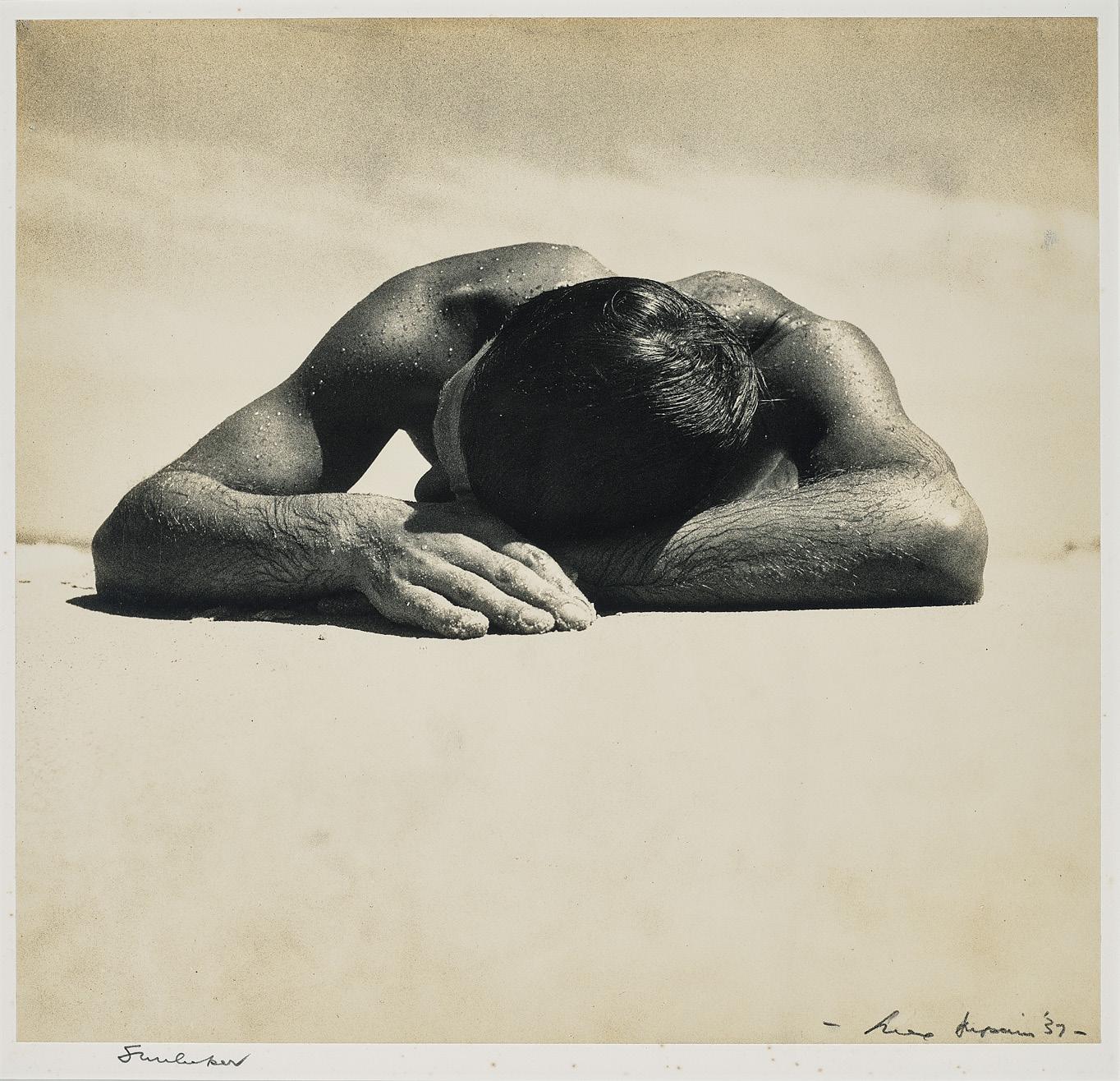
at the Australian Centre for Photography, Sydney in 1975 used Sunbaker as a promotional image and four years later, it was illustrated on the back cover of the catalogue for Australian photographers: the Philip Morris Collection. The images in Australian photographers were personally selected by James Mollison, founding director of the National Gallery of Australia, Canberra.3
In formal terms, the composition of Sunbaker marked a departure from the artist’s earlier surrealist studio montages, which often featured full-length female nudes. Creating a visual correlation between the geometric solidity of a pyramid and the physical strength of a young man, Dupain’s photograph sits in a neat nexus between modernist formalism and an idealistic focus on physical wellbeing in the interwar years. This young man, with his bronzed skin and muscles glistening with salt, sand, sweat and seawater would come to embody the ideal antipodean (ironically,
he was an Englishman who had recently emigrated to Australia). The subject does not call out to the viewer, encouraging them to emigrate to the idealised southern land of sunshine and good health, as he would have in contemporary advertisements. Instead, we as viewers, intrude on his intimacy and respite, the reduced form of his recumbent body jutting out into the foreground of the photograph, almost transcending the barrier of the picture plane. The austere simplicity and lack of spatial context of Dupain’s composition creates a timeless and universal space where man is at one with the land, resting on the horizon’s edge.
1. Annear, J., Photography: The Art Gallery of New South Wales Collection, Art Gallery of New South Wales, Sydney, 2007, pp. 142 – 149
2. Newton, G., ‘The Sunbaker’ in White, J., Dupain’s Beaches, Chapter & Verse, Sydney, 2000, p. 68
3. Annear, J., Photograph and Australia, Art Gallery of New South Wales, Sydney, 2015, p. 46
Lucie Reeves-Smith
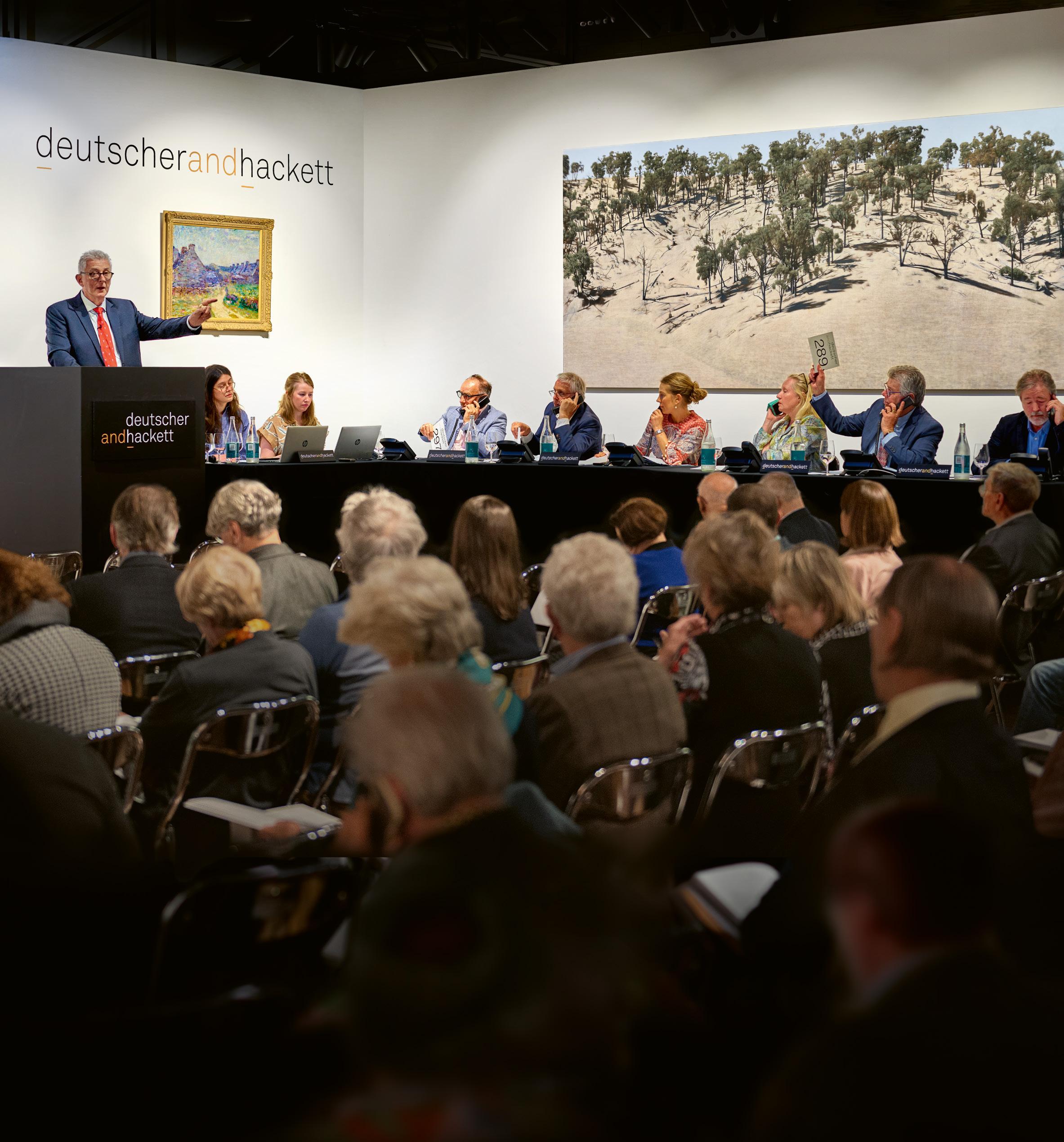
ALL PARTIES ARE STRONGLY URGED TO READ THE CONDITIONS OF AUCTION AND SALE INCLUDED IN THIS CATALOGUE
1. PRIOR TO AUCTION
CATALOGUE SUBSCRIPTIONS
Catalogues can be obtained at Deutscher and Hackett offices or by subscription (see the Catalogue Subscription Form at the back of this catalogue or online for more information).
PRE-SALE ESTIMATES
The price range estimated against each lot reflects the opinion of our art specialists as to the hammer price expected for the lot at auction and is informed by realised prices for comparable works as well as the particularities of each lot including condition, quality, provenance and rarity. While presale estimates are intended as a guide for prospective buyers, lots can be sold outside of these ranges. Pre-sale estimates include GST (if any) on a lot but do not include the buyer’s premium or other charges where applicable.
The reserve is the minimum price including GST (if any) that the vendor will accept for a lot and below which the lot will not normally be sold.
PRE-AUCTION VIEWINGS
In both Sydney and Melbourne pre-auction viewings are scheduled for several days in advance of each auction. Deutscher and Hackett specialists are available to give obligation free advice at viewings or by appointment and prospective buyers are strongly encouraged to thoroughly examine and request condition reports for potential purchases. Pre-auction viewings are open to the public and are free to attend.
SYMBOL KEY
▲ Unless ownership is clearly stated in the provenance, this symbol is used where a lot is offered which Deutscher and Hackett owns in whole or in part. In these instances, Deutscher and Hackett has a direct financial interest in the property or means that Deutscher and Hackett has guaranteed a minimum price.
● Used to indicate lots for sale without a reserve.
EXPLANATION OF CATALOGUING PRACTICE AND TERMS
All information published in Deutscher and Hackett catalogues represent statements of opinion and should not be relied upon as fact. All dimensions are listed in centimetres, height before width and are approximate. All prices are in Australian dollars.
All reference to artists make use of common and not full names in accordance with the standards outlined in the National Gallery of Australia reference publication Australian Art: Artist’s working names authority list. For instance, John Brack rather than Cecil John Brack; Roy de Maistre rather than Leroy Leveson Laurent De Maistre; Rosalie Gascoigne rather than Rosalie Norah Gascoigne.
Terms used in this catalogue have the meanings ascribed to them below:
a. NICHOLAS CHEVALIER: in the opinion of Deutscher and Hackett, a work by the artist.
b. Attributed to NICHOLAS CHEVALIER: in the opinion of Deutscher and Hackett, probably a work by the artist, in whole or in part.
c. Circle of NICHOLAS CHEVALIER: in the opinion of Deutscher and Hackett, a work showing the influence and style of the artist and of the artist’s period.
d. Studio/Workshop of NICHOLAS CHEVALIER: in the opinion of Deutscher and Hackett, a work possibly executed under the supervision of the artist.
e. School of NICHOLAS CHEVALIER: in the opinion of Deutscher and Hackett, a work by a follower or student of the artist.
f. Manner of NICHOLAS CHEVALIER: in the opinion of Deutscher and Hackett, a work created in the style, but not necessarily in the period, of the artist.
g. After NICHOLAS CHEVALIER: in the opinion of Deutscher and Hackett, a copy of a work by the artist.
h. “signed” / “dated” in the opinion of Deutscher and Hackett, the work has been signed/dated by the artist.
i. “bears signature” / “bears date” in the opinion of Deutscher and Hackett, the work has possibly been signed/dated by someone other than the artist.
Where appropriate, Deutscher and Hackett will include the known provenance, or history of ownership of lots. Non disclosure may indicate that prior owners are unknown or that the seller wishes to maintain confidentiality.
Auctions are open to the public and are free to attend. Deutscher and Hackett may exclude any person at any time in its discretion.
Bidders must register to bid prior to the commencement of an auction. Deutscher and Hackett may impose other obligations on the registration of bidders in its discretion.
Lots are offered for sale on a consecutive basis. Deutscher and Hackett will determine the conduct of the auction in its absolute discretion, including the regulation of bidding. Consecutive or responsive bids may be placed by the auctioneer on behalf of the vendor up to the reserve.
As a courtesy service, Deutscher and Hackett will make reasonable efforts to place bids for prospective buyers in absentia provided written or verbal instructions (as indicated on absentee bid forms included at the back of this catalogue or online) are received 24 hours prior to auction. Where successful, lots will be purchased at the lowest possible bid and in the event of identical absentee bids, the bid received earliest will take precedence. Deutscher and Hackett accepts no responsibility for errors and omissions in relation to this courtesy service and reserves the right to record telephone bids.
Unless indicated otherwise, all lots are subject to a confidential reserve price determined by the vendor. Deutscher and Hackett or the auctioneer may place any number of bids on behalf of the vendor below the reserve price and is not obliged to identify that the bids are being placed on behalf of the vendor.
Bidding usually opens below the listed pre-sale estimate and proceeds in the following increments (the auctioneer may vary the bidding increments at his or her discretion):
$500 – 1,000 by $50
$1,000 – 2,000 by $100
$2,000 – 3,000 by $200
$3,000 – 5,000 by $200 / $500 / $800
$5,000 – 10,000 by $500
$10,000 – 20,000 by $1,000
$20,000 – 30,000 by $2,000
$30,000 – 50,000 by $2,000 / $5,000 / $8,000
$50,000 – 100,000 by $5,000
$100,000 – 200,000 by $10,000
$200,000 – 300,000 by $20,000
$300,000 – 500,000 by $20,000 / $50,000 / $80,000
$500,000 – 1,000,000 by $50,000
$1,000,000+ by $100,000
The fall of the auctioneer’s hammer indicates the final bid and the buyer assumes full responsibility for the lot from this time.
Where a lot is unsold, the auctioneer will announce that the lot is “bought in”, “passed”, “withdrawn” or “returned to owner”.
Payment must be made within seven days of the date of sale in Australian dollars by cash, cheque, direct deposit, approved credit cards or electronic funds transfer. If payment is made by credit card the price will increase by any merchant fees payable by Deutscher and Hackett (1.15% (including GST) for Visa and Mastercard and 1.65% (including GST) for American Express). In certain circumstances, extension of payment may be granted at the discretion of Deutscher and Hackett. Cleared funds will be held in an interest bearing trust account by Deutscher and Hackett until remitted to the vendor. Deutscher and Hackett will be entitled to retain any interest earned during this period. Payment by the vendor of any charge to Deutscher and Hackett is to be made within fourteen days of invoice.
The purchase price will be the sum of the final bid price (including any GST) plus a buyer’s premium set at 25% (inclusive of GST) of the final bid price. Buyers may be liable for other charges reasonably incurred once ownership has passed.
Buyers are required to pay a 10% G.S.T which sum is:
a. included in the final bid prices where buying from a GST registered vendor; and b. included in any additional fees charged by Deutscher and Hackett; and c. included in the buyer’s premium.
Where GST applies to some lots the final bid price will be inclusive of the applicable GST. If a buyer is classified as a “non-resident” for the purpose of GST, the buyer may be able to recover GST paid on the final purchase price if certain conditions are met.
Lots paid for in full may be collected from Deutscher and Hackett premises the day after the auction occurs but lots paid for by cheque may not be collected until all funds have cleared. Proof of identification is required upon collection and lots not collected within seven days of the sale may incur costs associated with external storage and freight.
Risk in the lot, including risk of loss or damage, will pass to the buyer on either the date payment is due, whether or not it has been made, or on collection by the buyer, whichever is earlier. The buyer is therefore encouraged to make arrangements to ensure comprehensive cover is maintained from the payment due date.
Deutscher and Hackett directly offers services including storage, hanging and display, appraisals and valuations, collection management and research and in all instances will endeavour to coordinate or advise upon shipping and handling, insurance, transport, framing and conservation at the request and expense of the client. Deutscher and Hackett does not accept liability for the acts or omissions of contracted third parties.
Prospective bidders are advised to enquire about export licences — including endangered species licences and cultural heritage permits, where relevant — prior to bidding at auction. Telephone the Cultural Property and Gifts Section, Museums Section, Ministry for the Arts, on 1800 819 461 for further information. The delay or denial of such a licence will not be grounds for a rescission of sale.
The copyright in the images and illustrations contained in this catalogue may be owned by third parties and used under licence by Deutscher and Hackett. As between Deutscher and Hackett and the buyer, Deutscher and Hackett retains all rights in the images and illustrations. Deutscher and Hackett retains copyright in the text contained in this catalogue. The buyer must not reproduce or otherwise use the images, illustrations or text without prior written consent.
ALL PARTIES ARE STRONGLY URGED TO READ THE CONDITIONS OF AUCTION AND SALE INCLUDED IN THIS CATALOGUE
The terms and conditions of business set forth below are subject to amendment by verbal or written notice prior to and during the auction and sale. They constitute the entire contractual agreement with the buyer in respect to any lot offered at auction. By bidding at auction in any manner compliant with bidding procedures, the buyer and all bidders agree to be bound by these terms and conditions and the terms of the prospective buyers and sellers guide contained in this catalogue, as amended. To the extent that an agent acts on behalf of the buyer, liability for obligations arising from these conditions of business will pass to the buyer. Multiple buyers are jointly and severally liable for obligations arising from this agreement.
1. Definition of terms:
a. The ‘buyer’ refers to the party with the highest accepted bid for any lot at auction and/or such party’s principal where bidding as agent.
b. The ‘vendor’ refers to the party consigning property for sale and/or such party’s principal where acting as agent.
c. ‘Deutscher and Hackett’ refers to Deutscher and Hackett Pty Ltd ACN 123 119 022, its subsidiaries, officers, employees and agents.
d. The ‘hammer price’ refers to the final bid price (including any GST) accepted by the auctioneer, or in the case of a post-auction sale, the agreed sale price (including any GST).
e. The ‘buyer’s premium’ refers to the 25% (inclusive of GST) payable by the buyer calculated as a percentage of the hammer price.
f. ‘GST’ refers to the goods and services tax imposed by the A New Tax System (Goods and Services) Act 1999 as amended.
g. The ‘lot’ refers to the item(s) described against any lot number in the catalogue.
h. The ‘reserve’ refers to the minimum price (including any GST) the consignor will accept for a lot.
2. Agency: Deutscher and Hackett acts as agent for the vendor and the contract of sale for the lot will be between the buyer and the vendor.
3. Property is sold ‘as is’: To the extent permitted by law:
a. no guarantees, warranties or representations are made (express or implied) by Deutscher and Hackett or the vendor in relation to the nature and condition of any lot; and
b. Deutscher and Hackett disclaims liability for any misrepresentations, errors or omissions, whether verbal or in writing, in the catalogue or any supplemental material.
All factual information provided by the vendor is merely passed on by Deutscher and Hackett from the vendor or other source. Deutscher and Hackett has made no attempt to verify this information. All additional statements of opinion represent the specialist opinions of Deutscher and Hackett employees and should not be relied upon as statements of fact.
4. Responsibility to inspect: Responsibility remains with the buyer to satisfy its, his or her self by inspection and evaluation prior to purchase as to the nature and condition of any property.
5. Registration: Bidders must register to bid and obtain a bidder’s paddle prior to the commencement of the auction. Registration requires that bidders provide proof of identity and Deutscher and Hackett may impose other obligations on the registration of bidders in its discretion.
6. Auctioneer’s discretion: Deutscher and Hackett reserves the right to absolute discretion over the conduct of the auction including the regulation of bidding and its increments. This discretion extends to the challenge or rejection of any bid, the right to withdraw any lot and the right to determine the successful bidder or reoffer a lot in the event of a dispute. The prospective buyers and sellers guide details an indicative process for the conduct of auctions. All parties are strongly urged to read the prospective buyers and sellers guide included in this catalogue.
7. Bidding: Deutscher and Hackett may sell each lot to the highest bidder at auction provided the reserve price has been met or where the net amount accounted to the vendor is at least equivalent to the net amount that would have been achieved for a sale at the reserve price. The fall of the auctioneer’s hammer marks the acceptance of the highest bid and the conclusion of a contract for sale between the vendor and the buyer. Unless otherwise agreed in writing with Deutscher and Hackett, the individual physically present at the auction who signals the bid accepts personal liability to pay the purchase price, including the buyer’s premium and all additional fees, taxes and charges.
8. Amounts inclusive of GST: Unless otherwise specified, all amounts specified in this section as payable by the buyer, or otherwise used to calculate payment to Deutscher and Hackett, are inclusive of any GST component. Deutscher and Hackett will provide buyers with a tax invoice that meets the requirements of the Australian Taxation Office.
9. Application of GST to buyers: Buyers are required to pay a 10% GST which sum is:
a. included in the final bid prices where buying from a GST registered vendor; and
b. included in any additional fees charged by Deutscher and Hackett; and
c. included in the buyer’s premium.
If a buyer is classified as a “non-resident” for the purpose of GST, the buyer may be able to recover GST paid on the final purchase price if certain conditions are met.
10. Post auction private sale: Should the lot fail to sell at auction, Deutscher and Hackett is authorised to sell the lot privately for a period of seven days in which event this agreement shall apply to the relevant buyer to the full extent of its provisions.
11. Payment: The buyer will not acquire title until payment has cleared in full. Interest at a rate of 17.5% p.a. will be charged over outstanding accounts where no extension of terms has been granted. Interest will be payable from the payment due date. With respect to each lot purchased, the buyer agrees to make the following payments within seven days from the date of sale:
a. The hammer price.
b. In exchange for services rendered by Deutscher and Hackett, a buyer’s premium calculated at 25% (inclusive of GST) of the hammer price.
c. Post sale packing, handling, shipping and storage where applicable.
d. If payment is made via Visa, Mastercard or American Express, any merchant fees payable by Deutscher and Hackett on the transaction as indicated in the prospective buyers and sellers guide. Payment must be made within seven days of the date of sale in Australian dollars by cash, cheque, direct deposit, approved credit cards or electronic funds transfer using the form and/or trust account details provided at the back of this catalogue. In certain circumstances, extension of payment may be granted at the discretion of Deutscher and Hackett. Once funds have cleared, the proceeds of the sale less the buyer’s Premium, GST and any commission or costs charged as agreed will be remitted to the vendor within thirty-five days of the date of sale provided payment has been received in full. Funds will be held in an interest bearing account by Deutscher and Hackett until remitted to the vendor. Deutscher and Hackett will be entitled to any interest earned during this period. Application for a cultural heritage export licence or any other licence in no way affects the buyer’s obligation to make payment or collection within the periods specified in sections 10 and 13a.
12. Risk and Title: Risk in the lot, including risk of loss or damage, will pass to the buyer on the earlier of:
a. the date payment is due, whether or not it has been made; and b. collection by the buyer.
The buyer assumes risk for the property in all respects from this date and neither Deutscher and Hackett nor the vendor will be liable for loss or damage occurring after the payment due date. The buyer is encouraged to make arrangements to ensure comprehensive cover is maintained from this date. Title in the lot does not pass to the buyer, even if the lot is released to the buyer, until the buyer has paid all sums owing to Deutscher and Hackett. If a buyer makes a claim against Deutscher and Hackett for damage or loss after sale, the buyer’s premium and the final bid price shall be payable notwithstanding.
13. Freight:
a. The buyer may only remove a lot from the Deutscher and Hackett premises once payment has been cleared in full and must be removed no later than seven days after the date of sale. Should items not be removed by this time, storage and insurance costs may be charged to the buyer. If a lot has not been collected within 30 days after the date of sale and alternative arrangements have not been with Deutscher and Hackett, the lot may be re-sold by Deutscher and Hackett without reserve at the next auction and Deutscher and Hackett may set off any amounts owed for storage and insurance costs and its standard commission before remitting the proceeds to the buyer.
b. Buyers are required to make their own arrangements for packing, handling, shipping and transit insurance for their property. Deutscher and Hackett does not accept responsibility or liability for the acts or omissions of any third party, such as a shipping agent, whether or not such a party has been recommended or suggested by Deutscher and Hackett.
14. Limited Warranty of Authorship: If a buyer is able to establish that a lot is a forgery in accordance with these conditions for sale within five years of the date of sale, the buyer shall be entitled to rescind the sale and obtain a refund of the hammer price from the vendor. The buyer must return the lot in the state in which it was sold within fourteen days of notifying Deutscher and Hackett of the forgery allegations. For a lot to be established as a forgery, the following conditions must be satisfied:
a. the buyer must supply two independent expert testimonies attesting to the forgery. Deutscher and Hackett is entitled to request further expert evidence where it deems the evidence provided to be unsatisfactory;
b. there must be no conflict of opinion among accepted experts in the field; and
c. the forgery must be able to be proven through means that at the time of publication of the catalogue were commonly employed and that will not damage or otherwise put the lot in jeopardy.
The limited warranty and the right to rescind the sale is not assignable and the buyer must have retained title to the lot without disposing of any interest in it up until the buyer notifies Deutscher and Hackett of the forgery allegations. The buyer acknowledges that it has no rights directly against Deutscher and Hackett if a lot is established to be a forgery.
15. Termination, Breach and Legalities:
a. Deutscher and Hackett breach: To the extent permitted by law, the sole and maximum remedy to a buyer for breach of warranty is a refund of original purchase price, including buyer’s premium. In such an event the sale contract shall be rescinded and all costs associated with returning the property (in the state in which it was sold) to the premises of Deutscher and Hackett are to be borne by the buyer. Deutscher and Hackett is not liable for any indirect or consequential loss or damage for any matter arising directly or indirectly as a result of the sale.
b. Buyer breach: Deutscher and Hackett may, in addition to other remedies available by law, exercise one or more of the following rights or remedies for breach:
i. Cancel the sale and retain any payment or property in Deutscher and Hackett custody as collateral or liquidated damages.
ii. Charge the buyer interest at the rate of 2% above the rate fixed under section 2 of the Penalty Interest Rates Act 1984 (Vic).
iii. Resell the property without reserve at the next auction or privately on five days notice. Any disparity between sale and resale prices, including associated costs such as, but not limited to, legal, storage and sale expenses, will be to the account of the defaulting buyer.
iv. Apply any part payment received from the buyer in respect of any lots at its discretion.
v. Retain any of the buyer’s property held by Deutscher and Hackett until the buyer has satisfied its obligations to Deutscher and Hackett.
vi. Take any other action Deutscher and Hackett deems necessary or appropriate.
vii. Refuse to permit the buyer to participate in future auctions.
viii. Provide the vendor with the buyer’s details to permit the vendor to take action against the buyer to recover the money.
16. Governing law and jurisdiction: These terms and conditions and any matters concerned with the foregoing fall within the exclusive jurisdiction of the courts of the state in which the auction is held.
17. Severability: In the event that any provisions of this agreement should be found unenforceable in a court of law, that part shall be discounted and the remaining conditions shall continue in full force and effect to the extent permitted by law.
(Mr/Mrs/Ms/Miss) Name (please print)
Billing address (PO Box insufficient)
*Not including buyer’s premium or GST (where applicable). Bids are made in Australian dollars.
Please refer to the Prospective Buyers and Sellers Guide and the Conditions of Auction and Sale in this catalogue for information regarding sales.
By completing this form, I authorise DEUTSCHER AND HACKETT to contact me by telephone on the contact number(s) nominated. I understand it is my responsibility to enquire whether any Sale-Room Notices relate to any lot on which I intend to bid. I also understand that should my bid(s) be successful, a buyer’s premium of 25% (inclusive of GST), will be added to the final hammer price. I accept that DEUTSCHER AND HACKETT provides this complimentary service as a courtesy to its clients, that there are inherent risks to telephone bidding, and I will not hold DEUTSCHER AND HACKETT responsible for any error.
SALE CODE: Champagne
SALE No.: 083
IMPORTANT AUSTRALIAN FINE ART
MELBOURNE AUCTION 27 AUGUST, 7:00 PM LOTS 1 – 52 105 COMMERCIAL ROAD SOUTH YARRA VIC 3141
please email, post or fax this completed form to:
DEUTSCHER AND HACKETT 105 COMMERCIAL ROAD
SOUTH YARRA VIC 3141
tel: 03 9865 6333 fax: 03 9865 6344
info@deutscherandhackett.com
INTERNAL USE ONLY
RECEIVED BY DATE TIME
SALE CODE: Champagne
SALE No.: 083
IMPORTANT AUSTRALIAN FINE ART
MELBOURNE AUCTION
27 AUGUST, 7:00 PM LOTS 1 – 52 105 COMMERCIAL ROAD SOUTH YARRA VIC 3141
(Mr/Mrs/Ms/Miss) Name (please print)
Billing address (PO Box insufficient)
(required)
please email, post or fax this completed form to:
DEUTSCHER AND HACKETT 105 COMMERCIAL ROAD SOUTH YARRA VIC 3141
tel: 03 9865 6333 fax: 03 9865 6344
info@deutscherandhackett.com
RECEIVED BY
DATE TIME
INTERNAL USE ONLY
*Not including buyer’s premium or GST (where applicable). Bids are made in Australian dollars.
Absentee bids must be received a minimum of twenty-four hours prior to auction. All absentee bids received will be confirmed by phone or fax. In the event that confirmation is not received, please resubmit or contact our office.
Please refer to the Prospective Buyers and Sellers Guide and the Conditions of Auction and Sale in this catalogue for information regarding sales. By completing this form, absentee bidders request and authorise DEUTSCHER AND HACKETT to place the following bids acting as agent on their behalf up to and including the maximum bid specified. Lots will be bought at the lowest possible bid authorised by a bidder in absentia.
Should the bid be successful, the buyer will be obliged to pay the final bid price plus buyer’s premium of 25% (inclusive of GST) of the final bid price. DEUTSCHER AND HACKETT provides this complimentary service as a courtesy to clients and does not accept liability for errors and omissions in the execution of absentee bids.
(Mr/Mrs/Ms/Miss) Name (please print)
SALE CODE: Champagne
SALE No.: 083
IMPORTANT AUSTRALIAN FINE ART
MELBOURNE AUCTION 27 AUGUST, 7:00 PM LOTS 1 – 52 105 COMMERCIAL ROAD SOUTH YARRA VIC 3141
please email, post or fax this completed form to:
DEUTSCHER AND HACKETT 105 COMMERCIAL ROAD SOUTH YARRA VIC 3141
tel: 03 9865 6333 fax: 03 9865 6344
info@deutscherandhackett.com
MELBOURNE AUCTION 27 AUGUST, 7:00 PM LOTS 1 – 52 105 COMMERCIAL ROAD SOUTH YARRA VIC 3141
tel: 03 9865 6333 fax: 03 9865 6344
info@deutscherandhackett.com


6 AUGUST — 9 NOVEMBER
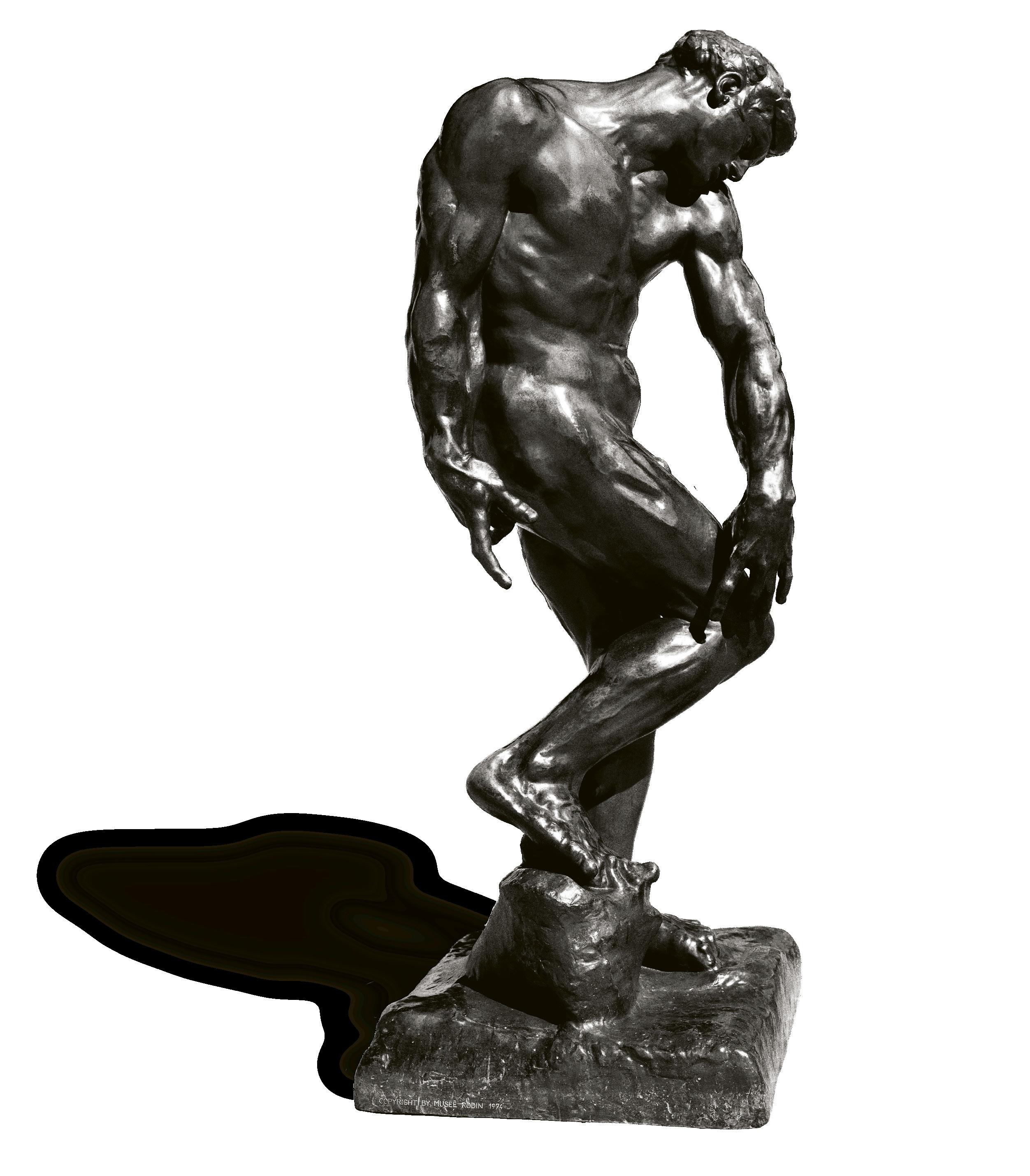
Geelong Gallery
30 August 9 November
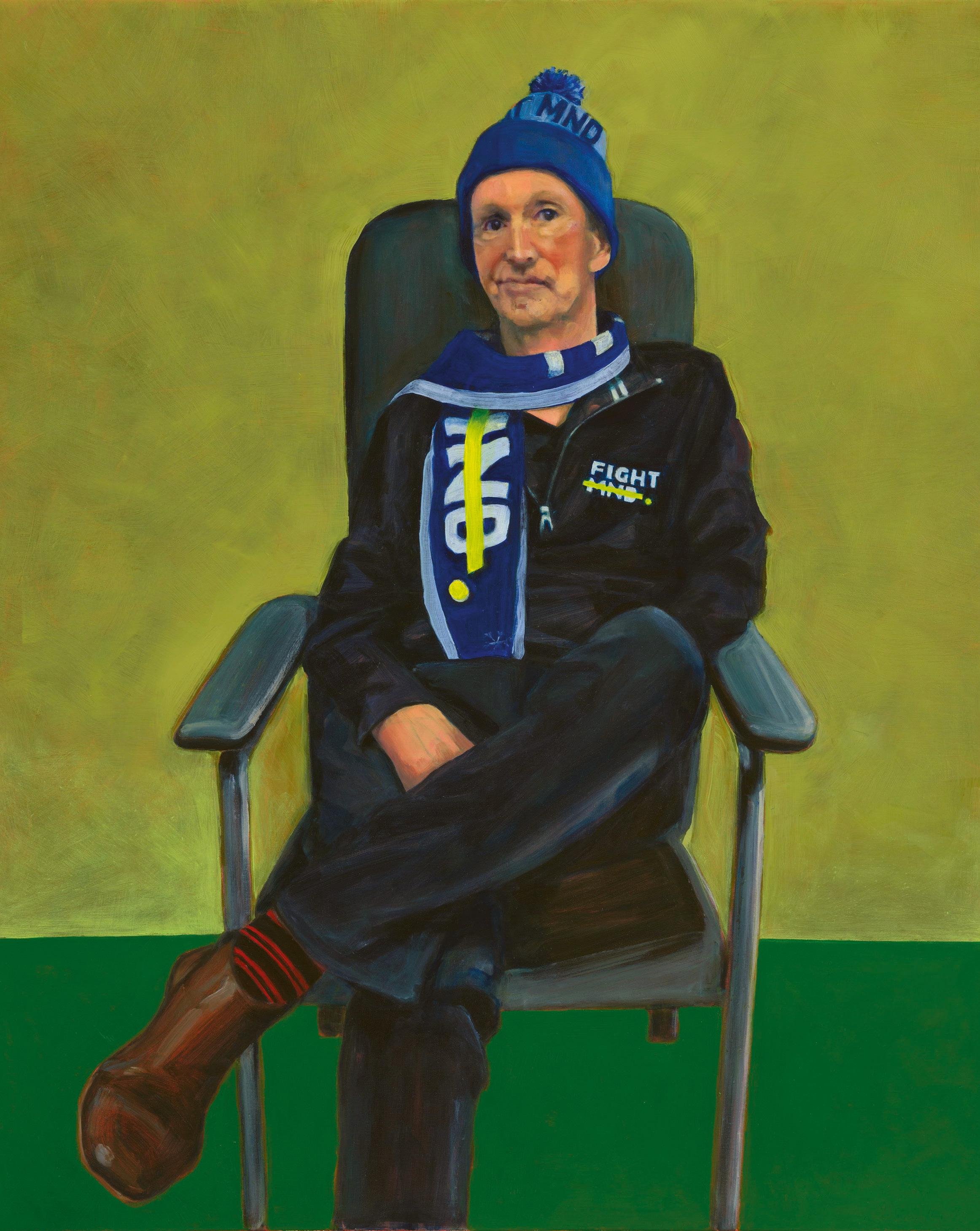



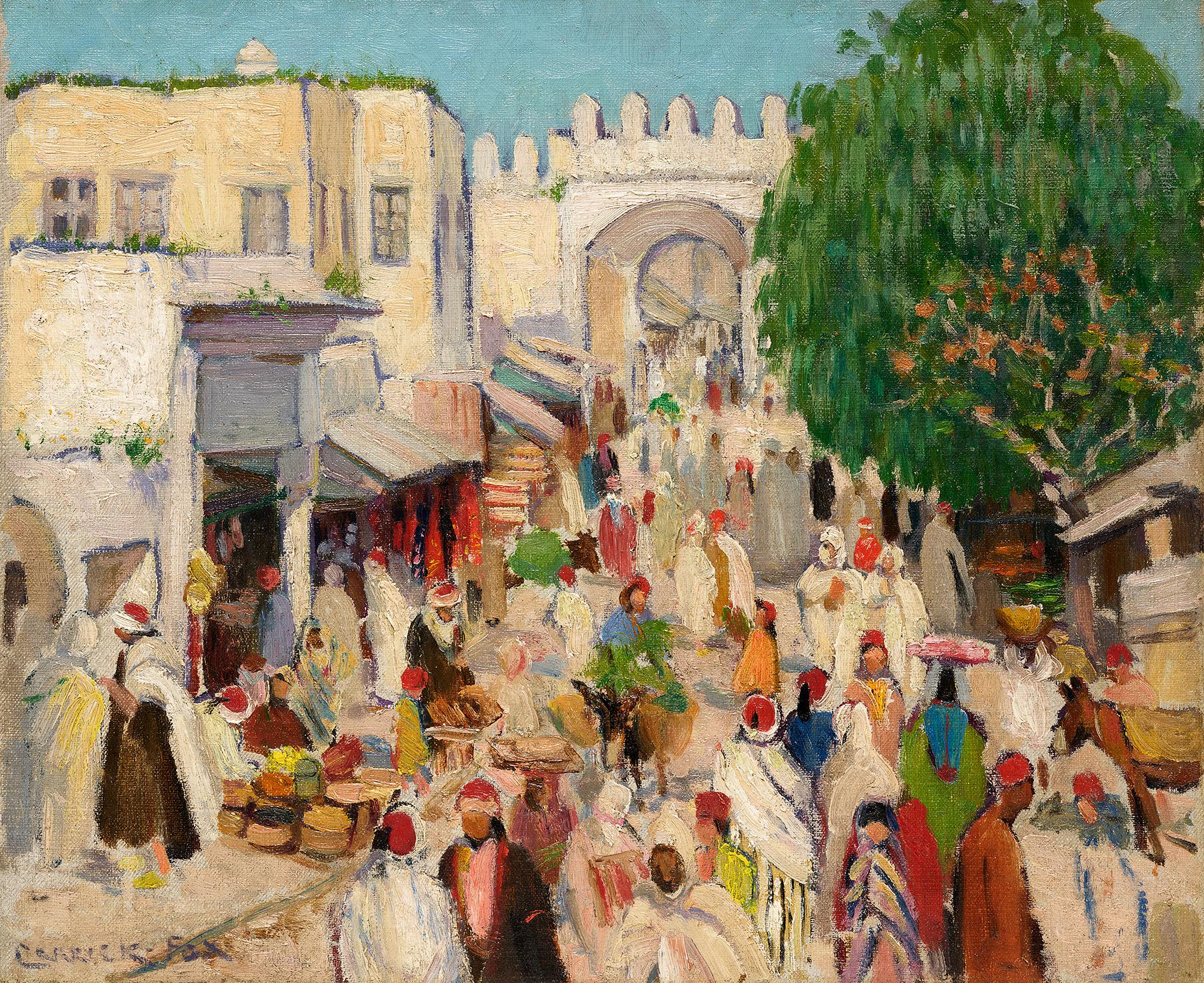
Ethel Carrick’s A market in Kairouan c1919–20 was purchased with the support of the Art Gallery Society of New South Wales through the Elizabeth Fyffe Bequest 2021 For further information or to discuss your bequest in confidence, visit agnsw.art/leave-a-gift or phone +61 2 9225 1746
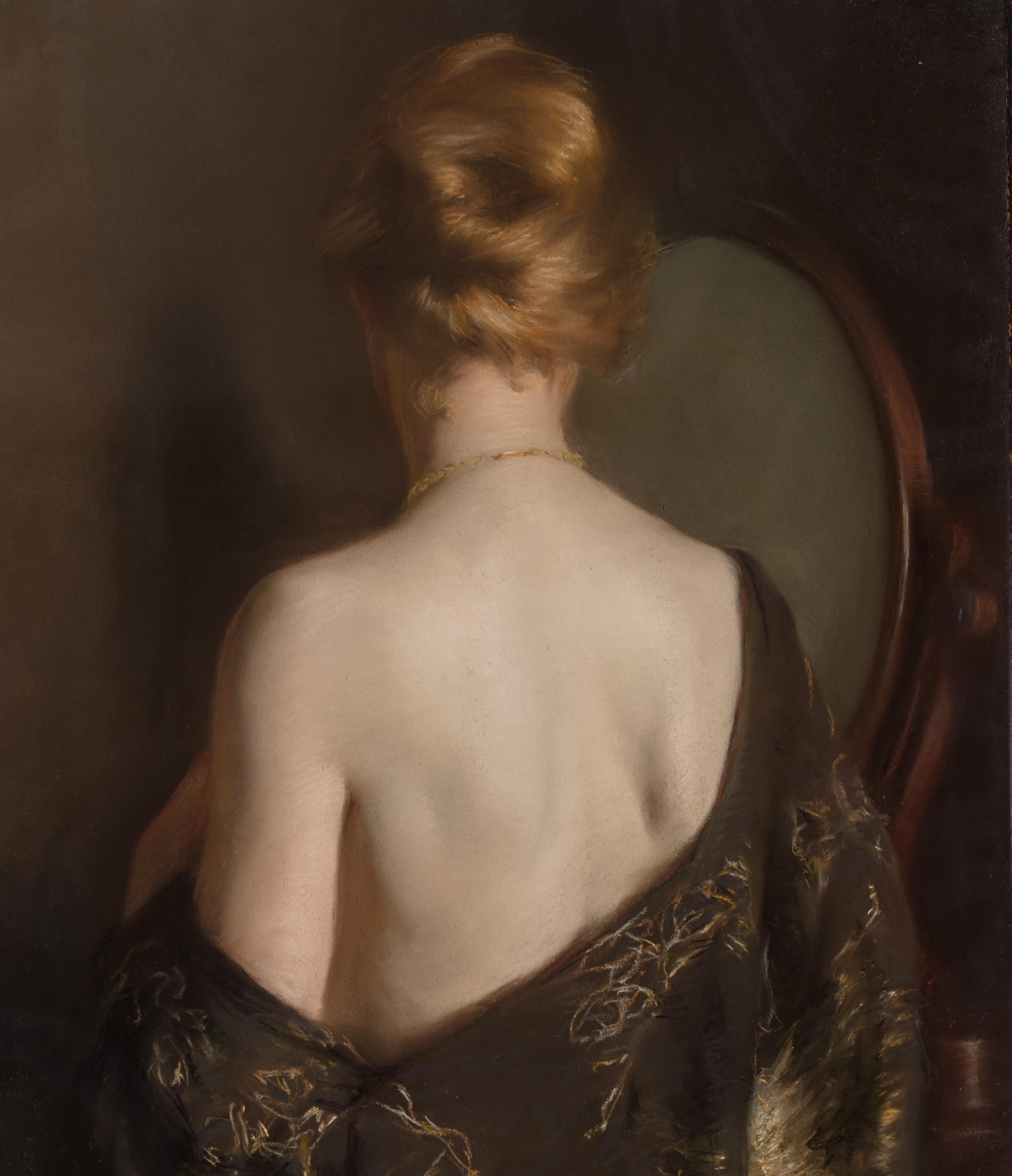
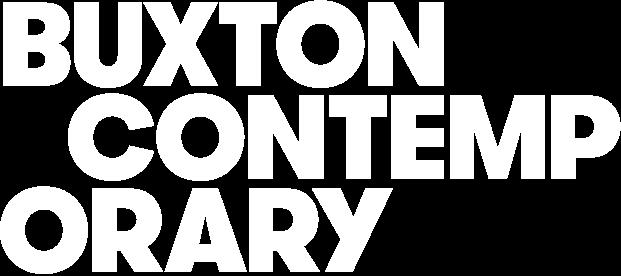
27.0 6—
.1 1. 25
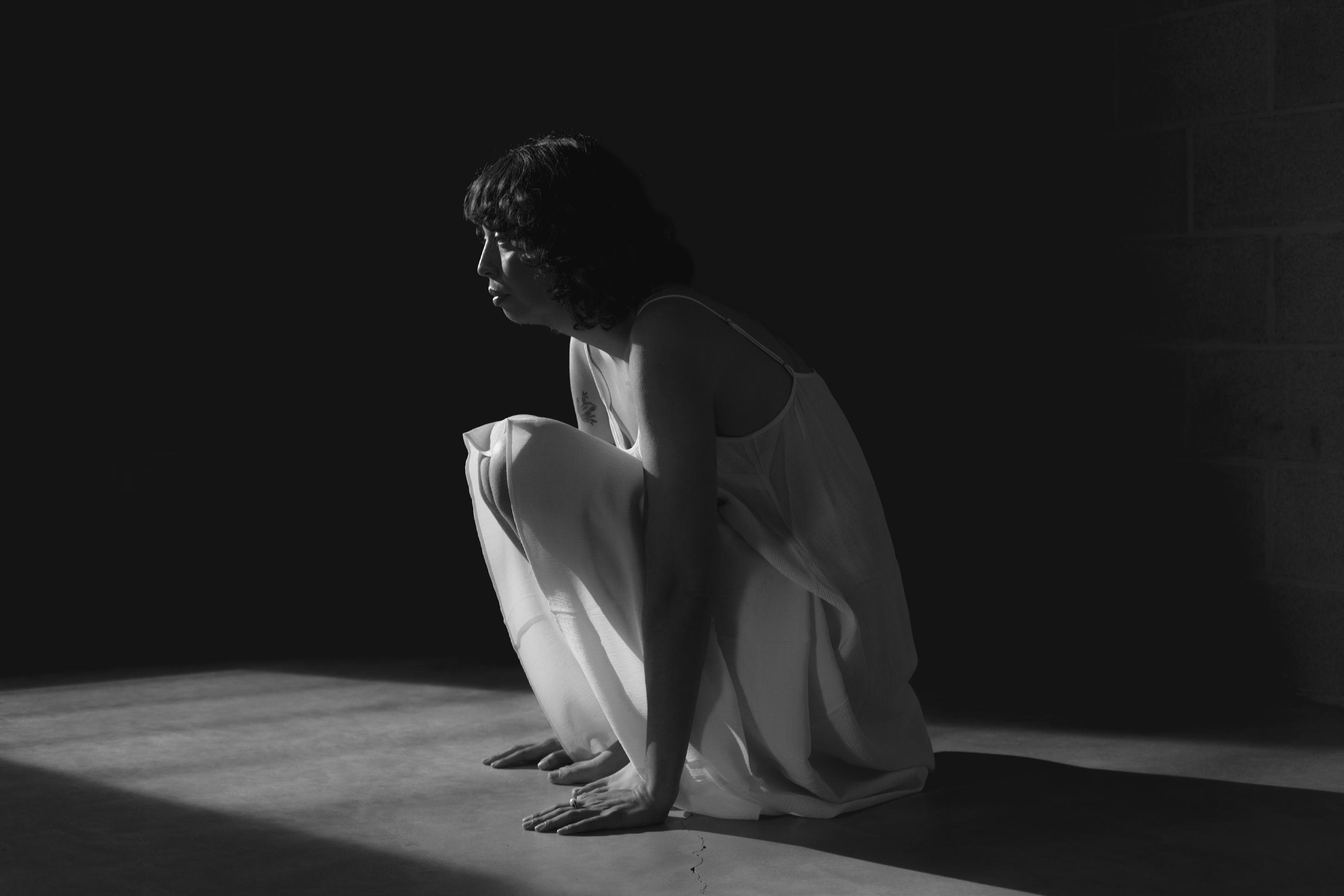

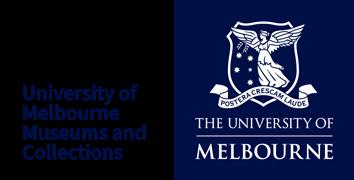



Live Auction Melbourne 26 March 2025, achieves total sales of $4.2M
Entries Invited for forthcoming Auction, March 2026
Emily Kam Kngwarreye
Untitled (Awelye), 1992
synthetic polymer paint on canvas, 164.0 x 228.0 cm
Estimate: $400,000 – 600,000 Sold for $1,196,591 (inc. BP)
© Emily Kam Kngwarreye / Copyright Agency 2025
105 Commercial Rd, South Yarra, VIC Enquiries: 03 9865 6333
Sydney enquiries
36 Gosbell St, Paddington, NSW Enquiries: 02 9287 0600 Melbourne enquiries
info@deutscherandhackett.com www.deutscherandhackett.com for appraisals please contact
COPYRIGHT CREDITS
Lot 3 © The Estate of Grace Cossington Smith
Lot 4 © The Estate of Grace Cossington Smith
Lot 6 © Courtesy Sir William Dobell Art Foundation / Copyright Agency, 2025
Lot 7 © Courtesy of the artist’s estate
Lot 8 © Courtesy of the artist’s estate
Lot 9 © Courtesy of the artist’s estate
Lot 10 © Courtesy of Helen Brack
Lot 11 © The Albert & Barbara Tucker Foundation. Courtesy of Smith & Singer Fine Art.
Lot 12 © The Albert & Barbara Tucker Foundation. Courtesy of Smith & Singer Fine Art.
Lot 13 © Arthur Boyd/Copyright Agency 2025
Lot 14 © Estate of Fred Williams/Copyright Agency 2025
Lot 15 © Wendy Whiteley/Copyright Agency, 2025
Lot 16 © courtesy of The Estate of Jeffrey Smart 2025
Lot 17 © The Estate of Howard Arkley. Licensed by Kalli Rolfe Contemporary Art.
Lot 18 © Wendy Whiteley/Copyright Agency, 2025
Lot 19 © Wendy Whiteley/Copyright Agency, 2025
Lot 20 © Charles Blackman/Copyright Agency 2025
Lot 21 © John Olsen/Copyright Agency 2025
Lot 22 © Estate of Bronwyn Oliver. Courtesy of Roslyn Oxley9 Gallery, Sydney
Lot 23 © Del Kathryn Barton
Lot 24 © Meadmore Sculptures, LLC/VAGA Copyright Agency, 2025
Lot 26 © Tony Tuckson/Copyright Agency 2025
Lot 27 © Emily Kam Kngwarreye/Copyright Agency 2025
Lot 28 © Estate of Sally Gabori/Copyright Agency 2025
Lot 29 © courtesy of The Estate of Paddy Bedford
Lot 34 © Andrew Klippel. Courtesy of The Robert Klippel Estate, represented by Annette Larkin Fine Art, Sydney and Galerie Gmurzynska, Zurich/Copyright Agency, 2025
Lot 35 © Courtesy of the artist’s estate
Lot 36 © Estate of Godfrey Miller
Lot 37 © courtesy of The Estate of Jeffrey Smart 2025
Lot 38 © courtesy of Helen Brack
Lot 39 © Estate of Edwin Tanner
Lot 40 © Arthur Boyd/Copyright Agency 2025
Lot 41 © Ken Whisson/Copyright Agency 2025
Lot 42 © Wendy Whiteley/Copyright Agency, 2025
Lot 43 © William Robinson
Lot 44 © Margaret Olley Trust and The Olley Project
Lot 45 © The Estate of Mirka Mora. Courtesy William Mora Galleries.
Lot 46 © Charles Blackman/Copyright Agency 2025
Lot 47 © Namatjira Legacy Trust/Copyright Agency 2025
Lot 48 © Hans Heysen/Copyright Agency 2025
Lot 49 © The Estate of Grace Cossington Smith
Lot 51 © The Estate of Grace Cossington Smith
Lot 52 © Max Dupain/Copyright Agency 2025
LOTS CONSIGNED BY GST REGISTERED ENTITIES
Lot 9 Roy de Maistre
Lot 11 Albert Tucker
Under the provisions of the Protection of Movable Cultural Heritage Act, 1986, buyers may be required to obtain an export permit for certain categories of items in this sale from the Cultural Property Section:
Some lots consigned for this sale may be subject to the Resale Royalty Right for Visual Artists Act 2009 (Cth). Any payments due under the obligations of the Act will be paid by the vendor.
Design and Photography: Danny Kneebone
© Published by Deutscher and Hackett Pty. Ltd. 2025
ISBN: 978-0-6457871-9-1
Department of Infrastructure, Transport, Regional Development, Communications and the Arts
GPO Box 2154
Canberra ACT 2601
Email: movable.heritage@arts.gov.au
Phone: 1800 819 461
Arkley, H.
Barton, D. K. 23
Bedford, P. N. 29
Blackman, C. 20, 46
Boyd, A. 13, 40
Brack, J. 10, 38
Cossington Smith, G. 3, 4, 49, 51
Davidson, B. 1, 2, 50
De Maistre, R. 7, 8, 9, 35
Dobell, W. 6
Dupain, M. 52
Gabori, S. 28
Gill, S. T. 30, 31, 32
R.
K. 27
Smart, J. 16, 37
E.
Tucker, A. 11, 12
T.
F.
B. 15, 18, 19, 42
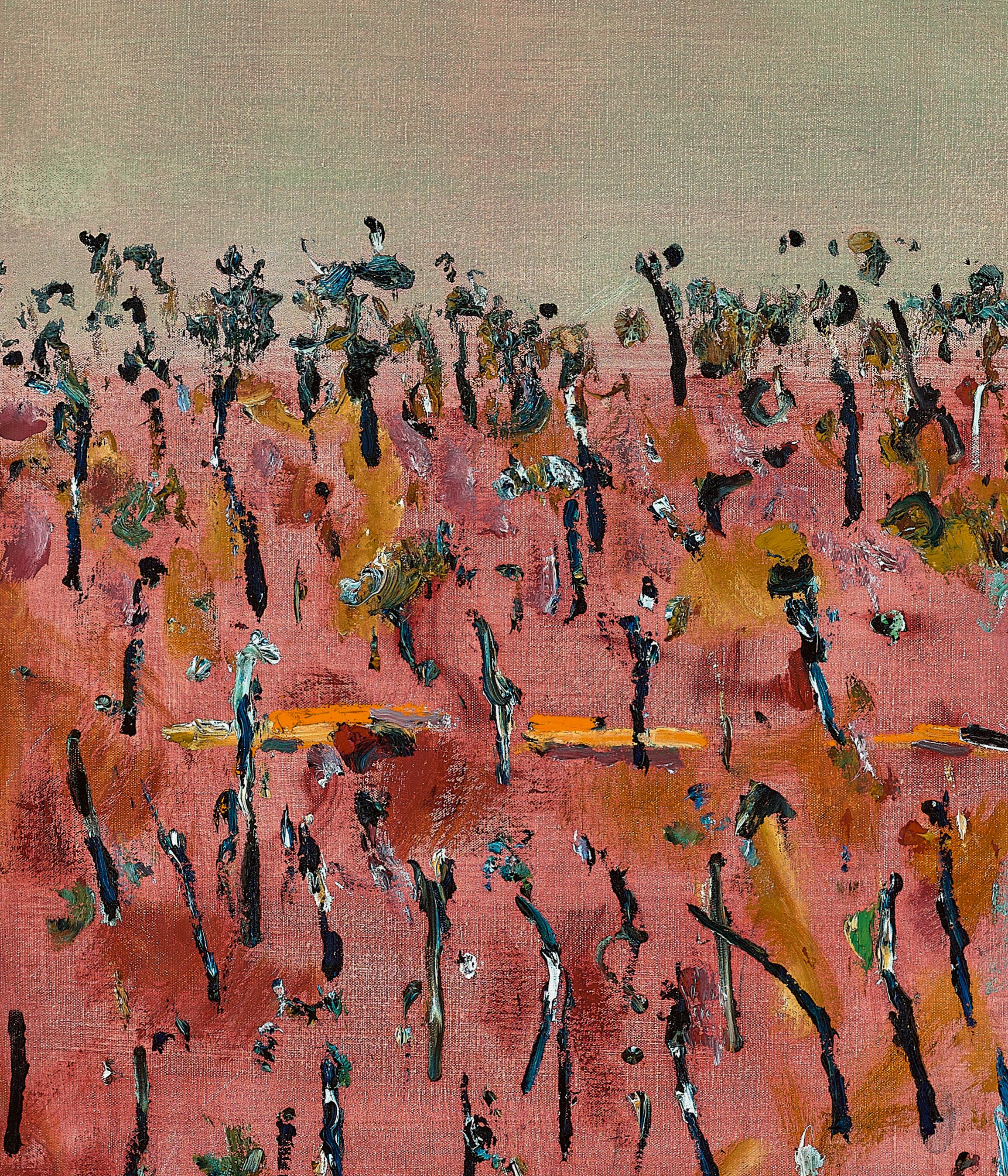

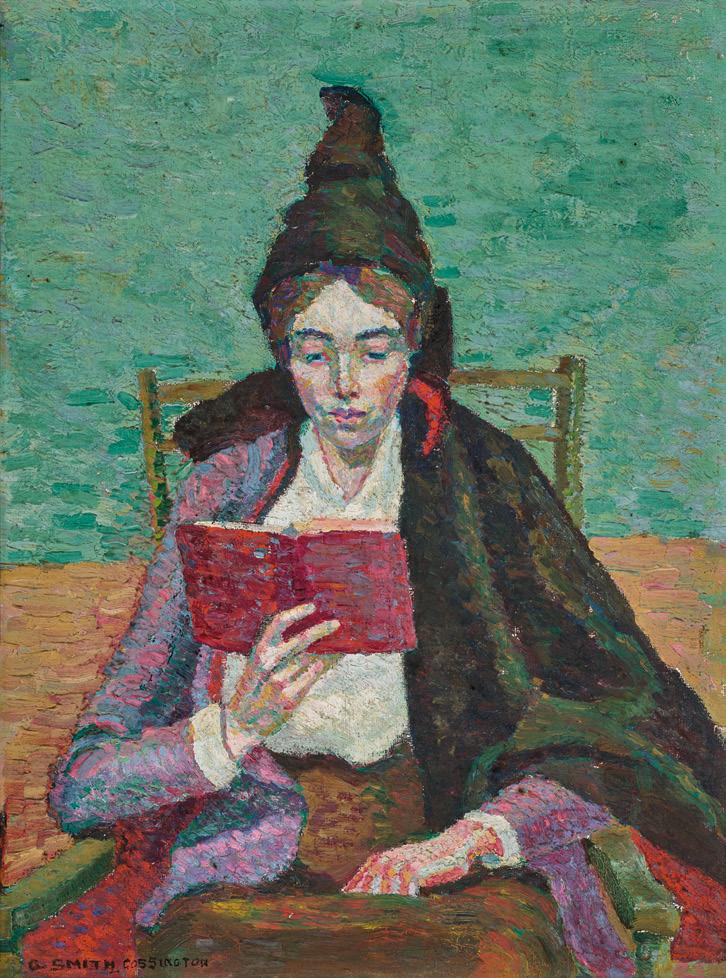
specialist fine art auction house and private gallery